By Matt Harris
 By Oliver Ancans
By Oliver Ancans
#35 Europe’s free online fly fishing magazine www.intheloopmag.com JURASSIC LAKE Chrome Dry-Fly-Dreams in Argentina WINTER 2022 // #35 MONTANA In Search of Spirit Points RIO GALLEGOS 5 Must-Know Tips for Sea-Run Brown Trout CHILE RAINBOWS IN PARADISE
ALASKA ARCTIC RIVER DRAGONS

 Photo by OLIVER ANCANS
Photo by OLIVER ANCANS
We can always retreat and turn to fly tying during the winters. It’s therapeutic, relaxing, and – while our hands and fingers are busy fidgeting with materials, threads, and hooks – we can surrender to an alternative stream of consciousness that takes us to dreamy destinations far away.
The December issue of In the Loop Magazine features both fly tying inspiration and intriguing destination articles. So, whether you’re looking to alleviate the potential onslaught of winter de pression by zoning in on your next fly fishing destination, or you’re just looking for a new pat tern to tie in the depths of your man cave – we’ve got you covered.
The December 2022 issue of In the Loop Ma gazine, yet again, features contributions from some of the best fly fishing writers and photo graphers out there; including Matt Harris, Ryan Forbus, Oliver Ancans, Claudio Martin, Barry Ord Clarke, Rasmus Ovesen, and Jerry Darkes. Enjoy and have a wonderful Christmas!
WELCOME...

#INTHELOOPMAG Presents
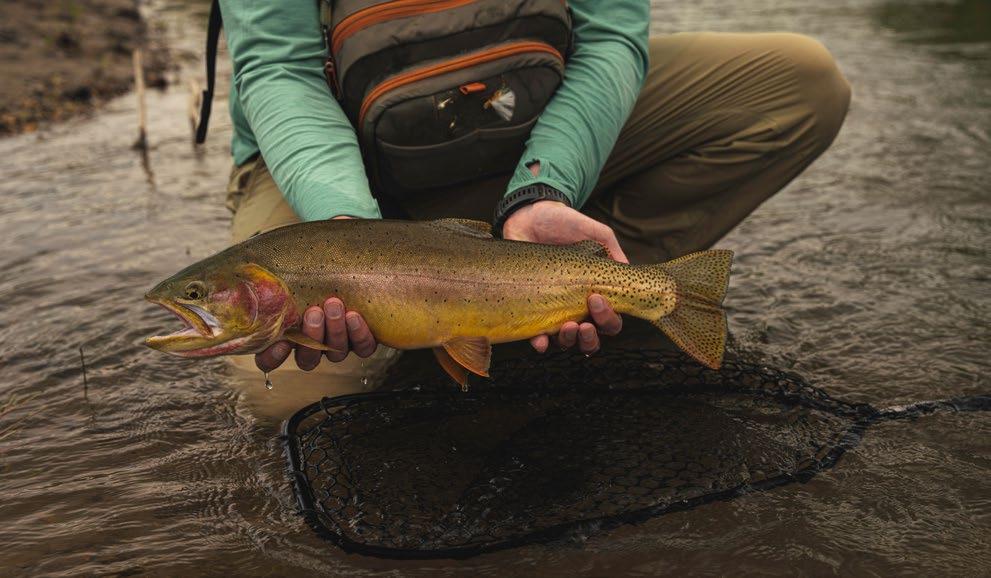
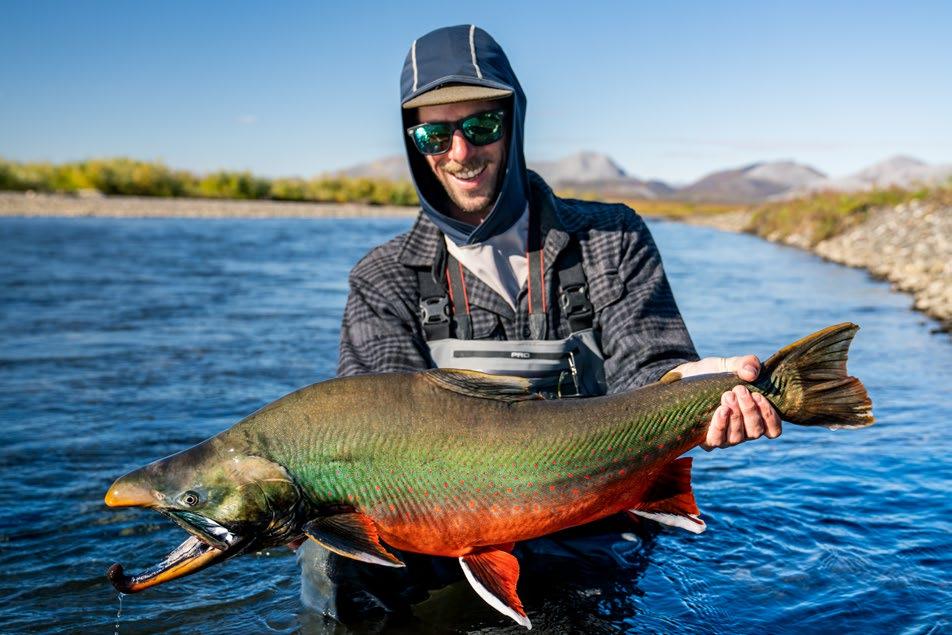
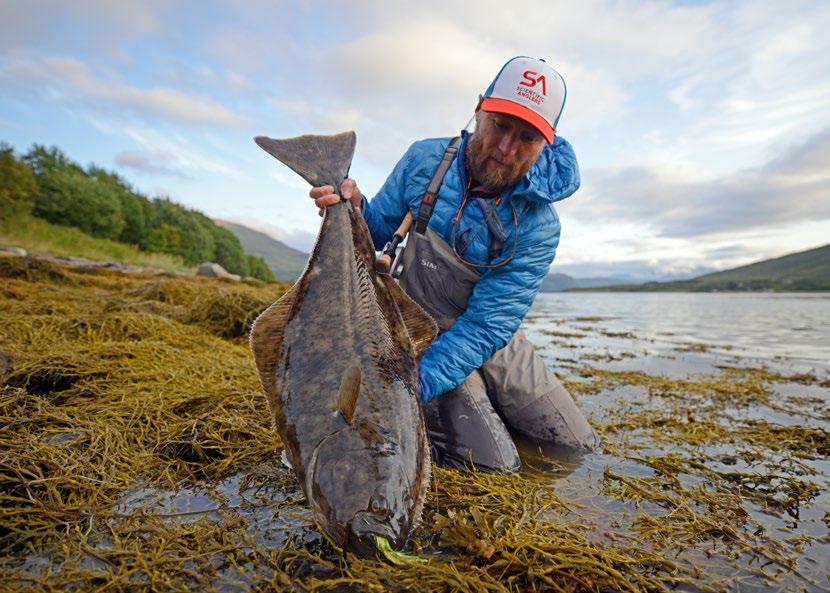
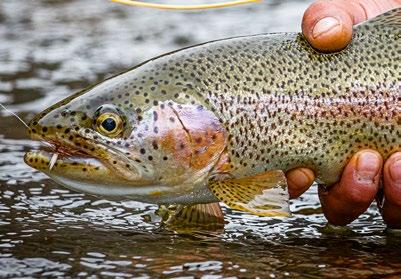

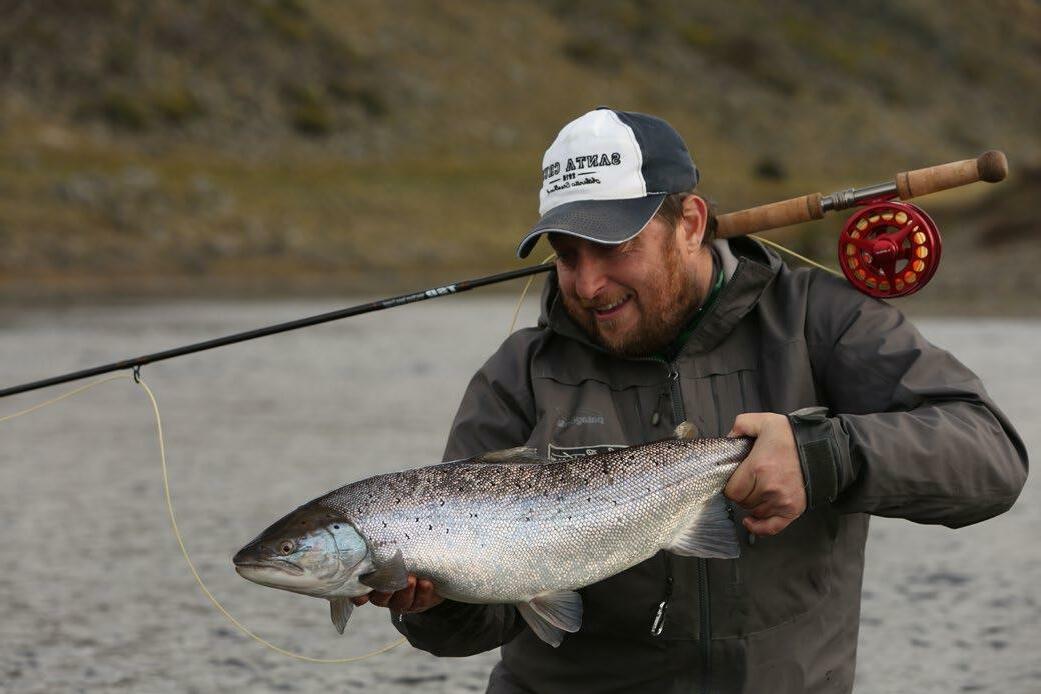
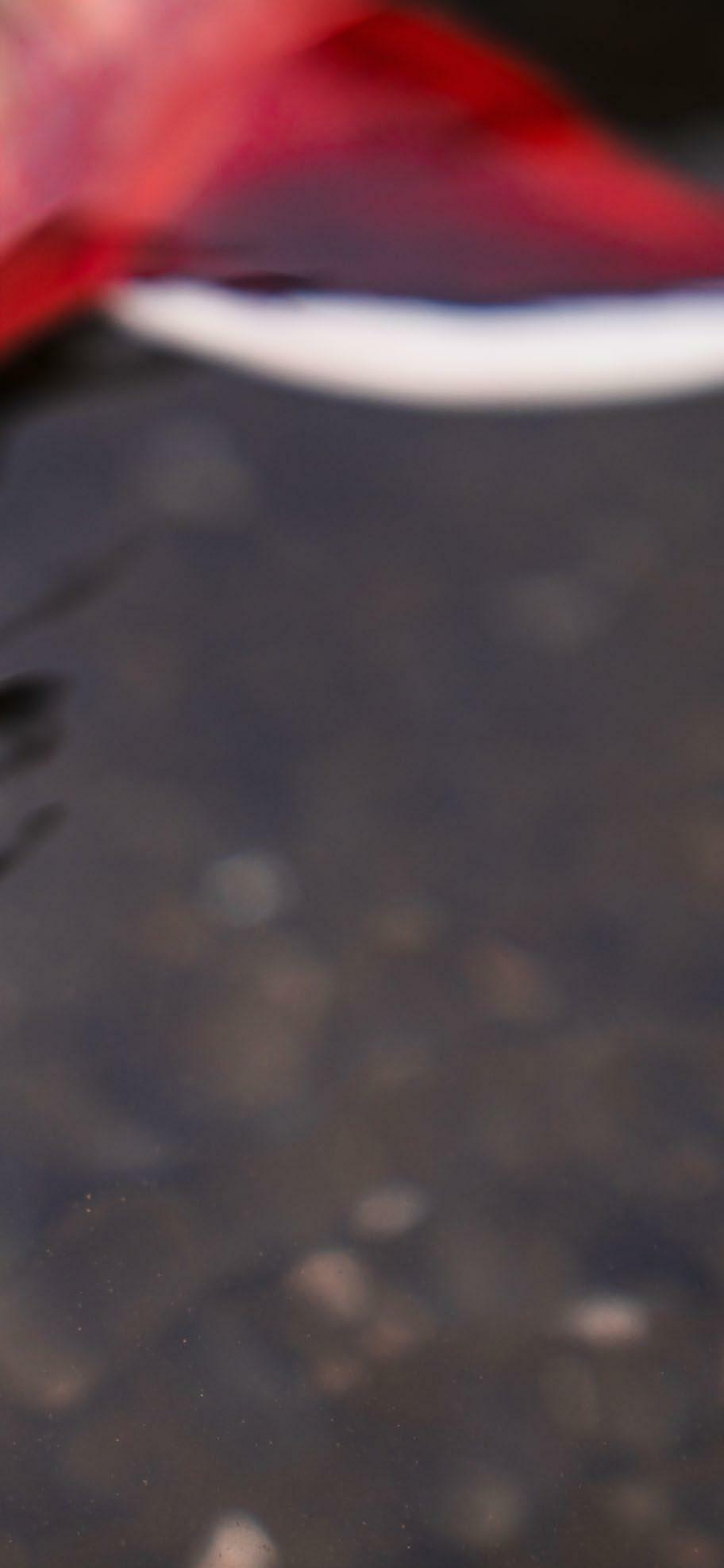 Arctic River Dragons by Oliver Ancans
Arctic River Dragons by Oliver Ancans
GOING DEEP
Chrome Dry-Fly-Dreams in Argentina by Rasmus Ovesen Rainbows in Paradise by Matt Harris In Search of Spirit Points by Ryan Forbus
Magazine
FRONT COVER
By TYLER SCHWAB
VISIT US ON

We choose not to print this magazine and we are happy not to use paper and harmful inks as used in a conventional printing process. No portion of this magazine may be reproduced without the written consent of the publisher.
Contributors
RASMUS OVESEN
Oslo-resident, Rasmus Ovesen, was handed his first fly rod at the tender age of eight, and he has been a bor derline fluff chucking fanatic ever since. Rasmus has writ ten articles for some of the world’s most renowned fish ing magazines, and his trav els take him to remote areas across the globe in search for fish that will test and challenge his skills to the maximum. He has seen his fair share of exposed back ing in the tropics, but his heart truly belongs to the soulful realm of trout and salmon fishing.
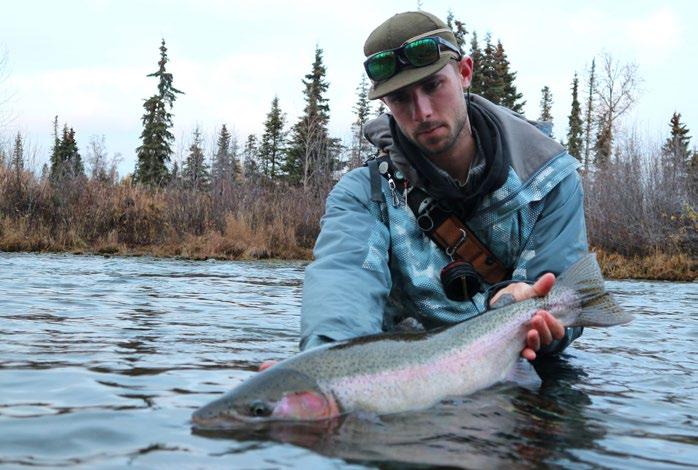


OLIVER ANCANS
Oliver is an outdoorsman and writer based out of Fairbanks, Alaska. He is a passionate an gler and has been fly fishing since the age of three. He also enjoys cooking, physical fit ness, and tying flies all to en sure he is able to target fish wherever they may live. Oliver is an aspiring casting instructor and hopes to make a living fly fishing after he retires from the Air Force. https://www.instagram.com/olleyeh/
In the Loop
C/O Cast Away Media Org no: 999 320 147 www.intheloopmag.com
GENERAL INQUIRIES info@intheloopmag.com ADVERTISING info@intheloopmag.com
CLAUDIO MARTIN
Claudio Martin is an Argentine and resident of Rio Gallegos. He has worked as guide, head guide and camp manager in Solid Adventures’ Las Buitre ras lodge, working and fishing abroad as well, and he is cur rently partner in Tres Amigos Outfitters, a company devel oping and managing fishing operations in south Patagonia. www.tresamigosoutfitters.com
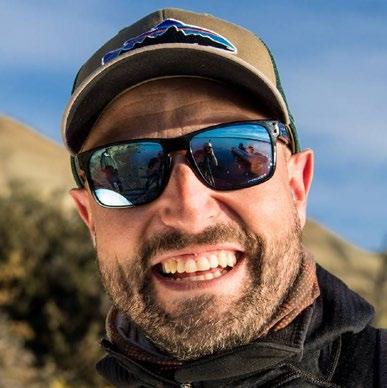
BARRY ORD CLARKE
Born in England 1961, Barry is an internationally acclaimed and much published photogra pher and writer, including several photographs in the Na tional portrait gallery collection in London. He is a regular con tributor to numerous fishing magazines world wide. He has also written, co-written and contributed to more than 30 books about fly fishing and fly tying. He has won medals in some of the worlds most prestigious fly tying competitions, and for the past fifteen years he has worked as a consultant for the Mustad Hook Company. http://thefeatherbender.com/
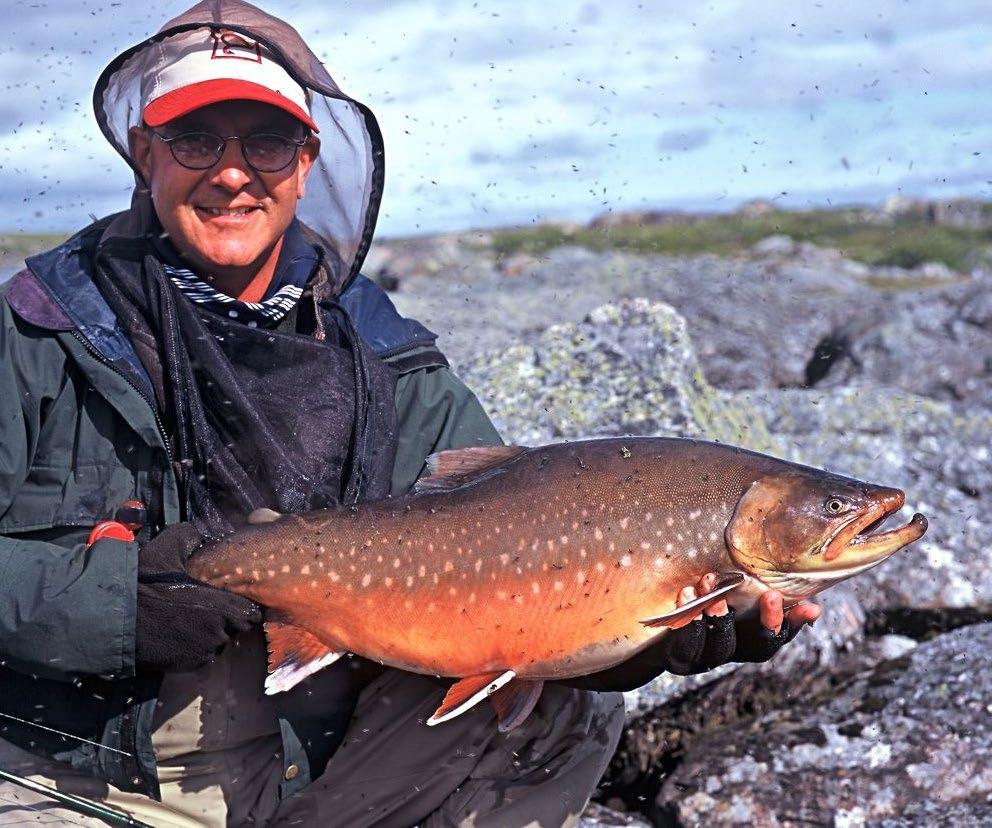
Ryan Forbus’ photography journey started officially in the Spring of 2014, but his passion for photos and being behind a camera started at a young age. Ryan grew up in the suburbs of Atlanta, Ga where he cut his teeth on pond fishing for bream and catfish. The first time he touched a fly rod and semi-learned to cast a loop, he was hooked (pun intended). Ryan’s photography has allowed him to work with top brands in the fly fishing industry and has taken him to fisheries domestically and abroad. His goal is to share his unique view of fly fishing and to share the heritage, tradition, and conservation of fly fishing to anglers and non-anglers alike. www.ryanforbusphoto.com

Do you have any great fly fishing photos, videos, or stories that you would like to share with our readers? If so, please don’t hesitate to get in touch with us. We are always looking for quality ma terial for In the Loop Magazine, and we look forward to reviewing your material.
info@intheloopmag.com
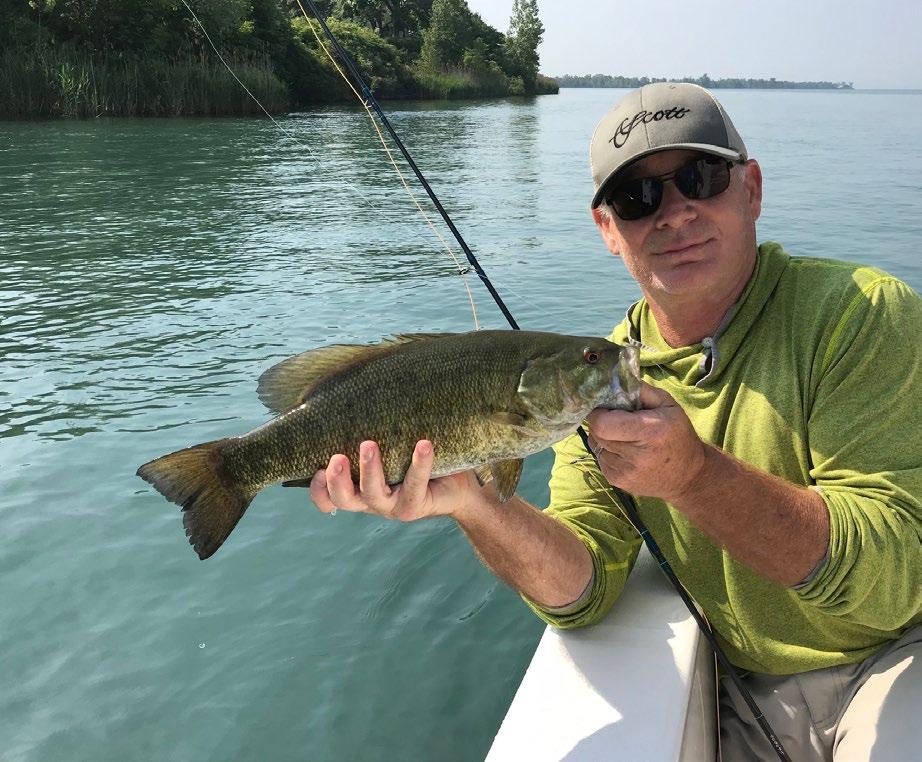






Arctic River Dragons Off the charts
During the winter of 2021, I received an invite on a trip from my buddy Jay who had a repeat excursion in mind. Although they found some fish the year before, they had been plagued by high water and bad weather. The previous year’s trip had been tough, and they felt redemption was in order.
By: OLIVER ANCANS
Photos by: OLIVER ANCANS and TYLER SCHWAB

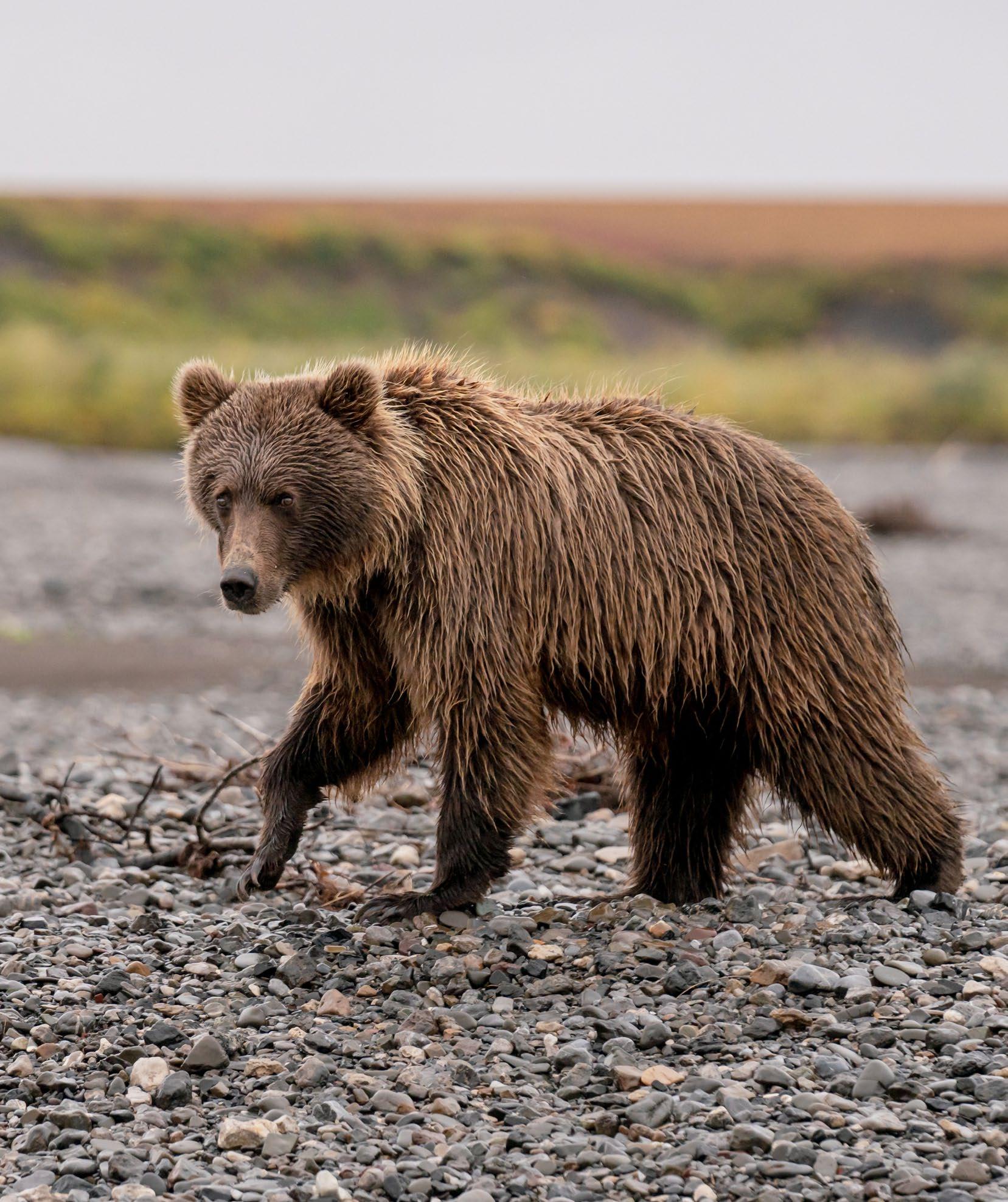
During the months prior to the trip, our initial group of six dropped to a group of four. I was tasked with finding and vouching for addition al members to fill the empty spots. After asking around with no commitments, we were discussing push ing forward with just four people. Before I agreed, I knew of one more person I could ask. I reached out to my friend Tyler, who had expressed interest in some of our earlier trips into the tundra. There was no delay in his response, he was coming.
We checked the weather and water levels while we had cell phone service, everything was falling into place. We boarded the commercial flight to a Village where we would take bush flights to our destination. Upon our arrival, we spoke with some locals who told us that the fishing had been outstanding, but there had been a few negative bear encounters on the riv er this season. We would need to re main vigilant and keep a clean camp.
As we sipped beers in the sunshine outside of our hotel, we discussed fishing tactics and what to expect from the river.
Cruising low over the tundra
I was fresh off a different 13-day float trip and recovering from a short bout with COVID-19, but too excited to let the exhaustion creep in. The four of us left Fairbanks and flew to meet up with Tyler at the Ted Stevens In ternational Airport.
The next morning, we walked to the bush plane hangar where a pris tine Cessna sat awaiting our gear. We loaded the plane with most of our gear then Jay and Tyler hopped in and departed. After a few hours, the small plane returned empty and ready for our final flight. Brad, Rich ard, and I boarded, and we flew out over the ocean where we could see seals chasing pods of Salmon.
POPLIPS
“There had been a few negative bear encounters on the river this season”
I excitedly asked the pilot for every single river name that crossed our path for potential future trips. We cruised low over the lush green Tundra, looking for caribou and bears. The pilot explained that this had been the best weather they had seen all summer, 60 degrees and sunny is very abnormal for Au tumn this far north.
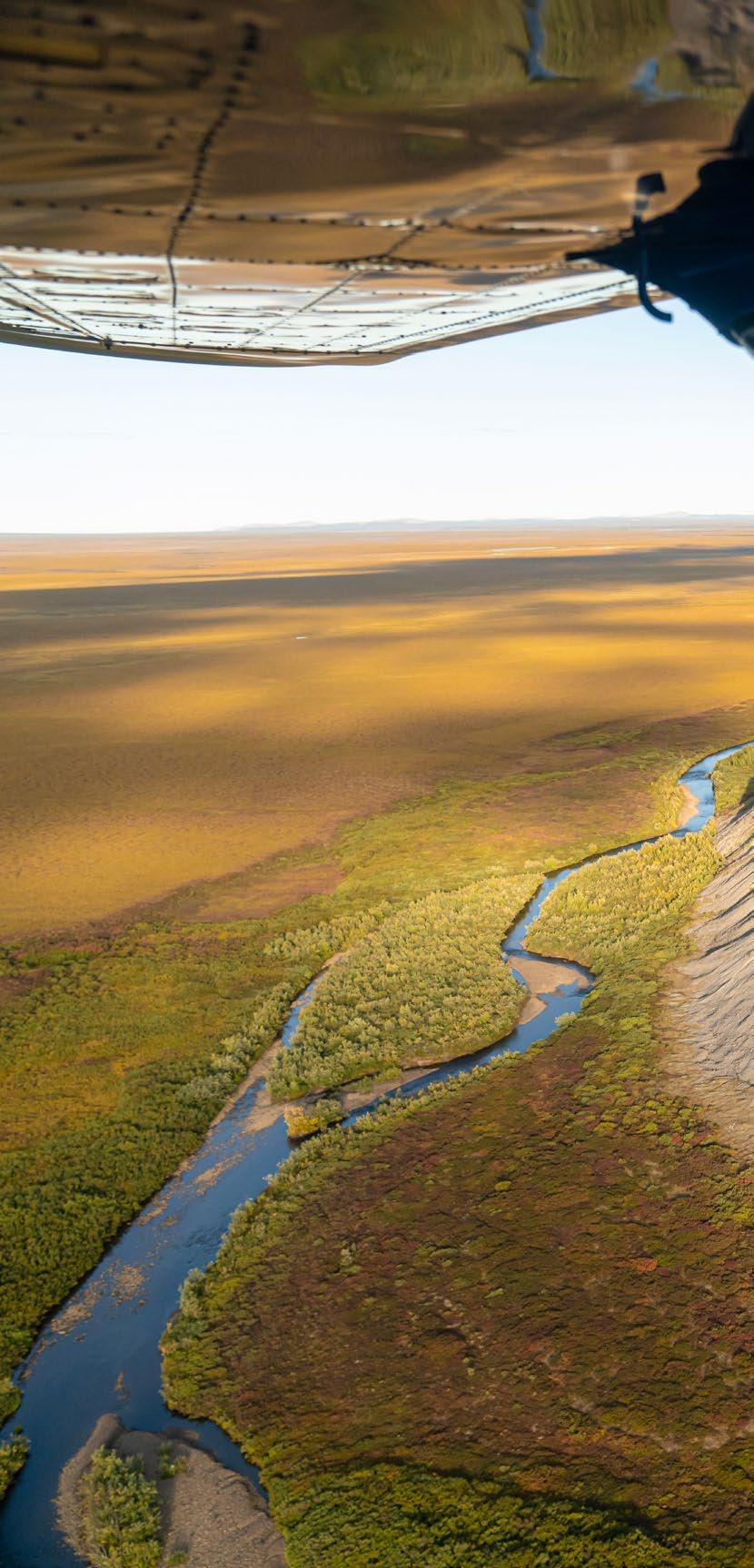
Jay and Tyler came running to ward us as we touched down on the gravel bar. Tyler excitedly slung out his camera and began scrolling through pictures of a fish that Jay had caught. Before the plane even left the ground, we had our waders on, and fly rods rigged with huge gaudy multicolored Dolly llamas and sink tip lines.
Large shadows milling around Jay had already caught our intend ed species, so we all enthusiastically casted toward the far bank and stripped our flies across the current. We could see large dark shadows milling around mid-river but were unable to identify them until Jay shouted, “Fish!”.
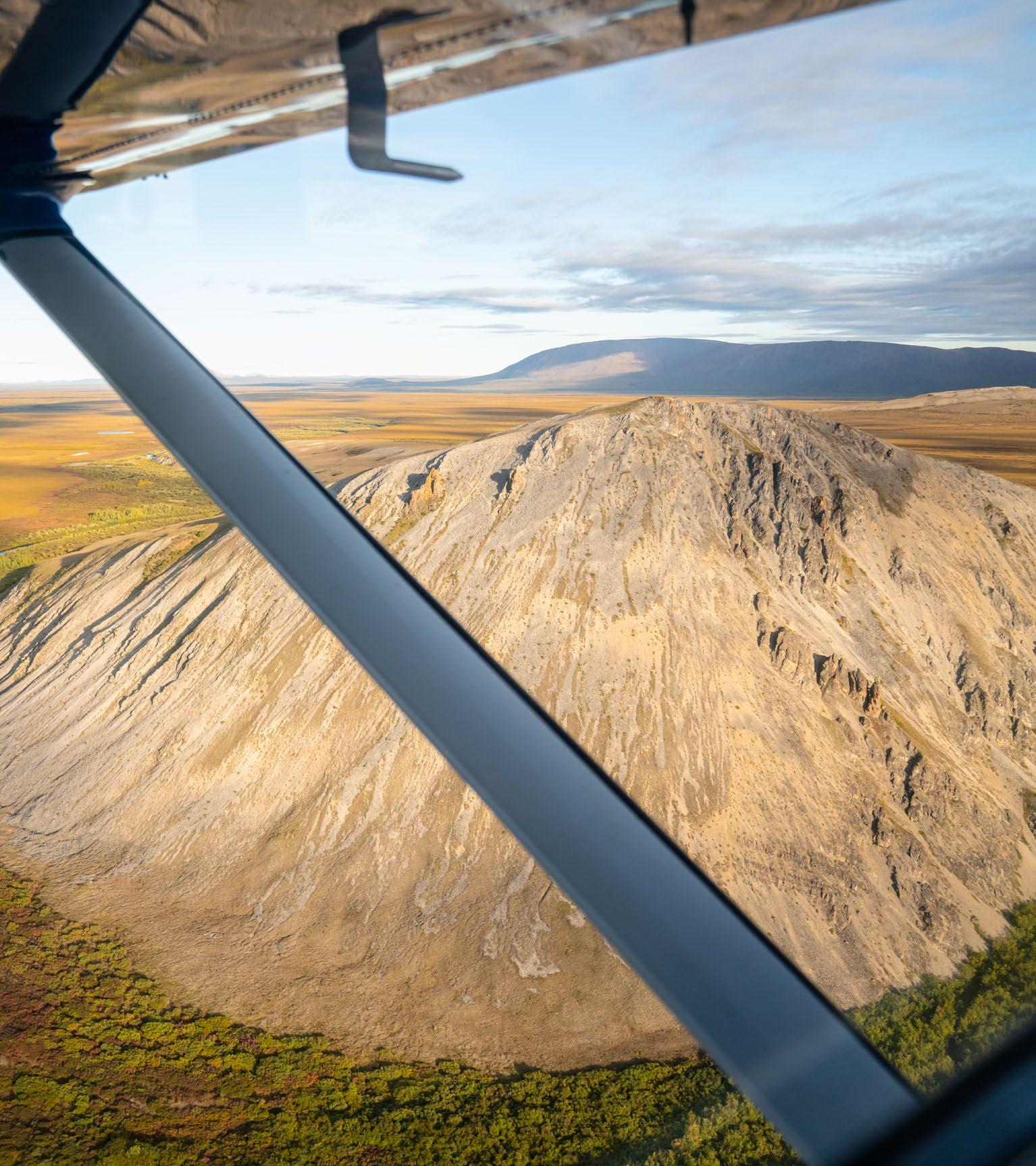
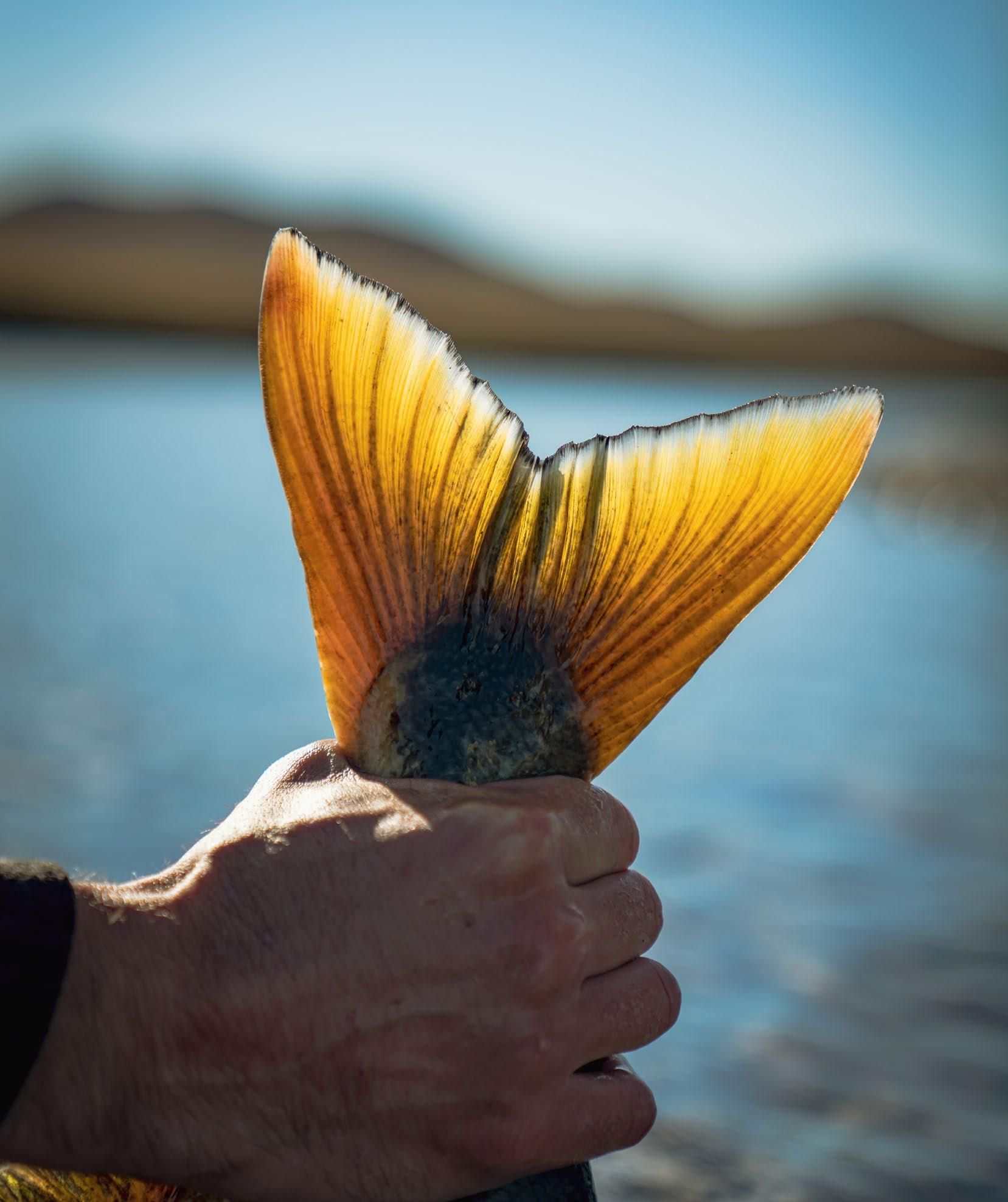



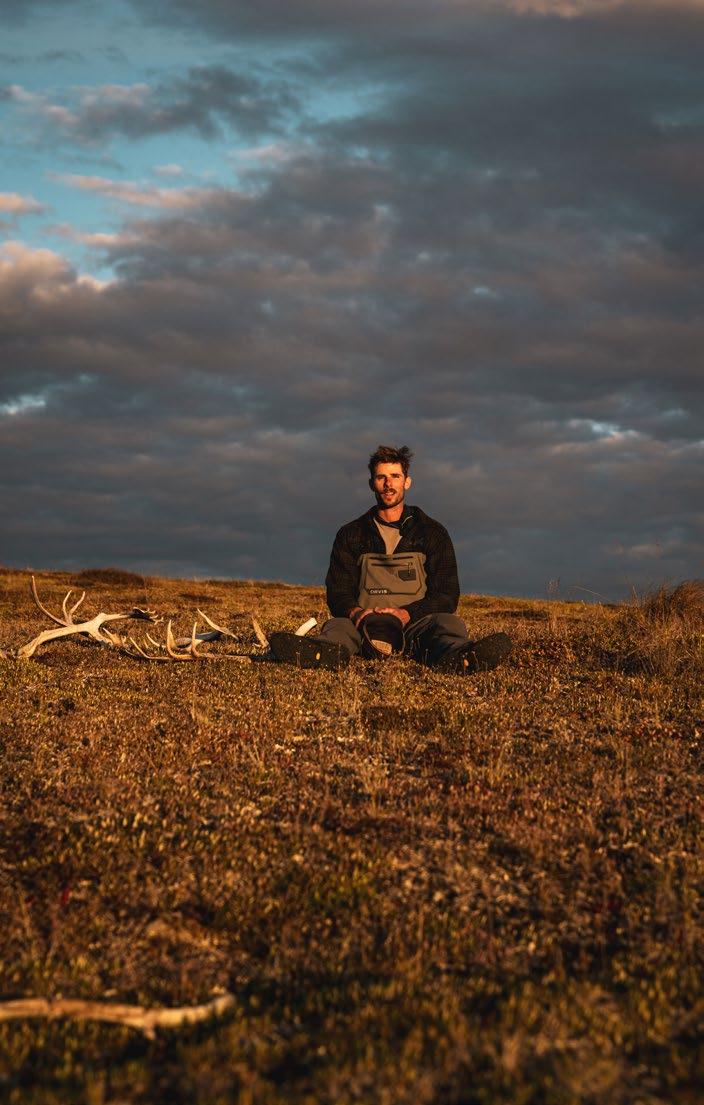
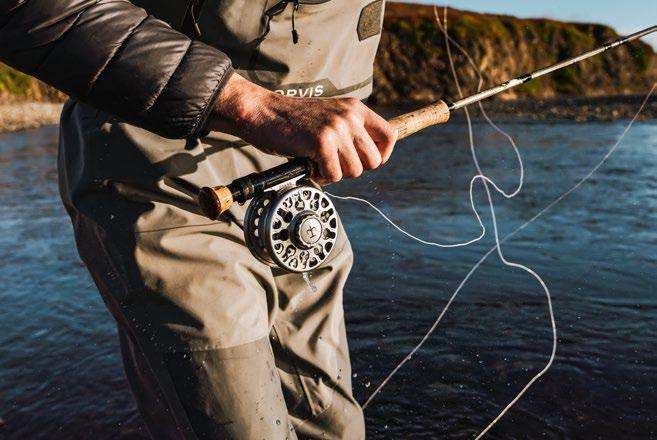
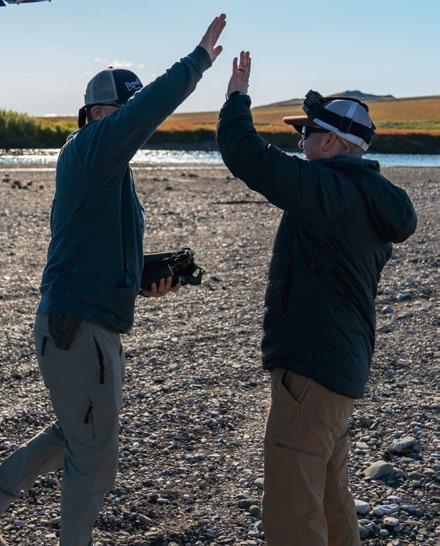


All of us reeled up our lines and sprinted down the shoreline toward him. What ever he had hooked was taking line and bullying his 8wt. As he gained line and pulled the fish into the shallows, the in distinguishable black, tan, and red vertical stripes of a chum salmon rolled along the surface. Brad scooped it up in his net and Jay excitedly pounced on it.
of us reeled up our lines and sprinted down the shoreline”
It was an impressive chum, pushing 15-20 pounds and looking mean as hell with a humped back, kyped jaw, and gnarly snag gled teeth. A few hours passed and each of us had caught a few chums, so we decid ed to make our camp and eat our freezedried dinners. The salmon had been an unexpected bonus, but we were there for a very different anadromous fish.
A fish of epic proportions
The next day, we hiked a few miles from camp. We fished every hole, riffle, seam, and pocket but the river felt empty except for the salmon.
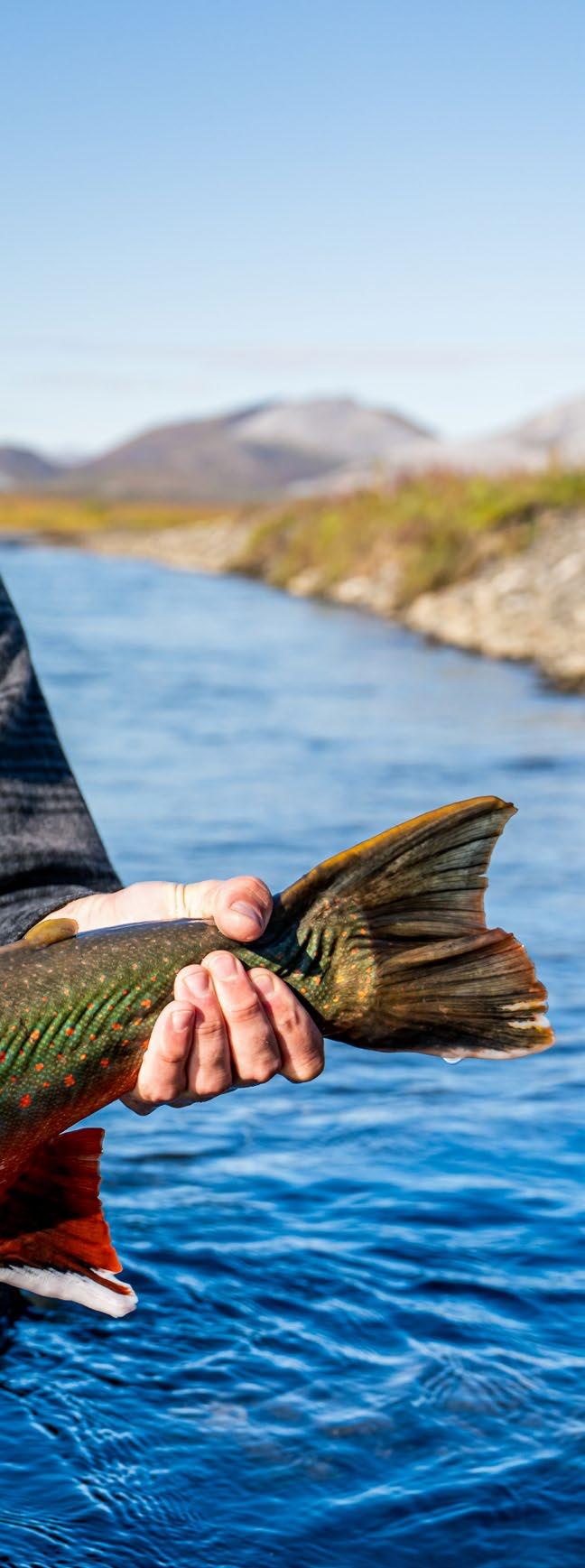
“All
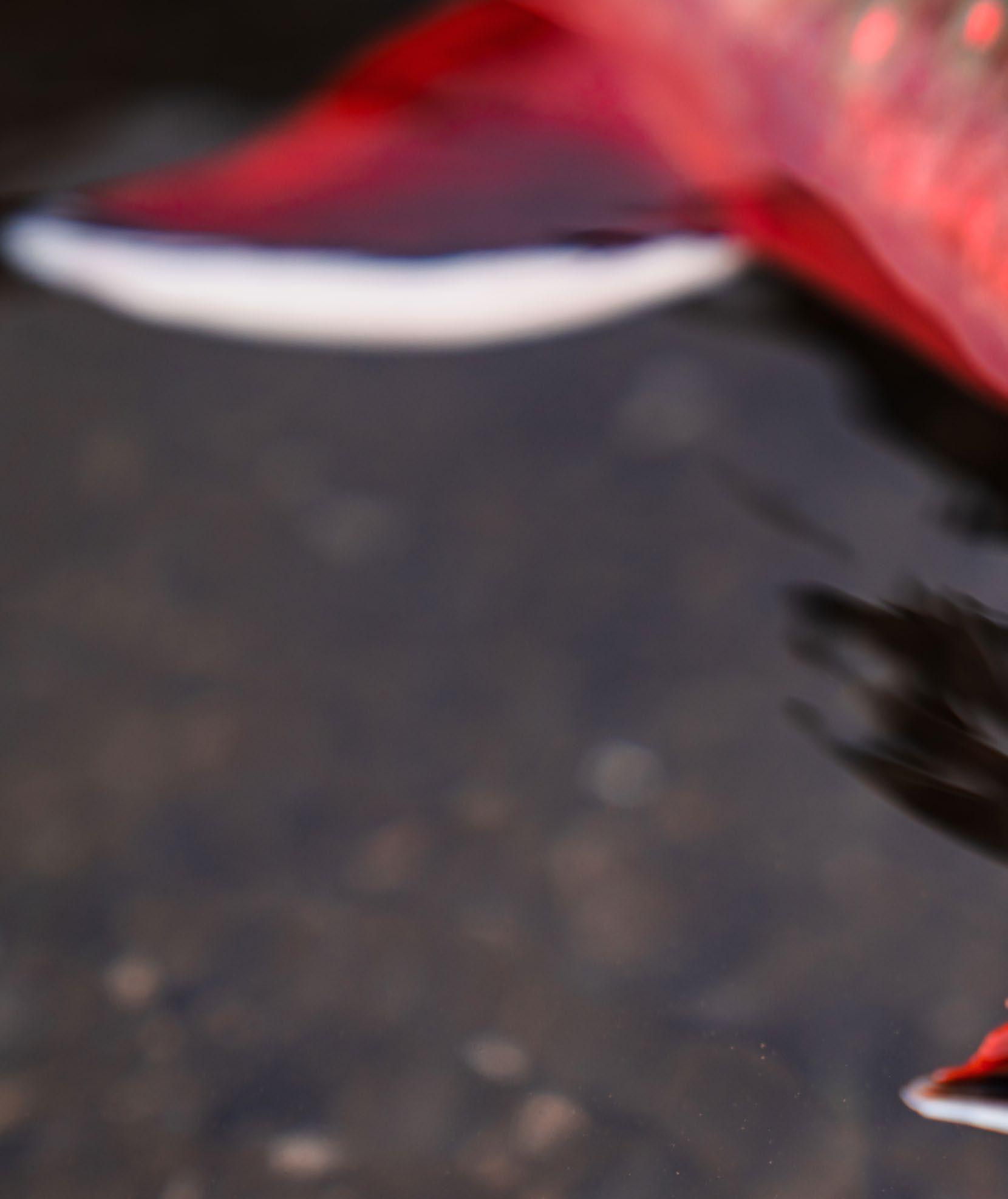

Tyler and I fished together while Jay, Brad, and Richard wandered further from camp. After a few hours, we be gan to question whether our intended species was even there in targeta ble numbers.
nally the correct species but not the size we were after. I released the fish, then tossed my fly out to recast but as I lifted my rod, again, my line went tight. This time, the fish was much larger.
I turned and shouted to Tyler, “they are up shallow, right under our feet!”. He took a couple of steps back, then stopped and stared intensely into the river. He carefully prepared his cast, like he was stalking a spooky bonefish on the Florida flats. He cast, stripped once, and lifted his rod. A short bat tle ensued while Tyler grinned ear to ear. The fish was a dolly varden, a species of anadromous char, and in the arctic, they can grow to the most epic proportions.
Leaving fish to find fish
Tyler and I stopped at the tailout of a long meandering shallow run and waded in. I unhooked my fly tossing it into the water a few feet from my boots but as I lifted my rod to cast, my line went tight. As I set the hook, a small red belly flashed toward me before darting down the river. I pulled the fish in quickly. It was fi
Our evening continued and a few more large dolly’s were brought to hand but we knew they grew big ger. We snacked on granola bars and sipped whiskey by the fire, plotting for the following day. We knew some of the char here were the stuff of leg end, but it became apparent that they would not be found easily.
“The fish was a dolly varden, a species of anadromous char, and in the arctic, they can grow to the most epic proportions”






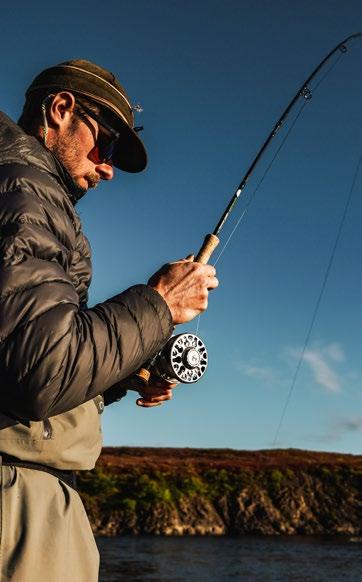




The next morning, we drank French-pressed coffee along with our high-calorie bars and freezedried breakfast skillets. I do not bring many luxuries into the back country, but I have grown to appreciate a good cup of coffee on a crisp Autumn morning. We paired off again, Tyler and I hiking far away from the other group members. We fished streamers most of the day, but the fishing remained mediocre aside from the abundant chums gobbling up our flies when we swung them too close to their spawning redds.
man with a net approaching, they begin to spin tangling leaders, tearing net mesh, and shredding flies beyond use.
I decided to walk off alone, away from the rest of the group so I could think. The big dollies had to be there, we were catching a few decent fish but not the expected numbers or sizes. I stopped at a short fast run and during my first swing through, a very large chrome fish pummeled my streamer.
When dollies are fresh from the ocean, their fight resembles a bright steelhead’s, with audible water tearing runs and flailing acrobatics. But when they get fatigued and see a hu
After releasing the fish, I made a few more casts but to no avail. As I looked out over the river, I could see chums stacked up on a patch of gravel, with their fins protruding from the water like tailing permit. Could it be that simple? I thought. I bit off my fly and removed my sink tip.
I dug around in my bag to find an egg-sucking leech that I had tied with a bead as the egg portion of the fly. I cut the shank of the hook rendering the fly useless, but I had what I wanted. I constructed a bead rig out of leftover pieces from previous fish ing endeavors and found a single indicator hidden away in a pocket of my waders.
“I turned around and shouted “bear!”
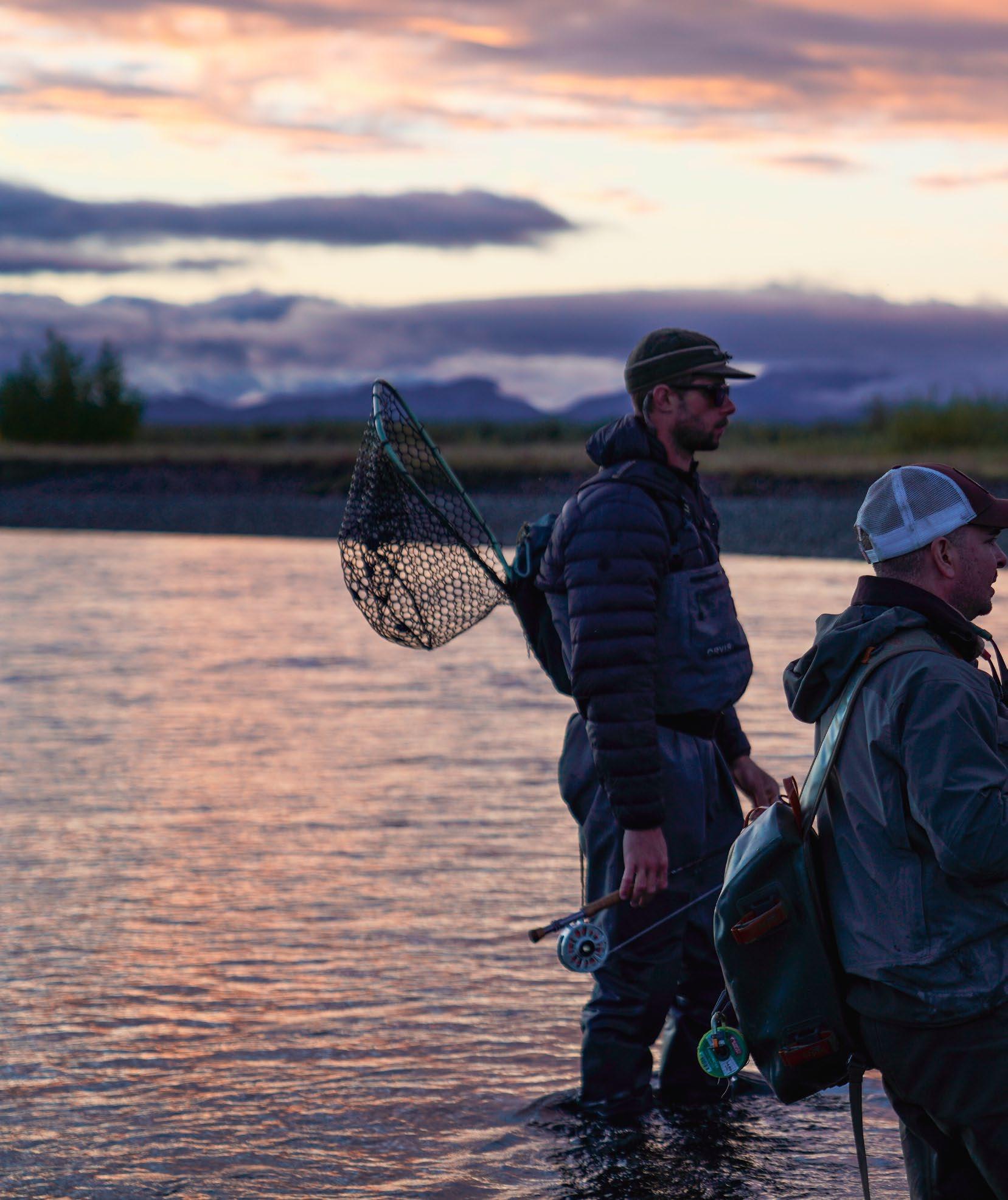
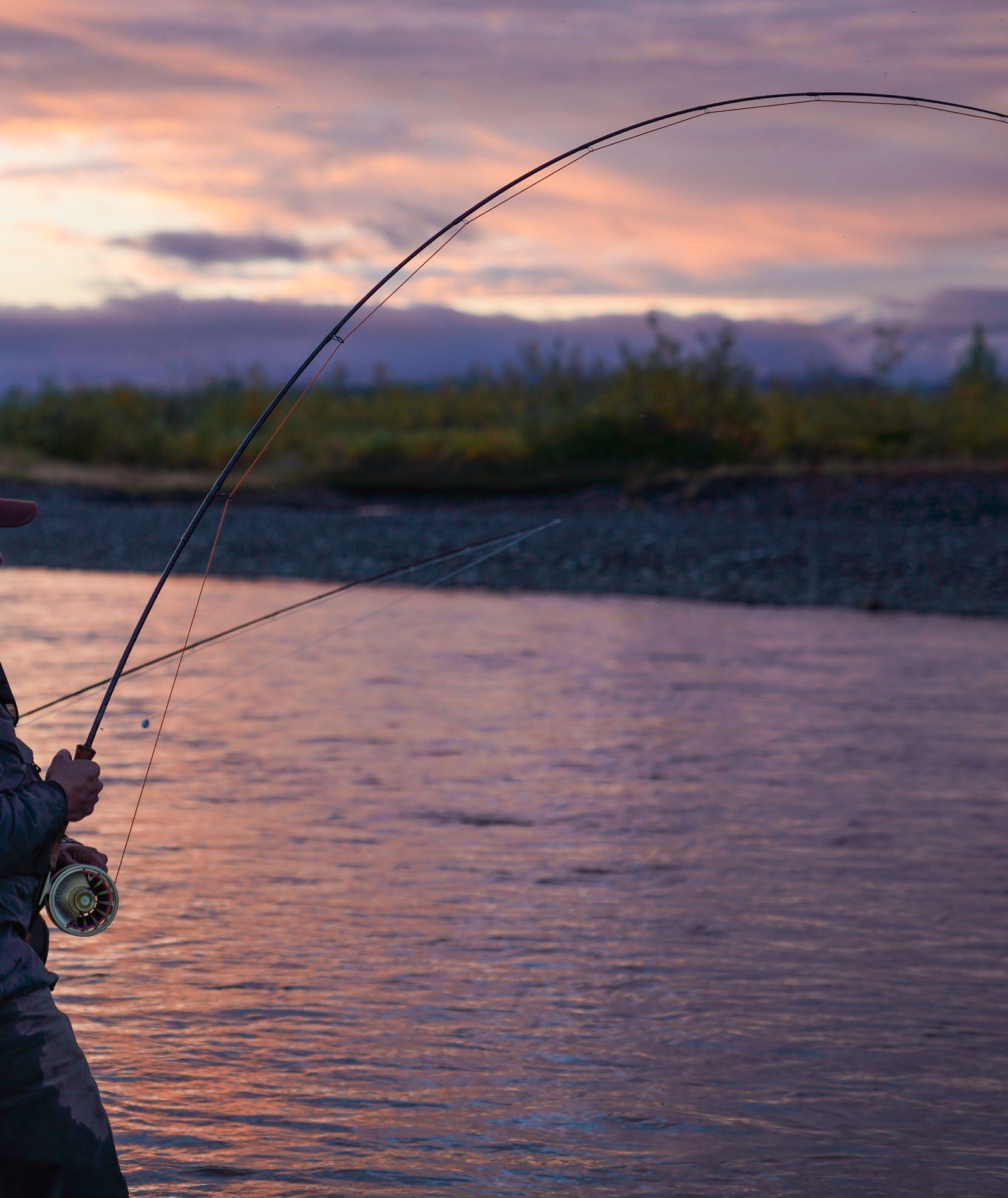
No sooner did I lob a cast behind those spawning salmon did my in dicator dart upstream. Another large chrome dolly flashed and bolted through the water column. I released the fish and strode back toward Tyler.
Put a bead on!
As I approached, I asked him how the fishing was. He said, “I don’t think there are many here.” Then he leered at my rig and I said, “you should put a bead on”. While he changed his setup, I cast to some grayling swirling around in a deep pool. I told him I was fishing behind the chums, so he waded out toward a cluster of salm on and began to fish. His indicator dipped and that all-telling red belly flashed. We celebrated as it was the largest fish of the trip so far but as the light faded and the sun dipped below the trees, we decided to head toward camp. A few miles later, while Tyler was be hind me making a couple of passing drifts, I saw a large silhouette saun tering up the bank 200 yards away. I turned around and shouted “bear!”. Bears in the Arctic are very danger
ous. They are not used to having easy meals and will often stalk and attack humans. Luckily, the bears had all the rotting salmon flesh they could eat on this river. The grizzly crossed the river and me andered away uninterested and un intimidated by our presence. We told the others at camp about the bear, they looked at us in disbelief. We en sured them the bear was only a cou ple hundred yards from our tents, so we needed to maintain a tidy camp.
Ready to see new water
We had fished hard through the same area for the past two days, and I was ready to see new water. Tyler insisted we return and fish it again as he had hooked a large dolly the day pri or and was determined to catch that fish. I reluctantly agreed and we began walking, fishing the same water but searching for something new.
Every time someone would try and switch back to a streamer, the chums would often be the only takers. The grayling and dollies seemed to be keyed in on salmon eggs and were uninterested in eating much else.

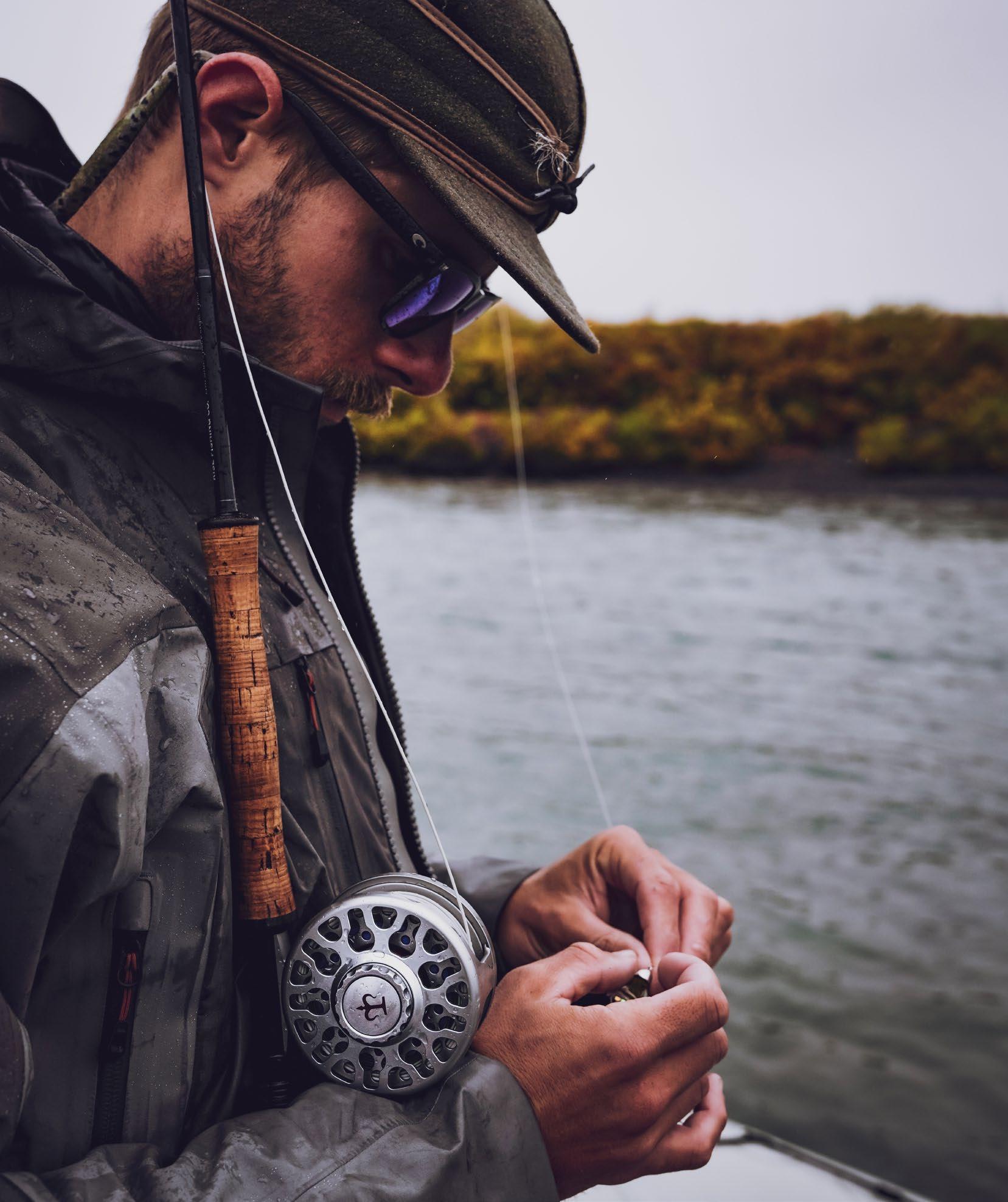

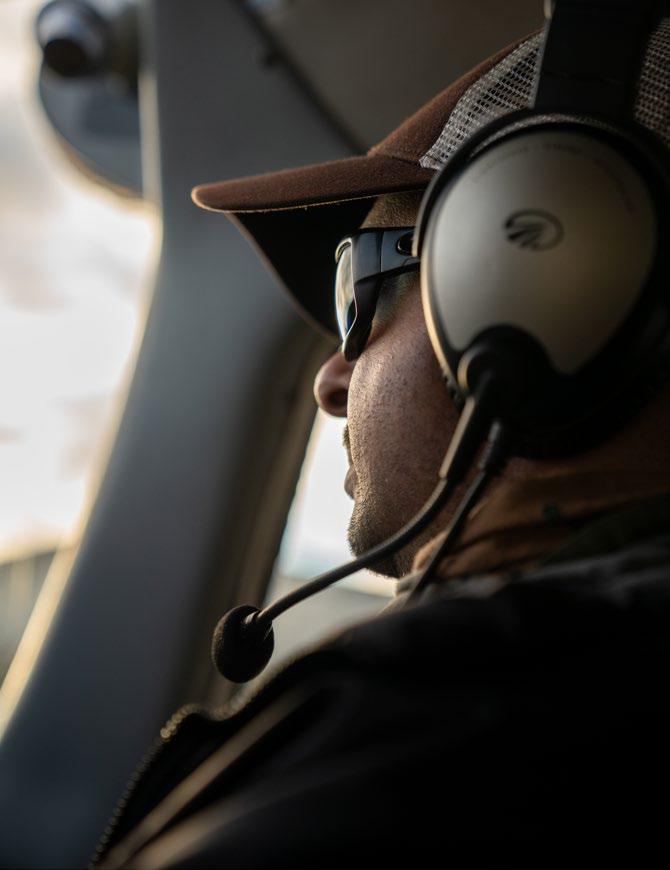


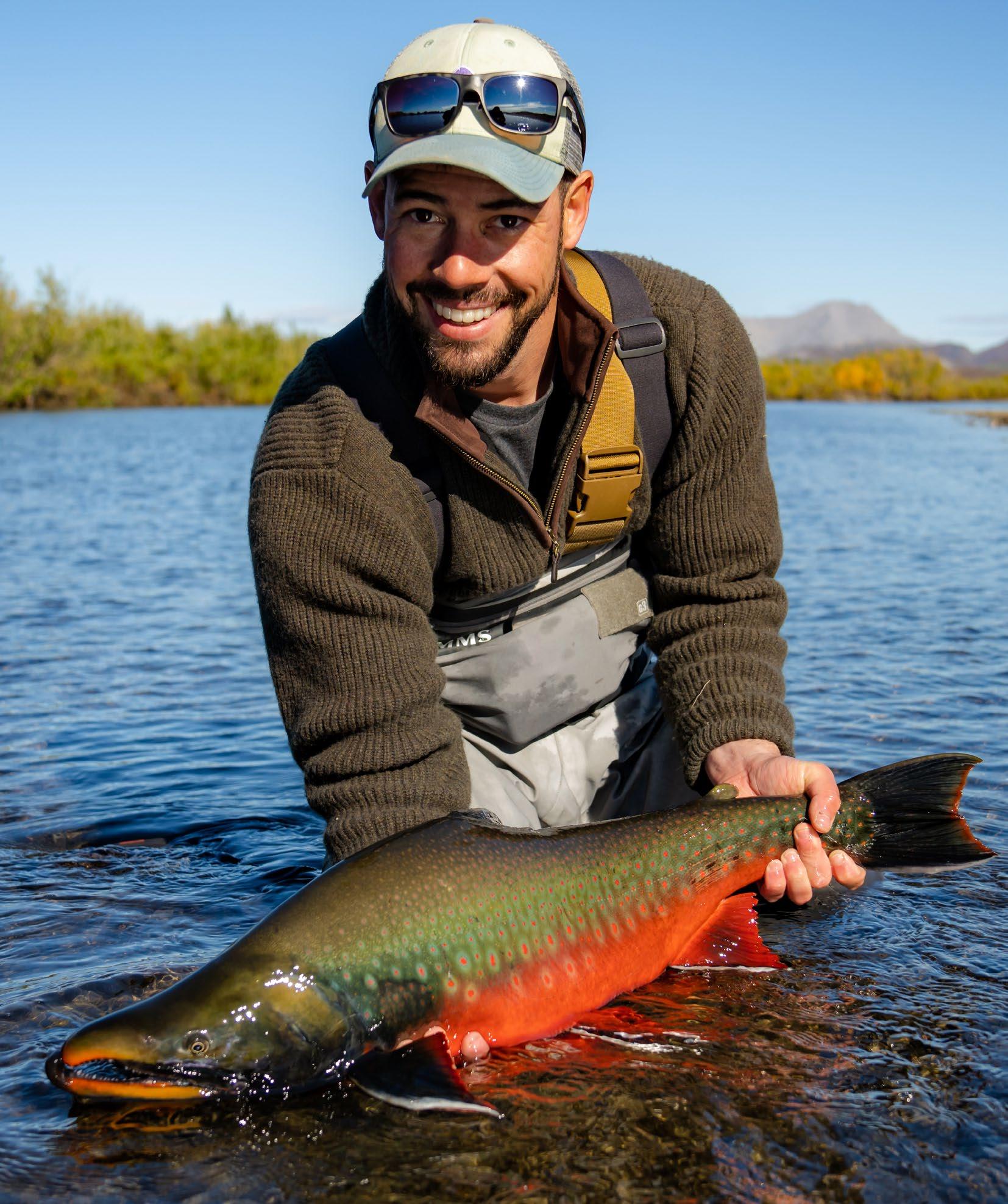
The Grayling there were mostly black with a white-tipped dorsal fin resembling the daunting termination dust on the high mountain fortress surrounding the river. They looked old, scarred, and beaten up with large scales magnifying their deep blue skin.
ed for the net, but my indicator sub merged, and I stared as an enormous fish rolled near the surface.
Every time someone hooked one, they blurted out “big fish!” only to be pleasantly surprised to have hooked a stubborn grayling. They fought hard, bending our 8wts and leverag ing the current with their long dorsal fins and there were plenty of them to be caught.
We took turns netting each other’s fish and taking pictures. We were getting sun and wind burned but the weather was so pleasant, that we just flipped up our hoods and kept fishing.
Another chum?
Tyler jumped ahead and cast into the middle of a run near some salmon. I hiked around him as he fished and stopped at the top of the run, some where I had skipped the day before. As I cast, he hooked up and shout
Tyler yelled; “never mind, it’s a chum” referring to his fish. I didn’t say anything, as my fish moved into faster water. I dropped my rod tip down stream and pulled toward shore. Ty ler unhooked his salmon and looked up to see me working my way downstream. He moseyed up and asked, “is it big?”. I replied, “yeah” as that was all I could muster. It pulled and felt heavy as hell. Tyler asked, “it is a chum?”. “I don’t think so, it looked like a big dol ly”, I replied. Tyler hopped up on the high bank to take a better look, then immediately went for the net.
“Throughout the trip, everyone would catch more than a few of their own trophy fish”
After a few minutes, I pulled the fish close and it dodged the first swipe of the net, but Tyler scooped it up on the second pass. I threw my rod up on shore out of excitement and rushed over to grab the tail of this fish as only half of it fit in the net. Tyler jumped up to grab his camera while I sat in awe of this fish.
We measured and photographed the dolly. It took its time recovering from the battle, but I was not wor ried, we landed it quickly, kept it in deep water, and only fully removed it for a second or two. I stared at its wrinkly olive-colored back and fiery orange belly, its scarred face, and its exaggerated kype. It began to kick then swam off into the depths, looking like an irritated old timer, annoyed that I had interrupted his lunch. I stopped fishing for a few hours and reflected on that fish. What an abso lute privilege, what an honor to hold something like that. Throughout the trip, everyone would catch more than a few of their own trophy fish.
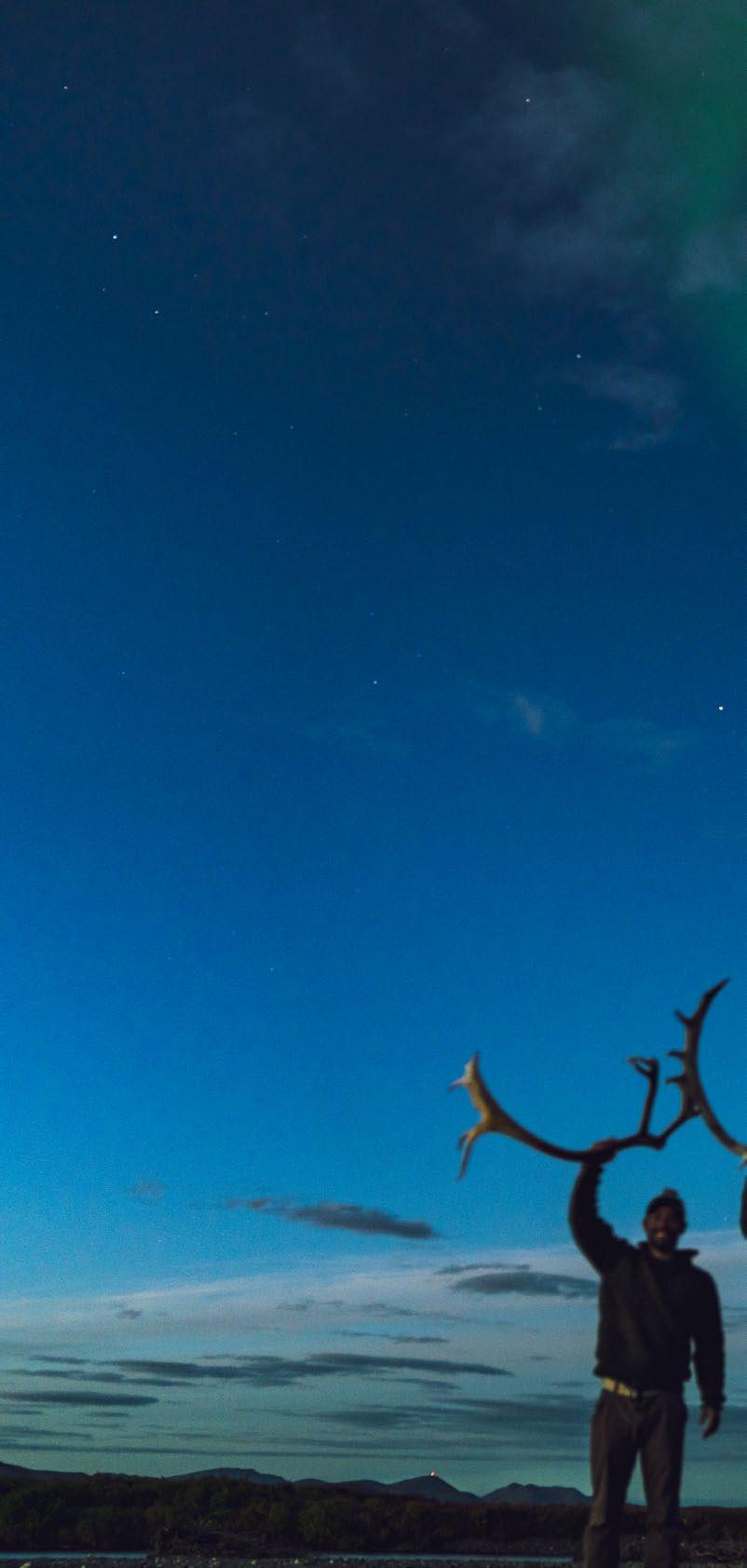


Leaked rafts and soaked gear
Over the next 6 days, we floated downstream in leaky rafts which soaked our gear. We battled wind, and rain, but found scattered pockets of dolly varden, chum salmon, and grayling. The further we floated, the fewer salmon we encountered, and the fresher the dollies became.

Jay began to catch fish on a gurgler and before we knew it, everyone was fishing topwater patterns. The fish would often charge and follow a fly for a long time before finally grabbing on and dragging it under. This seemed to be everyone’s favorite part of the trip as the fresh dollies hit and fought a lot harder than their colorful counterparts.
We drank whiskey and cooked a few dolly varden over the fire. The bears kept to themselves except for a young grizzly that wanted to walk through our camp on the way to his fishing spot. He was easily scared off and I explained to the others that any bear around camp is not only trouble for us but bad for the bear as he could be shot if he got too comfortable around humans.
As the buzz of our flight out came into earshot, Ty ler pointed out how some leaves had begun to change from green to bright yellow and that the tundra had begun to turn red. There was a chill in the air as the long Arctic winter was fast approaching and there would be snow on the ground in a few short weeks.
Get the net.

© 2022 Patagonia, Inc.
Swiftcurrent™ Wading Jacket
Built with Bureo’s NetPlus® material, a 100% recycled nylon made from reclaimed fishing nets, the Swiftcurrent Wading Jacket is engineered to cast freely, eliminate line snag and keep water where it belongs—in the river.

Jurassic Lake
Chrome Dry-Fly-Dreams in Argentina
You’ve probably heard of Lago Strobel – or Jurassic Lake - as it is most commonly referred to. The lake is world-famous for its massive rainbow trout, but did you know that you can catch these explosive and hard-fighting fish on dry flies?
By: RASMUS OVESEN Photos by: RASMUS OVESEN, ANDERS OVESEN and PEDRO RODRIGUEZ

ANOTHER ONE OF JURASSIC
LAKE´S MASSIVE FISH wrenches away from my hands as I carefully re move the barbless streamer from its powerful jaws and release it. It flings cascades of cold water into the air with its iridescent green tail fin as it shoots forward through the water –startled and wilfully headed for the drop off, along which the rest of the school of rainbow trout are foraging.
Having weighed in the vicinity of five solid kilos, the fish was close to the absolutely mental average size on this lake. It is one out of several fish that have remorselessly hit our flies dur ing this April-morning, where the winds have continuously picked up.
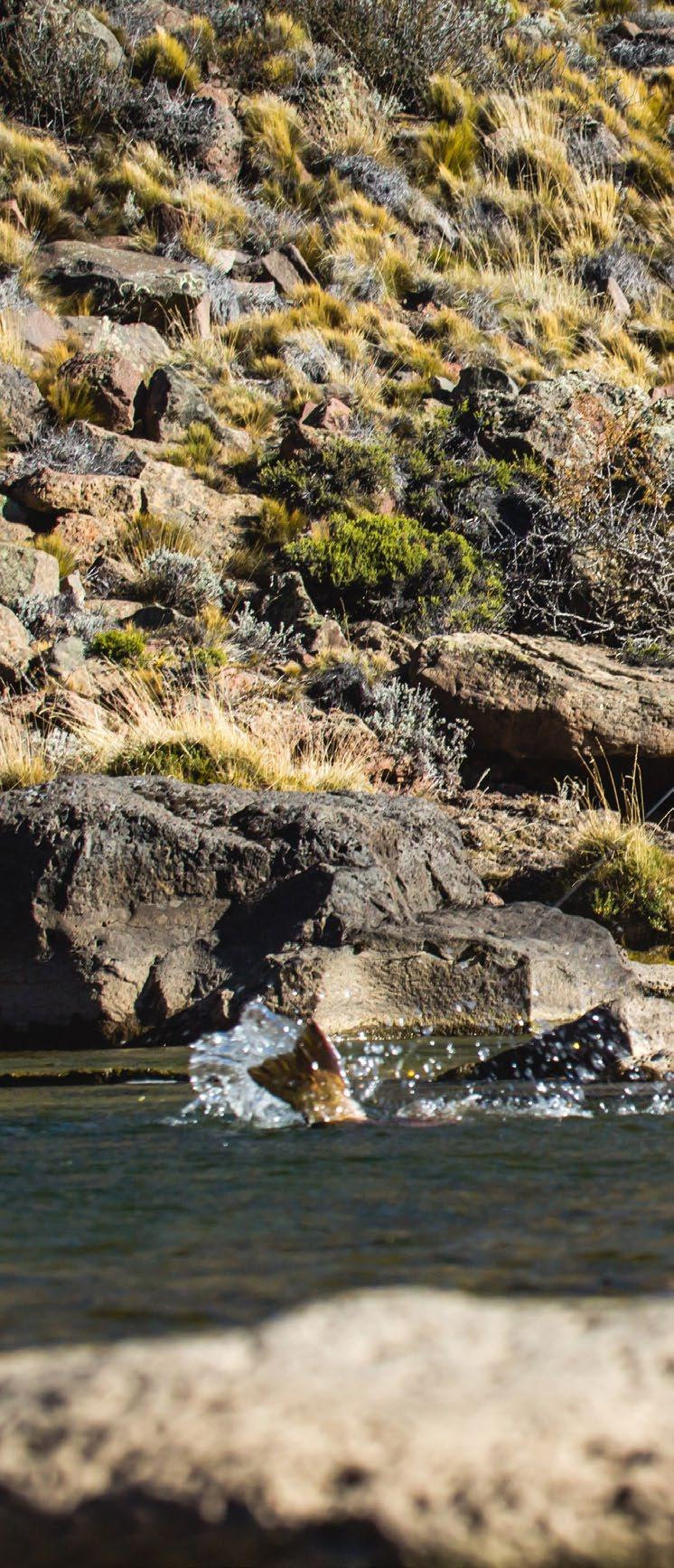
My 8-weight is packed away along with the remainder of my gear further down the beach, and with wind gusts starting to reach gale-force levels, I’ve decided that it’s time for the 6-weight to give way for heavier artillery.
I pack away the 6-weight and bow down to pick up my 8-weight. As I grab it, I hear the giggling laughter of the guides somewhere behind me.


The cheeky buggers - who have set tled momentarily behind their truck for a bit of shelter and a gulp of nour ishing, warm Argentinean matehave tied a large, bright red spoon onto the end of my leader, while I was busy fighting and releasing my last rainbow trout. “Ha, ha, ha! Classic guide humour”, I think to myself! But I pretend as if nothing has hap pened and just play along.
The laughter falls silent, when –shortly after – I do the unimagina ble: I get the spoon airborne, blind cast it for a bit and send it far off into deeper water. The silence doesn’t last for very long, however. Because when a big rainbow trout resolutely hits the spoon and gets hooked, all of us are about to die laughing!
SINCE 2005, when it was first properly discovered, Jurassic Lake in the southern reaches of Patagonia, has stood for me as one of the most mon umental fly fishing destinations in the world: A tantalizing and remote fish ery in a barren and windswept desert with rainbow trout of near-mythical proportions. And every time I have
heard stories about the lake’s spectac ular fishing or seen pictures of the al most unrealistically big and shapely fish that are caught there, I’ve felt a relentless pull within. The fact that is has taken me more than 10 years to finally materialise at the lake’s pock marked shores, therefore shouldn’t be ascribed to a lack of wanderlust or attraction. No, the answer lies, rather, in the seeming paradox of the place: How it has come to embody some thing unachievable, an impossibility – an unfulfillable promise.
It’s not coincidental that I have a long history of travelling to faraway desti nations with a naive and open mind –without having properly adjusted my expectations or done much research. Too often, I have experienced how something that sounded too good to be true, actually was. And, personally, I feel much better being positively surprised than disappointed. Unfor tunately, when it comes to well-ex posed fisheries, there’s an increasingly drastic difference between history, reputation and marketing on the one hand and reality (or per sonal experience) on the other.

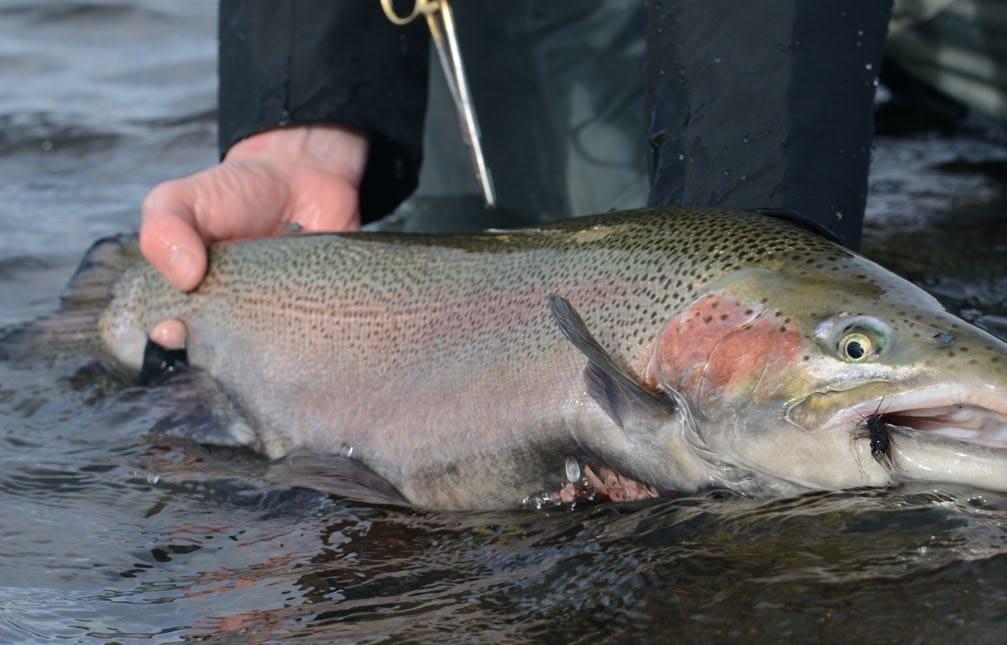



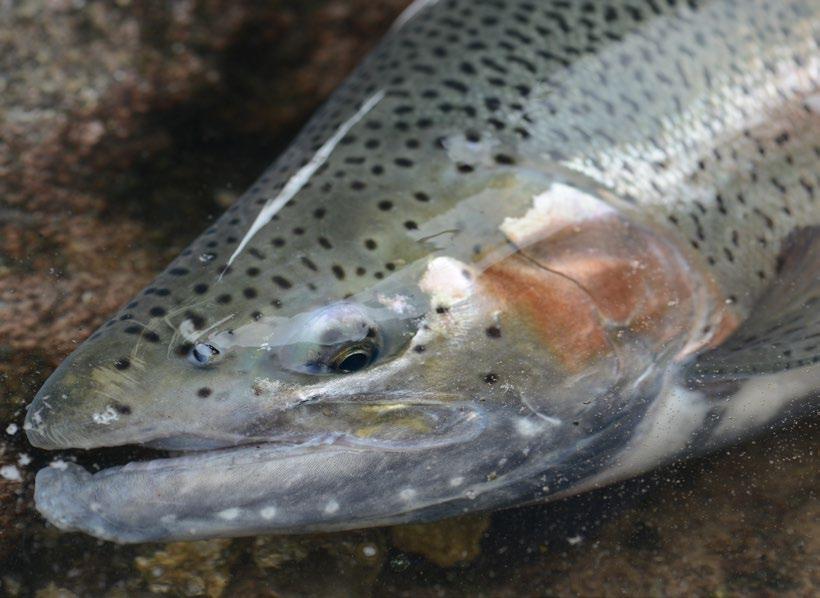
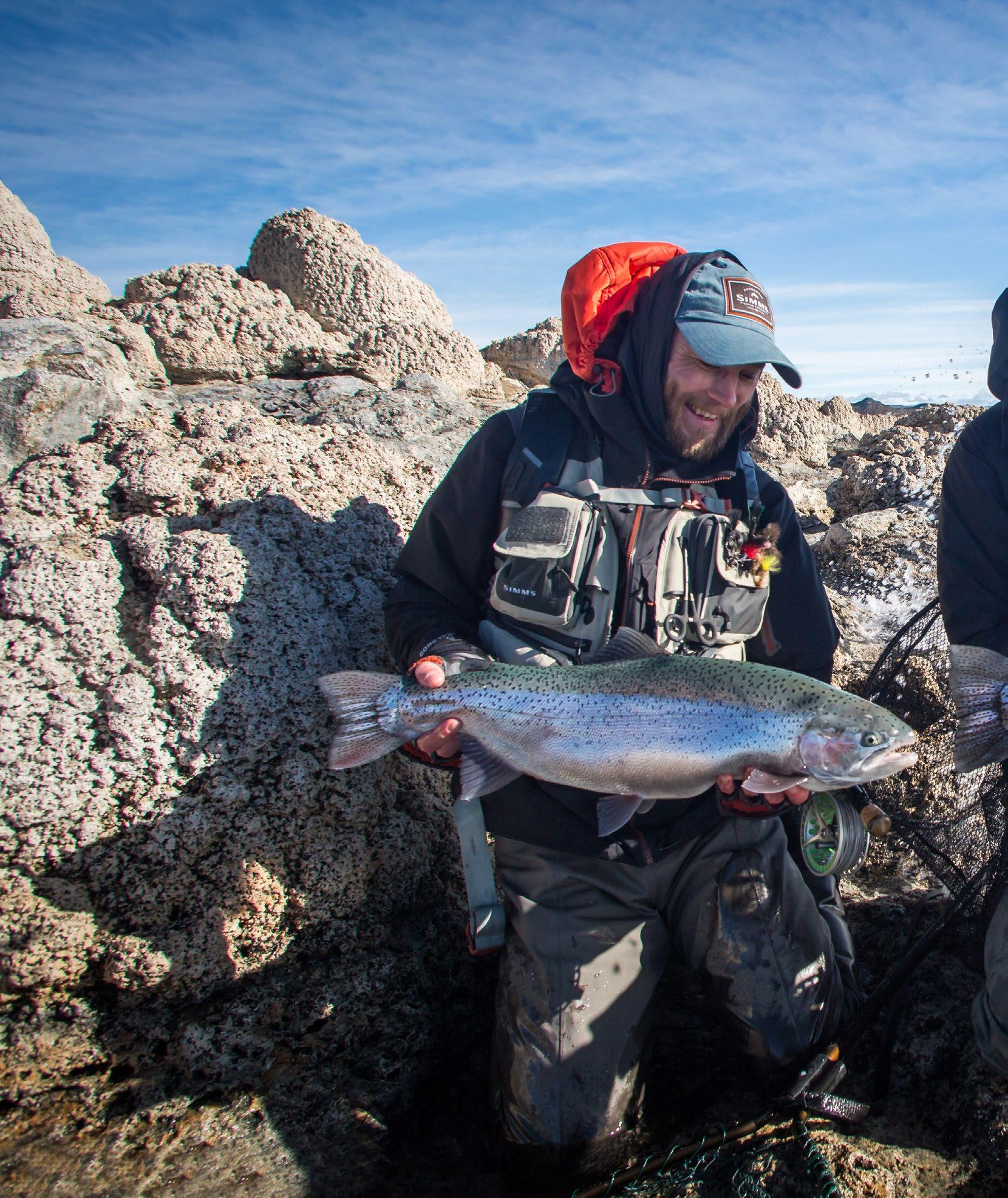
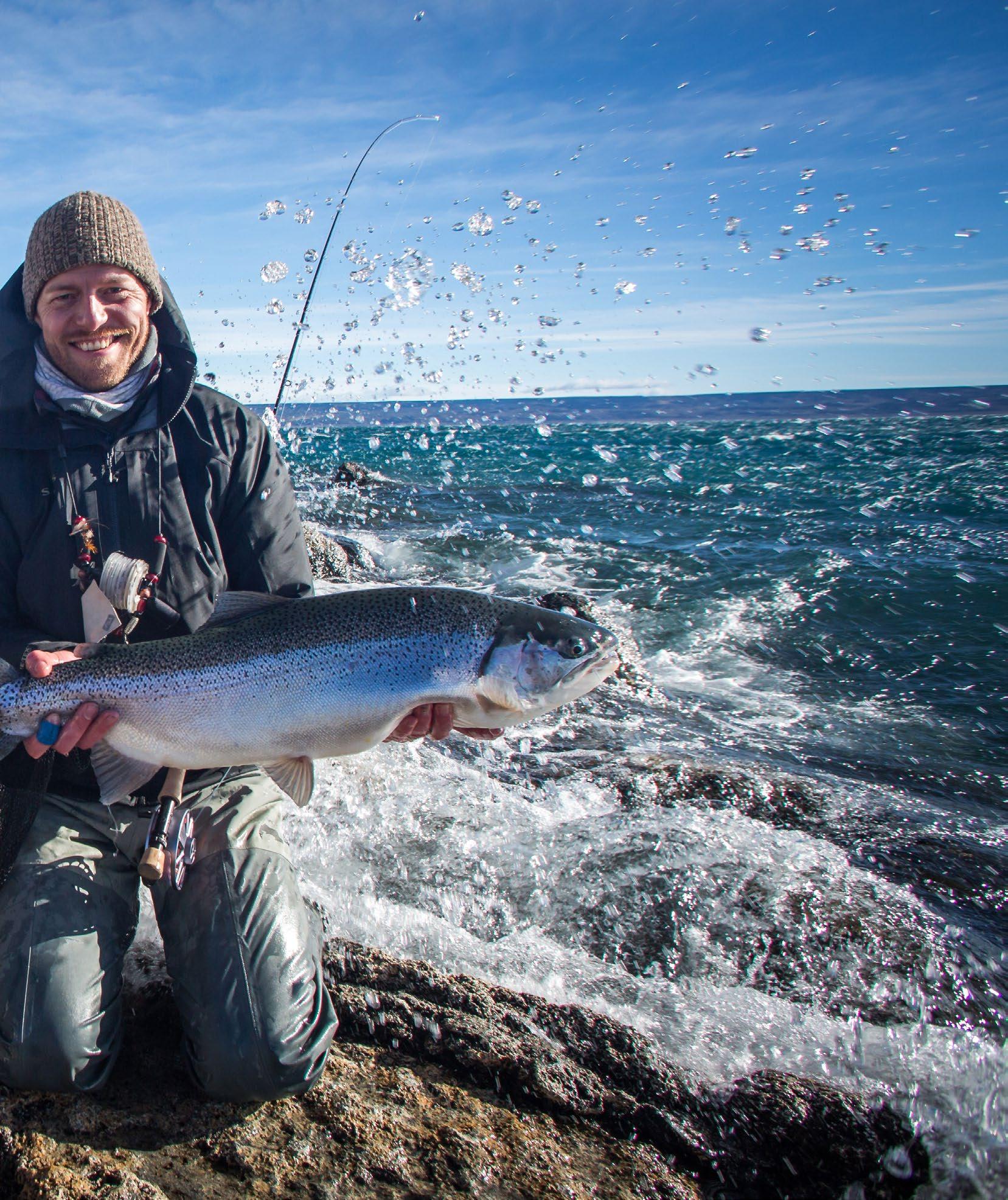
And as my brother and I land at Lago Strobel – on the rudimentary landing strip recently built by Juras sic Lake Lodge – and we make our way to the lake via windy and une ven gravel roads – the myth is sud denly on an unavoidable collision course with reality. Everything that I’ve previously heard about this place is now in a wrestling hold with all the senso ry impressions my over-stimulated brain is bombarded with – and one simple question begs an answer: Will the fishing be able to match the immense expectations that I’ve managed to build up over the years?
NOW THAT IT’S LATE APRIL –and with the imminence of a relent lessly long and bitterly cold winter, the season is slowly but surely coming to an end, and - according to the guides - the fishing is far from optimal. But, frankly, that suits me just fine!
When, in December and January, the fishing is at its best, it is actually TOO good! This is confirmed by the many stories told by the guides – stories in
volving vulgar amounts of trout, con centrated along the shoreline in front of Jurassic Lake Lodge where the lake’s only tributary, the Barrancoso River, pours in – and where enduring fly fishermen have caught more than 100 rainbow trout in a single day. (With an average weight of about five kilos that comes to the quasi-industrial catch of half a ton of rainbow trout in less than 24 hours!)
DURING
OUR
FIRST
DAY BY THE
LAKE we experience some thing that few ever experience: A completely windless day, where Lago Strobel’s otherwise frothing surface is like a big, shiny mirror. Bathed in warm light, we move along the beaches and the rocky, lunar-like shores eagerly looking for fish. And it doesn’t take us long before we locate small schools of relatively apathetic and spooky fish swimming about at random. Some nerve-wracking and highly challenging sight-fish ing awaits us, and having extended our leaders considerably with cob web-thin tippets and experimented a bit with flies and presentation, the first few fish nervously start to react.





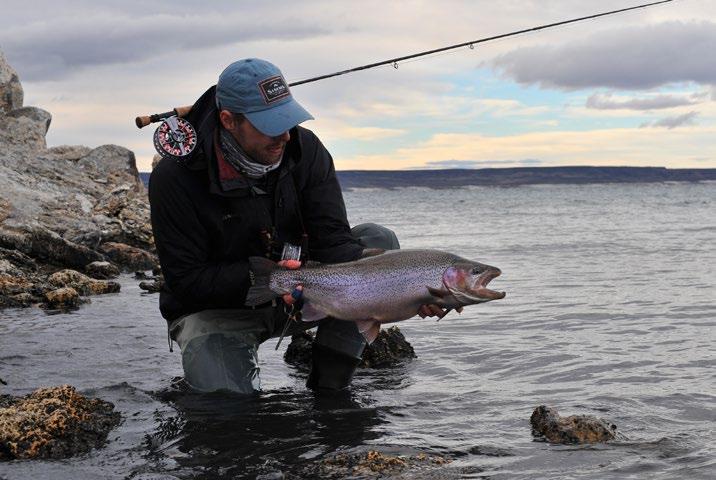


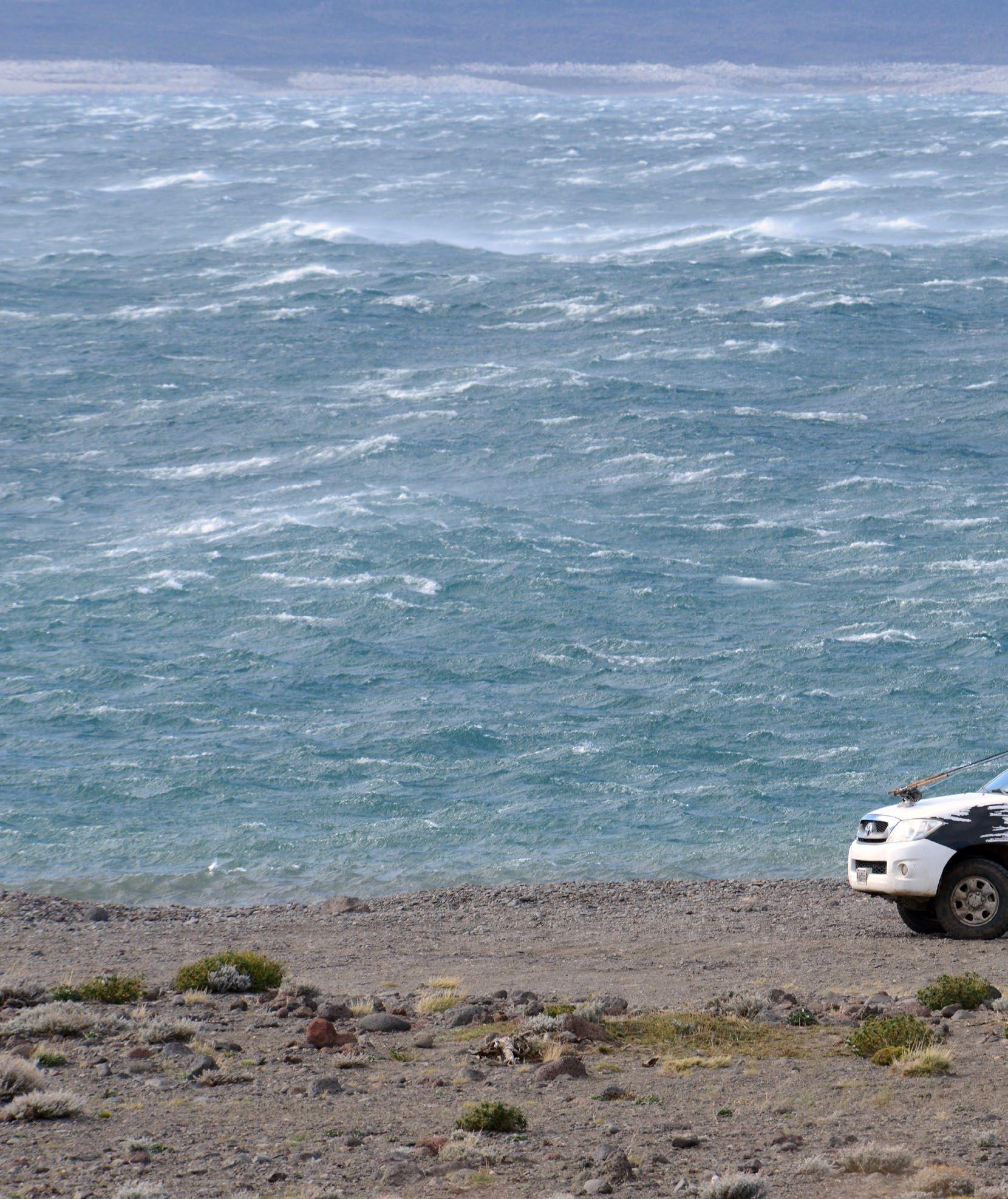
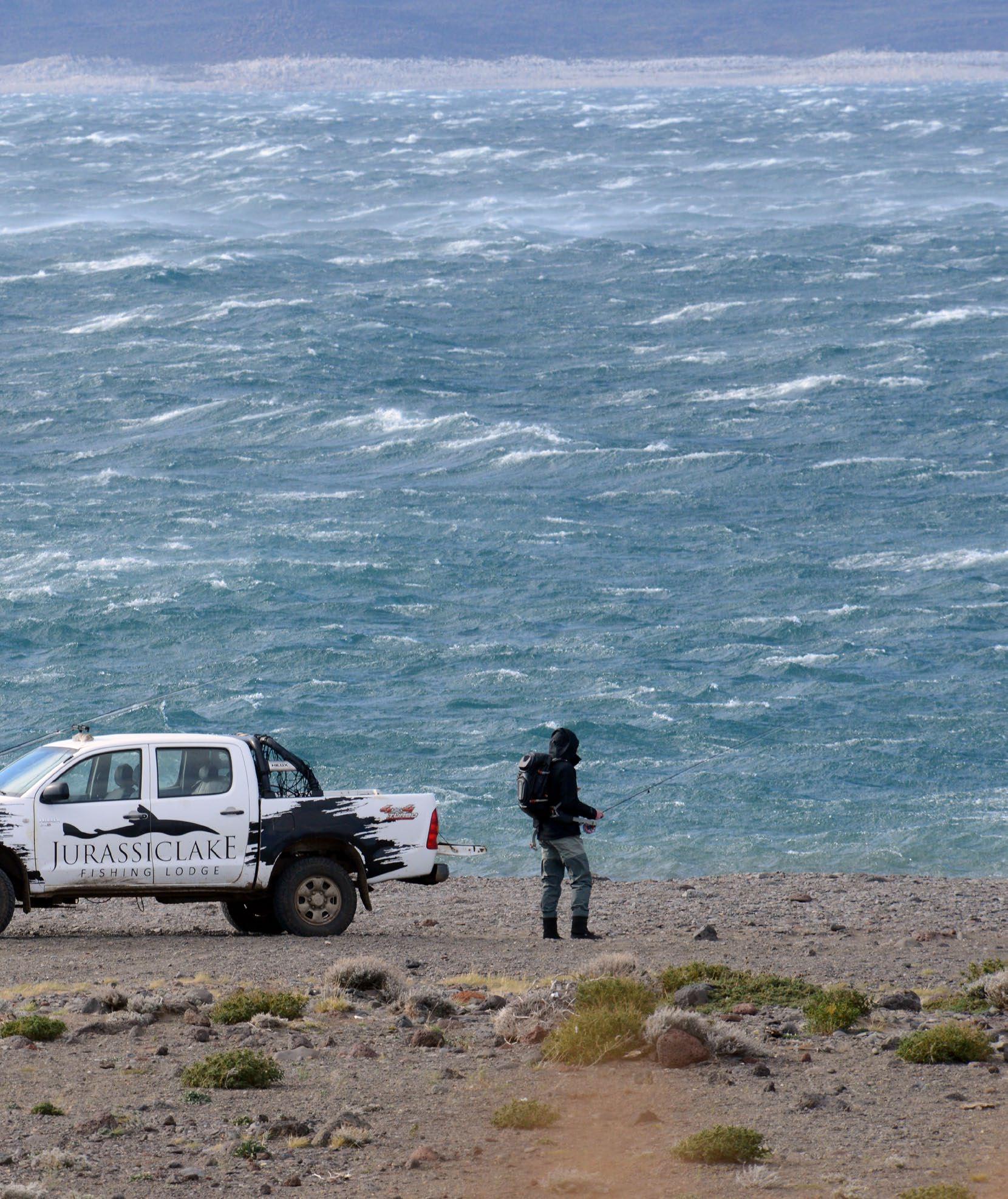



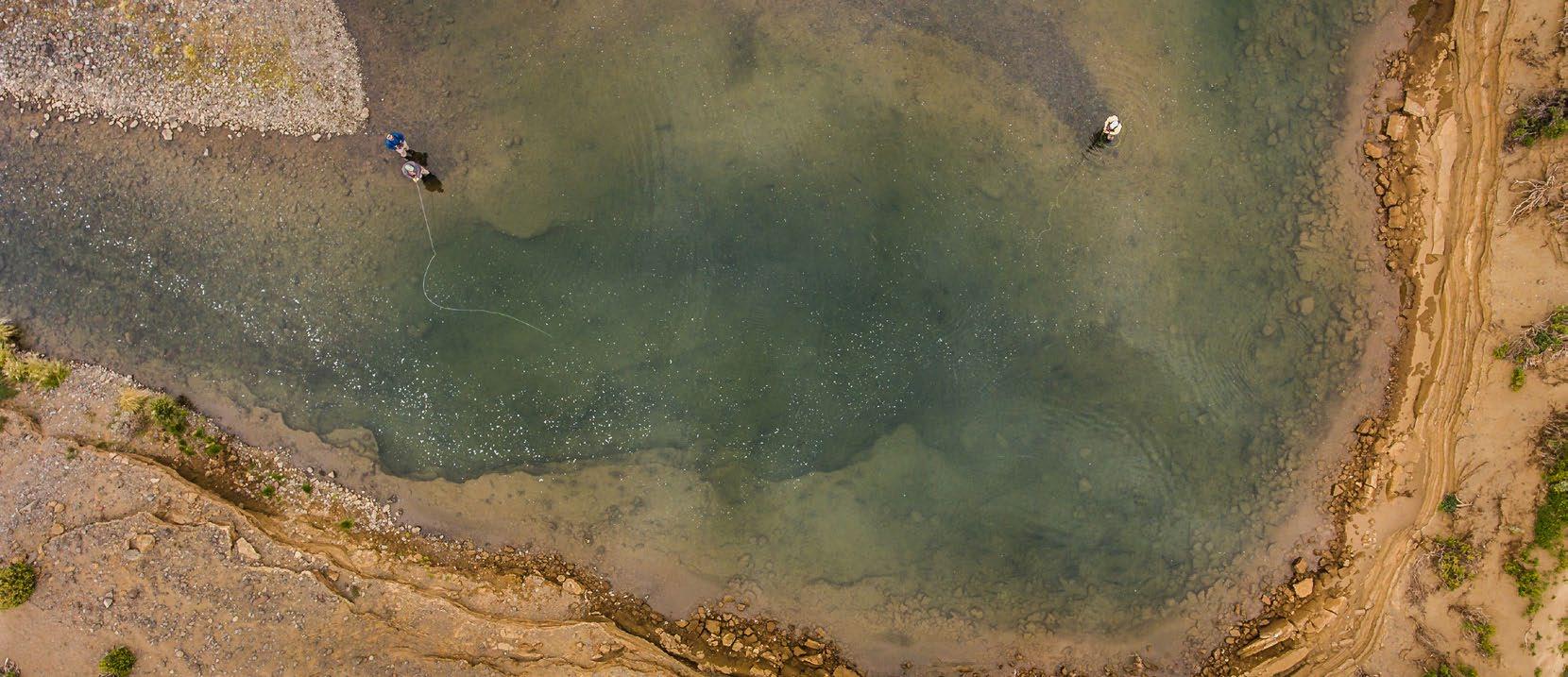
I’ve sent off a cast in front of few fish circling around near a well-defined drop-off, and as I start retrieving the fly, I immediately capture the interest of one of the fish. It lazily pursues the fly, following its monotonous path through the crystal-clear wa ter with a body-language that, at the same time, seems both tense and indifferent.
Shortly after, a vague tug propagates through the fly line, and as I lift the rod, the fish sheds all of its seeming indolence. All hell breaks loose, and I now find myself desperately trying to cushion the effect of a ragingly heavy run, which is only briefly interrupted by hectic scenes of tumul tuous headshakes and meter-high jumps.
In deeper water – with a full fly line and some 40 metres of backing dragging behind it – the fish finally dis continues its attempted escape and changes tactics. It now tries to find shelter along the lake’s jagged subaqueous tufa-reefs, and all I can do is lift the rod, put maximum pressure on the fish and pray to God that the leader isn’t cut off.
When - a good while later, the fish glides across the frame of my landing net and into the trap of the rubber mesh netting, a loud, cheerful roar is impossible to hold back. My first Ju rassic Lake rainbow trout is a reality – and what a fish! It must weigh in the vicinity of six solid kilos, and it is among the most flawless and beautiful fish, I’ve ever seen: Dashingly chrome, with blushing red gills and infinitesimal ink stains along its iri descent green back. And the tail fin!
The massive and well-defined tail fin displays a glittering mother-of-pearl glow that radiates from the base, as if all the centrifugal powers from the fish’ fierce tail slaps have made the silvery glow of the flanks exude into the very tips of each tail fin-ray.
AFTER TWO DAYS with some of the best sight-fishing, I’ve ever expe rienced, the inevitable happens – the winds pick up! It’s as if the weather gods have taken a long, deep breath in order to thoroughly blow the whole desert apart one last time before win ter emerges and covers everything in snow and frost.
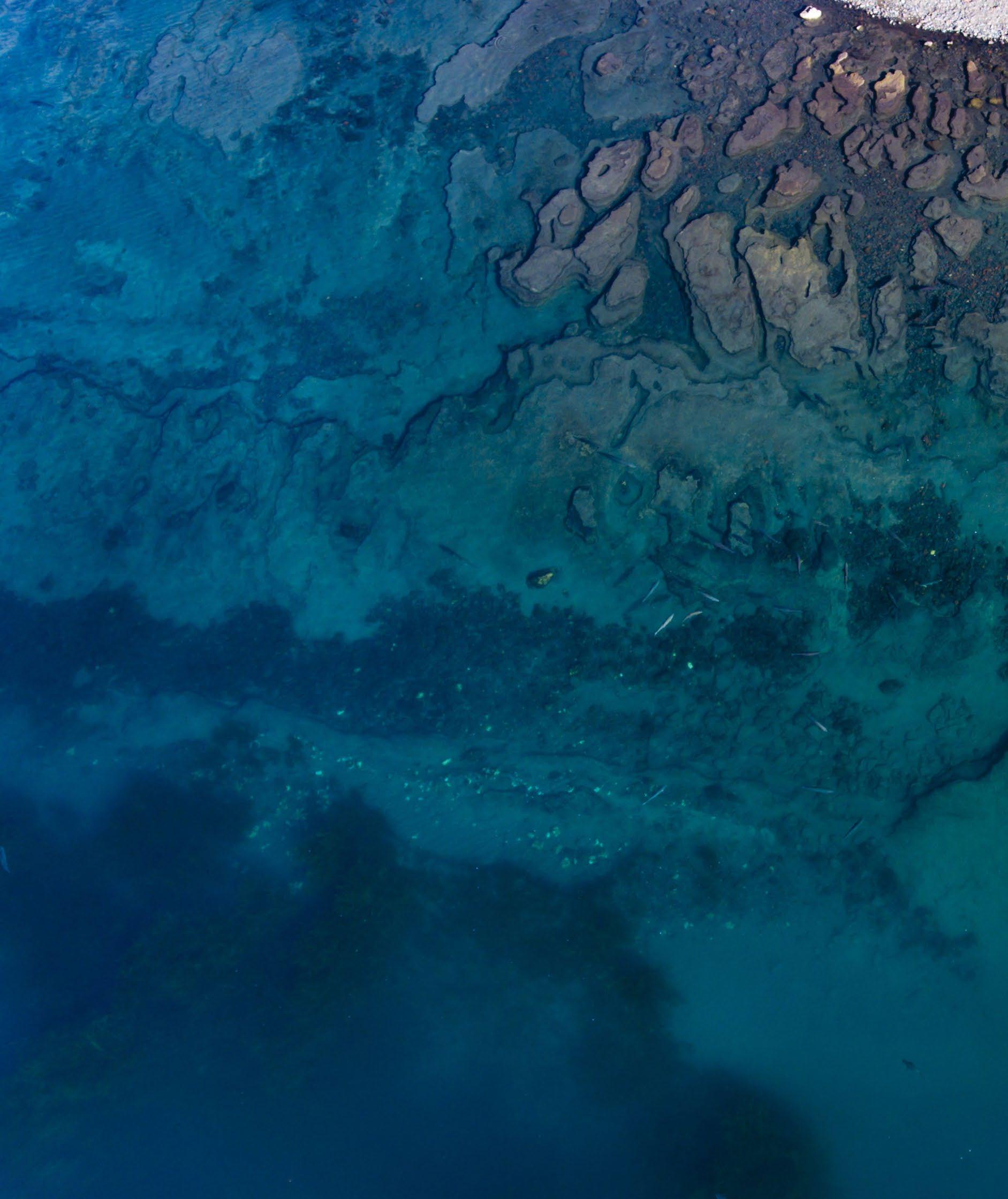
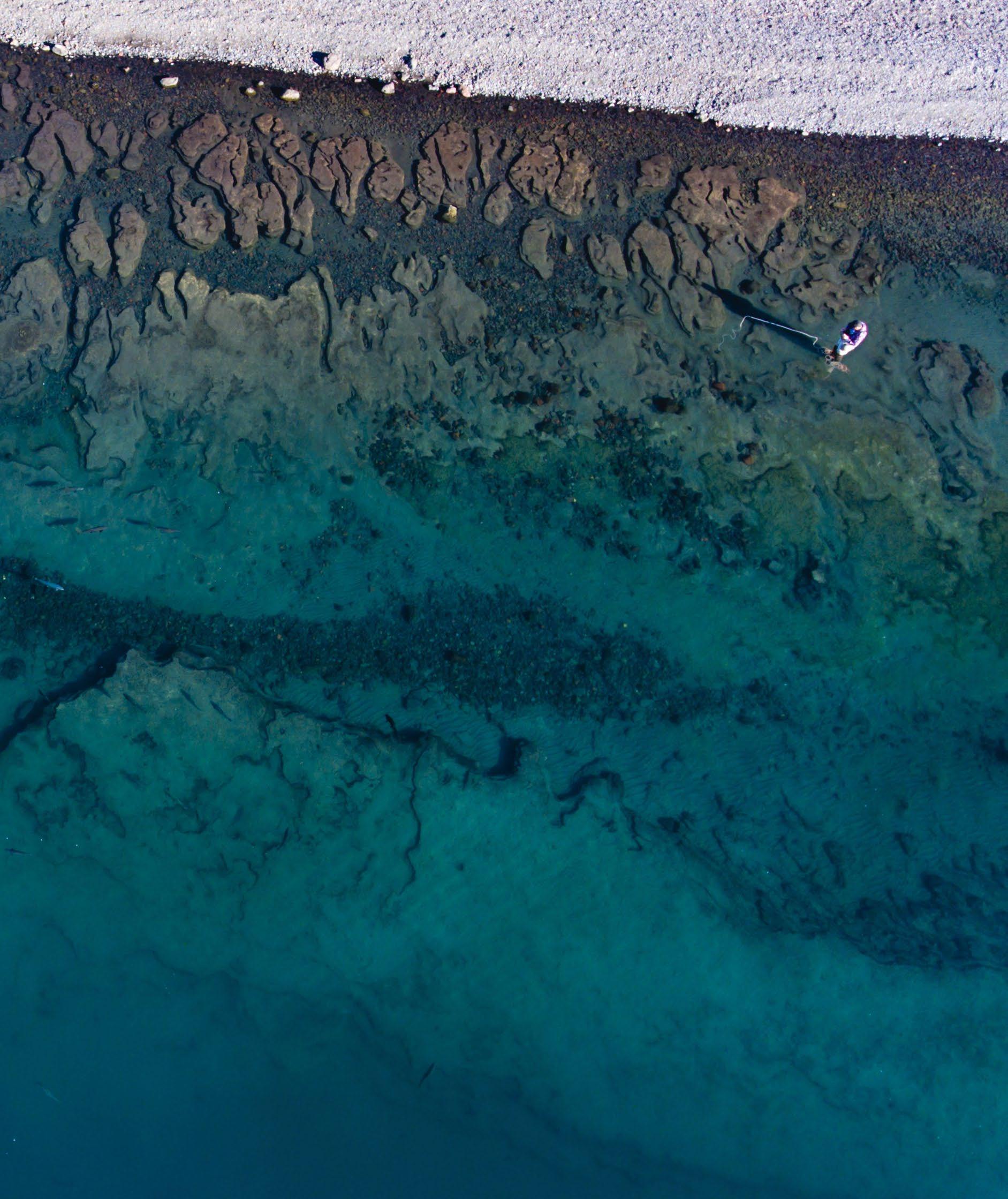
The howling winds rip and tear at everything that manages to stay erect, and the lake has now re-transformed into its usual self: A roar ing ocean, where meter-high waves crash relentlessly onto the shore, partly blown apart by heavy gusts that cause a swirling haze of foam and droplets to rise from the lake. And this is only the beginning…
There isn’t much cover or shelter to be found along the lake, but in the nearby Barrancoso River, which meanderingly transects the desert through towering, narrow canyons, there is an occasional vacuum between the tunnel-like squalls, which makes it possible to sight-cast to both stationary and migratory rain bow trout.
THE BEAUTIFUL BARRANCOSO RIVER is really an unjustified parenthesis in the history of Jurassic Lake. Because even though the river rarely yields fish that rival Jurassic Lake’s monster fish in size, it of fers some incredible sight- and close combat-style fishing with plenty of shots at fish in the 3 – 7 kilo range. It is a technically demanding fish
ery, where stealth skills, precise casts and calm nerves are required, but it’s worth the whole journey in and of itself. Equipped with light single-handed rods, thin leaders and small streamers, we share many unforgettable moments on the Barrancoso River. But we’re at our most ecstatic, when we manage to land a couple of fish on dry flies and mouse patterns. The experience leaves us craving for more, and for the next couple of days - as the winds die down just a little bit, and the gale force gusts - which have rendered the lake a foaming inferno - run out of breath, we reappear at the lake shores armed with big, buoyant dry flies.
SEING AN 8-KILO TROUT confidently rise through the water col umn and gulp down a dry fly at close range is indescribably cool! And it happens repeatedly during our last two days at Jurassic Lake. As we’re about to find out, the lake’s chromers aren’t merely interested in scuds, and they always keep an eye upwards –even when the winds are howling and ripping at the water surface.

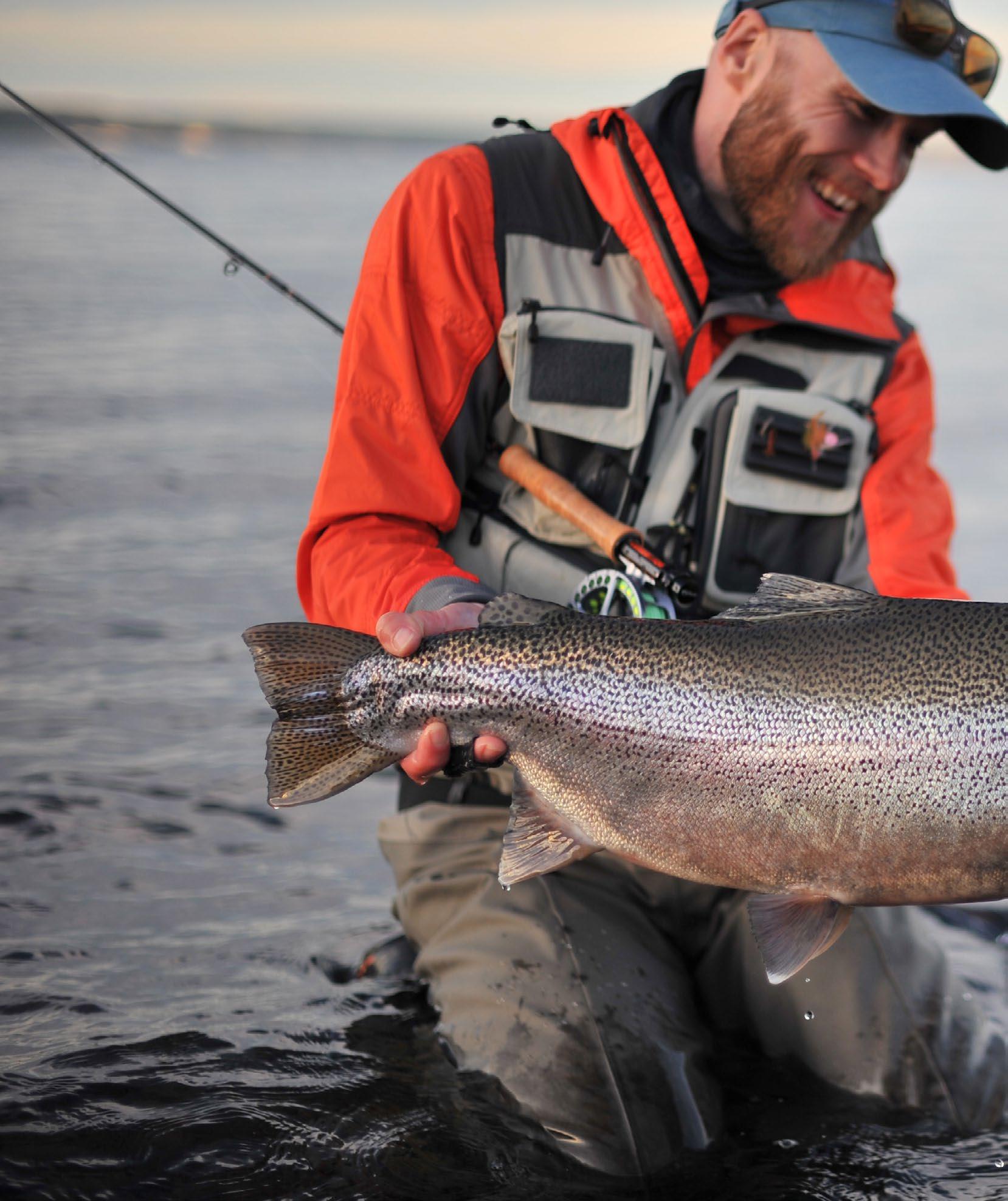


During the last couple of days - with big and highly visible Chernobyl Ants at the end of our leaders – we land double-digit numbers of rain bow trout between 5 and 9 kilos. And I’m so consumed and devot edly absorbed in the fishing that it isn’t until I sit on the small Twin Ot ter plane on my way back home via Comodoro Rivadavia that I realize what an extraordinary and unique experience it has been. Here, all the sensory impressions from the past week start to precipitate, and I suddenly become chok ingly aware of what an extreme phenomenon Jurassic Lake is. The weather, the terrain, the climate… the fishing. All of it is extreme, and it has left an ineradicable and deep impression in me!
Coming to Jurassic Lake with extremely high expectations, like I have, involves the risk of extreme disappointment. After having expe rienced the place and the myth, Jurassic Lake, and having experienced a chrome dry fly fishery in a league of its own, there is no doubt left in
my mind: This is a place that has not only exceeded my wildest expecta tions – but also my wildest fantasies!
Lago Strobel/Jurassic Lake
Jurassic Lake is the popular name for Lago Strobel: A remote, windswept lake in the Patagonian province of Santa Cruz in Argentina.
The lake was inducted into the fly fishing hall of fame when Christer Sjöberg – the founder of Loop Tack le – co-organized an expedition to the lake back in 2005. The expedition stumbled upon a rainbow trout fishery that exceeded most fly fish ermen’s wildest fantasies, and once a camp had been established, it didn’t take long before Jurassic Lake – as it was cleverly dubbed - had gained international attention and fame.
Lago Strobel is a 63km2 endorheic basin – i.e. a closed drainage lake without an outlet. It’s set in a treeless lunar-like landscape and its shore lines are strewn with contorted tufa-formations, cliff fragments and even remnants of petrified forest. Lago Strobel is inherently fishless.
Why it’s been like that for thousands of years is somewhat of a mystery, but it certainly isn’t due to scarcity of food. The crater-like lake offers a rich base of food mainly consisting of raw amounts of scuds, and with the almost 40 kilometre-long Barrancoso River providing prime spawning- and growth habitat, we’re talking about a unique biotope with an enormous potential.
The explanation as to why the lake has such a prolific population of massive rainbow trout is to be found among the local gauchos – these har dy Argentinean cattlemen, who have found their domain in the wind swept and arid terrain surrounding Jurassic Lake. It was the gauchos that introduced a modest number of rainbow trout from the Santa Cruz River into the Barrancoso tributary some 20 years ago – a stock of fish that have flourished in the lake and become a self-reproducing popula tion of monster trout up to 15 kilos (and probably bigger). Despite its location in the middle of the Santa Cruz desert’s harsh and ex tremely inhospitable desert plateau,
there’s a rich and compelling bird life in- and around the lake. Flamingos, ducks and eagles reside here in ad dition to the endemic hooded grebe – or maca tobiana, which lives nowhere else in the world, and which wasn’t discovered and documented until some 20 years ago. The lake is also rich in culture and history. Peo ple have lived here for more than 9000 years, and along the Barran coso River you can still find traces of human activity: stone age tools, petroglyphs and settlement remains.
Logistics
In order to get to Jurassic Lake Lodge, you need to fly to Comodoro Ri vadavia via Buenos Aires. From here, Jurassic Lake Lodge now arranges private charter flights to the lake. This part of the journey, which takes about an hour and a half, replaces and excruciatingly long and bumpy car ride, which – for the last 115 kilometres - from the city of Governor Gregores consists of rudimentary gravel roads that even cross country 4X4’s struggle with. The lodge’s new landing strip was completed in 2015, and there are flights every Saturday and – on demand – Wednesday.




Clothes for Jurassic Lake
Jurassic Lake is an extreme and moody place – especially when it comes to the weather. Oftentimes, warm and calm weather is sudden ly superseded by cold- and raging winds, and – as a result – you always need to be ready to switch from sunscreen and t-shirts into wool and weather-resistant shell clothing. Late in the season there’s even the risk of snow storms. Regardless of when you plan to travel to Jurassic Lake, pack ing several layers of insulating core clothing and wind- and waterproof shell clothing is essential. The winds at Jurassic Lake reach speeds in excess of 100 kilometres an hour, and with the ceaseless imminence of extreme cold (and rain or snow), you’ll want to pack the best clothes out there. In addition to layers and shell-clothing, you should pack a warm wool-Buff, water-resistant gloves, and a beanie (or cap with ear flaps). Together with sunscreen and a pair of UV-protective crewnecks, all these garments should be packed in a waterproof daypack. There are plenty of sight-fishing op portunities, no matter the wind- and weather conditions. Therefore, a
good pair of polaroid sunglasses are essential. They also provide some much-needed protection, when casting in the notoriously tricky winds that rip through the lake basin.
The Gear
When it comes to the equipment, you also need to keep the extreme weather conditions in mind – and not least the size of the fish. Gener ally, 9,6 - 10’ #6-8 fly rods that are capable of handling turbulent winds will be useful, but if you’re lucky enough to experience calm days, you shouldn’t rob yourself of the opportunity to fish a 9’ #4/5 – so bring one just in case. If you’re rather unex perienced when it comes to fishing in heavy winds, you might consider heavy shooting heads – if necessary in combination with switch- or light double-handed rods. Because even though the fish usually patrol the shorelines, sometimes they’ll hang around the drop offs, and then you’ll need long casts to reach them. The fly reels should have stable, low-in ertia brake systems, and they should be able to pack a WF-fly line and 100-150 meters of backing.
You’ll mostly be using floating lines, but intermediate lines are great when fishing streamers or nymphs in heavy seas. When doing that, you’ll typically be using fluorocar bon leaders with 0,20 – 0,28mm tip pets. Otherwise, when fishing dries, nylon leaders and tippets are to be preferred. Bring along even lighter tippet materials for the odd, windless and sunny day, but never fish lighter tippets than necessary. Remember: Jurassic Lake produces enormous fish, and they are super-powerful!
The flies, that are typically used at Jurassic Lake, are a mix of olive-, white-, grey-, and black streamers ranging in size from 2 – 10, and #8 – 14 nymphs and scud imitations in similar colours – preferably with lively rubber legs. The best dry flies are big and buoyant.
to be tied on X-strong hooks. Other wise, the will get straightened out by the bigger fish in the lake.
Jurassic Lake Lodge
Jurassic Lake Lodge is a comforta ble and atmospheric lodge, which is strategically located precisely where the Barrancoso River enters Lago Strobel. In other words, it is situated in immediate proximity to the lake’s most productive fishing area. Juras sic Lake Lodge accommodates up to 10 fly fishermen, who then have ac cess to several different beats in the lake in addition to 30 kilometres of the incredibly exciting and relatively unexplored Barrancoso River. Furthermore, the lodge owns the rights to the Moro Creek, which is a little river, that connects a series of small er lakes – and here you can experience some amazing – and practically undiscovered – trout fishing.
Chernobyl Ants and similar foamdry flies with rubber legs and big, white wings of deer hair work impeccably. At the same time, they’re highly visible when fished at a dis tance. The common denominator for all of the flies is that they need
For additional information and cur rent prices, please refer to: www.jurassiclakelodge.com or con tact lodge-owner, Carlos Lopez Casanello, directly: carlos@jurassiclake.com




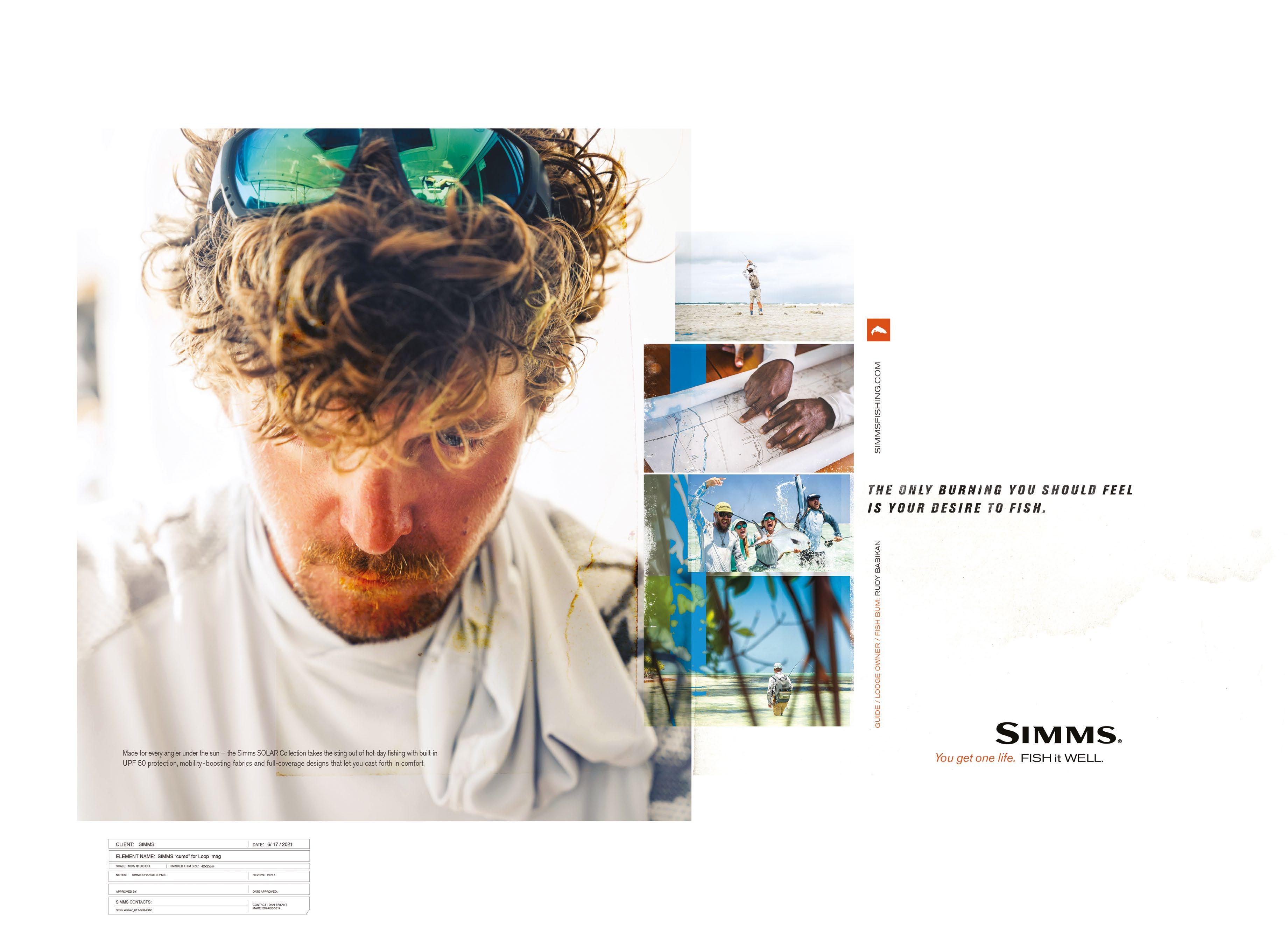

Chile
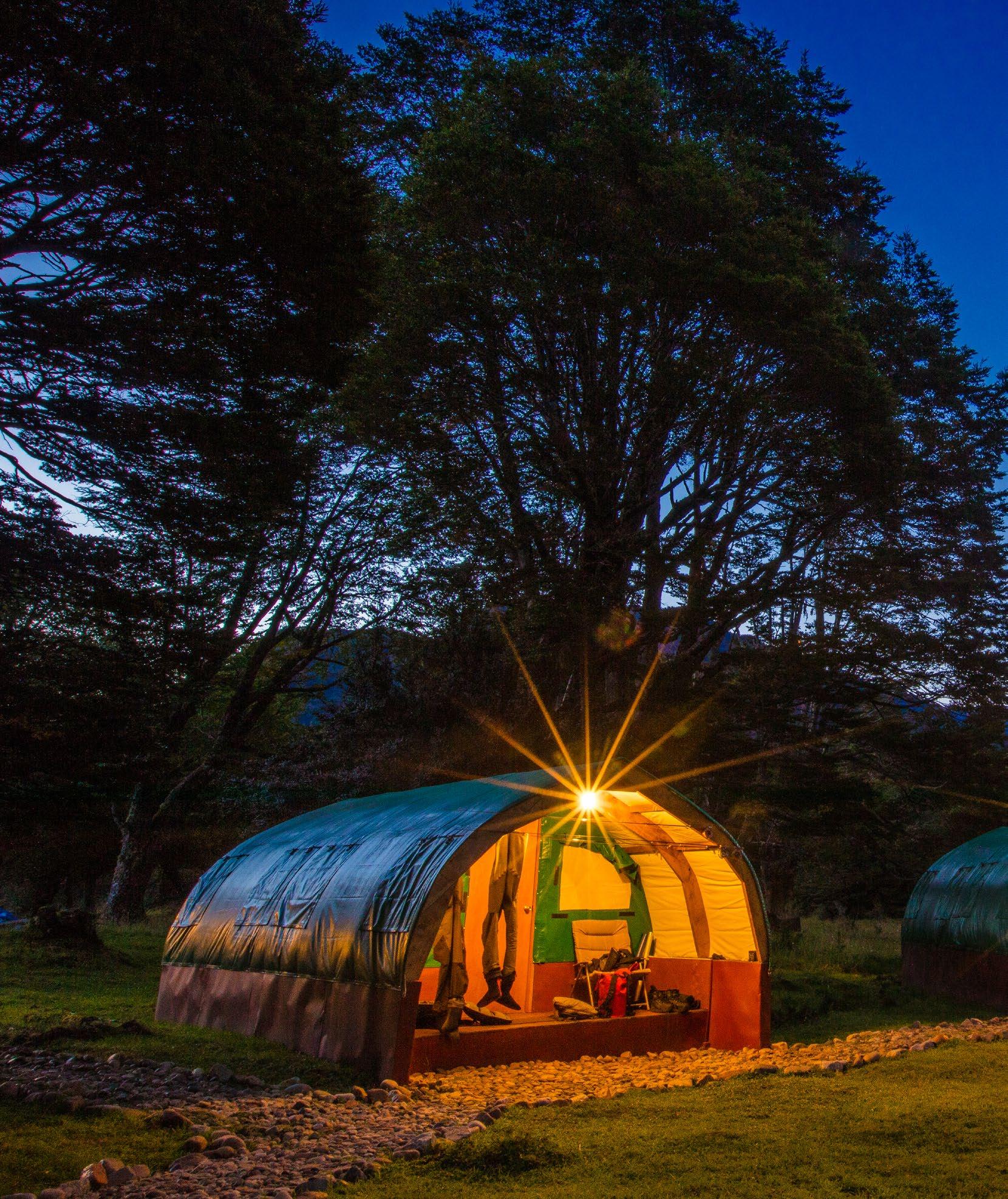
Rainbows in Paradise
By MATT HARRIS
Suddenly, the thick white veil of cloud parted, and through the dense curtain of gnarly old Lengua trees, a sight that all but took my breath away. Up ahead, Jorge, our gaucho guide, reined in and allowed our privileged little band to survey the mesmerizing vista.
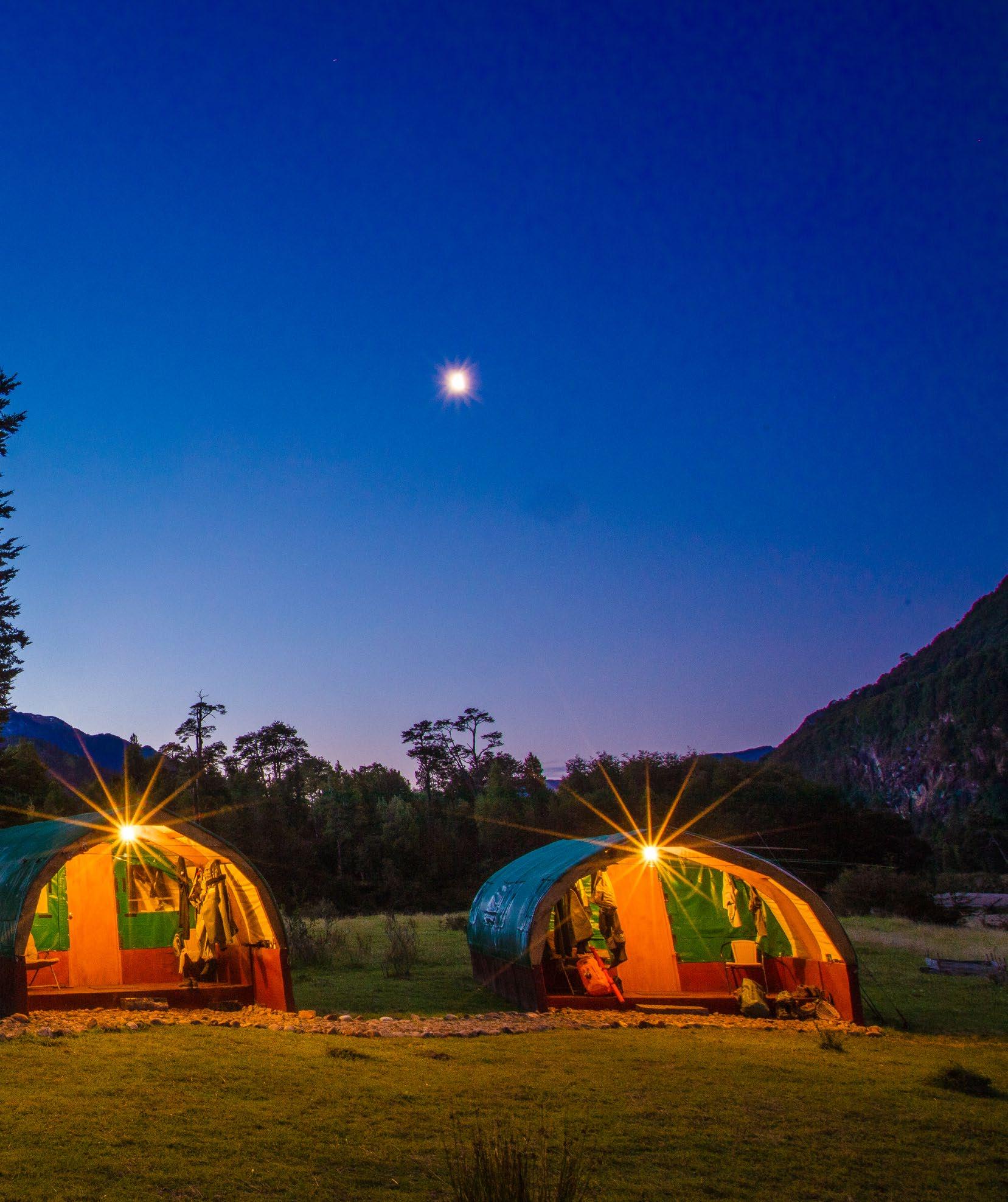
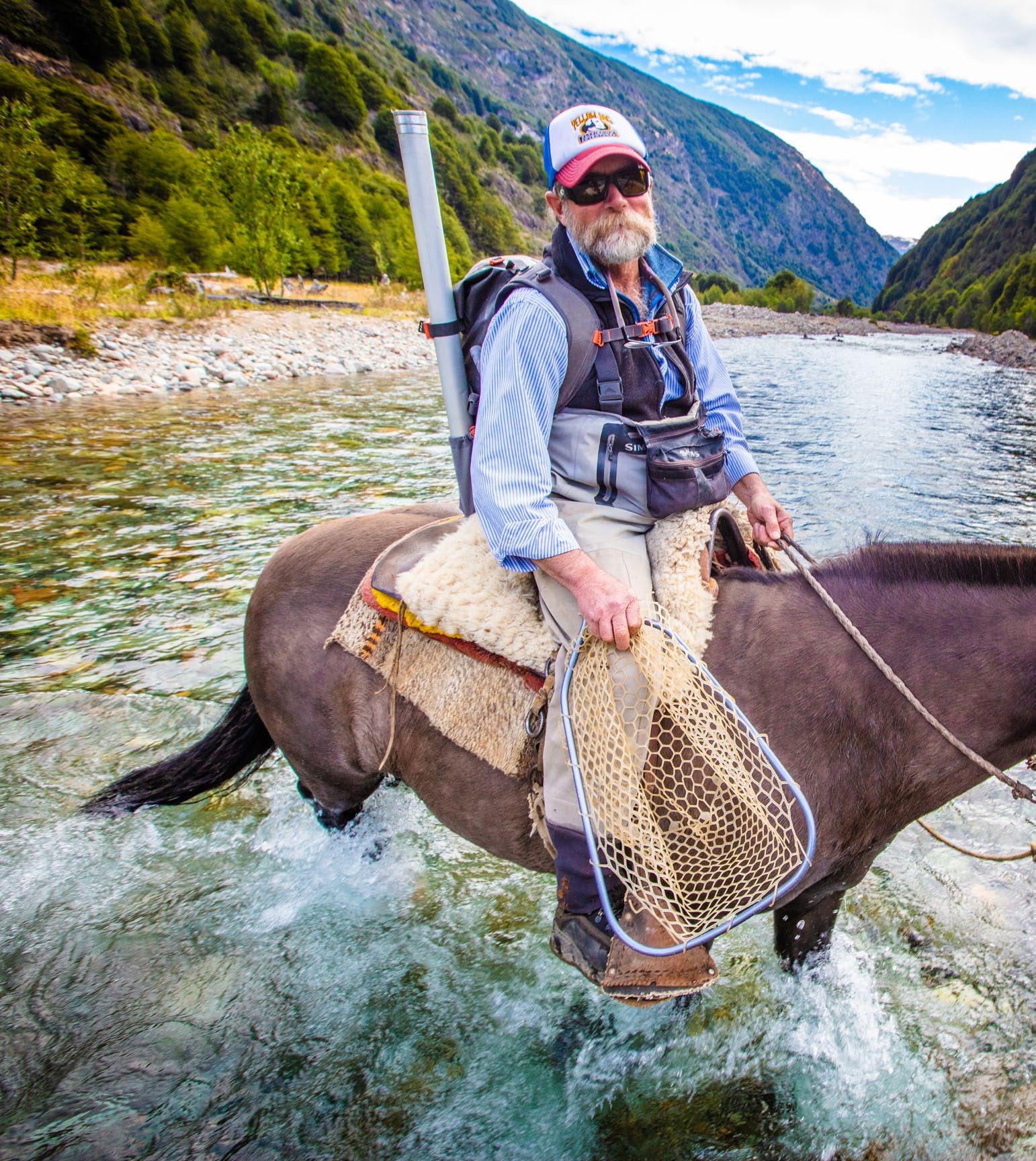
There it was. The River of Dreams.
Far below, the rushing waters of the Rio Blanco carved a serpentine path through a pristine valley of broad lush meadows and dense, ancient forests. With impassable canyons at either end, this enchanted place is accessible only by horseback, and then only if you know the way in, and have access to it. As a result, this valley has seen perhaps fewer than a hundred fishermen. Imagine that!
How many places are left in the world where you can fish for such inno cent, virgin trout, in such impossibly beautiful surroundings? Sometimes you know the fishing will be special. So it proved.
Heading Upstream
Rising early the following morning, I enjoyed an excellent and lively breakfast with my companions, Lindsey Flexner and his likeable bunch of fellow trout fanatics from Oregon. Then, well-fortified for the long day ahead, we clambered impa tiently into our waders, and I helped pack the raft with my excellent young guide, Hayden Dale.
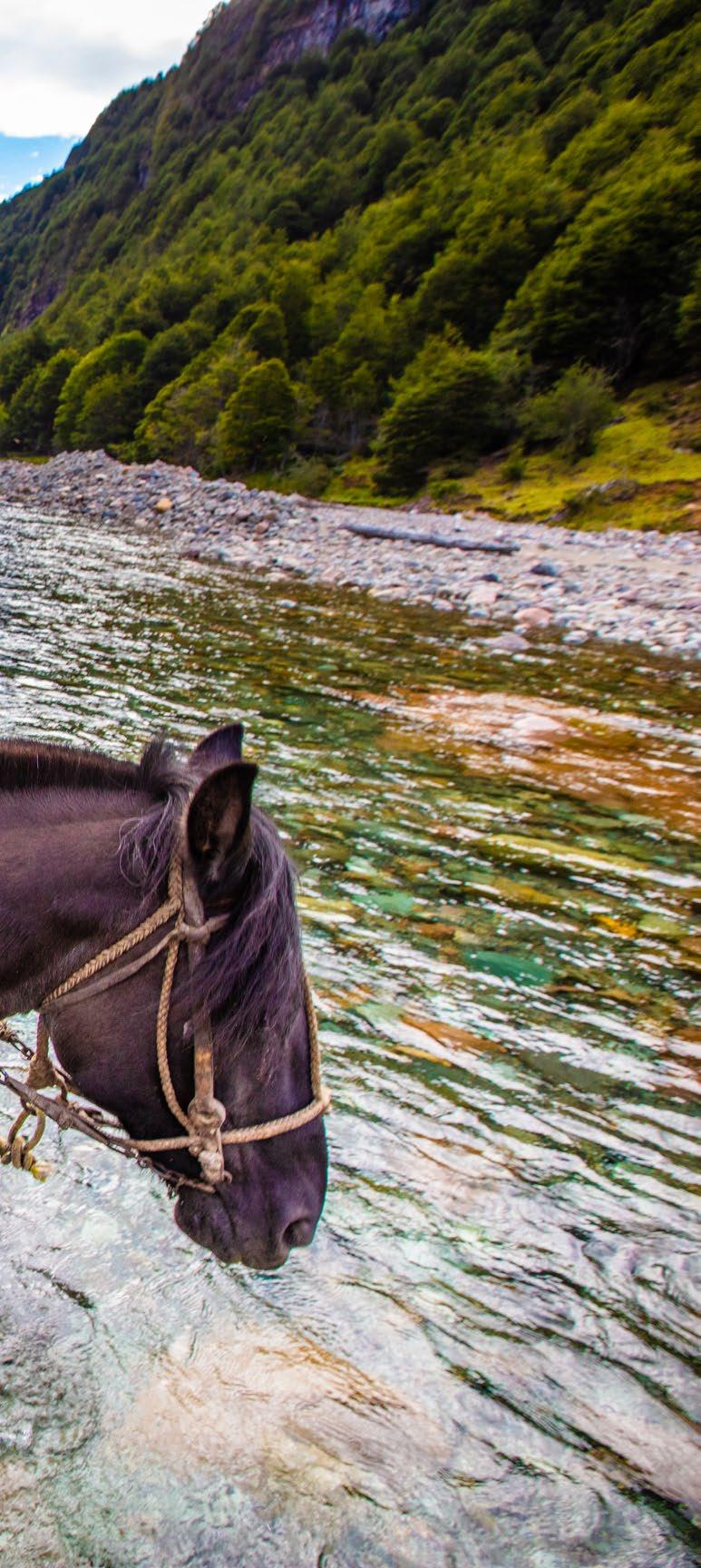

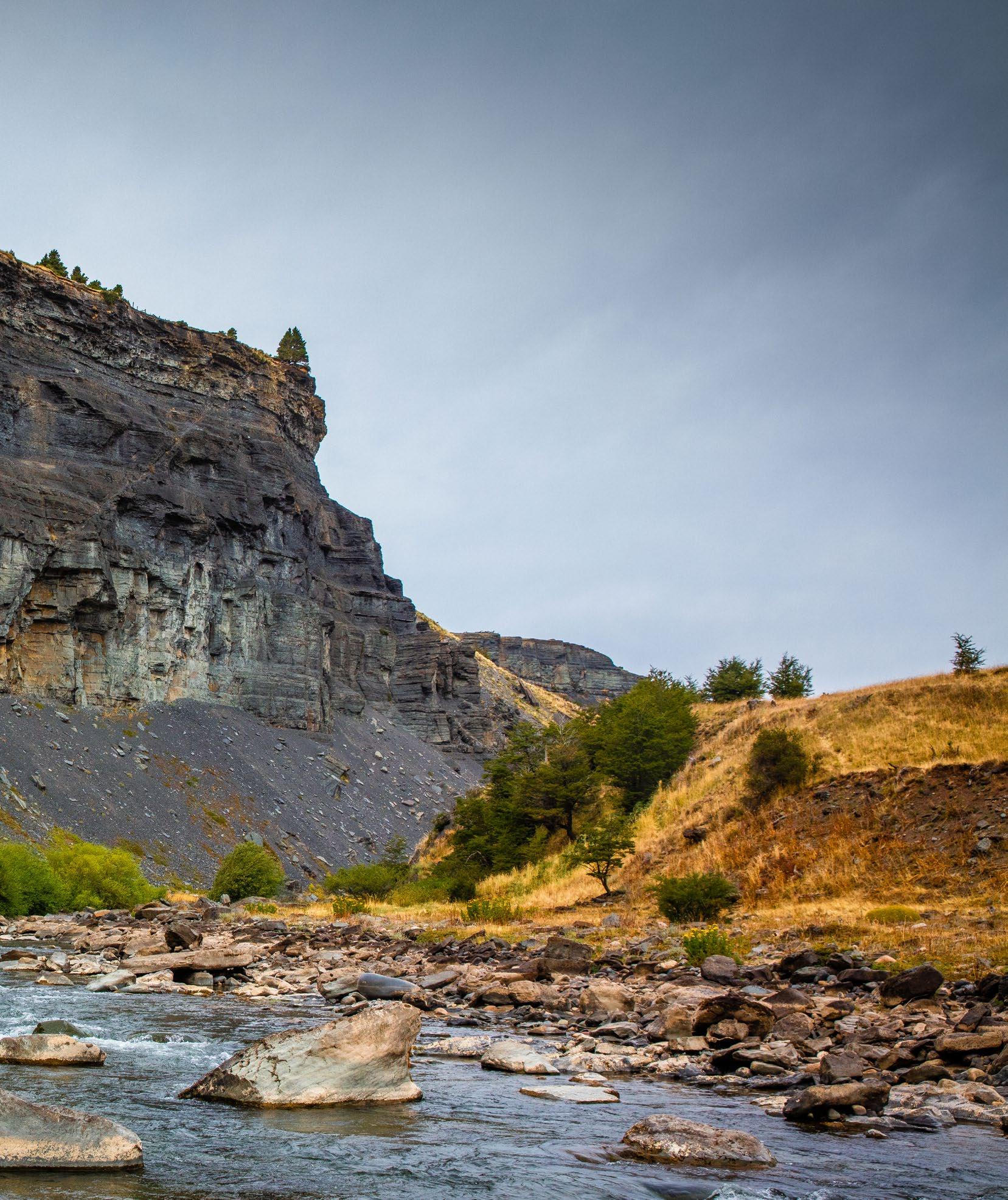
We headed upstream. Weaving through the tumbling riffles and logstrewn pools, we watched the clouds slowly lift to reveal the spectacular Andean peaks soaring all around. Fully two and a half hours later, we finally reached the impassable can yon that guards the upstream end of the valley.
bank. At first, I drew any number of follows, but in the frigid waters of the early autumn morning, the fish seemed lazy and non-committal. Hayden suggested I try his own beau tifully tied take on Kelly Galloup’s appallingly named but devastatingly effective “Sex Dungeon” pattern, tied in a natural and unobtrusive tan, and the change was immediate and as tonishing. Now every fish attacked the fly with savage abandon.
There were a few feisty rainbows in the mix, but the browns stole the show. Sleek, scarlet-speckled trout to twenty inches and more that fought like tigers and sparkled in the autumn sunlight for the few brief mo ments that we lifted them clear of the water to admire them.
After a delicious pot of coffee and a good stretch in the morning sunlight, we set about our task. Drifting back downstream, Hayden held the boat expertly while I tossed big dries and articulated streamers back to the
All through that beautiful morning, we caught fish, and when we pulled in to have lunch, I realized that we hadn’t seen another living soul. Looking at the light playing on the vast ramparts of the valley, it was hard to believe there could be a more beautiful spot to fish for trout any where in the world.
“Big articulated streamers, huge dry foam beetles and, best of all, skated
mouse patterns are all attacked with rare and voracious abandon”






“Truchas”
in the torrents
Chilean Patagonia isn’t really designed to har bour trout. Her rivers are, in the main, fast and formidable torrents that tumble down from the Andes and crash headlong into the Pacific, invar iably just a few short miles away. Yet this stun ningly beautiful country has bred a race of ag gressive opportunistic “truchas” that are a joy to fish for. Forget your fussy little “carpet-fluff” upwing emergers and suchlike...these fish want seri ous protein. Rushing from their hidey-holes into the tumultuous, boiling currents of most Chilean rivers means expending valuable calories, so give these big brutes something worth the effort. Big articulated streamers, huge dry foam beetles and, best of all, skated mouse patterns are all attacked with rare and voracious abandon.
Eduardo Barrueto owns and runs Magic Waters Lodge. He is a lovely guy – a warm, quick-wit ted and infectiously enthusiastic trout fisherman. His lodge is situated in an enchanted spot, on the outskirts of the fly-fishing Mecca of Coyaique, in Southern Chile. Perched above a beautiful, troutfilled lake, the lodge fully justifies its name, access ing a multitude of beguiling trout waters. As well as the “River of Dreams“-Basecamp on the Blanco, there’s everything from broad rivers like the legendary Rio Simpson to tiny streams and spring creeks, to prolific lakes large and small. Everyone is worthy of the avid trout fisherman’s attention.


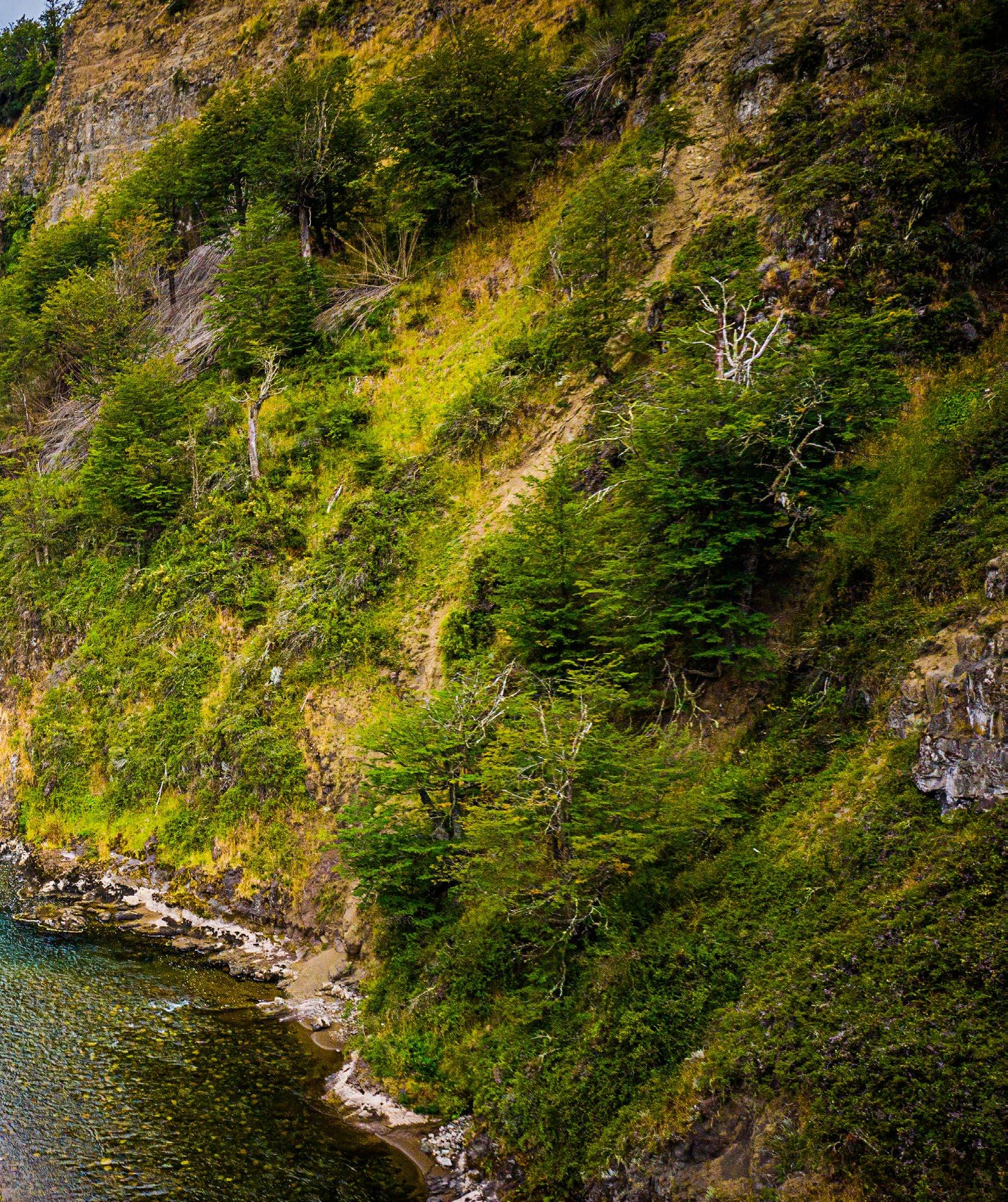
Hero or Zero - A place of monsters
One night as we sat up late, sharing a de licious bottle of Chilean Carmenére and occasionally glancing up at the Southern Cross, sparkling overhead, Eduardo told me of another special place. A place where real monsters - trout of eight, nine, even ten pounds and more reside.
The water that he described has earned the melodramatic soubriquet “Hero or Zero” Lake. It is notoriously tough water, not big but deep and dark and heartbreakingly fickle. The very biggest fish featured in the images adorning the walls of Magic Waters have all come from “Hero or Zero”.
However, beware. As my host cautioned, the vast majority of anglers that sally forth to tackle this lake of dreams return as a Zero, not a Hero. “Want to give it a try?” Eduardo asked with a mischievous grin. He already knew the answer.
Wolly Buggers og mouse patterns?
I rose early the next morning. Very ear ly. It was changeover day, and due to my extended stay, I was the only angler at the lodge.
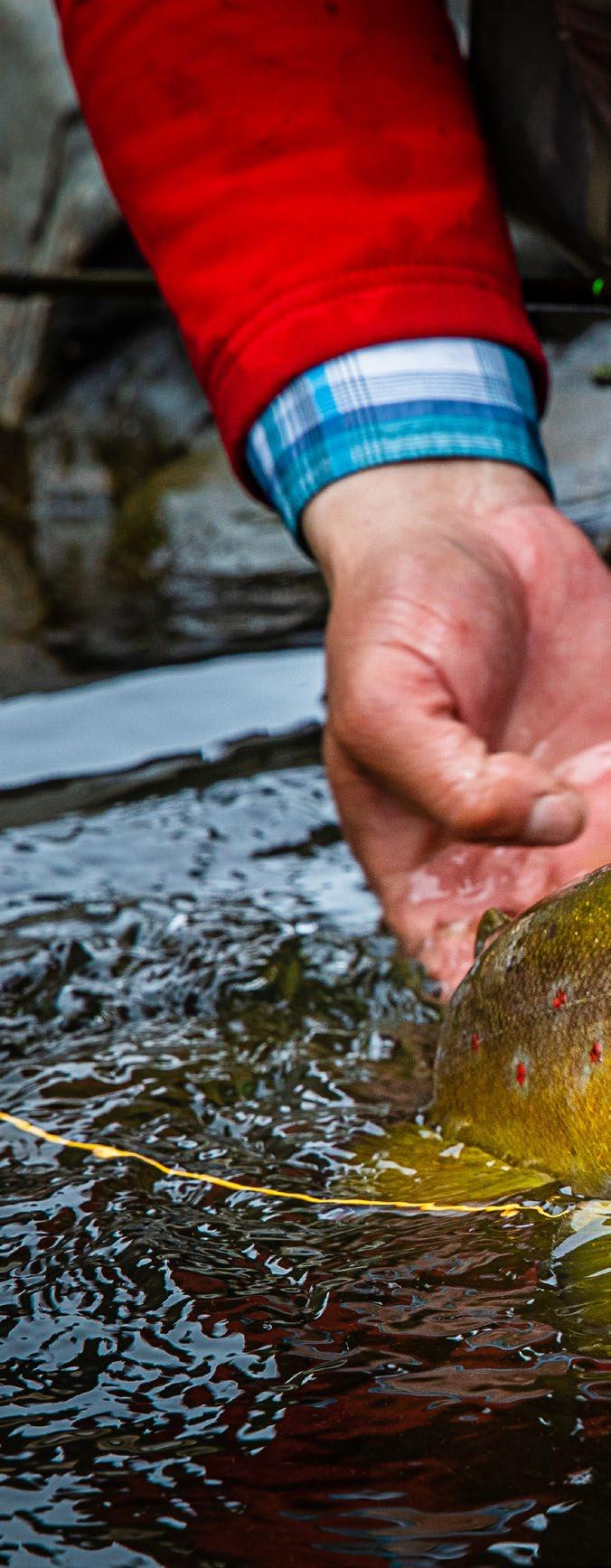
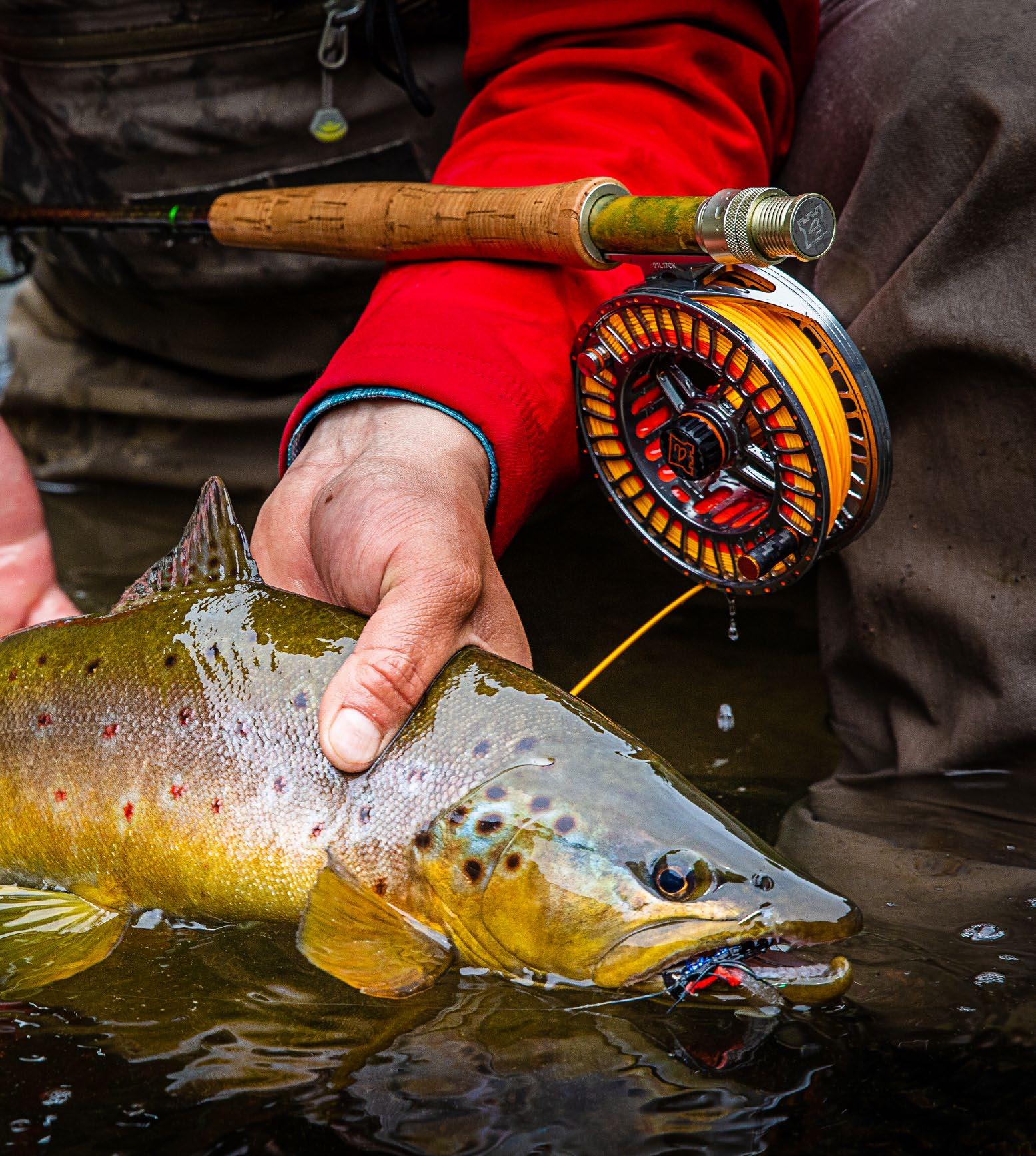

Noah, another excellent young guide and son of my friend and fellow Kola salmon addict Bryan Sohl joined Hayden and I. As we loaded the truck in the pitch dark, I knew the lads might well be cursing my zealous enthusiasm and thinking of a well-earned Sunday morning in bed, but I was sure that a dawn raid might just be the medicine for these big, cunning old bruisers. Hayden con firmed that the lake was never fished at dawn and as we launched the raft, I felt a strong premonition that my plan was a good one.
I encouraged Hayden and Noah to take turns rowing while the oth er fished - it was their day off after all. Despite my constant questions, no one seemed to know what the semi-mythical monsters of “Hero” enjoyed as their staple diet. “There’s a lot of caddis” offered Noah without conviction. Fish of ten pounds and more don’t grow to that size eating caddis flies. Do they?
Hayden tied on a woolly bugger, and to the lads’ surprise, I rigged up a big, home-tied mouse pattern, reasoning
that in the low, blurry light of the dawn, a big surface silhouette might prove irresistible to the big, carniv orous beasts that lurked in the deep dark waters.
At first, the water looked bleak and forbidding, and our casts were fruitless. However, as the first pink hues crept into the eastern skies, a gentle warm breeze rippled the water.
“Now is the time” I prophesied con fidently to Hayden, and the words were barely out of my mouth when a huge black shape burst through the surface and jack-knifed over the skittering mouse pattern, before dis appearing below the surface.
“A huge black shape burst through the surface and jack-knifed over the skittering mouse pattern, before disappearing below the surface”
Huge. Ten pounds? Twelve? Various incredulous expletives pollut ed the early morning air. So near. And yet so far.
A chill wind got up out of the East, and I knew our moment had been and gone. As our enthusi asm waned, we fell into reliving the moment and pontificating on the size of the fish. I returned to the lodge a zero. As so many oth ers have done.

All through the following week, Eduardo showed me endless won derful spots. Vast, spectacular fishfilled lakes, intimate, ultra-techni cal fishing on tiny creeks and the wonderful Rio Simpson, where the stunning and innumerable trout had to vie for our attention with monstrous chinook salmon that skulked in the deepest pools, black and stale and utterly impos sible to tempt. At least for me.
I enjoyed every minute, but my thoughts were never far from that vast trout that had shattered the dawn at “Hero or Zero”.
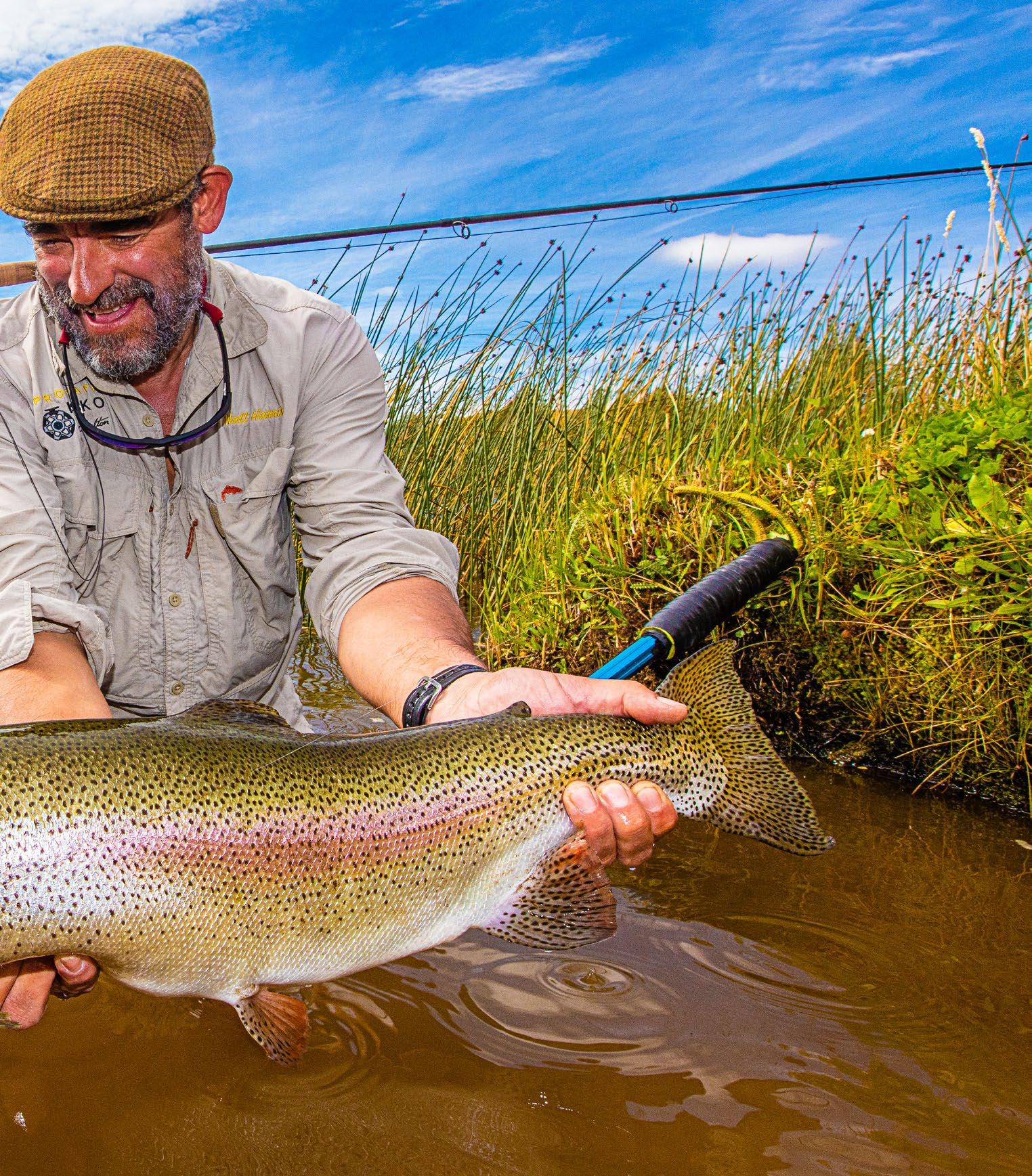

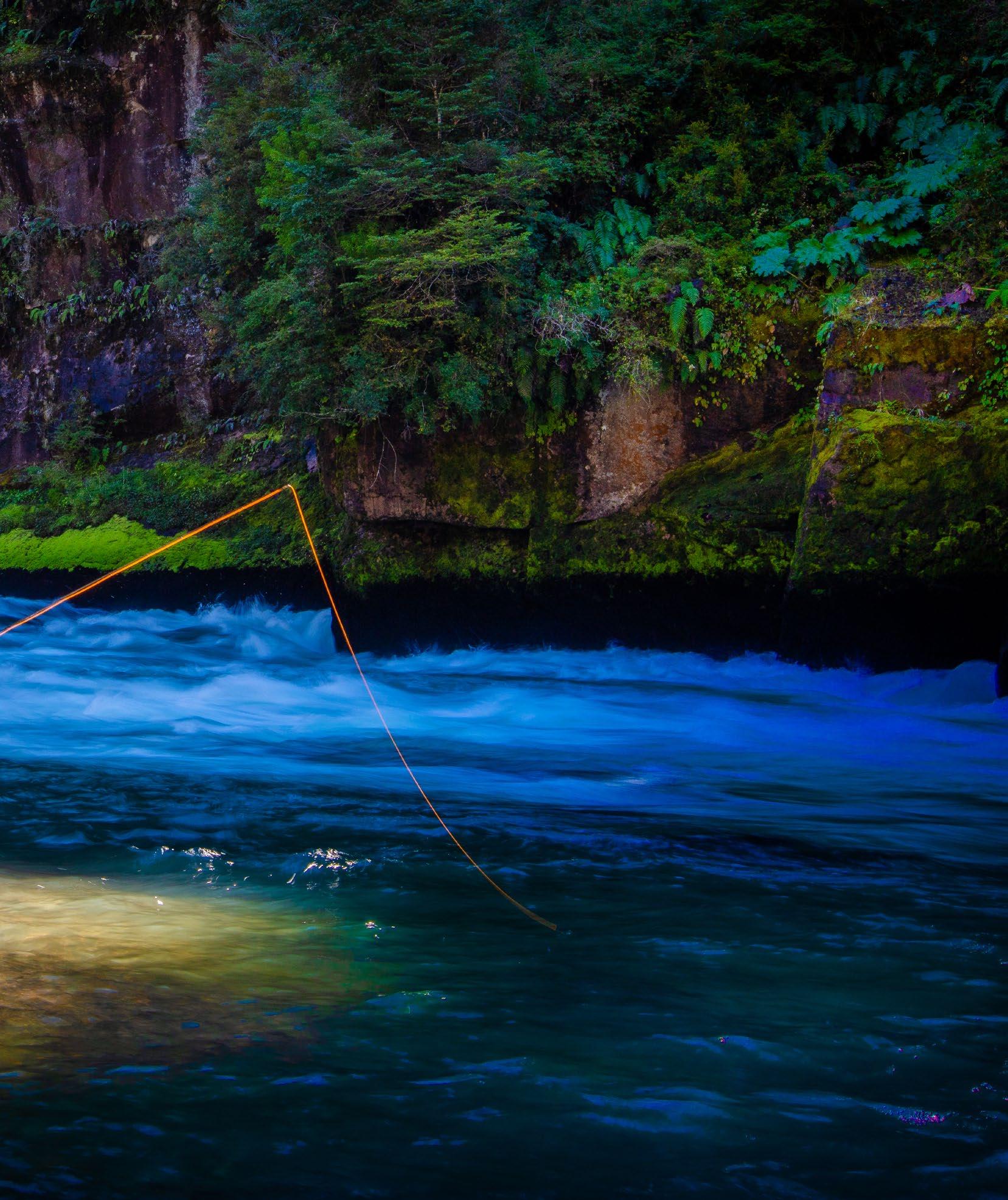
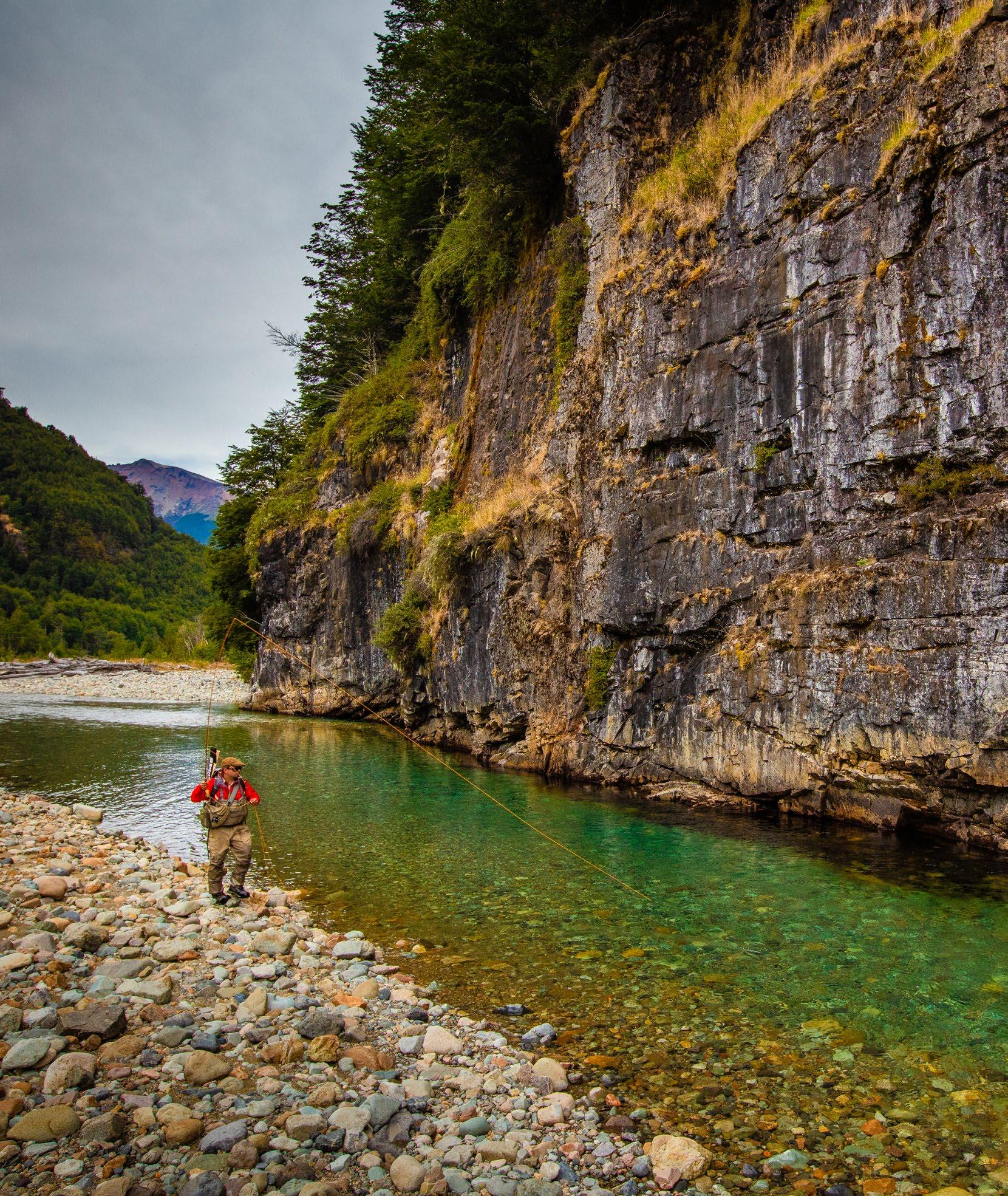
One evening we came back to the lodge late to hear that another angler, Loyd Wilson had caught a big fish from “Hero”. I tracked Loyd down to congratulate him, and as he showed me a video of the big, beautiful fish coming to the net, I saw the fish dis gorging a clutch of tiny baitfish. I knew I was looking at part of the puzzle. I had to go back one last time.
Eduardo read my thoughts.
The return
On my penultimate evening at the lodge, we enjoyed a raucous party. The season was drawing to a close. After a delicious “Asado” of butterflied local lamb, we listened to a talented local band that captivated us all with an ir resistible, tight set of bewitching Chil ean folk songs. As the band packed away their intriguing array of guitars and charangos, we thanked them for a great evening and repaired to the outdoors, where we drank yet more excellent Malbec and Carmenere and told increasingly tall tales under the stars. Laughter echoed across the lake until late into the night. Then, after the other guests had shuffled off to
bed, Eduardo and I sat out under the Southern Cross once again. My host took a long draft on his “tinto” and asked with his trademark grin what I would like to do with my last day. He already knew the answer.
I woke late - 8.15 am. My head was thumping with the absurd gallons of Malbec, the countless Pisco sours and the late, late night. I’d forgotten to set my alarm. Bright, brassy sun shine streamed into my lovely room. I squinted through the blinds and a bright, bluebird day greeted my eyes. Not a cloud in the sky. Lousy weather for big sullen trout. Surely, I’d missed my chance.
I stumbled into the shower and dragged myself off to find some cof fee, cursing all the while.
Hayden and Noah had both packed their bags and I had bid them both a fond farewell the previous night. Great guys both of them, hard-working, excellent company and utterly passionate about their work. I’d miss them and wondered if my guide for my last day could match them.
Eduardo looked bafflingly brighteyed and fresh, and he grinned at my bleary-eyed attempts at casual morning banter. I was clearly a lit tle the worse for wear. He told me that my guide was Christian. Eduardo and I had fished with him a few days before: a local man who natu rally and effortlessly exudes a calm confidence. I liked him immensely, and a faint flush of optimism lifted my mood. I swallowed the last of my coffee and we loaded the truck.
Fry patterns for the win?
“Hero or Zero” shimmered in the bright, mid-morning sun. Utterly beautiful. And surely hopeless for trophy trout fishing.
Christian suggested a big beetle pat tern but I had already formulated my plan. I fished out a box of fry patterns from back home in England. I tied in a dropper eight feet from the end of my eighteen-foot leader, made from a level length of strong, supple fluo rocarbon in 10lb breaking strain. I tied two “Mylar Fry” patterns, simple floating imitations that mimic small dead fish. The flies were pretty
much the size of the fish that I’d seen Loyd’s fish disgorge. I felt a small burst of confidence when Christian confirmed that he’d never seen any thing like them.
I doubt whether the trout of ”Hero or Zero” had either.
For two hours, Christian rode me around the lake in the little pontoon boat. I pitched those little fry patterns back to the shore, into every little bay and every gap in the reeds. One spot kept drawing me back. Most of the lake is impenetrably black and deep, but one small corner shelves more gently into shallower water, where the bottom is just visible.
On our second circuit of the lake, we were just approaching the spot when a huge head broke gently through the surface. Blink and I’d have missed it. But I saw it. And so did Christian. A rainbow trout from beyond my wild est dreams. My guide gently implored me to swap out my strange English flies for the classic Chilean staple - a big foam beetle - but I politely de clined. I had such a strong hunch.



Hadn’t these fish seen a million big foam beetles? And besides, wasn’t Loyd’s fish full of those little fry not so different from my flies. We covered that little bay exhaustively for fully forty-five minutes. Nothing. Fi nally, I allowed Christian to talk me into trying the big beetle. I pitched it across the bay, but I knew it wasn’t the answer. These fish had surely seen the same pattern a million times. As we slowly drifted on round the lake, I thought about another approach.
The Minkie Snake
My good friend Martin Webster runs Selectafly, a fly company back in the UK. Martin is a talented lake fisherman and I’ve learnt much from him over the years. One of his patterns is known as a Minkie Snake, a simple but devastating tie that is essentially a simple two-inch silver/grey mink fur zonker strip tied on a tiny shank with a small trailer hook. Once wet, it slithers seductively and quietly through the water, and it has lured many unsuspecting trophy rainbow and brown trout for both Martin and myself from our English reservoirs. Big burly fish of three, four and oc
casionally five and even six pounds. But stocked fish. And nothing to compare with the huge wild fish that we’d seen an hour or so ago.
I fished a couple out. Christian wasn’t convinced, but once they were at tached to my leader and swimming in the clean, clear water, he seemed to reconsider. “Muy Bueno” he con ceded. We fished around the lake but in truth, we were just resting the spot where we had seen the fish. Finally, we were making our way back to wards it. I saw that the sun was start ing to slide into the west, and the tall stand of the Coihue trees that skirted the little bay was now throwing the water into shadow.
I tossed the flies into the bay and inched them gently back. Nothing. We worked our way around to the exact spot where we had seen the big fish rise. A big dead tree extended out from the bank, and its branches stretched down into the depths be low. It was a classic ambush spot for a big trout.





I cast my flies to the sunken tree, and as often happens, the flies hung for a few seconds in the surface film. A sharp pull on the line will normally sink them and get them swim ming sub-surface, and yet something about their vulnerable half-drowned appearance made me resist my usual practice and instead leave them static in the surface film.
The take
In a magical instant, what was surely that same huge head we’d seen hours earlier broke tantalizingly through the surface and oh so gently inhaled the point fly. I resisted the urge to strike and instead let the huge fish disappear back beneath the inky wa ters before lifting the rod smartly.
My heart leapt as the line cleared the rings and I had the fish on the reel.
It leapt again as the big trout skyrocketed into the warm Patagonian sun shine, and then skipped a beat alto gether as the fish dove down for the tree roots, and for a few awful moments was stuck fast. And then, suddenly, magically, he was clear and out in the open water.
I could see the fish down deep, raging wildly, but I was starting to get the upper hand. Finally, after a long battle, I had the fish up in the surface, and although it wasn’t really beaten, Christian shot his big landing net underneath it and lifted it skywards. It was ours.
In that special moment that all anglers know, I felt the solid resistance of the fish. It surged irresistibly down into the depths. Unlike anything I’d hooked in eight wonderful days. A big powerful brute of a thing. The adrenaline shot through me and as the line fizzed up through the rings, I prayed that no awful tangle in the running line would jam in the rod rings.
Christian rowed us into the shore, and I took a first real look at the fish. It was magnificent. Broad, brassy magenta flanks, peppered with black spots and with that special iridescent sheen that rainbows -especially big rainbows- possess. Its beady, indom itable eye seemed to glare up at me, and its huge spade of a tail barely fit ted into the outsized net.

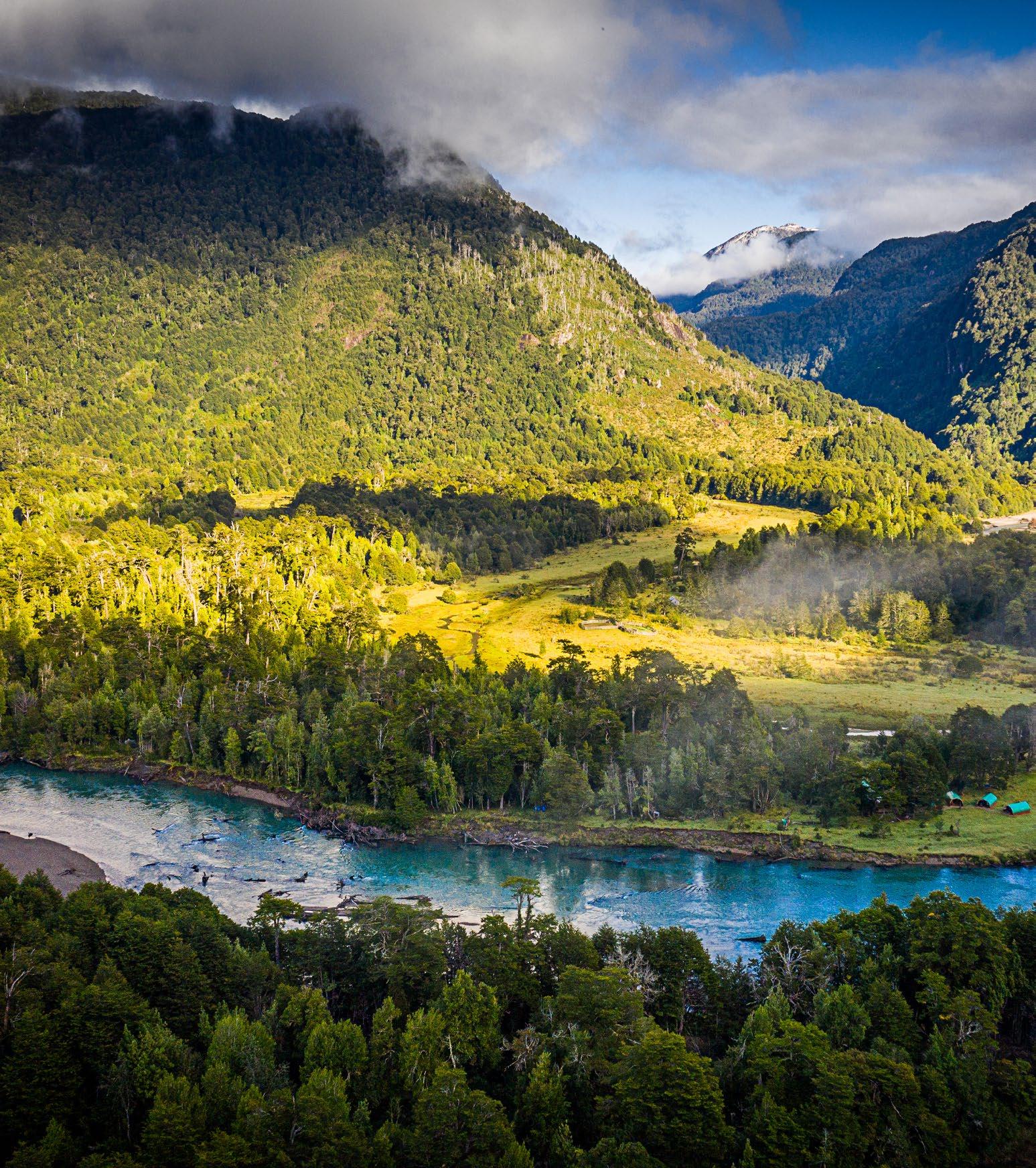
I wondered if the fish might make the coveted ten-pound mark. We’ll never know. We had no weighing scales. Chris tian estimated eleven to twelve pounds, although in truth I suspect the fish was just a shade under double figures. No matter. It was a magnificent fish, and it was the perfect end to a magical ‘tour de force’ of really special Patagonian trout fishing.
When we drove back into the camp, Eduardo was waiting for us with a cou ple of icy pisco sours. “Well,” he asked with that same charismatic grin, “Hero or Zero?” I didn’t have to say a word. One look at my face and yet again, my new friend already knew the answer. We both exploded with laughter.
If you love your trout fishing, beg, borrow or steal your way to Magic Waters Lodge. You simply have to go there. When you speak to Eduardo, ask him if you can fit the “River of Dreams” base camp into your itinerary. And do your best to fit in a trip to “Hero or Zero” too.This is trout fishing from beyond your wildest dreams.
http://magicwaterspatagonia.com/
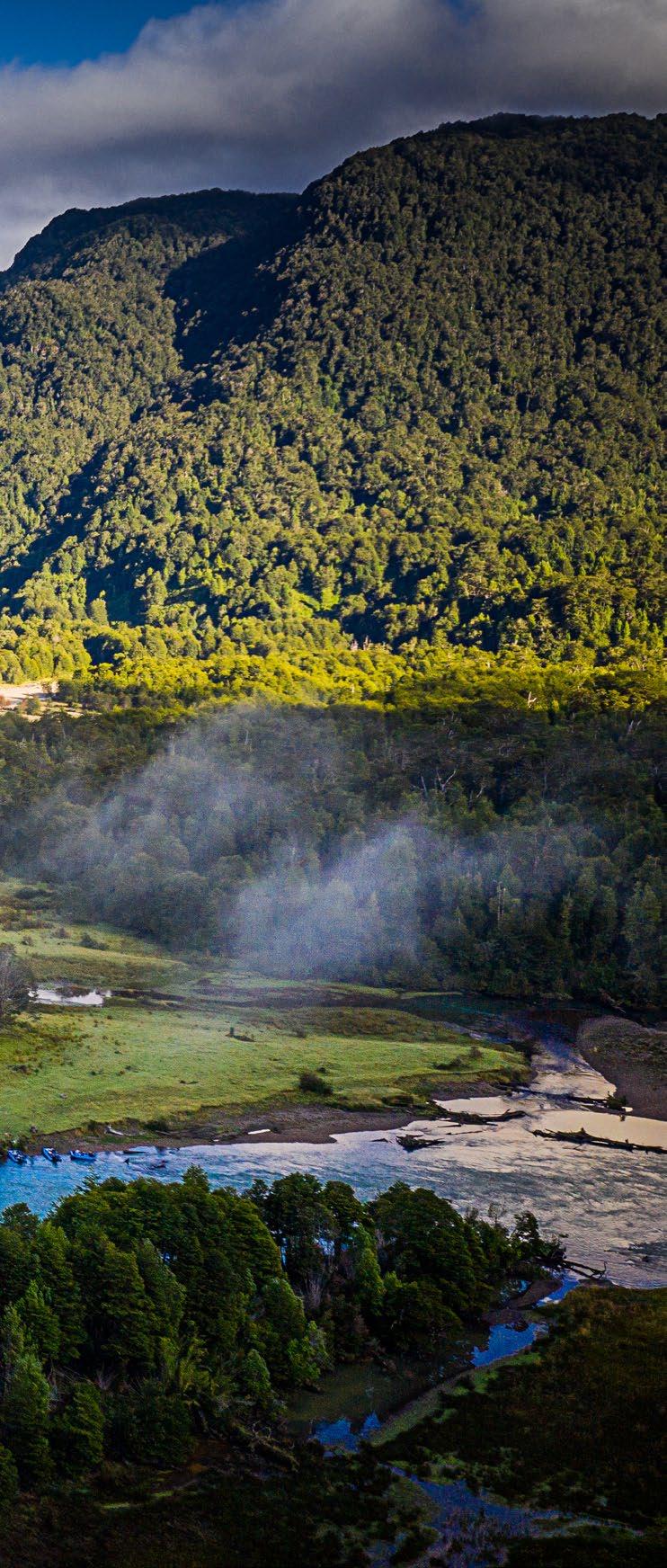
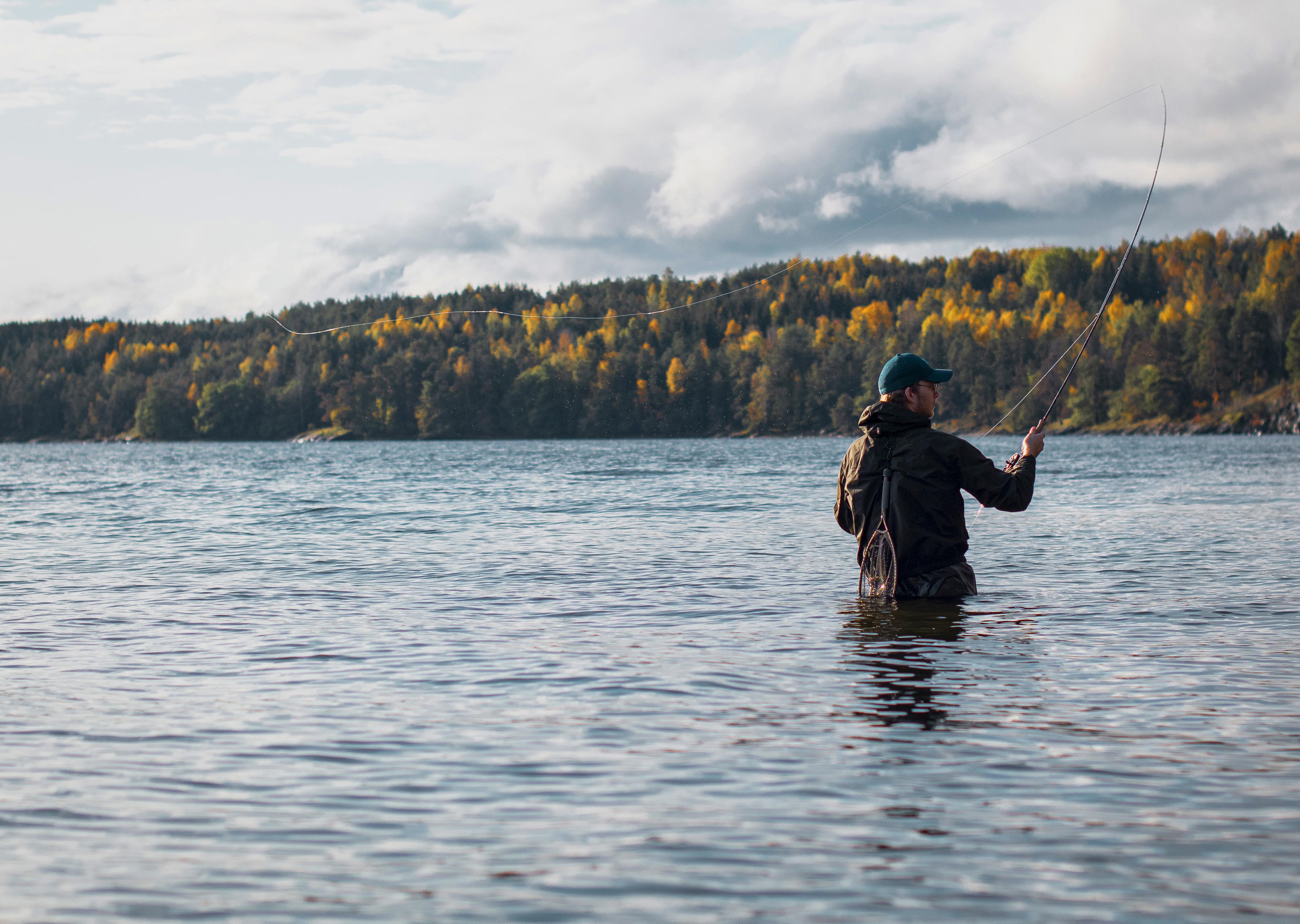
OUR HERITAGE. YOUR LEGACY. Coming soon

Montana Cutthroat Trout
In Search of Spirit Points
“F**%^$CK YES!!!!” had no sooner left my mouth in a scream at the same time as I sank to my knees with my arms outstretched above my head in a remote creek of Montana. The cutthroat trout of a lifetime had just been scooped in the net. It took a number of minutes to actually land this mon ster and many more minutes to get to the riverbank where I’d make that fateful cast, so let’s rewind the story a bit.
By: RYAN FORBUS

Mary Parker, Paige, Caleb, and I had been road tripping through Idaho for five days, working our way east from Boise. Base camping out of St Anthony for the previous couple of days, we decided to shift locations and check out a spot across state lines in Mon tana. A quick change of scenery, paired with rumors of big trout and other sought-after species, made it an easy sell to the group. We loaded up our trusty land yacht, a white Suburban, with gear and headed north before the sun hit the horizon. Spirits were high, all of us giddy with excitement on what the day could possibly bring.
After many highway miles and quite a bumpy, dusty stretch of road, we ar rived at our dropped pin only to find we weren’t the only anglers with big trout aspirations. Five cars greeted us in the pull out. There may or may not have been a few choice words and phrases muttered at the sight of those vehicles, so with spirits slight ly diminished – but not extinguished – our crew cautiously pulled on our socks and gravel guards which at this point in the trip had been become quite pungent – close to a mixture of
wet dog and foot odor. Next, we laced up our wading boots and rigged rods. With everyone ready, it was ‘go time.’
Murphy interrupts the plans
In my infinite wisdom and Google Earth sleuthing, I had devised a plan to take a berm of sorts out through a “field” to easily and quickly access the river. It’d allow us to work upriver and back to the car, avoiding the oth er anglers who had beaten us. Unfor tunately, Murphy decided to make an appearance. Murphy of Murphy’s Law. For those not in the know, Murphy’s Law in its simplest form is... “if any thing can go wrong, it will.” What ap peared to be a “field” on Google Earth, quickly became a quagmire – full of boot-swallowing mud and hoards of hungry mosquitos. ABORT ABORT. We backtracked and got outta that hell hole as soon as possible.
With my plans in shambles and my ego a bit bruised, we headed the way we had seen some fellow anglers strike out. “Just great!” I thought to myself, “Can’t wait to be the second person to fish through runs all day.” Spirit points -5.


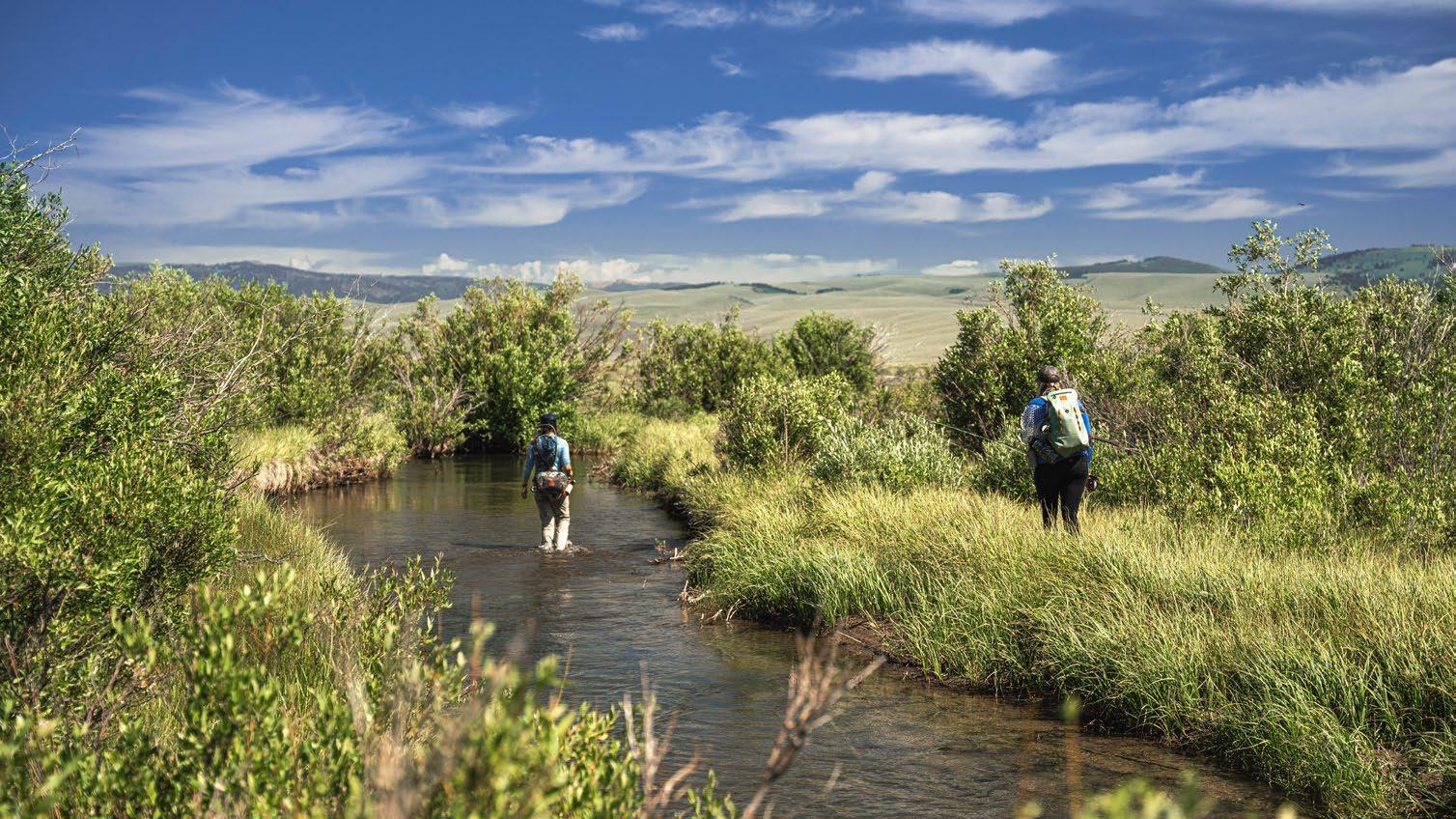

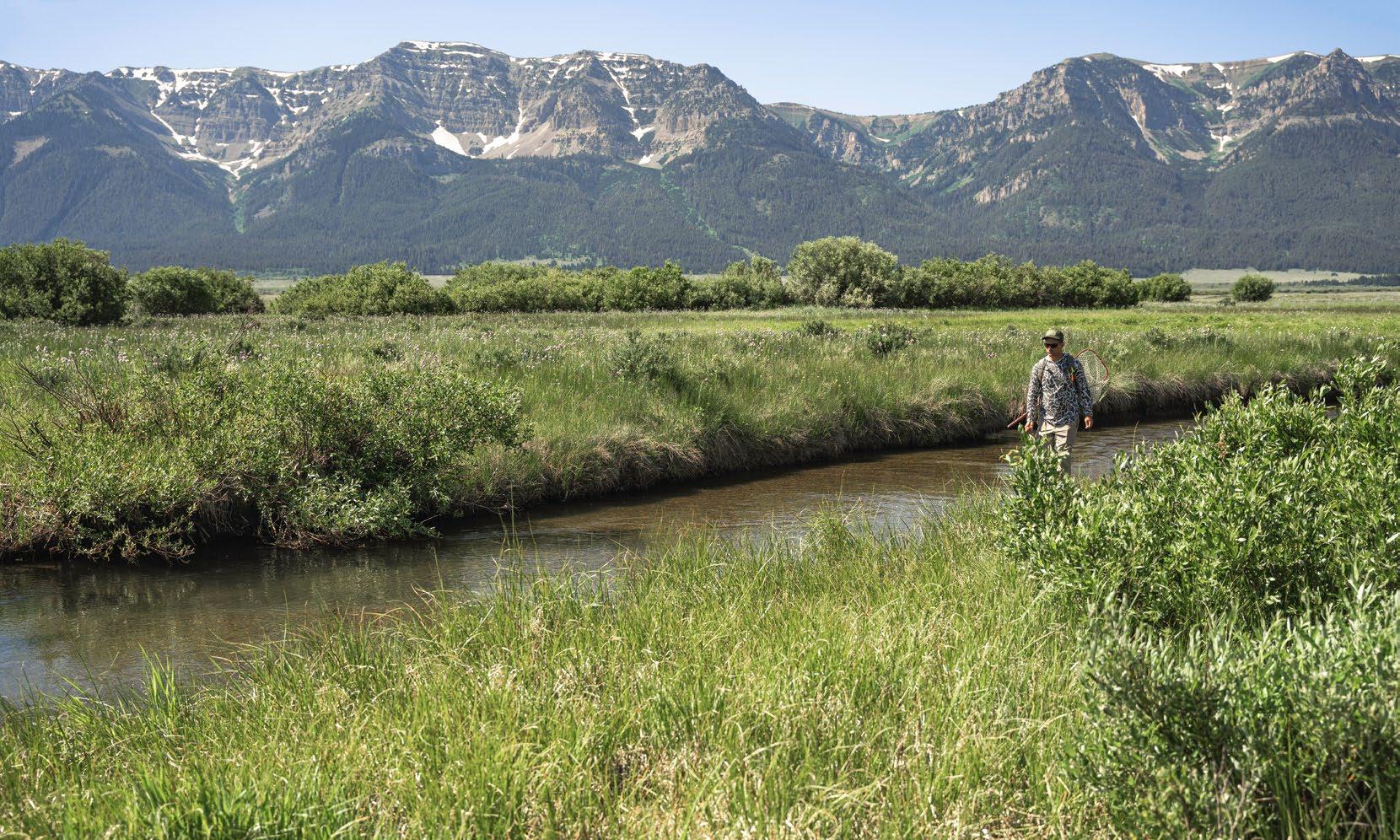

Down a winding trek
The four of us started the winding trek out and around the long, deep bends of the creek, full of anglers of course. In a bit of frustration, I de cided to lead our party further and further downstream to avoid the crowds and hopefully secure some untouched water.
Eventually, after a long slough in wet boots and with the warm summer sun on our backs, I deemed our death march over. We cut in and found the creek. Frigid and clear, the water revived all of us within seconds.
Finally, it was time to lock in and start fishing. Stealthily, I strode to a small bend with a deep run up against a cut bank. Prime habitat. I pulled out some line and threw a cast up and let it drift through the bend. I was fishing a dry-dropper-setup and within a couple of seconds, my top fly shot below the water line, SET, fight on. After a brief fight, I netted my first grayling. One of the species we had come here to target. Spirit points +10.
After a quick photo and some ad miration, the fish was released back unharmed. Over the next couple of hours everyone was on the board. Grayling had been caught by every one and Caleb had landed the first decent cutthroat trout of the day. With an epic backdrop and a gor geous creek, the photography side of my brain had kept me behind the lens most of the day. My 6 wt connected with that early grayling but that was the only time I had a fly rod in my hand – part of the eternal struggle of a photographer who also enjoys wetting a line.
Time to get serious Eventually, just around midday, I was pleased with the content and handed over the camera to my wife, Mary Parker. I told her that I was going to sneak up to a little point ahead that had a deep run with cut banks on either side before making a right into a slight bend. It looked absolutely perfect.
I snuck my way up through the wil lows to a small strip of grass where I kneeled down.

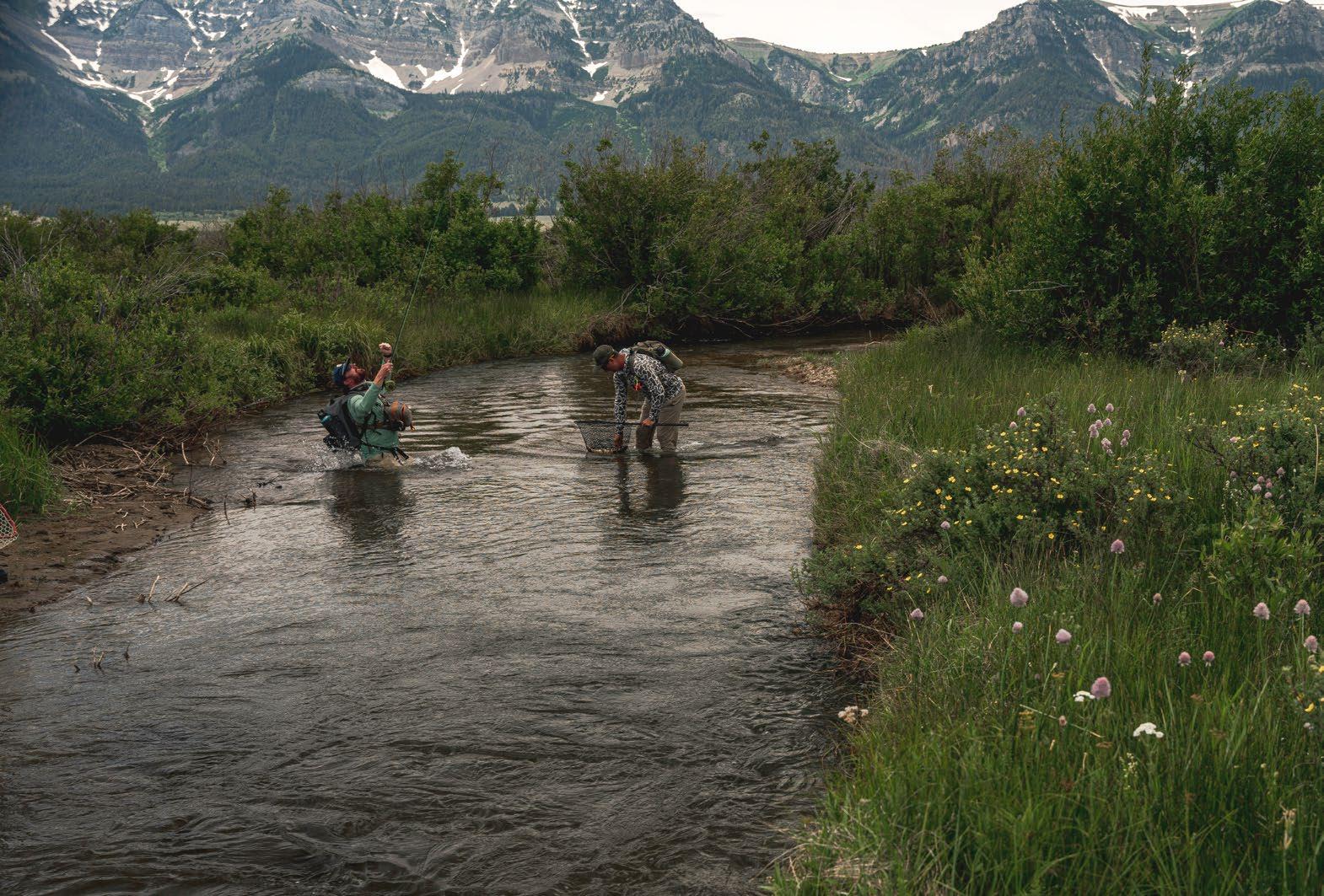

I stripped out a bit of line and cast up to the start of the run and let it drift back down taking up line as my flies neared me. Nothing. Un deterred, I cast again and let it float through again. About three quarters of my way through the run my top fly shot below the surface.
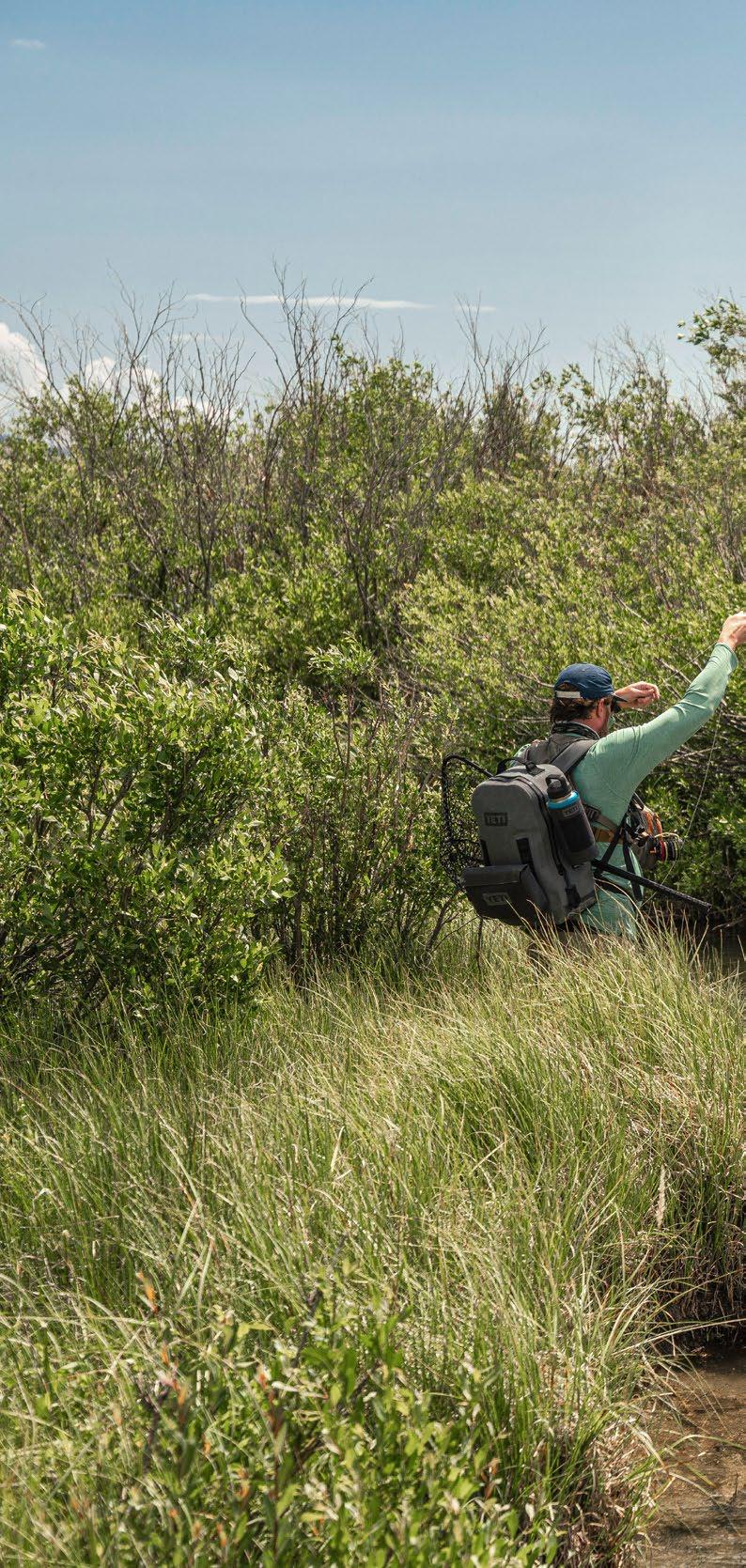
SET. HOOKED. FISH! It felt big, but with the water a bit off color and deep and I couldn’t make it out. But I knew from the way it was pulling that it was no dink or grayling. Mary Parker was shooting photos; I could hear the shut ter clicking off. I looked back over my shoulder. Caleb was rounding the bend and after my piercing yell to “Grab the net!” he quickened his pace, making his way along side me.
I was still kneeling on the bank above the run at this point and the fish was staying out in the middle of the run. Caleb suggested I move off the bank and out into the mid dle of the creek to a submerged gravel bar to help fight the fish.
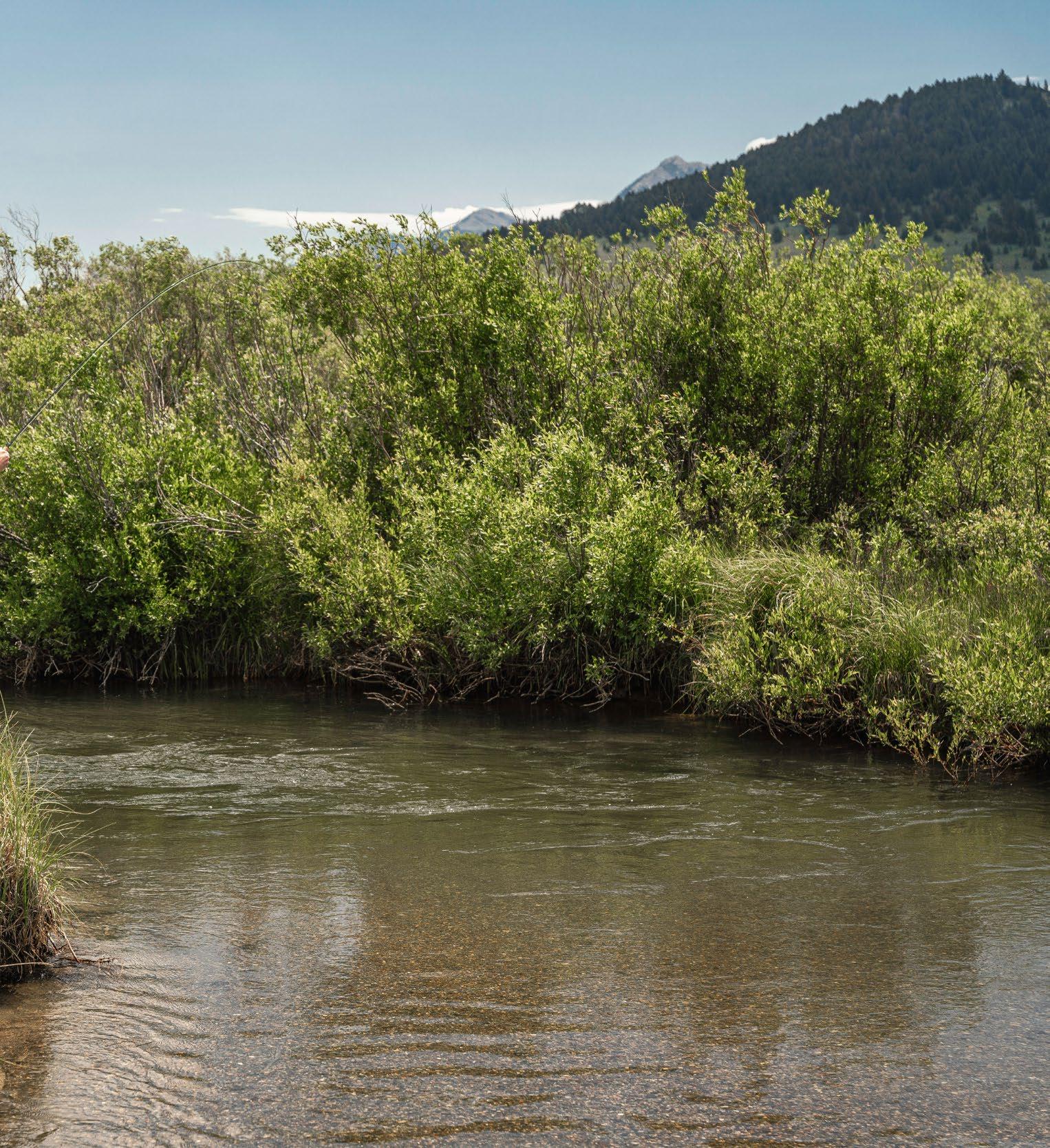
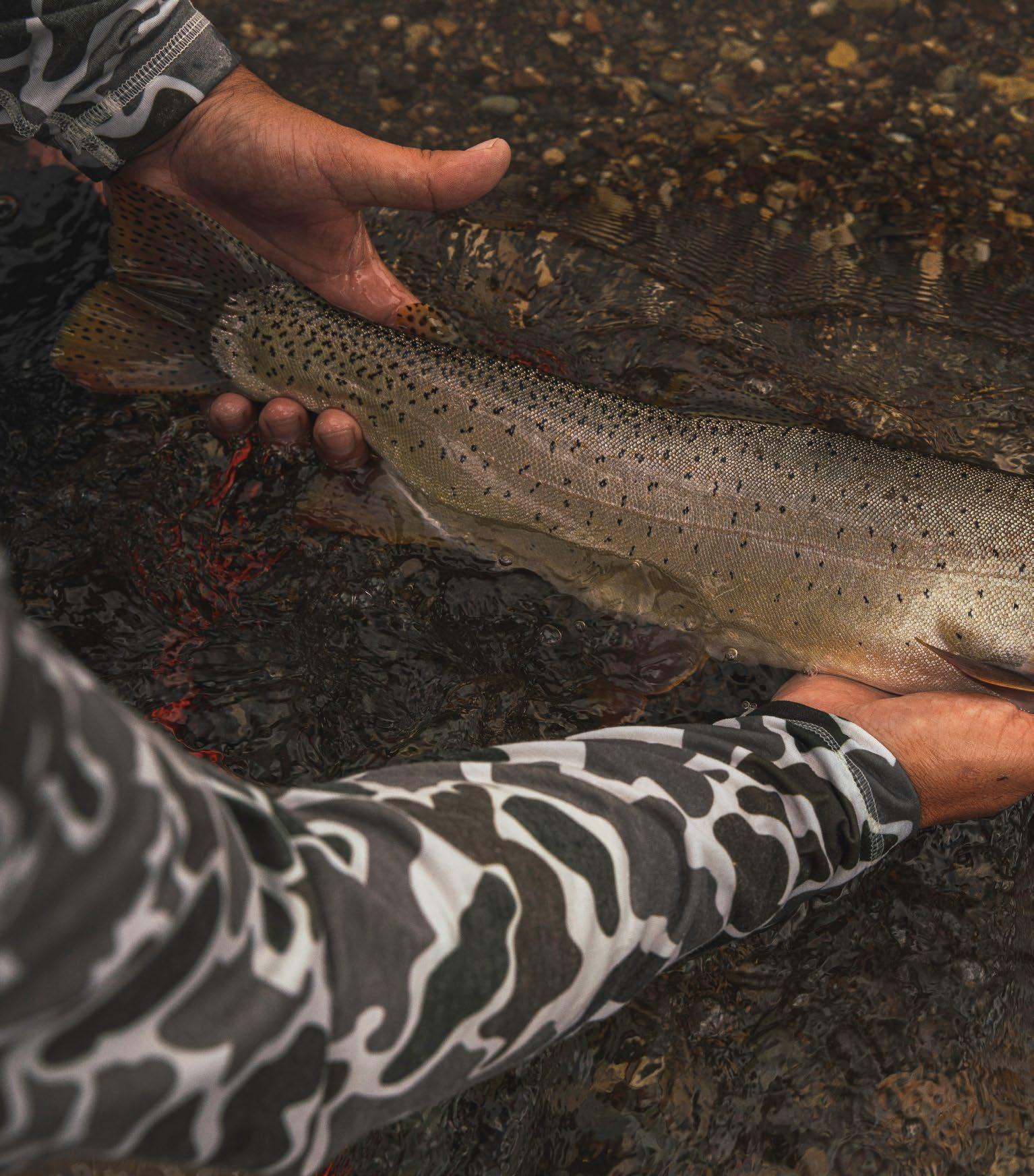
I dumped off the side and worked my way over to the gravel bar. Making sure my rod tip stayed up and my line stayed tight. As soon as I stepped foot on the gravel bar, I caught a glimpse of a BIG tail of a Cutthroat through the stained wa ter. The size of which we had heard rumors of. Spirit points! +50.

Murphy reappers
That’s when my dear friend Murphy decided to make his second appearance of the day. As quickly as I had caught a glimpse of my prized fish, it took a drag-screaming, heart-pumping run upriver and under a cut bank that was choked with willow. Applying pressure to steer the fish away was ineffective, as my leader clear ly indicated he had run up under the willows. My heart sank. Spirit points -50.
I tugged gently this way and that, with hopes of coaxing the fish out into safe waters. No dice. Spirit points -25.
The peanut gallery on the riverbank of course had plenty of suggestions. Try this, do that. Spirit points dropping quickly and frustration setting in, I heeded one of the suggestions. Skirt up river right to try to get up above the fish. I slowly took in line as I moved up the bank while my feet slowly sank into soft river muck. Knee deep, thigh knee, waist deep, belly button deep...

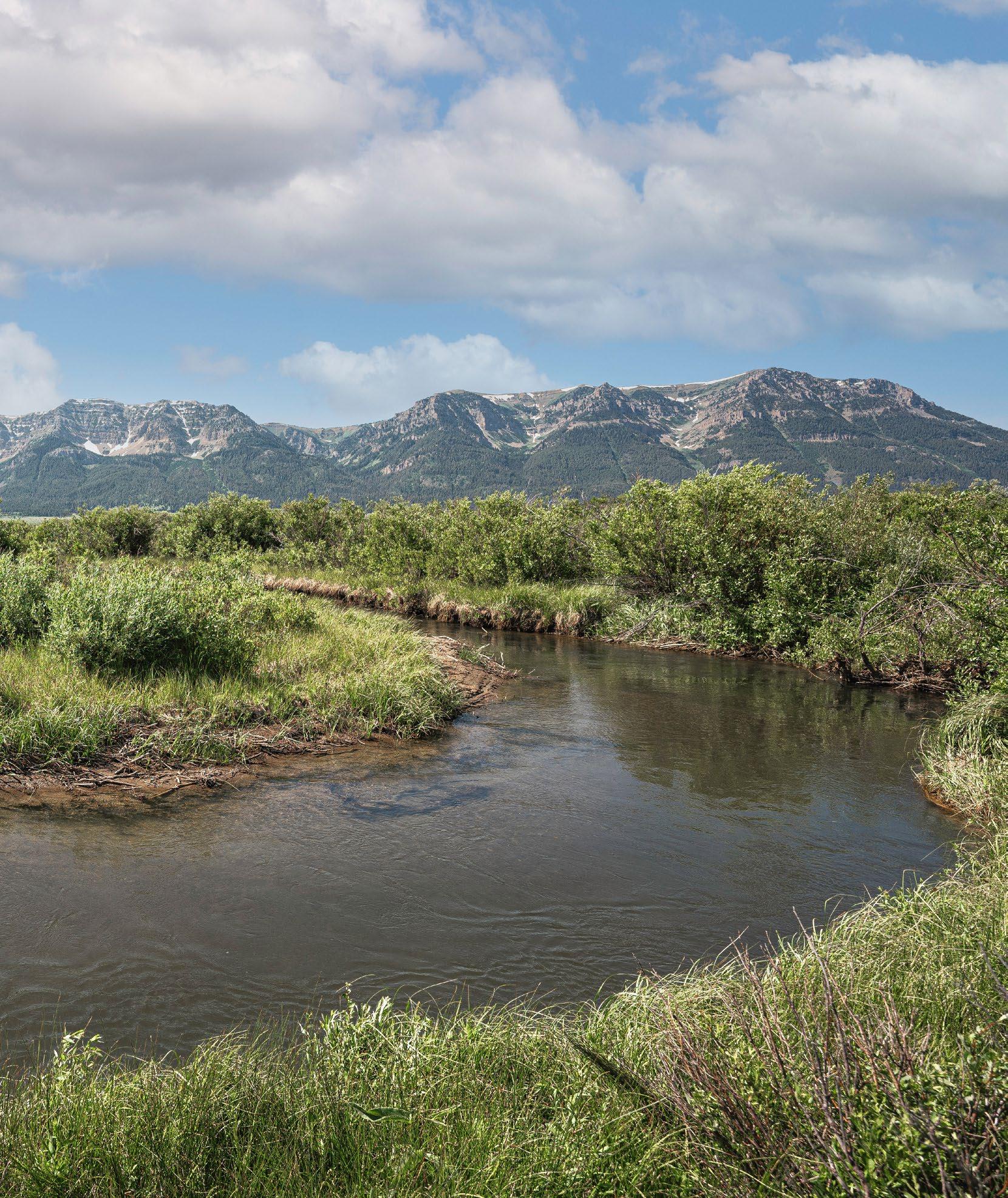
I vaguely remember someone asking
“Is this a fish worth swimming for?”
I was a bit too preoccupied to really contemplate that question at the moment. Luckily, I didn’t have to.
One last try
I finally tiptoed my way (or maybe escaped out?) out of the muck and onto solid river bottom. Again, I ap plied some pressure this way and that way. No dice. Sh!t. Caleb suggest ed I try and stick my rod underwater, moving it around with hopes of it freeing things up. No dice. F%ck!!
At this point, all remaining spirit points had been diminished and the thought of breaking it off crossed my mind. I hadn’t really felt the fish pull since it entered the willows. I guess it was time. I tried my damnedest. “One last try,” I muttered to myself. Again, I plunged my Sage R8 under water and pulled this way and that way. All the sudden the line popped off whatever it was wrapped on and magically the fish was still on. HOLY SH!T. Spirit level +50.
toed back through the muck, apply ing pressure to keep him from run ning back up under the willows. Fi nally, I was back to the gravel bar. No sooner had I exhaled a breath of relief before the fish started bull dogging downstream towards Caleb and I. BLESS IT. During this down stream run, we were gifted our first full glimpse: a beautiful, large, color ed-up Cutthroat. Spirit points +100.
Pressure builds
Cheers came from the peanut gal lery above. To everyone’s astonish ment, the fight was back on. I tippy
Heartbeat increases to well over 150. “Breathe, Ryan. Breathe,” I tell my self. We spin around and chase af ter it downstream. Finally in a good stretch of water – Gravel bottom. No willows. Clean banks. “THIS MIGHT HAPPEN” I thought to myself, “FO CUS.” For another five minutes, the fight lasts with him taking runs up the bank and with me working him back down. Still plenty of fight left. Still hugging the bottom, Caleb sug gested I apply a bit more pressure to try to tire him out. Nervously, I slowly started increasing upward pressure. Please don’t snap, tippet. Please don’t snap. After a couple more nail biting minutes he started to tire, drifting up towards the surface.



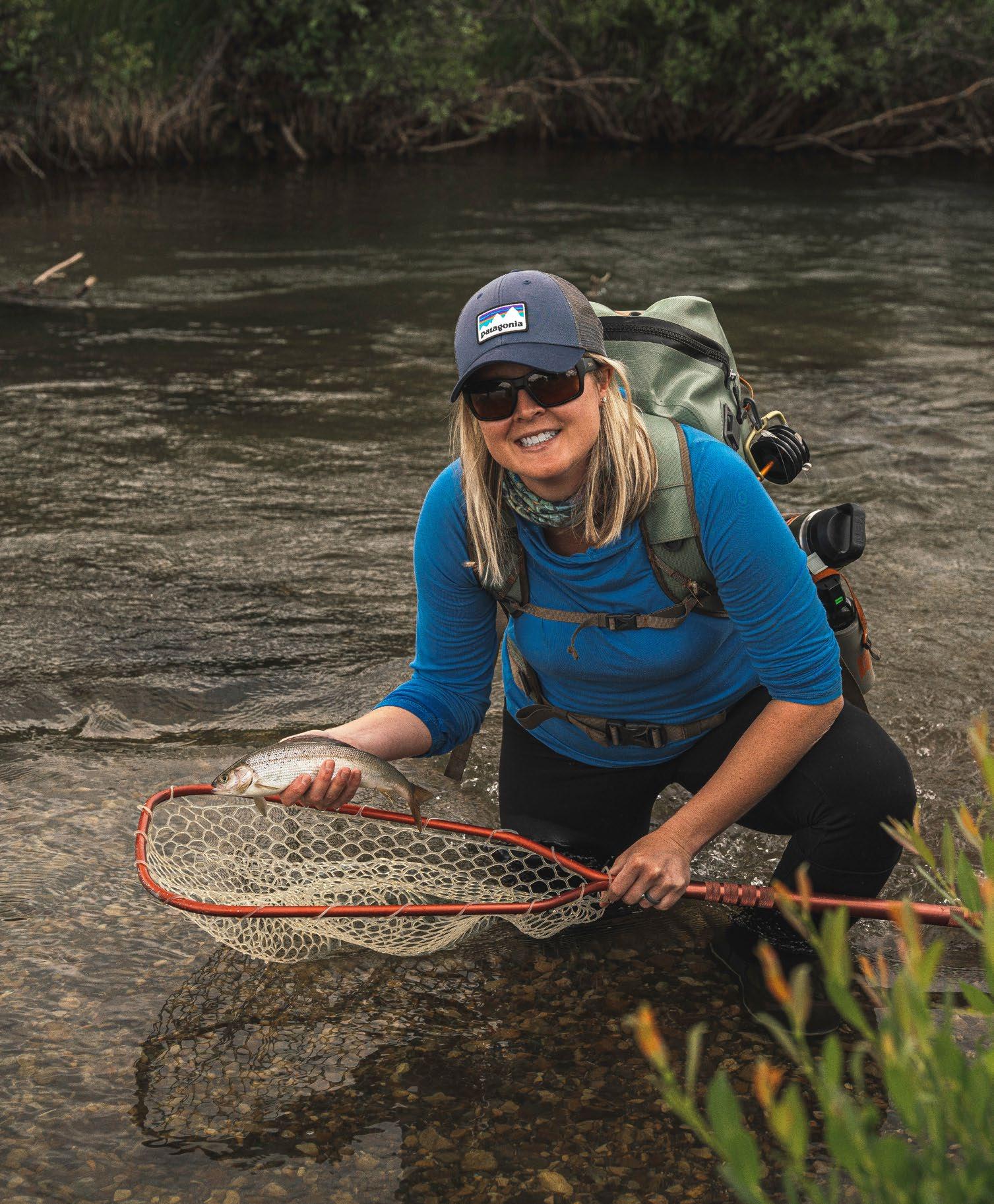

HOLY SH!T. Breathe.... After another min ute, Caleb started easing up behind him and then stabbed down the net, scooping him with all the focus he had in him. At the sight of splashing in the net, I blacked out a bit – a blur for a number of seconds but soon back to reality with hands in the air.
In
the net
“F*%^&CK YESSS!!!!!” left my mouth as I dropped to my knees in the middle of the creek. I was in disbelief. I could not believe we got this fish in the net after all the chaos that had ensued. Caleb unhooked the fish, and I handed him my rod as both hands went to my head in disbelief as Caleb slow ly walked the net over to me and I got my first full glimpse. UNREAL! Cutthroat of a lifetime. 22” on the tape. In a setting that is hard to put into words. Trip made. Heart beat HIGH. Cares in the world ZERO. Spir it points +500.
Fist bumps and high fives. A few photos. Back to the water he went. “Thanks for a memory and a story of a lifetime, ole chap. You put up one helluva fight,” I thought as he slipped away in the depths of the cold steam. “Thank you,” was all I was able to say aloud since I was totally drained, but also totally filled with gratitude and awe.
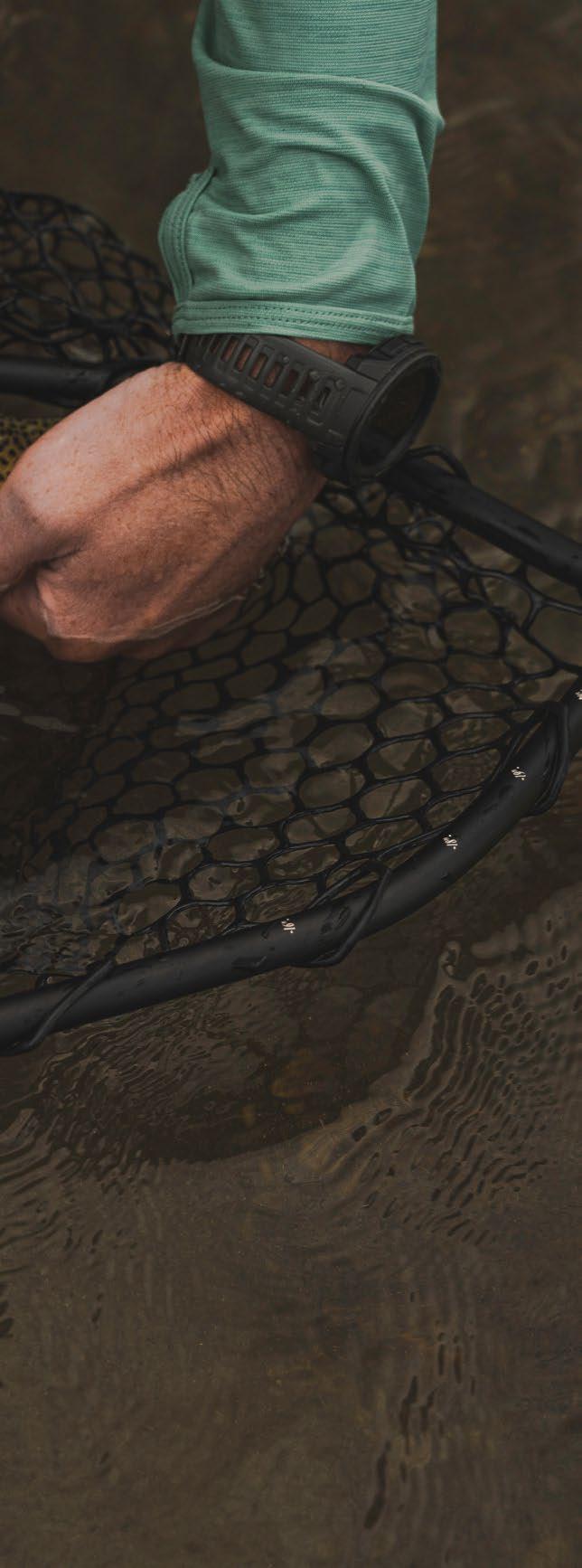
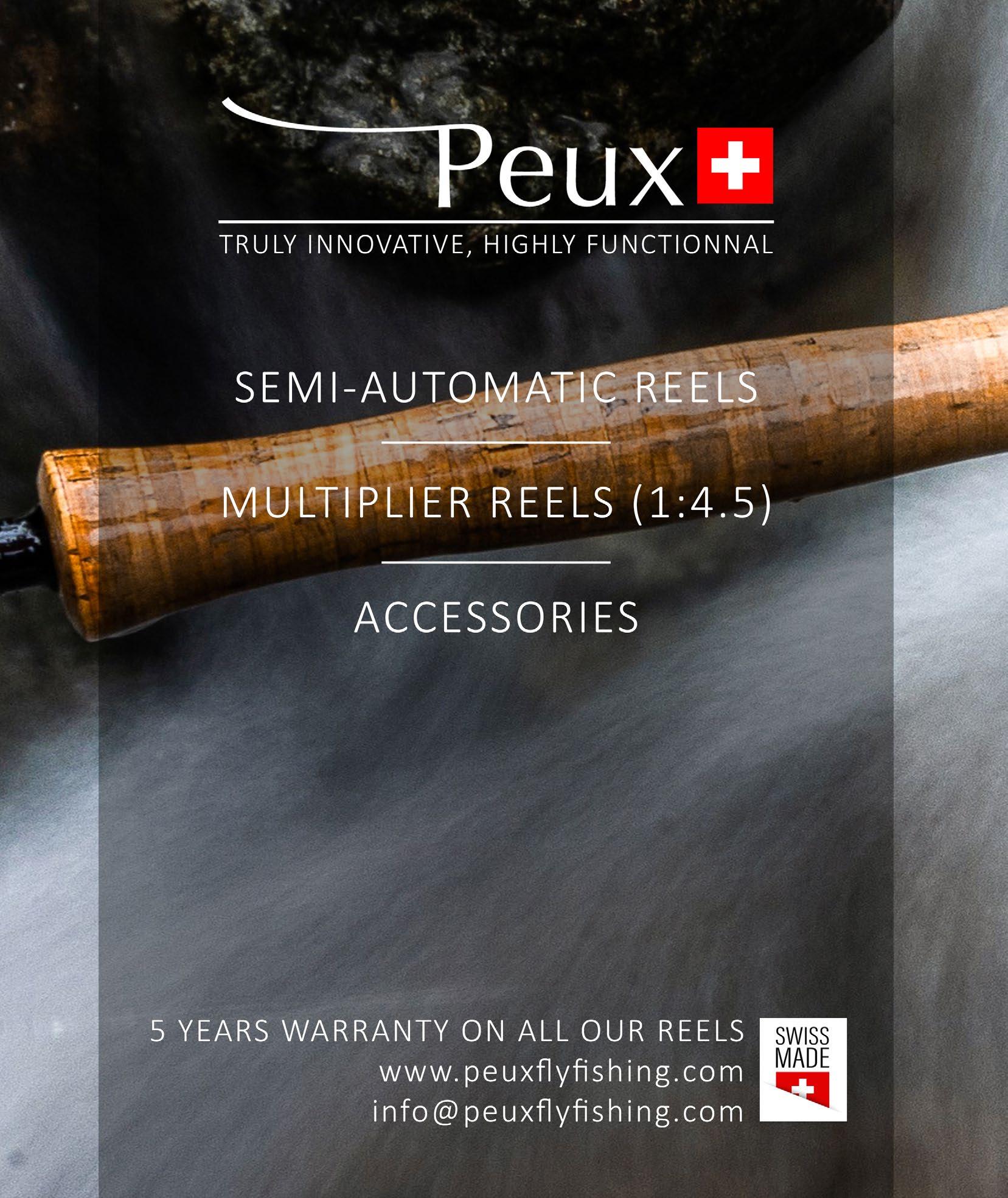
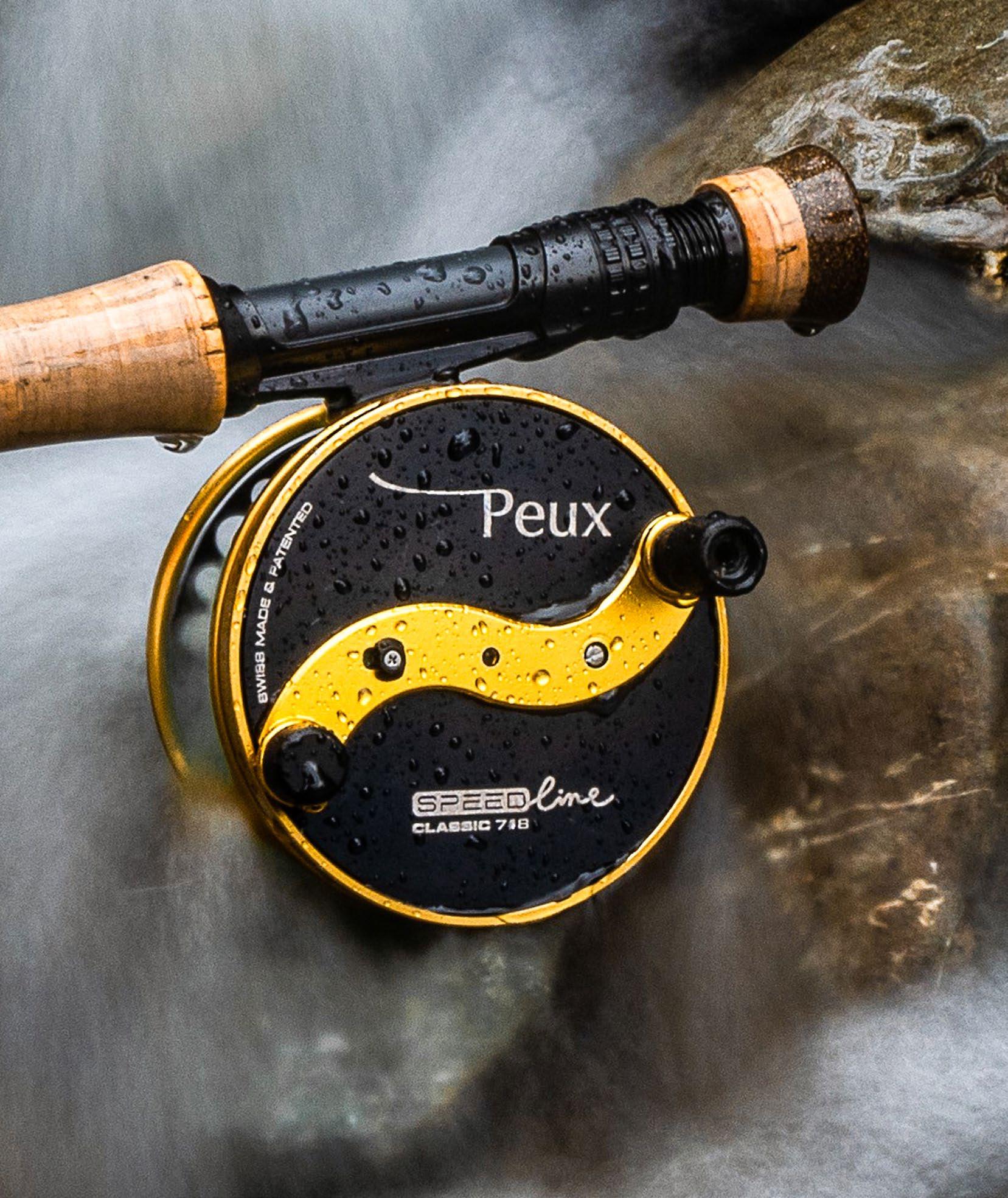
THE RIO GALLEGOS:
5 Must-Know Tips for BrownSea-Run Trout
The Rio Gallegos, located in Southern Patagonia’s Santa Cruz-area, is a world-class fishery for sea-run brown trout (and, not least, resident brown trout). With more than 350 kilometres of productive trout habitat and massive, chrome sea-run brown trout that start running in late October, the river has become a bucket list place for trout fish ermen across the globe.
By CLAUDIO MARTIN Photos by TRES AMIGOS OUTFITTERS

If you’re planning to fish the Rio Gallegos, here’s a few things you may want to know. And if you’re not, please con tinue reading anyway, as many of these tips just might apply to your local (sea-run brown) trout fishery too.
The Rio Gallegos is a diverse and exciting fishery that is known for its rugged and harsh scenery, gusting winds, and challenging fish. It’s a place where everything is test ed to the maximum: Your tackle, your stamina, and your skills – but the rewards are great. You’ll need to reset and rewire your previous skill sets and adapt to the river to connect with Rio Gallegos and its powerful migratory fish. However, once you’ve learned how to catch fish on the Rio Gallegos, you’ll find that you’ve become a better and more versatile trout fish erman. And you’ll be able to reap further rewards once you return to your local rivers.
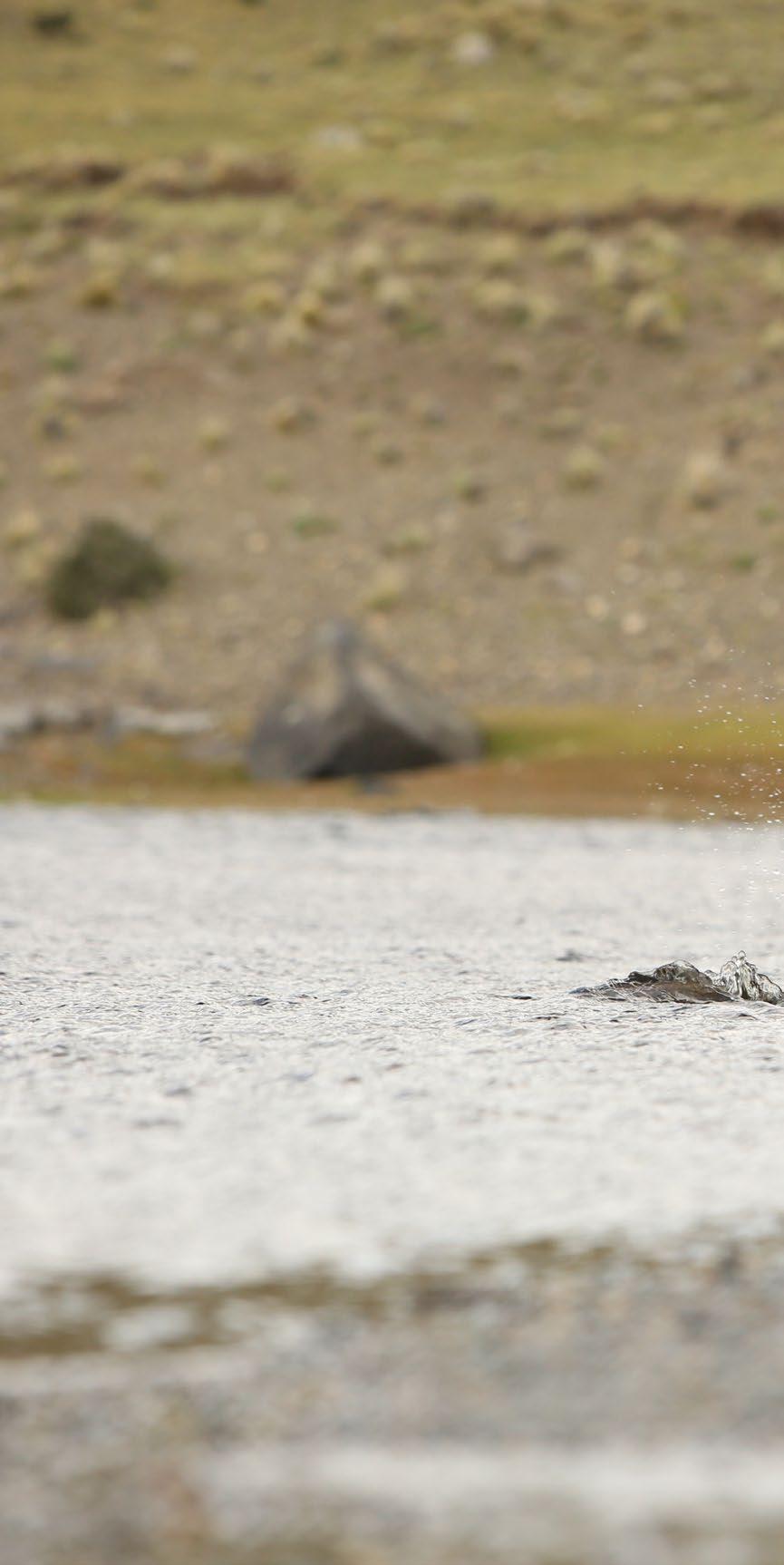

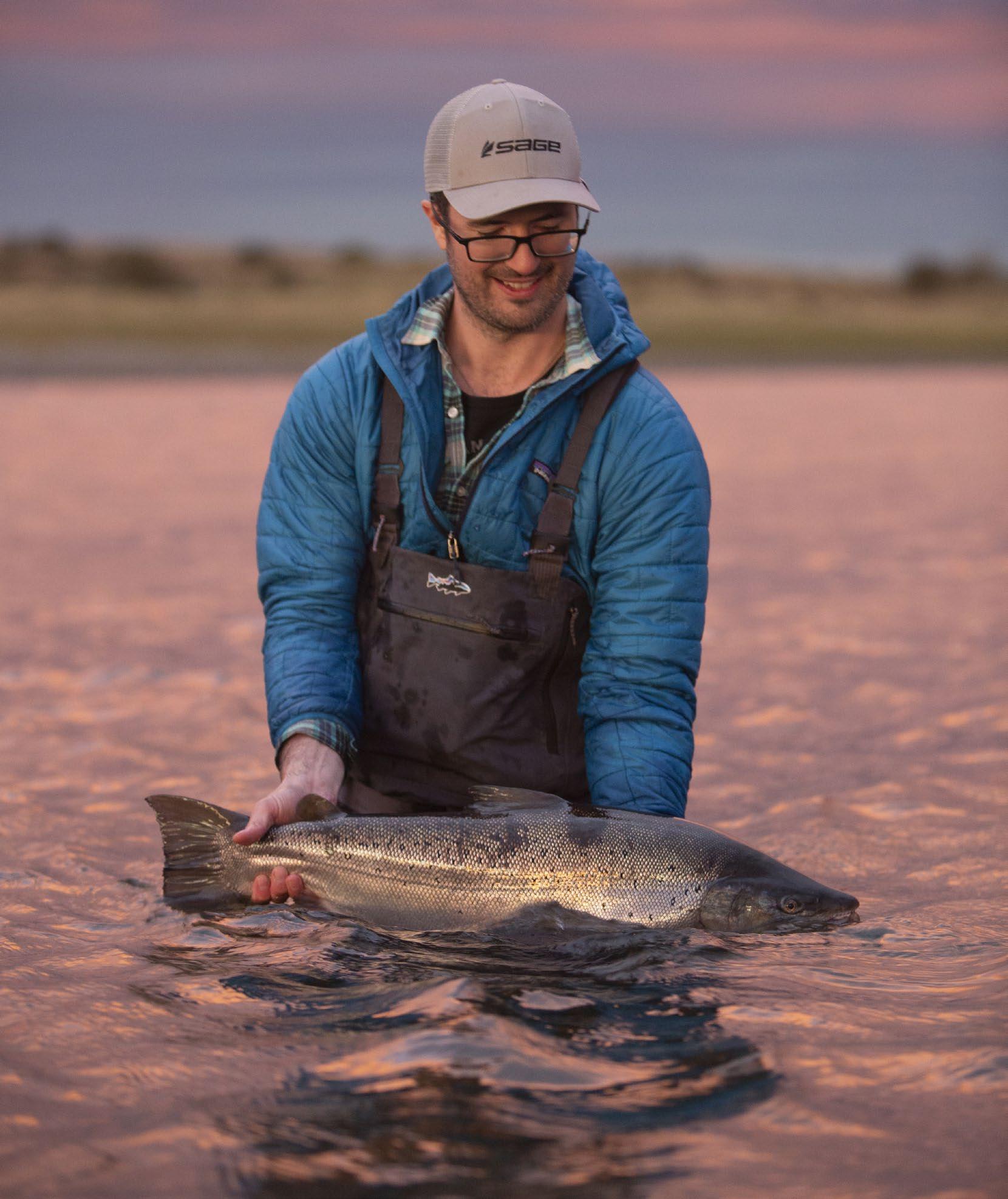




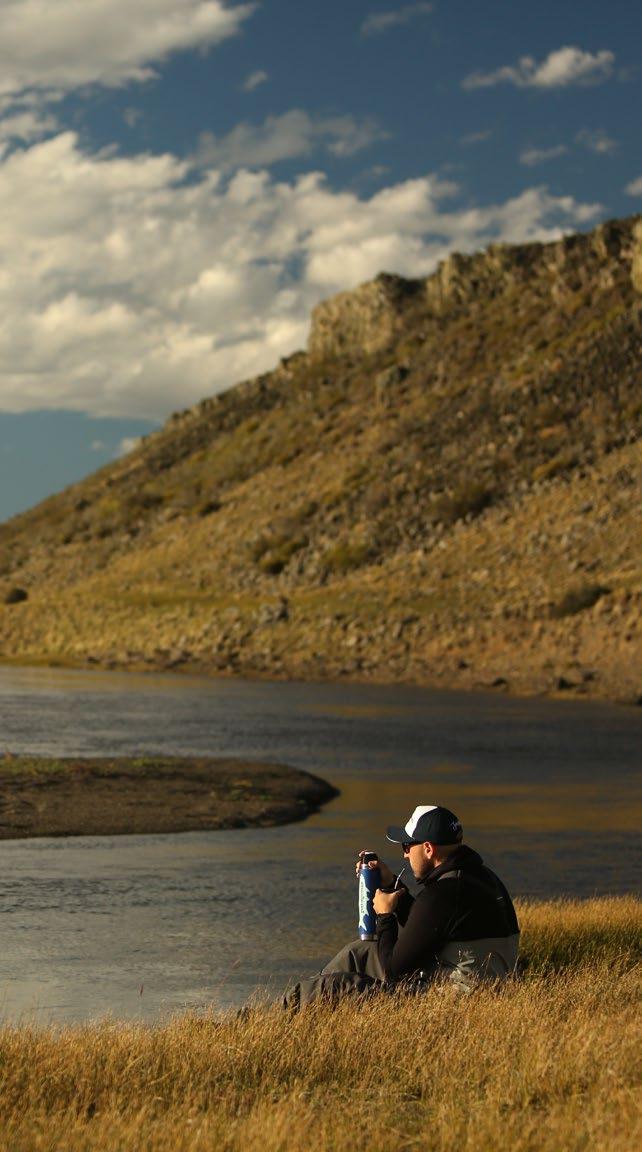

1) Adaptation is a must
Every spot, bend, run, and pool on the Rio Gallegos is different. The an gle, the wind affects your cast, also varies every time you venture to a new fishing spot.
rods and get proper casting instruc tions if you feel that it’s necessary.
There’s room (for overhead casting) behind you in most places, but not always. There are small, crammed spots, but also large, wide pools, where you’ll need to reach further in order to cover the water just right.
Fly fishing for sea-run brown trout on the Rio Gallegos is about cover ing water, and after a full week of fishing and adapting to the windy conditions, your fly casting will inadvertently improve. Then, you’ll need to remind yourself that the best fly cast isn’t necessarily the longest fly cast: It’s the one that pre sents the fly, where the fish is – at the right depth and speed.
2) Your setup is key!
The Rio Gallegos demands a solid cast, but also the skills to adapt to changing casting scenarios. So do yourself a favour, don’t come unpre pared. Practice switching hands or casting over your shoulder – with a backhand forward-stroke and drop, so that the winds don’t determine where you can- and cannot fish. Learn how to effectively cast and fish both single- and doublehanded
You’re probably going to say; “the setup is always key”, but in the case of the Rio Gallegos there’s very lit tle margin for error. Especially if you’re fishing it for one just week, you’ve got to maximize your chances of success.
As a suggestion, the combination of a 9 - 9’6’’ 7-weight single-handed rod and a 12’’-13’’ 7/8-weight spey rod is the right choice. In both cas es, medium-fast action blanks make life easier, especially during those windy days.
“Do yourself a favour, don’t come unprepared”
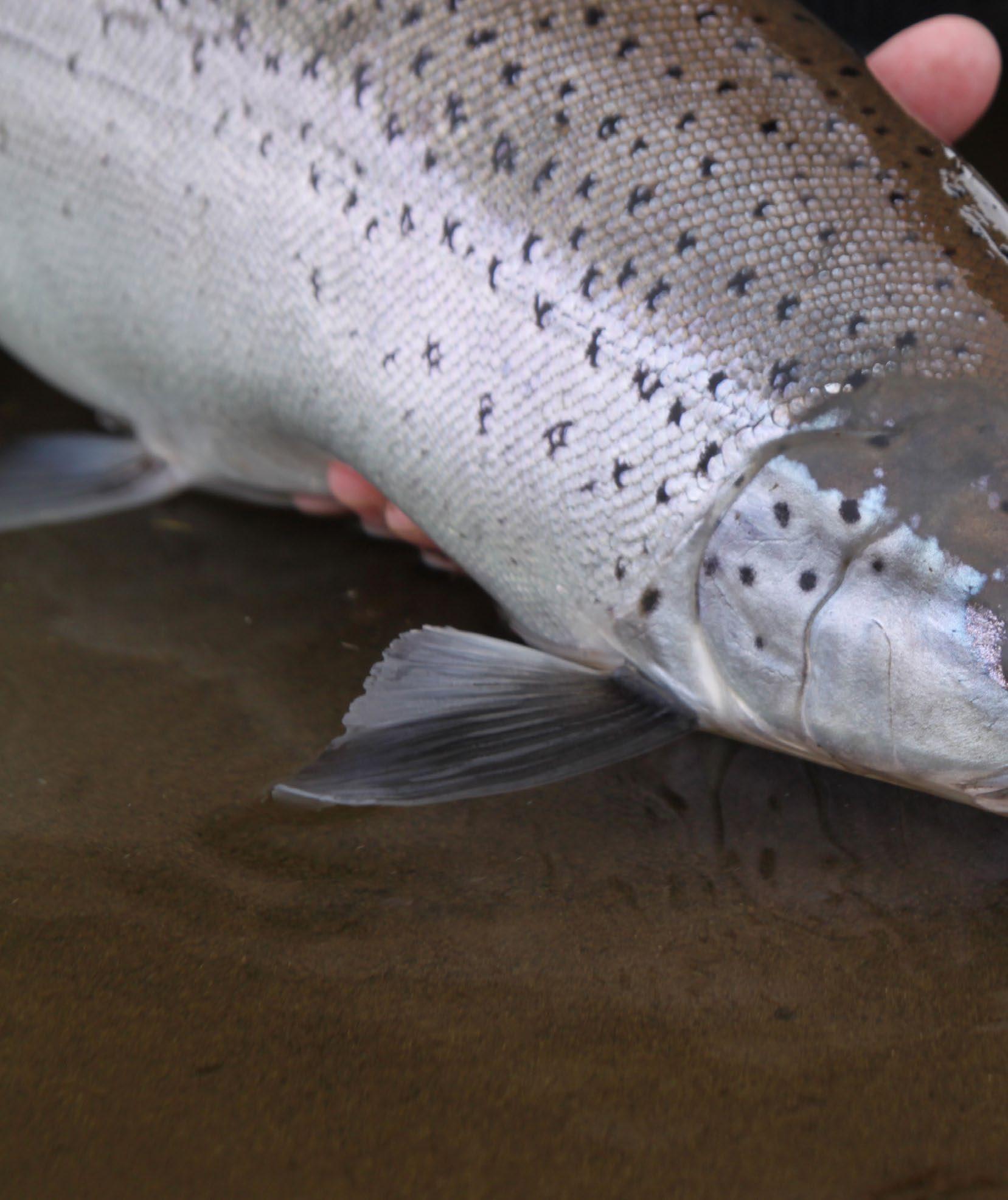
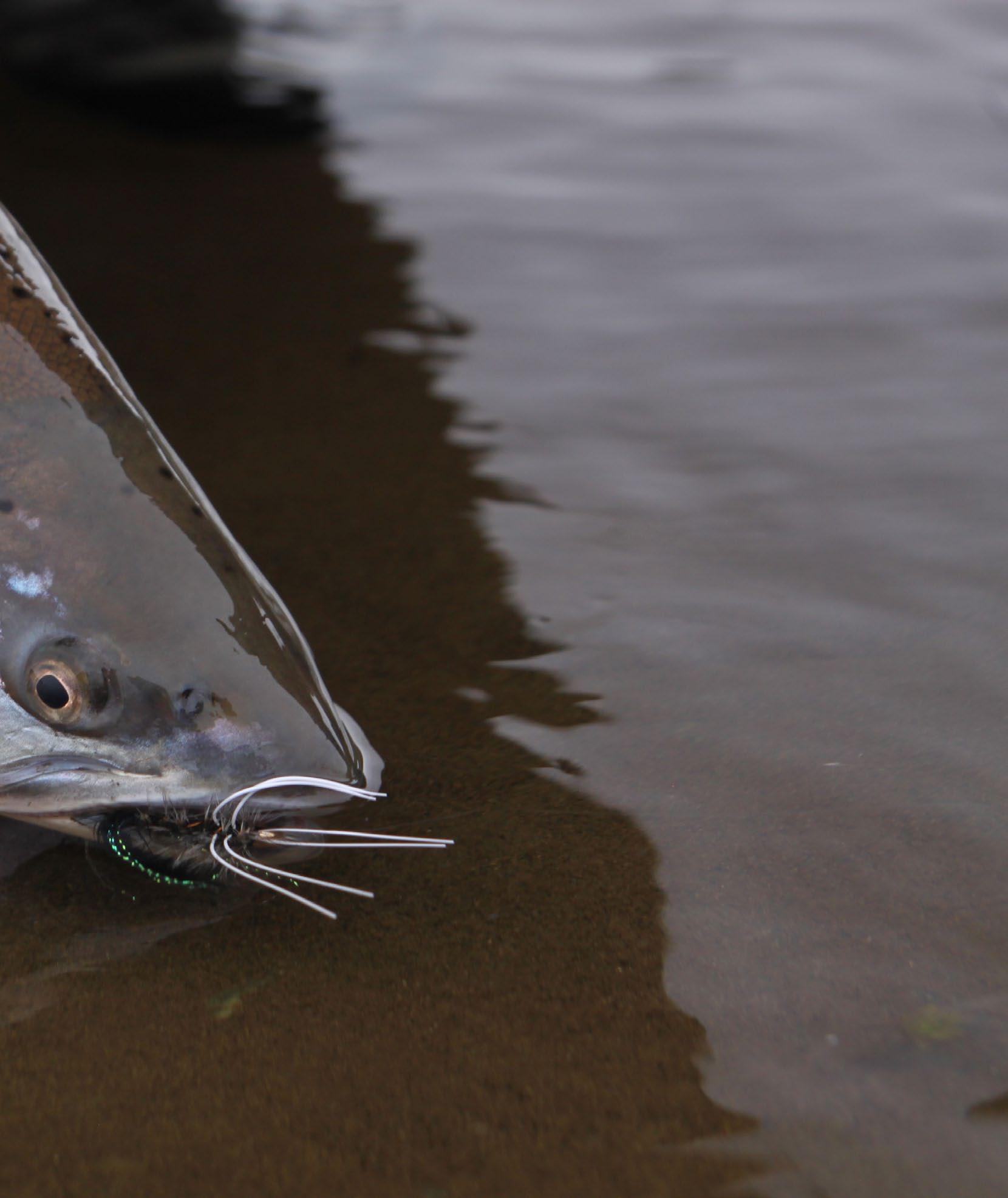
Normally having a float (or a float/intermediate) line on the single-handed rod is enough – but keep in mind that skat ing dry flies across seams and necks can be your ticket to some great surface action dur ing the mid-summer months!
For your Spey rod, the suggestion is a compact Scandi-type line with interchangeable tips for quick adaptation to var ying depths and currents. It might be windy, and there might be riffles on the water a lot of the time – even foamy waves – but don’t be mistak en: The gentle presentation achieved with a short head and a long and thin front ta per (and a long leader) is the recipe for catching big, spookish fish.
The presentation of Scan di lines is superb and you’ll NEED that here! As a matter of fact, you can leave the long lines and Skagit heads at home.
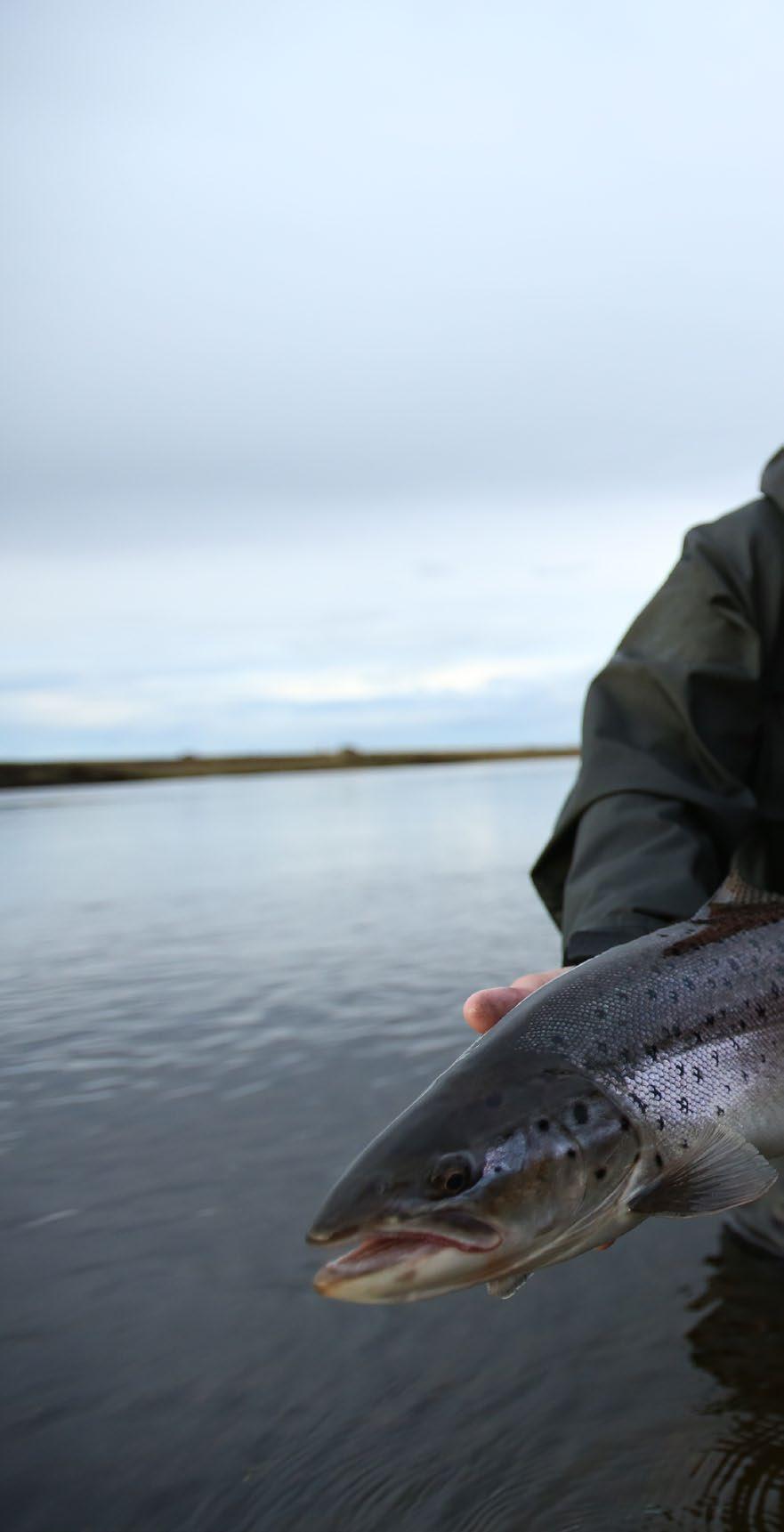
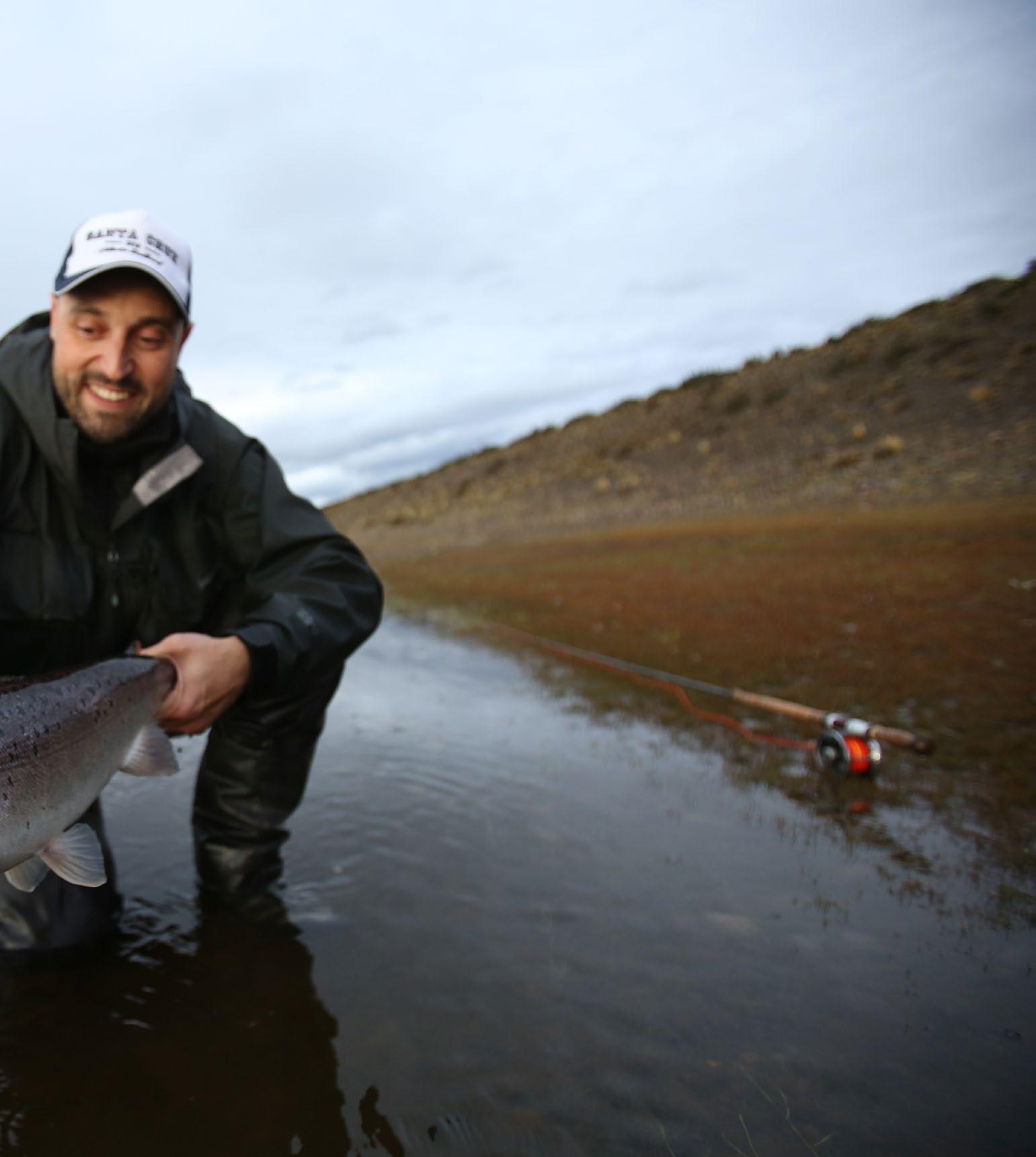

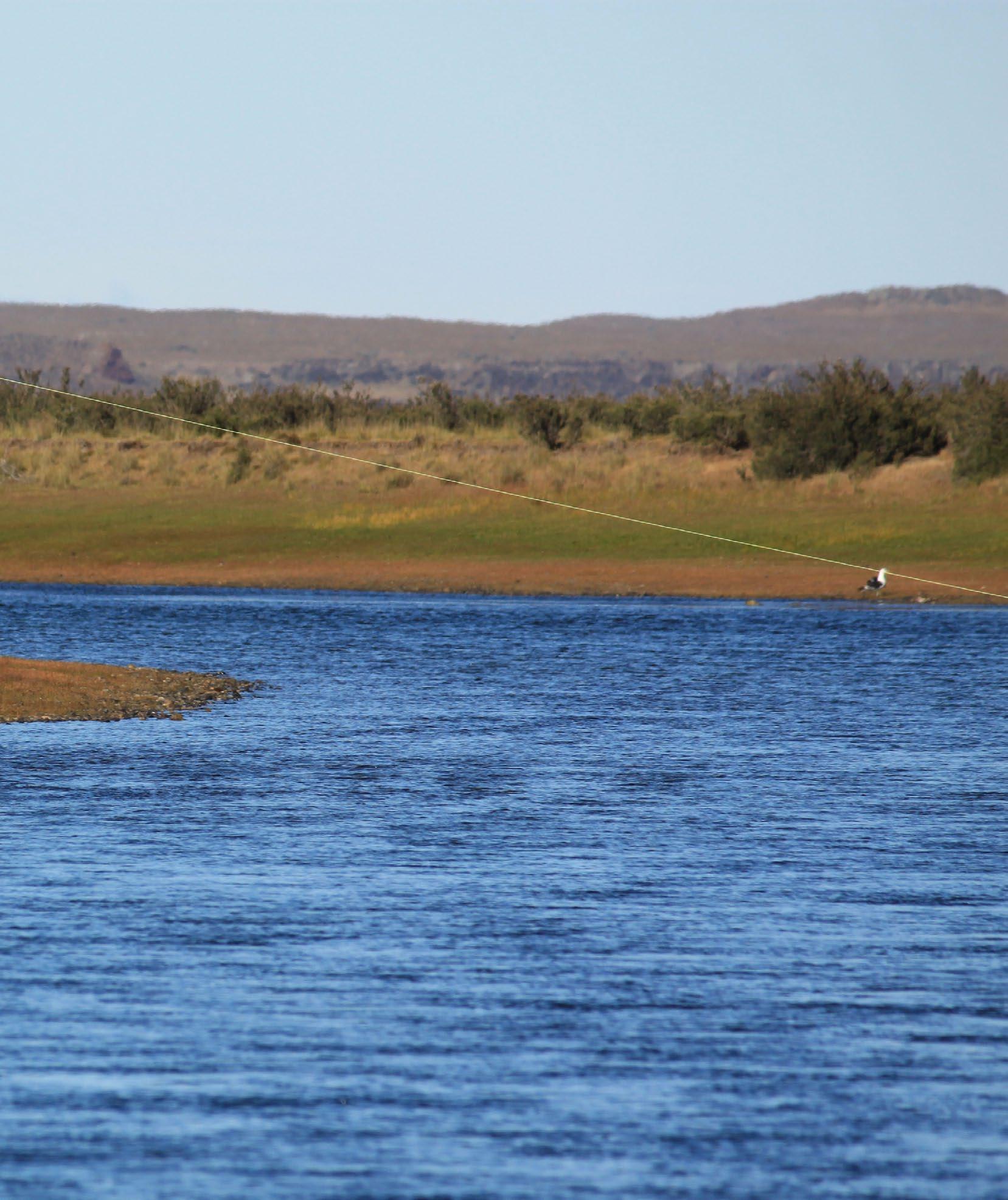

When it comes to the running line, it’s really a matter of personal preferences. Still, our recommenda tion would be 35lb mono or a thin (.029’’) PVC-coated running line that really maximizes casting dis tance when needed. Regarding the tips, most of the time you’ll prob ably keep your intermediate one on, but still, it’s important to have a float, Sink 3 and Sink 6 tips around. (Did we mention already that it’s important to be versatile?)
Finally, it’s important to use longer leaders than you’d probably think to begin with (10-15’ and up to 20’ in low water-) plus a thinner tippet (0,25-0,35mm) as the fish ARE lead er shy. Generally, think of diameter prior to strength when choosing your tippet, and don’t forget to test your knots. (Oh, and considering those damn winds again: Maybe check for wind knots on your leader/tippet every now and then?)
3) Flies and how to fish them
You’ve probably heard already about the rubber-legged nymphs and streamers for Argentina’s sea
run browns, and that’s because they work. But in addition to some of the most popular types of nymphs, like Girdle Bugs and Copper Johns, that simply need to be in your box in siz es ranging from 6 – 12, you’ll want to have a selection of salmon flies in the same range of sizes, like stoat tails, red butts, etc. Small flies land big fish in this river (and in other similar rivers where down-sizing is the key to catching big and weary fish). Then, add some mid-sized streamers into the mix, and some larger flies for the last hours of the day like Sunray Shadows and Temple Dogs to have a full box ready for the mission.
If you’re a purist (or not so much), a handful of size 6 Bombers – natural or with fluoro-orange hackles - should be included.
And now back to the technique. For those used to swing flies for salmon or steelhead, well, this is a different game. Think of stripping the fly as the thing that triggers the fish into taking. It’s how you work the fly that ultimately will get you into fish.
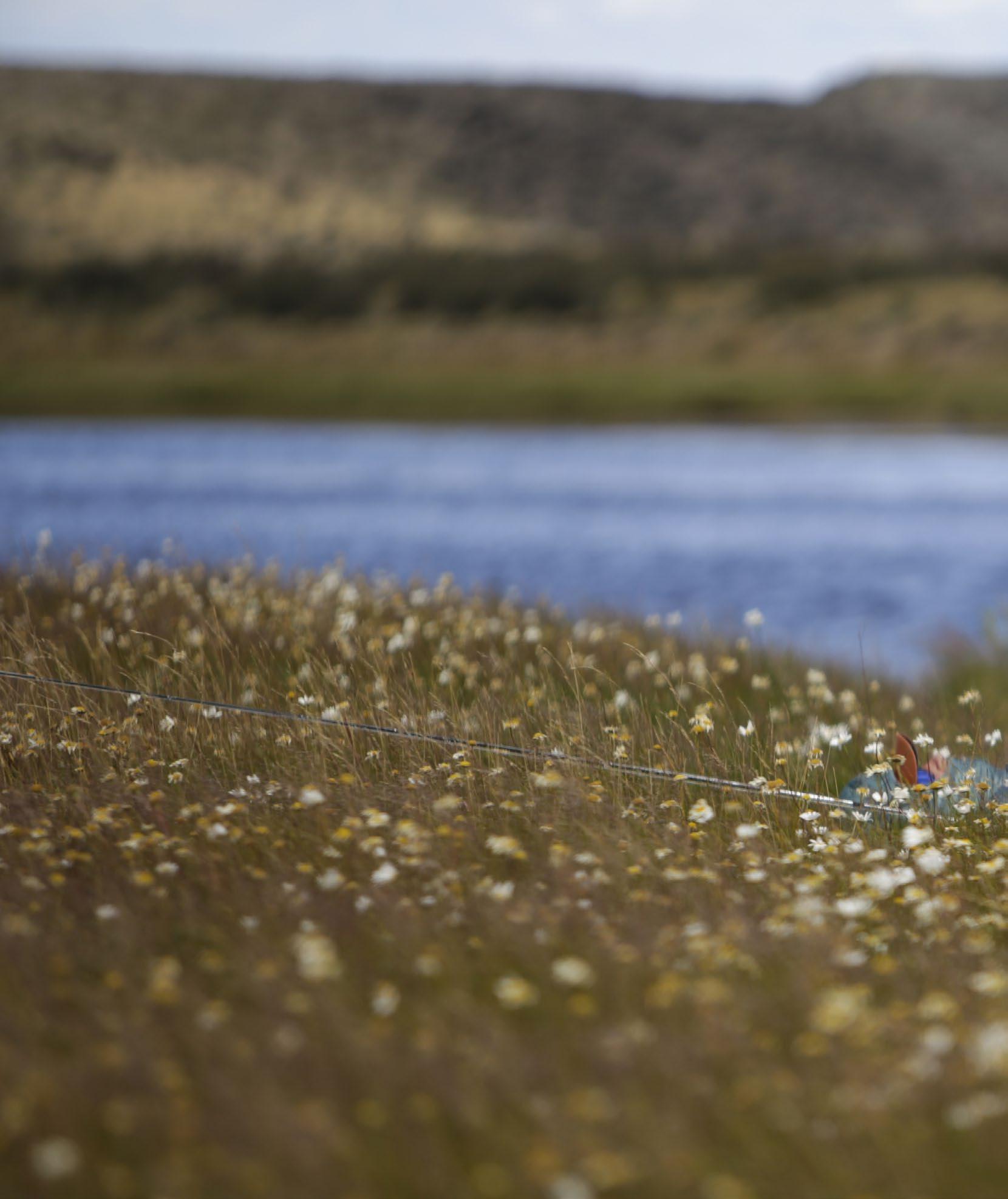

After a sligthly downstream cast (that can go up to 45º) to make sure the fish sees the fly (and not the line) first, you let the fly sink and come around for a few seconds. Then it’s time to start moving it.
Gallegos
The all-round strip is a mere 5 – 10 centimetres long, with half a second of pause in between. Pretty simple – but very effective! That said, when things slow down – don’t be afraid to try alter native stripping methods. As with trout elsewhere, the Rio Gallegos fish can be very picky when it comes to how the fly moves in the water.
4)
Stealth mode:
ON Avoid having studs/nails on your boots. The Rio Gallegos is one of the easiest ones to wade and walk due to its thin gravel bottom and moderate current, so both rubber and felt sole boots are fine. Being stealthy will pay off every time, as is the case with trout fishing in general.

“The Rio
fish can be very picky when it comes to how the fly moves”



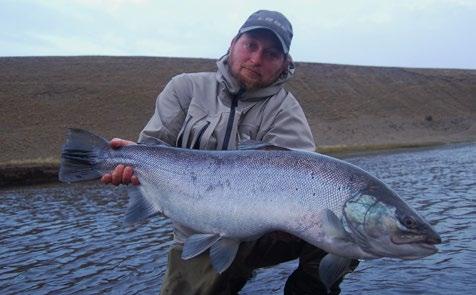
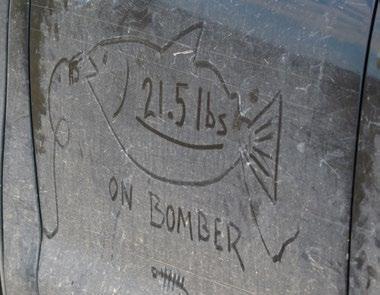




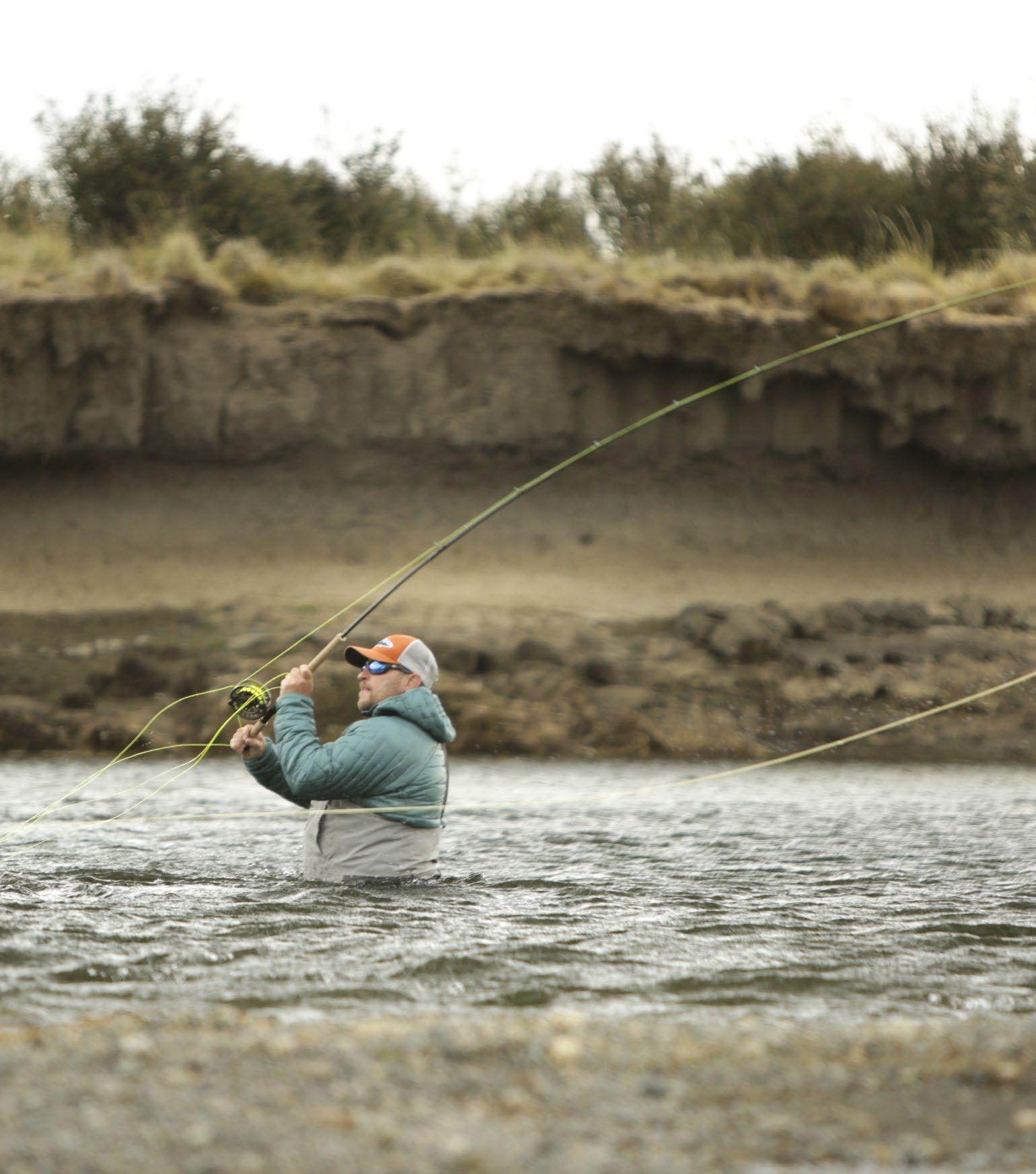
Also think about keeping your wading to a minimum. Otherwise, the fish WILL notice you. Fi nally, always choose a cast that will disturb the surface minimally, which means that – most times - the Double Spey is NOT the best choice. A nice underhand cast, single Spey, or snake roll is usually a much smoother and more subtle cast – and therefore more effective.
5) Top time to fish it Even though the Rio Gallegos has a November thru April season -as most of Argentinean Pata gonia - the prime time is January-April.
The reason is that the main seatrout run enters the system by late December and that runs will continue to intensify in strength throughout the remainder of the season - depending on the river conditions and tides of course.
With random seatrout opportunities and plenty of quality resident brown trout both at the top and lower stretches of the river, the middle section should be the one to pick for the most committed anadromous angler. The simple reason being that seatrout hold there longer, while waiting for the spawning time. The middle section has more gradient compared to the rest of the river, so even during low-water summer conditions there are steady flows and more oxygenated- and produc tive water to be found here.



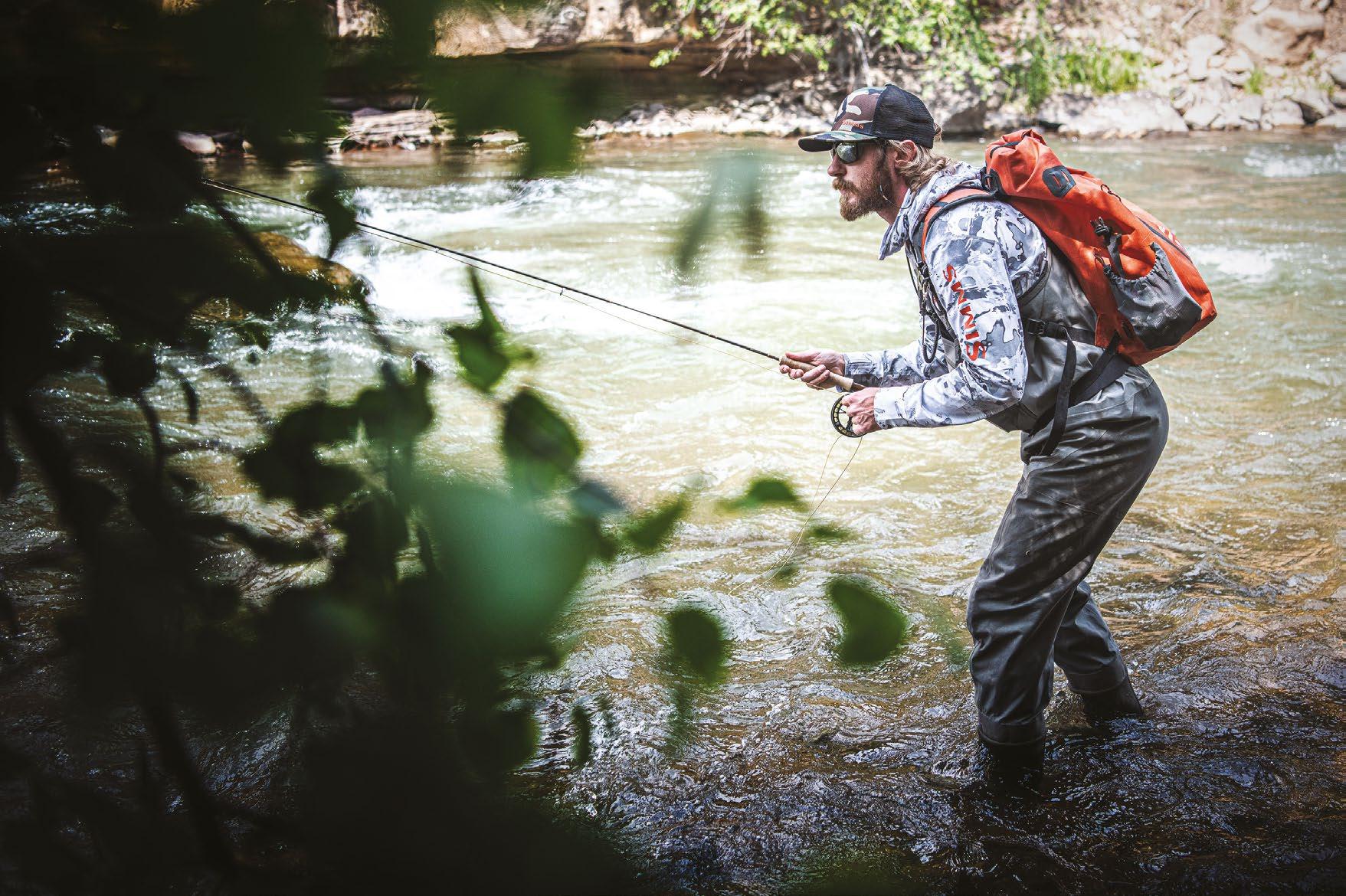
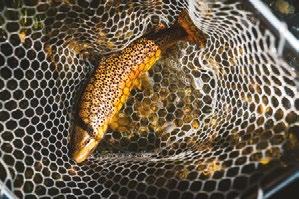
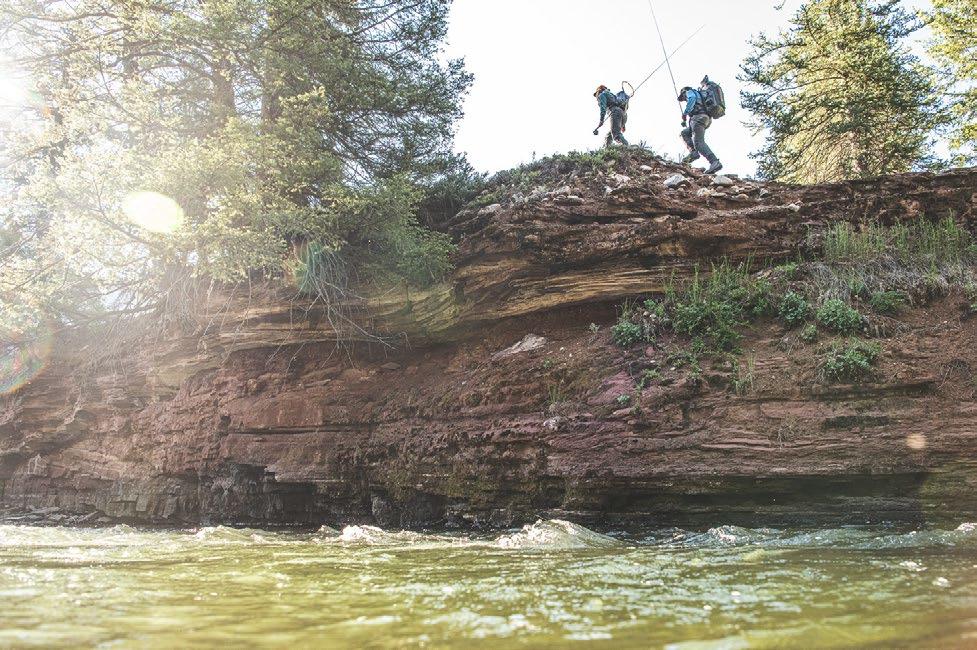
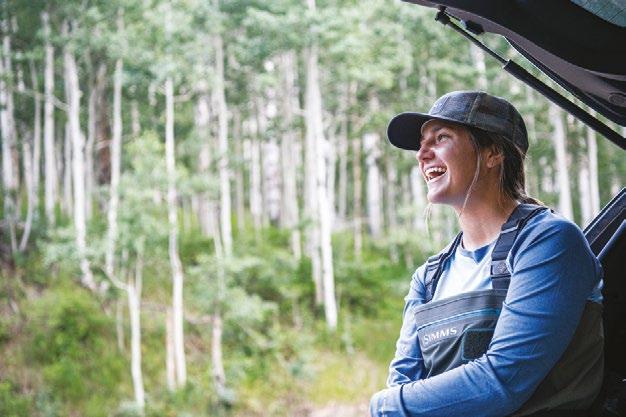

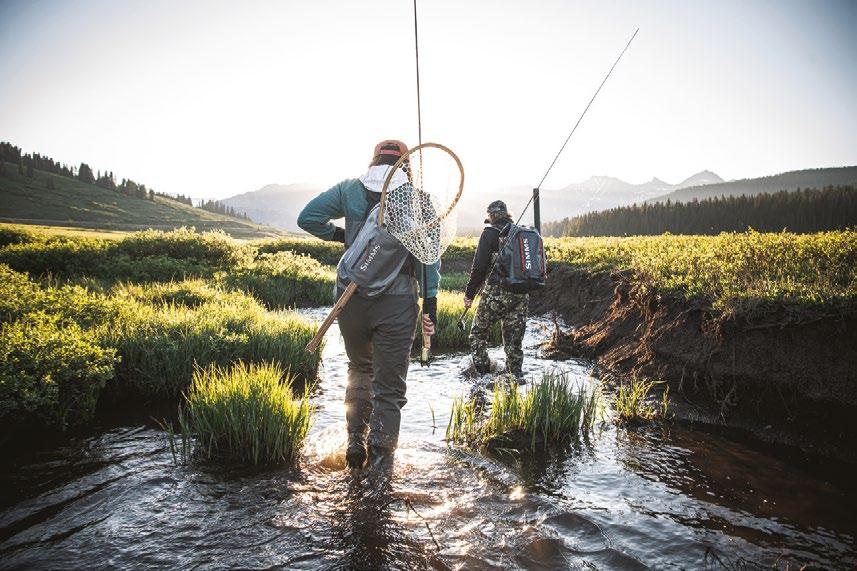
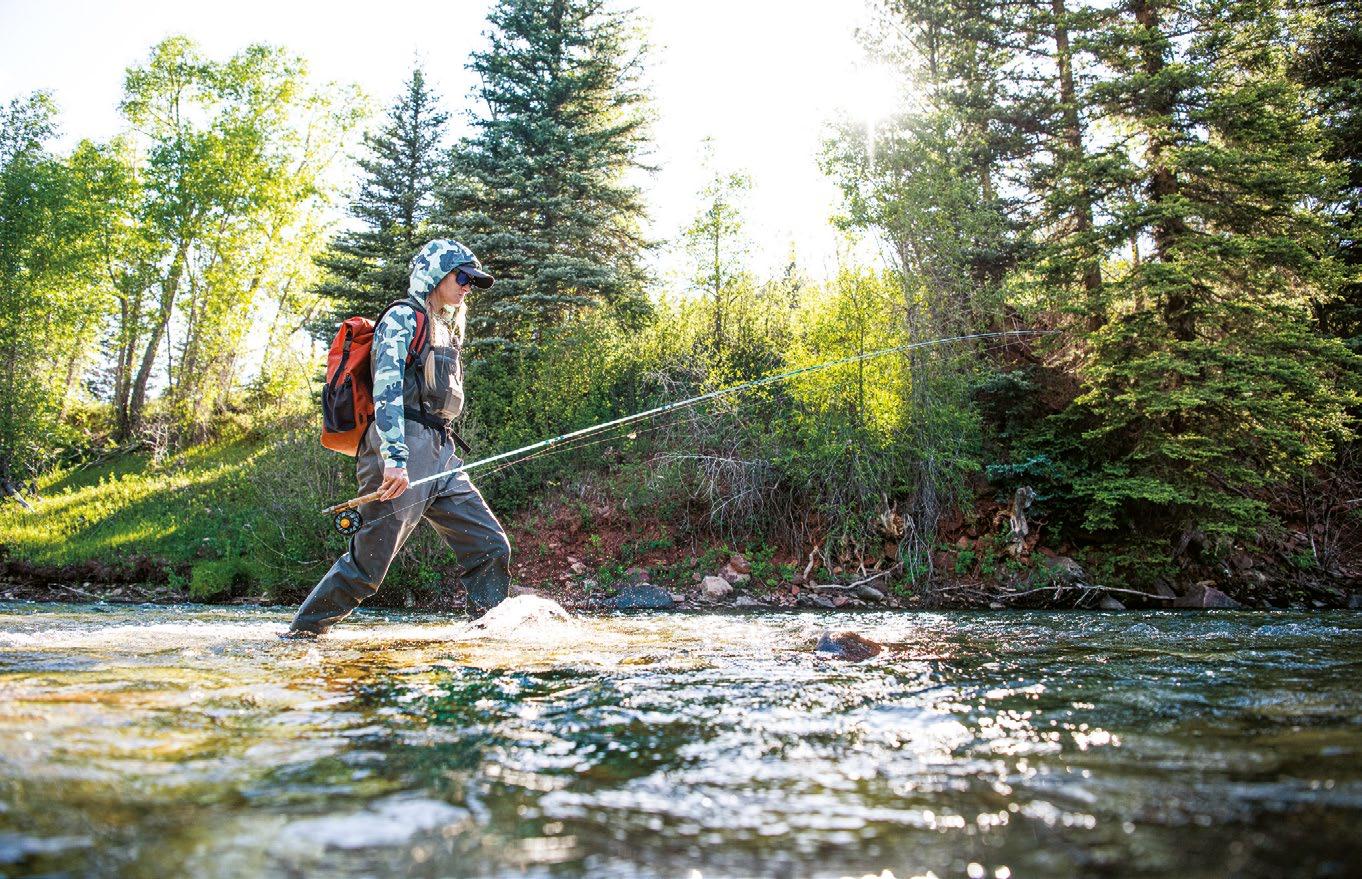


The Brand Buffet
Chipolo ONE Spot: KEEP TRACK OF YOUR LUGGAGE
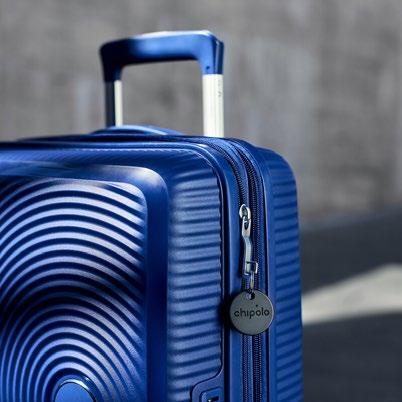



Fly fishing takes us to some of the most remote corners of the world, and there’s a lot of anxiety involved when wait ing for crucial luggage to arrive when touching down at your final destina tion. Chipolo has developed a chip key that works with Apples “Find My” app. Place the chip in your luggage, and you can keep track of it during your travels, and should luggage get lost or delayed, you will be able to react promptly and make sure the luggage is found and for warded. For more information, please refer to: www.chipolo.net

Happy Fishmas: WAYWARD FLY FISHING ORNAMENTS
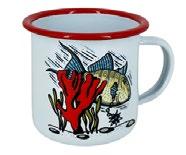
The Wayward Fly Fishing Christmas ornament is burnt into pine wood circles. This ornament is between 3 and 4 inches wide and will look beautiful on your Christmas tree. For more information, please refer to: https://www.waywardtradingpost.com
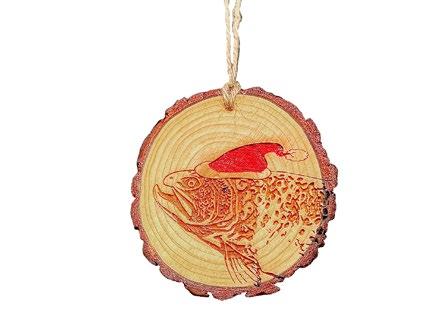
Loon Outdoors FLY TYING MAT
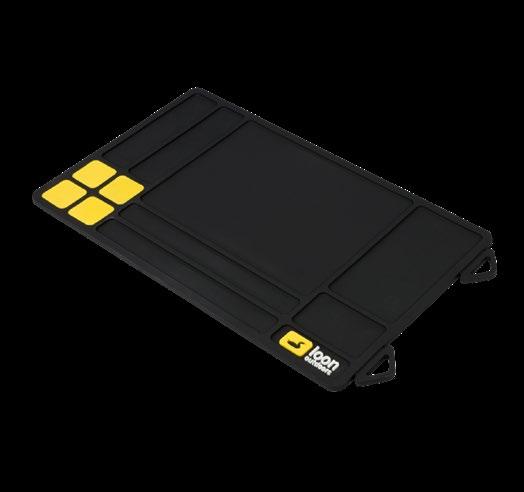
Whether the goal is to production-tie a dozen Copper Johns in an hour or to simply come back to a tidy station, the neatly divided compartments on Loon Outdoors’ new Fly Tying¬ Mat allow tyers to develop a system for keeping tools and prepared materials organized. The silico ne construction is easy to clean with 4 mag netic compartments, perfect for keeping hooks and beads in place. For more info: www.flyfisheurope.com/loon/
Bajío: PALOMETA SUNGLASSES
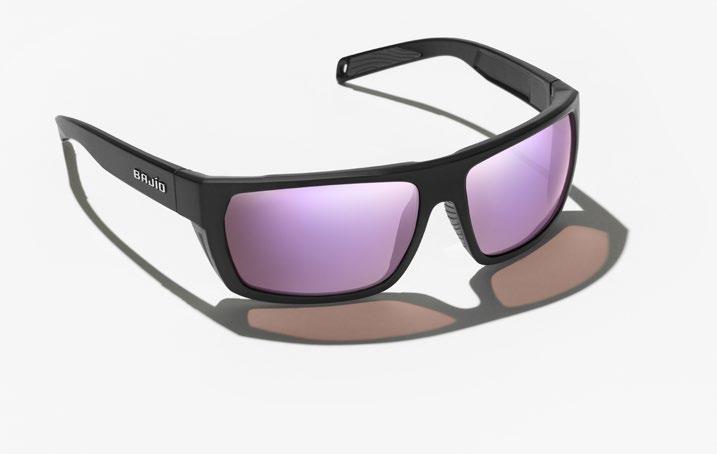
The Bajío Palometa sunglasses are a sizeddown version of the popular Bales Beach shades. The medium-frame Palometa features a wrap-around style with builtinside coverage for sun protection and light blocking. Bajío’s ultra-clear, polari zed, color-enhancing lenses with proprie tary LAPIS™ technology block 95% of blue light combating haze, glare, and eye strain. We’ve tried the low-light-igniting violet mirror lenses, and have been blown away by the clarity, contrast, and comfort that these glasses provide on cloudy days – or when fishing at dusk and dawn. For more info, please refer to the European dealer: www.flyfisheurope.com/bajio/
Bajío Gives Back: GET A FREE CUP AND SUPPORT THE ENVIRONMENT
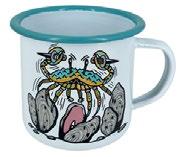

Bajío has teamed up with four like-minded brands to provide a free gift with purchase for customers this holiday season while helping to clean up the ocean’s flats. This season it’s easier to help make a difference and get an extra gift for you or a loved one at the same time! In short, when customers buy sunglas ses from Bajío’s website, they get a free cup, and Bajio donates money from the purchase to help the flats. More information on the project can be found on Bajíos website: https://bajiosunglasses.com/pages/holiday
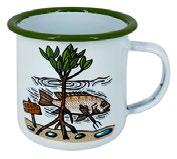
The Brand Buffet
Howler Brothers: TALISMAN FLEECE

The Talisman Fleece is designed to pull double duty as the perfect throw-on for any cool day or as the ideal midweight baselayer under your ski shell or puffy when you really need to put up a fight against the cold. It’s made of super light grid fleece with a fresh nylon yoke and triple pocket configuration to stash your ski pass, energy bar or beer tickets. It features: 100% polyester fleece, hand warmer pockets, zippered chest pocket, stash pocket at lower back, nylon front yoke. For more info, please refer to: www.howlerbros.com
CubalayaOutfitters: PALM THIEF GUIDE BELT
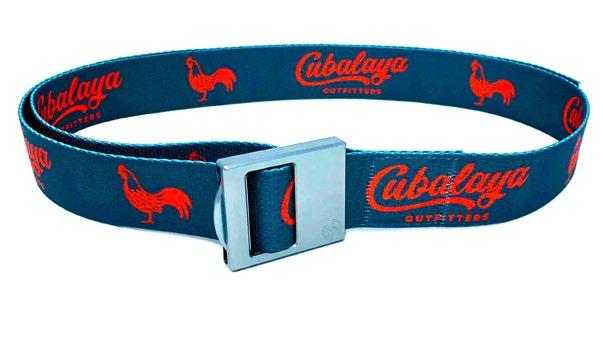
This belt is unlike any other webbed belt on the market. It’s appropriately named after the Coconut Crab, which has 10x the grip of a human, hence its nickname “The Palm Thief.” Basically, this belt is strong as heck, and if it slips, Cubalaya Outfitters will buy you a crab dinner. Holds pants, shorts, and waders tightly in place and cinched to keep you dry, uniquely designed buckle slider cre ates a truly slipless grip, releases with just the push of your thumb, one size fits all; cut to length, and UNISEX. For more info, please go to: www.cubalayaoutfitters.com
Peux: SWISS-MADE MULTI TOOL
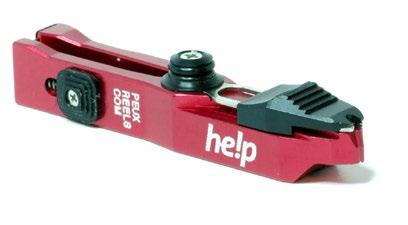
The He!p Multi Tool from Peux Fly Fishing is an ingenious multifunction nipper that also provides the necessary functionality to easily pass your tippet through the eyelet of small flies: a pince, a fine needle, and a pick-up sys tem for your tippet, and a removable Inox cutting blade, pivotally supported. The tool is made from anodised aluminium manufactu red in the mass, just like Peux’ innovative fly reels. For more information, please refer to: www.peuxflyfishing.com
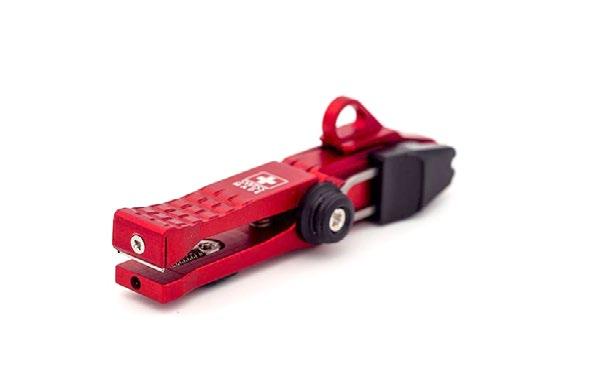
Rupert Harvey Flies: SILI CONES
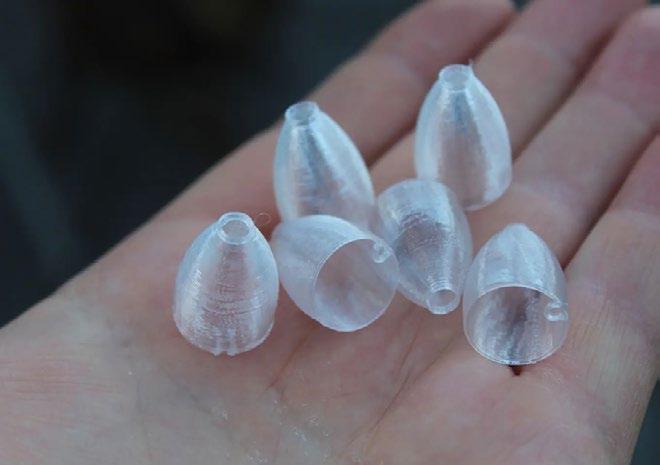
Rupert Harvey is one of our favourite fly tyers, and he has now started up his own webshop –with flies and fly tying materials. The new Sili Cones are soft, translucent cones that can be used not only for heads, but also as “body fillers” that allows you to tie voluminous predator flies with great profiles that really pulsate and flutter. The Sili Cones come in a number of different si zes for different hooks and purposes, and they can be found here: www.rupertharveysflies.com
Scientific Anglers: AMPLITUDE TROUT STANDARD
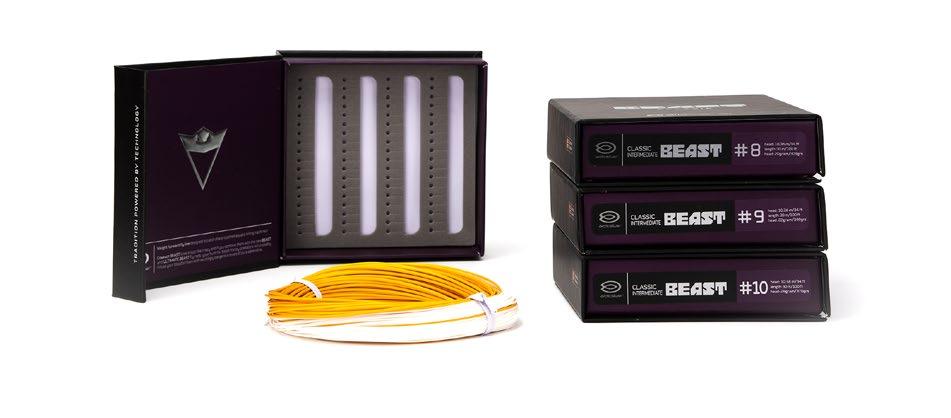
Amplitude Textured Trout Standard fea tures Scientific Anglers’ AST PLUS additive for improved slickness and dura bility. It is a true to AFFTA line weight casters fly line. Built with a mid-length head for exceptional mending and ac curacy at long distances. If you love casting, this will quickly become one of your new favorites. Available in WF-F #2 – 6. For more information, please refer to www.scientificanglers.com
ArcticSilver : A BEAST OF A FLY LINE
BEAST is the name of a new series of MicroDiame ter fly lines from ArcticSilver. The series is desig ned specifically for handling and turning over big streamers. The lines come with a 4-meter handling zone and a 3-colour control concept, where head, handling section, and shooting line are individu ally colour coded for easy detection. With aggres sively tapered 10,36meter heads, and total lengths of 30,5 meters, ArcticSilver product manager, Ma thias Lilleheim, has created a line that will strike an inarguable note with many pike fly fishermen across Europe – but perhaps also certain seabass and seatrout fishermen. Available in floating, in termediate, and sinking densities and line classes 8-10. For more info, www.arcticsilvershop.com
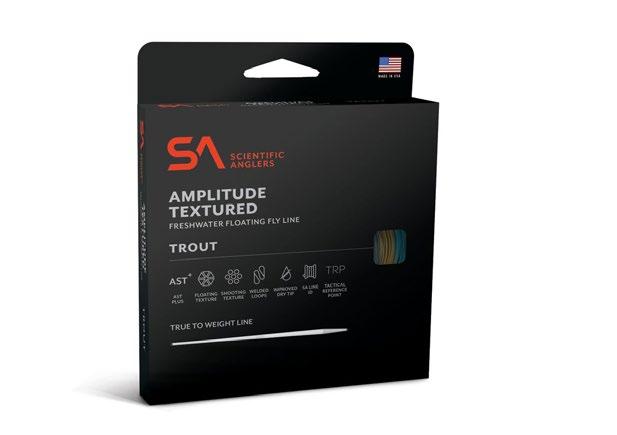
The Brand Buffet
Mustad: HERITAGE SERIES FLY HOOKS
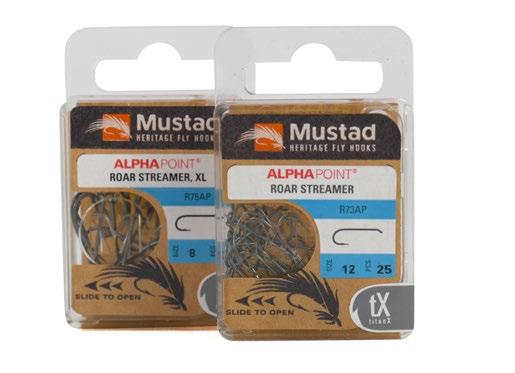
Established in 1877, Mustad is a Norwegian hook manu facturer with a long and proud history. They’ve now laun ched their Heritage Hook Series, a series of hooks building on traditional hook craftsmanship but with the very latest in hook technology. All the hooks in the range come in bio-based, 100% biodegradable packaging, with Mustad’s sharpest and slimmest hook points to date – the ALPHA point 4.8 hook points, and new ultra-durable hook coa tings. Whether you’re into salmon, trout, pike, or saltwater flats fish, Mustad’s new Heritage Series is well worth check ing out! For more info: www.mustad-fishing.com/eu/
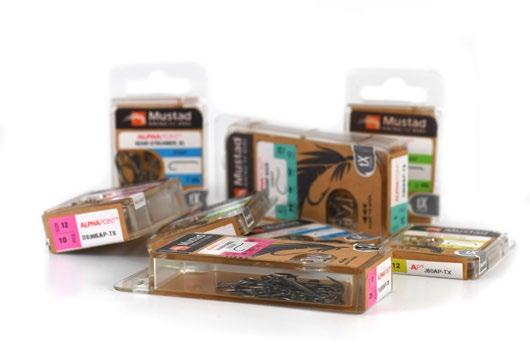
Fulling Mill: PAUL PROCTER MAY FLY COLLECTION

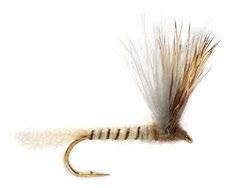
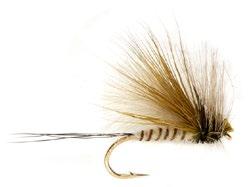
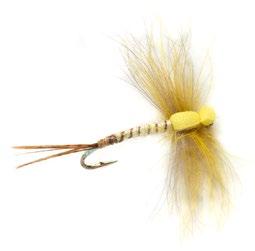
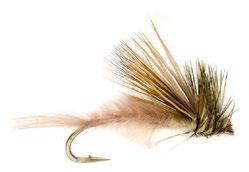
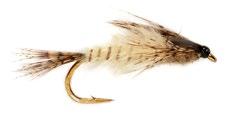
Anyone who’s into trout fishing and familiar with the UK fly fishing scene will know Paul Procter –an extremely knowledgeable and experienced fly fisherman and fly tyer, who has targeted trout in some of the most challenging watersheds across the globe. He has teamed up with Fulling Mill to provide the European market with a range of large, realistic mayfly patterns to imitate the full hatch cycle. Go to www.fullingmill.co.uk and type in “procter” in the search field. There’s more than mayflies waiting for you.
Costa Del Mar : JOSE PRO SUNGLASSES
Costa brings next-level Pro-formance to its best-selling Jose frame. Named in honor of the legendary Waterman and larger-than-life personality Jose We jebe. This frame builds off the original with six performance additions to help anglers manage sweat, reduce fogging, and keep their frames locked in place, even when the water gets rough. For more information: www.costadelmar.com
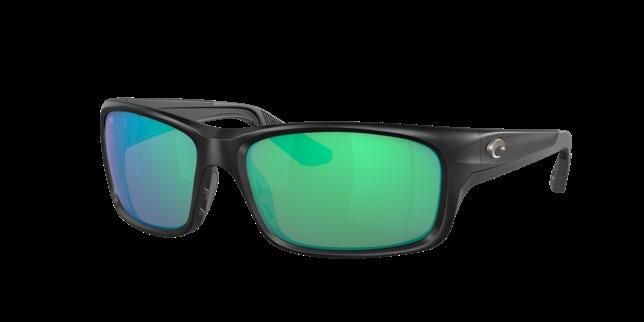
Simms: WOMEN’S SOLARFLEX COOLING HOODY

For days that feel more flammable than fishable, SolarFlex® Coo ling Hoody lets you slip into the shade without skipping the ac tion. The shirt’s advanced cooling fabric is complemented by mobility boosting stretch, maximum UPF50 protection, and a hooded design that covers all the angles. Features sleeves built with extended cuff lengths and thumbholes work with you while casting or poling and provide back of hand sun protection, and a large, zippered back pocket for storing on-water essentials. For more information, please visit the website of the European dea ler, Flyfish Europe: www.flyfisheurope.com/simms/
Waterworks-Lamson: CENTERFIRE HD FLY REELS
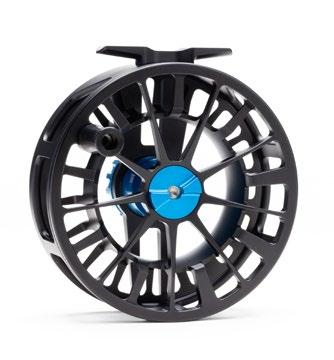
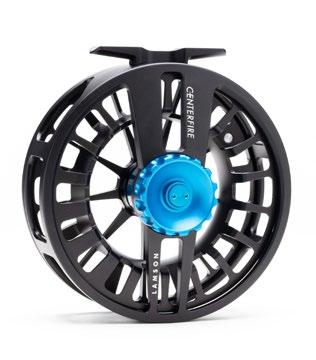
Centerfire is a double-edged sword perfectly suited for both single- and doublehanded fly fishing for Atlantic salmon and seatrout in torrential rivers as well as adrenaline-choked sight-fishing on shimme ring flats and blue water drop-offs. The silky-smooth drag system lets you handle big salmonids with the confidence and authority needed in heavy currents - and it has the stopping power to prevent explosive predatory flats fish from making it to the craggy reef edges. (Something we experienced first-hand, when targeting bumphead parrotfish in the Seychelles in November). A bomb-proof, IPX8 waterproof reel available in sizes 8 – 12, and made in Boise, Idaho, USA. For more info, please refer to the European distributor: www.flyfisheurope.com/ww-l/
Patagonia: GUIDEWATER BACKPACK
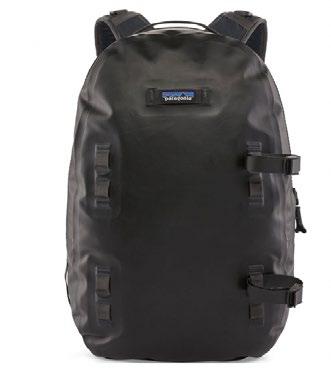
Patagonia’s new Guidewater BackPack is a fully submersible 29-liter backpack with a minimalist construction to redu ce weight without sacrificing durability. Fair Trade Certified™ sewn with hardworking, durable 100% recycled nylon fabric and -webbing, and 100% recyc led polyester back panel and lining. The IPX-7 rated backpack features an inter nal organizer pocket, an integrated net scabbard as well as a hydrophobic panel and straps. For more info: www.patagonia.com
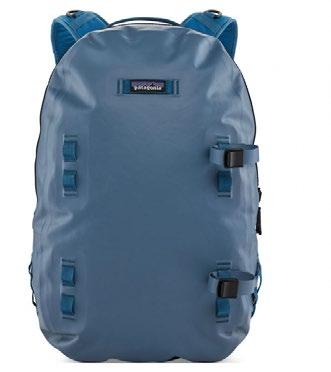
The Brand Buffet
Review :
TORQUEEDO TRAVEL 1103 ELECTRIC BOAT MOTOR
Of course, you can power your pontoon boat using a pair of oars, but there are always cer tain limits to how much you can move around during a day trip. Enter, the Torqueedo Tra vel 1103 C, the equivalent of a 3HP outboard engine and with great range! We’ve found the engine to be surprisingly lightweight –weighing in at 17,3kilos (incl. the 915Wh built-in/extractable lithium battery) – and it is simply perfect when used with a pontoon boat; in our case, our trusty Anderson Pon toon Speedster, which is still going strong after 6 years. (www.andersonpontoon.com).
The Torqueedo Travel engine is a no-nonsen se, high-quality engine that we’ve found to be extremely intuitive to use: Easy to charge, silent, responsive, and with great directional stability. It has proven perfect for fly fishing
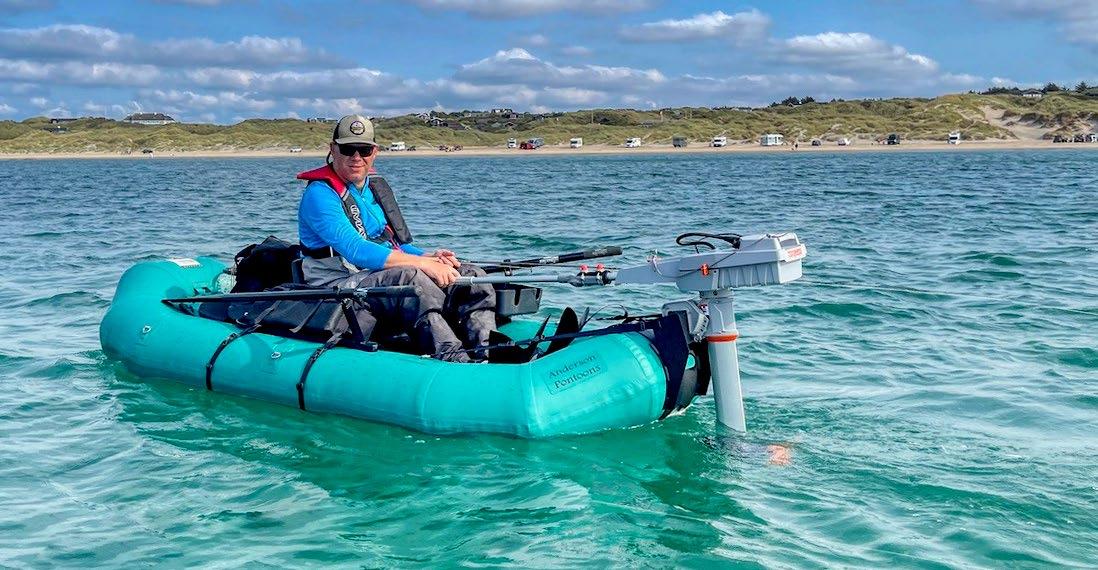
our local rivers, fjords, and open coastal sho res, and – since it can run for up to 20 hours at slow throttle (2 knots / 3,5km/h) – some will even find it perfect for trolling flies.
The engine comes with a built-in computer and display that provides all the crucial in formation needed for a day on the water –speed, battery levels, and GPS-based range calculations (which can be visually enhan ced on an interactive map by Torqueedo’s TorqTrac connection and SmartPhone app).
The Torqueedo Travel engine has revolutioni zed our pontoon boat fishing and allows us to reach all the goody spots with a minimum of effort, so we can concentrate on the fishing –clean, silent, and durable. For additional infor mation, please refer to: www.torqeedo.com/

THE RIGHT SPOT
of a great journey The beginning
Eden Bleu Hotel
Just 5 minutes from the International and domestic airport!


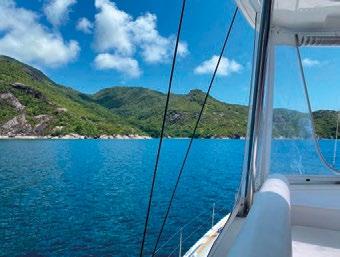
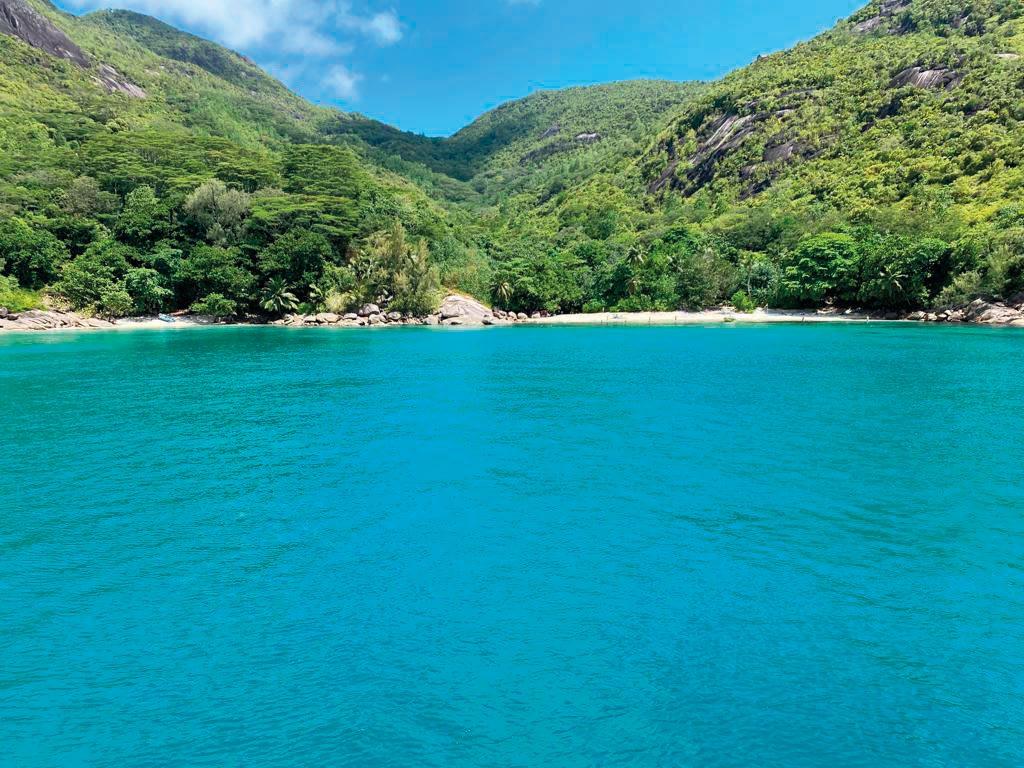
www.edenbleu.com

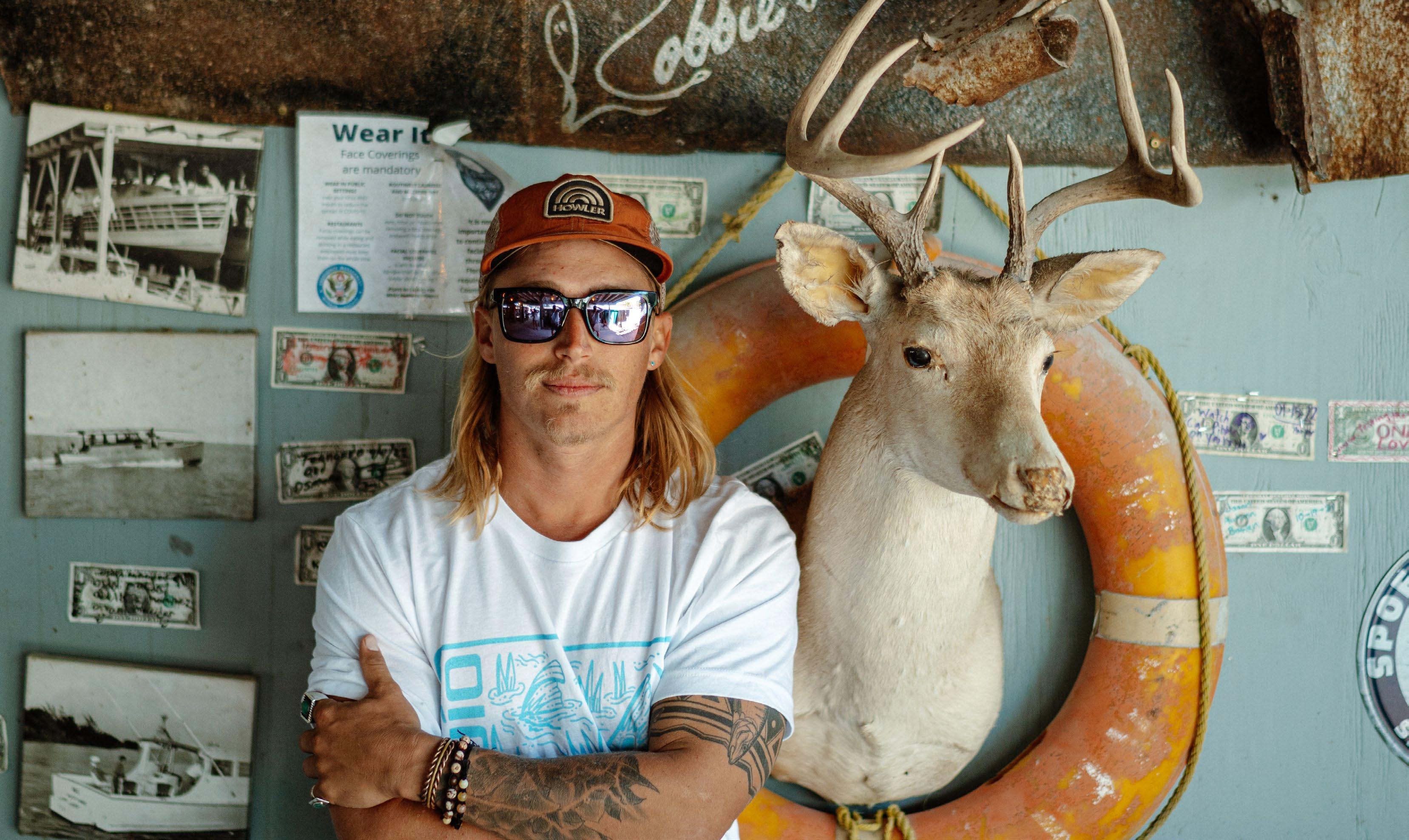
WWW.BAJIOSUNGLASSES.COM @BAJIOSUNGLASSES

FLY TYING Wiggle Sandeel

Seatrout generally love big protein-rich prey items so, when targeting them, you shouldn’t be afraid of using big flies. Especially from late spring throughout the summer months and well into fall, seatrout feed ferociously on prey fish such as herring, sprattus, gobius, stickleback and sandeel. And the latter are typically found along relatively shallow coastal stretches with a mixture of sandy patches, rocks and seagrass. In other words, places that are perfect for fly fishing.
By RASMUS OVESEN

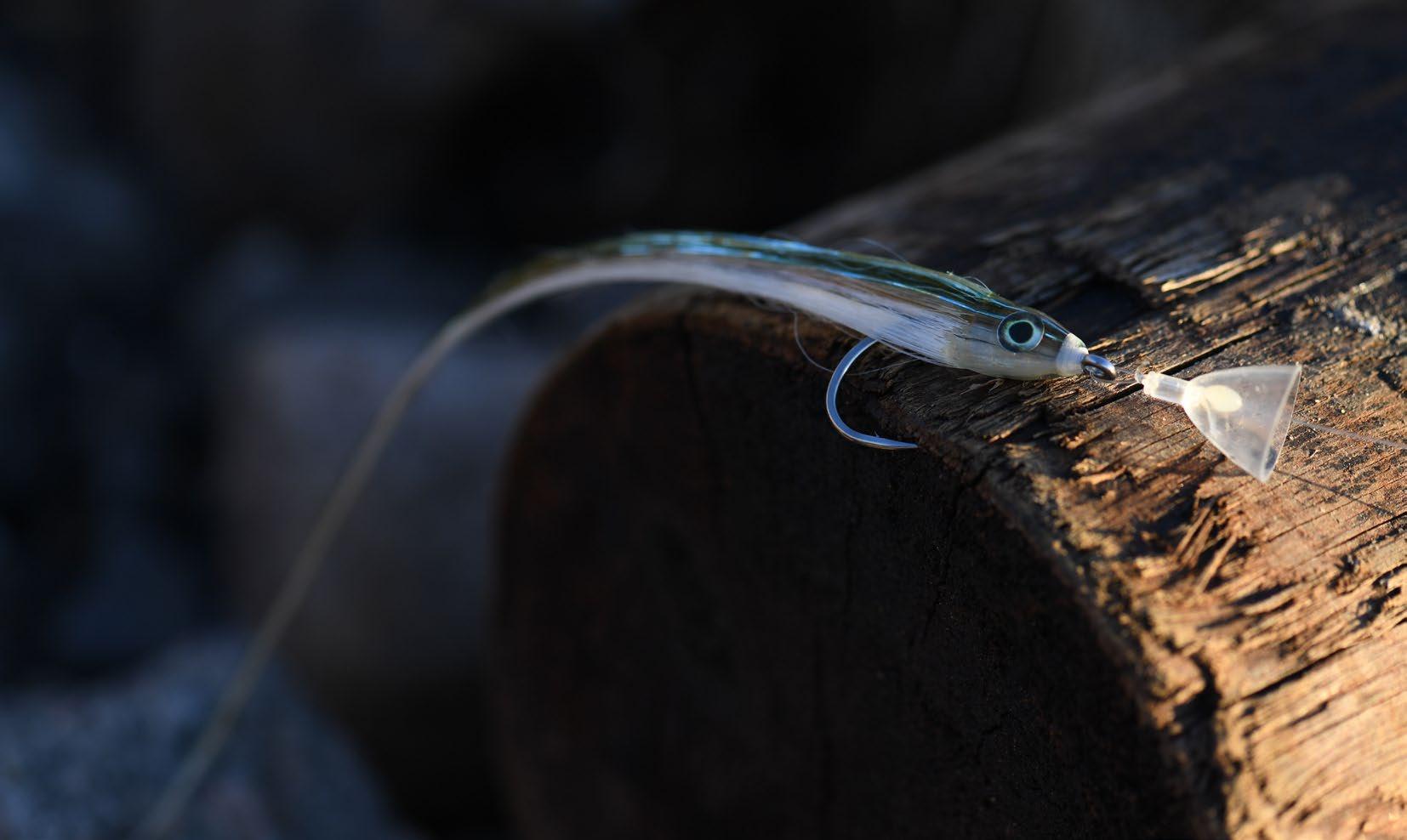

Sandeels are a group of silvery, eellike and spiny-finned marine fish that can be found burrowing in sand or shingle – or migrating along the coastal shorelines in big schools.
The most common member of the family, the Northern European sandeel (Ammodites dubius), is a popular prey item, and especially se atrout tend to key in on them. They range in size from 10 to 20 centimeters and they present a solid mouth ful for a hungry seatrout.
There’s a reason sandeels are called “SANDeels”. They prefer habitats with sandy bottom where they can burrow into the sediments and hide when they’re not feeding.
They can’t hide forever, though, so they school up regularly and hunt for small crustaceans, such as copepods, and when they do, they need to be constantly on the move (as they have no swim bladder). At short distances, they’re fast swimmers with an erratic S-curve movement pattern, but over longer distances, they’re no match for a seatrout. The Wiggle Sandeel
is a pattern designed to imitate the sandeels slithering S-curve move ment while at the same time opting for a great degree of physical similar ity. It can be varied in size according to the sandeel found along your local coastal shores, and it is very durable and stable in the water. It is best fished on an intermediate line with a dou ble-hand retrieve and a fair amount of speed – without any pauses.
Try a Wiggle Sandeel the next time you fish a local coastal stretch with mixed sand bottom. If there are sandeels around, seatrout are bound to circle in and hunt for them. Be on the lookout for swirls and wakes, and cover as much water as you can. And be prepared! The resulting strikes are often lightning fast and prompt.
SEATROUT are normally found hunting for sandeels during the summer and into the fall monthsespecially along coastal shores facing the open sea or along the outer parts of the fjords. They’re a prey item that comprise a significant part of the seatrout’s diet, especially for the biggest individuals.
And, not surprisingly, many of the biggest Scandinavian seatrout ever landed have been caught on sandeel imitations.

Seatrout prefer to hunt where there’s cover to find, and since sandeels pre fer bare, sandy bottom, seatrout will typically hunt for sandeels by cruis ing the perimeters of the sandbars and -shoals that are found parallel to the coastline and make surprise at tacks onto the sandy parts.
The intersections are typically found where the water drops off a little bit, and the proximity to deeper water means that bigger fish are likely to get drawn in - fish that are normally not within reach. And if you get the timing right, and get out when there’s a bit of wave action and some cloud cover the seatrout will be even more aggressive and reckless in their hunt.
To make the most of your efforts, you’ll need to set up your gear ac cordingly. You’ll need a stripping basket and a fly line capable of effec tively turning over your sandeel pat tern - even when deep wading and casting in hefty winds. The Volantis Integrated Tapers are great for this purpose, but there’s also the Volantis Shooting Taper in Fast Intermediate to take into consideration. It’s a ver satile and powerful casting tool with the added bonus that it helps you get below the waves - even when strip ping in the fly rapidly.
In terms of leaders, scale things up a bit and don’t be afraid to shorten your tippet if need be. The advantage of a rapidly retrieved fly is that the se atrout have to react promptly, and it typically makes them less suspicious and leader shy. The takes, however, can be brutal. And the combination of a rapid retrieve and brutal takes from big fish requires heavy-duty tippets, so use 0,26 - 0,28mm nylon. You don’t want to break that tro phy silver treasure off once it finally comes out of nowhere to inhale your sandeel imitation.




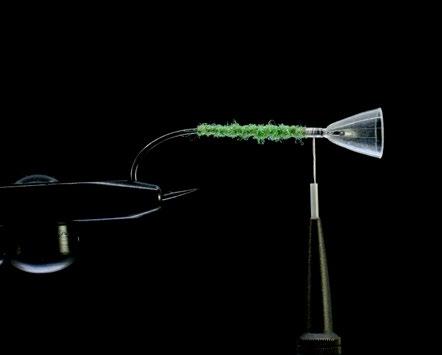
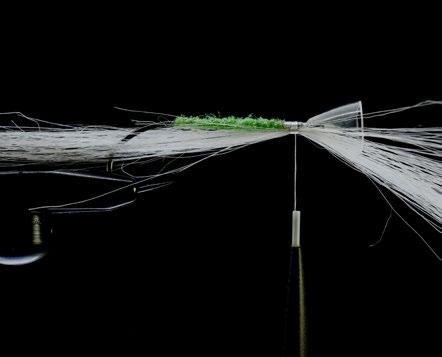

Wrap
Mount
Step 1 Step 2 Step 3 Wrap
Tie in
bundle of white Squim
Hair
the hook shank,
Tie
bundle of white
Hair
Step 4 Step 5 Step 6 Material List// Hook: Ahrex PR320 Predator Stinger, #2/0 Thread: Veevus G02 100D, White Under body: Chartreuse Firestar Dubbing Wing: White and Seafoam Squimpish Hair + Peacock and Silver Holo Flash Side: Pro Sportfisher Candy Foil, Silver Holographic, #L UV-resin: Loon UV Resin, Thin Head: Marc Petitjean Magic Hear, #R13
Fasten the hook securely in your vise.
the tying thread all the way down to the hook bend and dub it with chartreuse Firestar Dubbing.
a Magic Head and secure it with the tying thread. Make sure it’s seated firmly.
the whole hook shank with dubbing, then run the tying thread through the dubbing to rib it tight.
another
pish
on top of
right behind the Magic Head.
in a
Squimpish
underneath the hook shank – at a length of abolut 15 – 18cm.
Step 7
Tie in 8-10 strands of silver ho lographic flashabou on top of the white Squimpish Hair.

Step 8 Step 9
Now, tie in a bundle of seafoamcoloured Squimpish hair matching the length of the existing wing sec tions.
On top of everything else, tie in a small bundle of peacock-coloured holographic flashabou.
Step 10 Step 11 Step 12
Produce a left- and a right Fish Foil and tie them in on each side of the fly. Then trim all excess and whip fi nish the fly.






Now, UV glue the fly carefully to give it the right shape. Be sure to fill all the gabs in the body to increase durability.
Give the fly a final fully covering layer of Thin UV-glue and zap it with your UV torch. The fly is now finis hed.
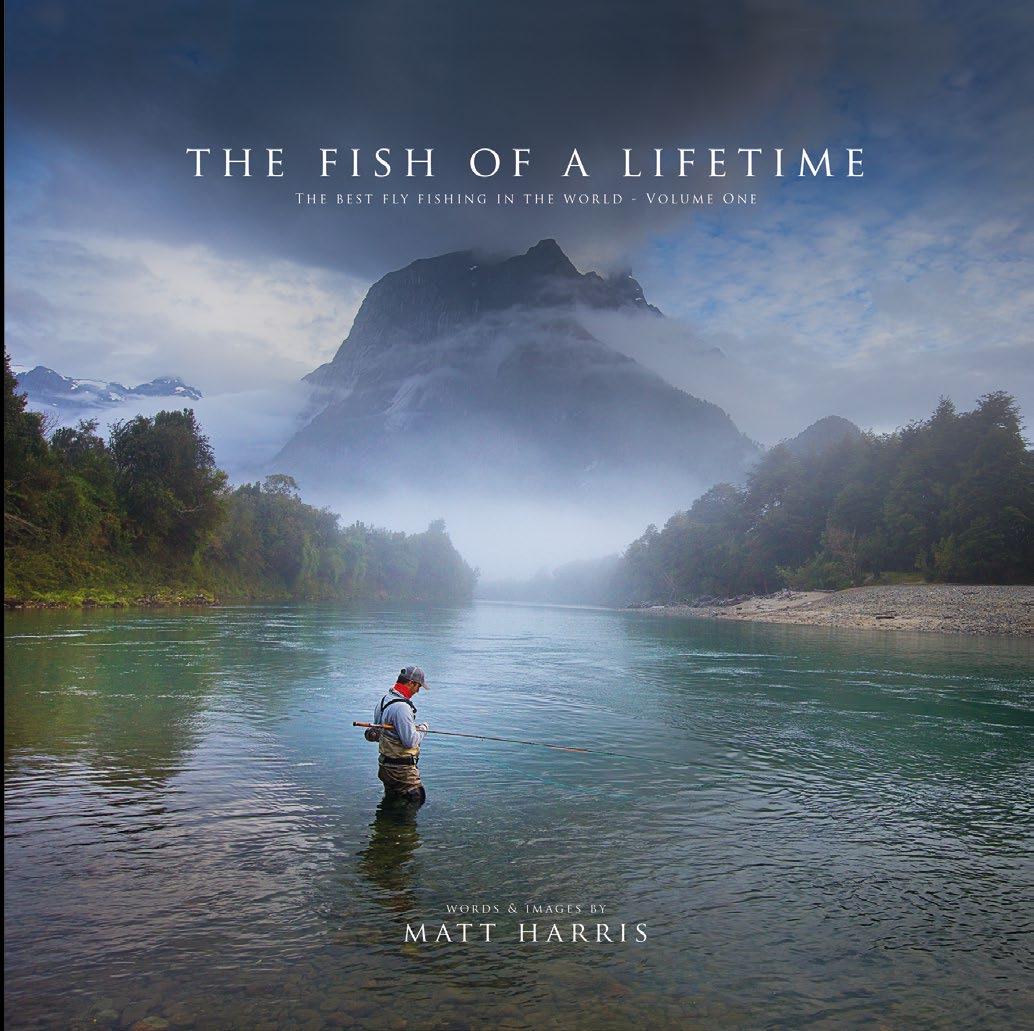
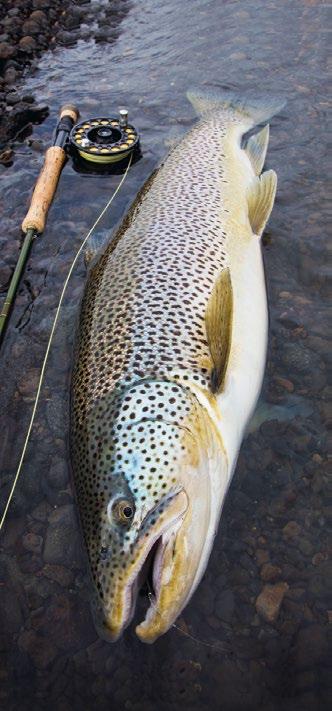
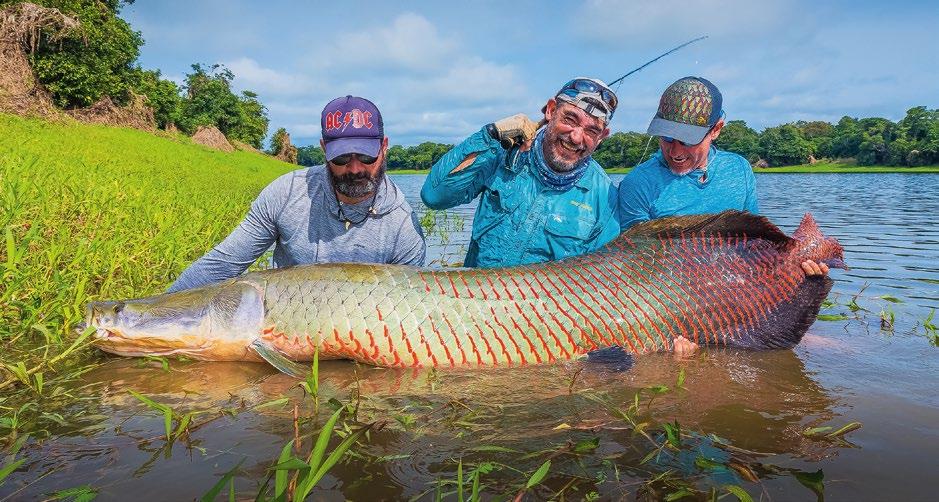
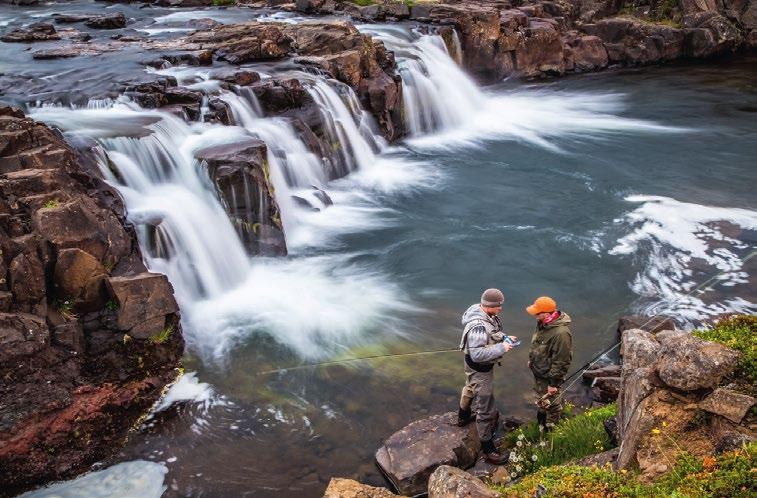
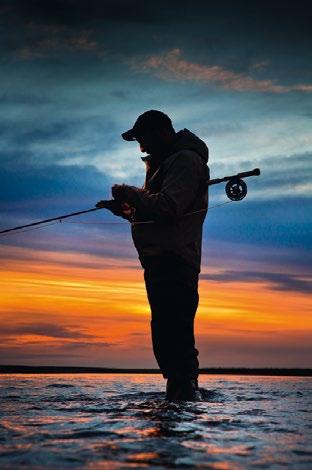
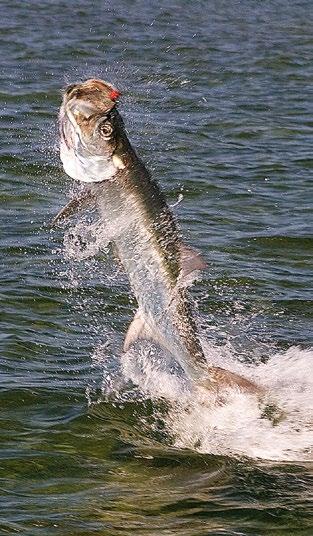
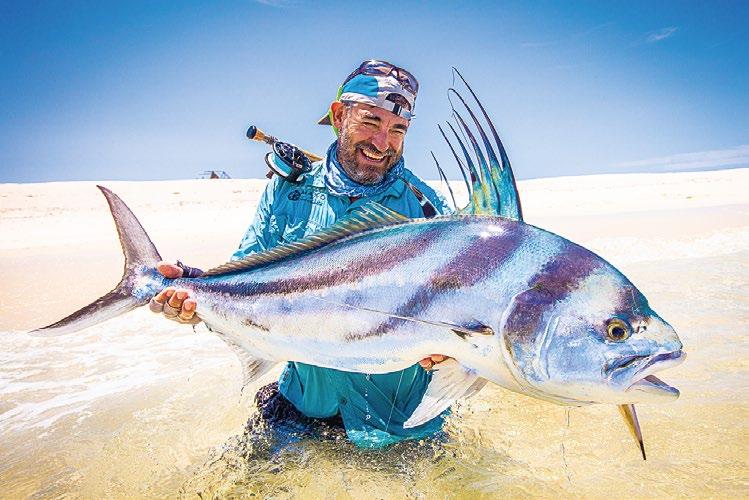
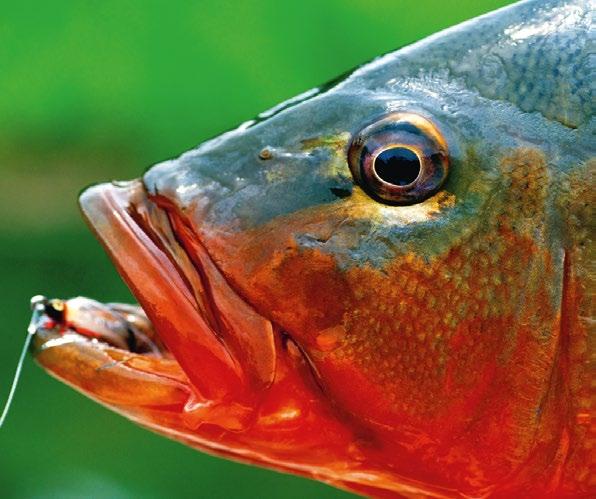

the fish of a lifetime
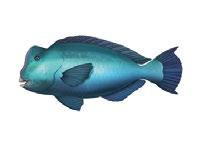
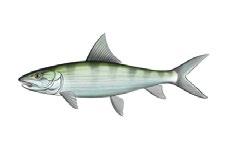

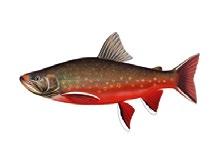
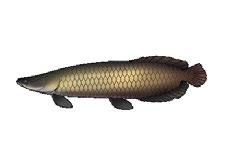

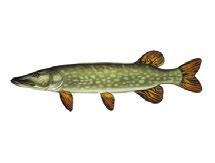
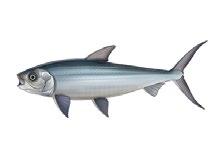
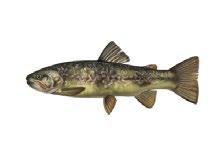
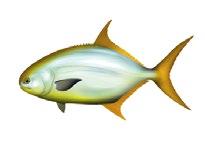
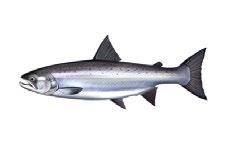
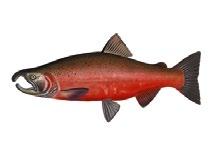
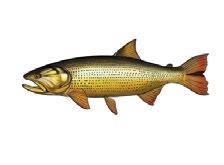
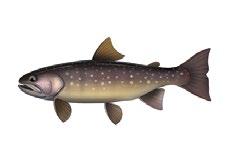




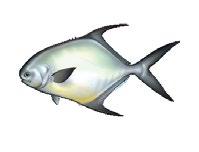
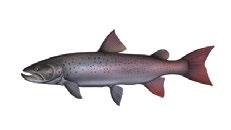

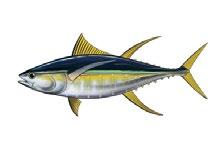
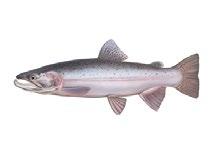
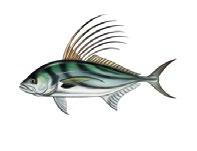
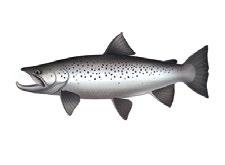


Legendary fly fishing photojournalist Matt Harris has released his long-awaited first book, a massive anthology that packs decades of entertaining editorial features and award-winning photography into one huge volume. Launched in time for Christmas, The Fish of A Lifetime, The Best Fly Fishing in the World showcases some of the 40 countries Matt has visited chasing 30 species with a fly rod. In this exquisitely produced, case-bound tome, which spans 42 chapters and 656 pages, Matt recounts his most memorable adventures and encounters with a bewildering array of colourful characters as well as some epic battles with wild and often huge fish in remote and spectacular locations ranging from the Arctic tundra to the Amazon jungle.
“My aim is for this to be the finest quality fly fishing book ever published. It is a true celebration of what can be achieved in hot or cold, salt or fresh water with a fly. Buy this book as the ultimate gift for the fieldsports fan who has everything, or indulge yourself and add to your own bucket list of destinations for your next fishing adventure.”
“Matt’s images are powerful, evocative, and dripping with authenticity. Matt has fished all over the world and covered almost every country and species the world of fly fishing embraces. With his masterful eye and his enormous enthusiasm, he has captured a spectacular diversity of locations. In this wonderful book, you will see the very best of Matt’s work.”
Simon Gawesworth • Internationally renowned fly fisherman and fly casting instructor


The Best Fly Fishing in the World, Volume One thefishofalifetime.com

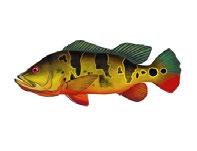
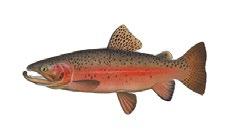
 Pacific Sailfish Guatemala
Sea-run Brown Trout Argentina Roosterfish Mexico Steelhead Canada • Russia
Yellowfin Tuna Colombia
Red Drum USA
Rainbow Trout Chile • Argentina
Taimen Mongolia
Permit Cuba Tarpon Cuba • USA • Nicaragua
Huchen Slovenia Giant Trevally Seychelles East Siberian White Spotted Char Russia Dorado Bolivia Coho Salmon USA Chinook Salmon Chile
Indo-Pacific Permit Seychelles
Marble Trout Slovenia Milkfish Seychelles
Northern Pike Germany Payara Colombia Peacock Bass Brazil
Arapaima Brazil Arctic char Canada Atlantic Salmon Norway • Russia • Canada Bonefish Bahamas Brown Trout New Zealand • Iceland
Bumphead Parrot Fish Seychelles
Tanzanian Tiger Fish Tanzania
Matt Harris • Author and photographer
Pacific Sailfish Guatemala
Sea-run Brown Trout Argentina Roosterfish Mexico Steelhead Canada • Russia
Yellowfin Tuna Colombia
Red Drum USA
Rainbow Trout Chile • Argentina
Taimen Mongolia
Permit Cuba Tarpon Cuba • USA • Nicaragua
Huchen Slovenia Giant Trevally Seychelles East Siberian White Spotted Char Russia Dorado Bolivia Coho Salmon USA Chinook Salmon Chile
Indo-Pacific Permit Seychelles
Marble Trout Slovenia Milkfish Seychelles
Northern Pike Germany Payara Colombia Peacock Bass Brazil
Arapaima Brazil Arctic char Canada Atlantic Salmon Norway • Russia • Canada Bonefish Bahamas Brown Trout New Zealand • Iceland
Bumphead Parrot Fish Seychelles
Tanzanian Tiger Fish Tanzania
Matt Harris • Author and photographer
CHANNEL
The New Streaming Platform for the Discerning Fly Fisher
Two former Dutch executives and fly fishermen, and an IT-development team have come together and spent the last two years developing their very own, customized streaming platform in order to showcase the very best fly fishing content; from films and podcasts to books and magazines. The streaming platform is now available, teeming with stellar content from around the globe – and In the Loop Magazine is proud to be featured in the magazine section.
We’ve sat down with Hans de Leeuw from Fly Fisherman’s Channel to learn a bit more about the idea behind the platform and what new sub scribers can expect in terms of content and benefits.

AN INTERVIEW WITH FLY FISHERMAN’S


What is Fly Fisherman’s Channel and how did the idea come about?
We are a global on-demand streaming channel focusing on fly fishing-only content and we’ve just gone live in over 160 countries. The idea behind Fly Fish erman’s Channel came from our person al experience.
A lot of information and content about our passion is scattered all over the internet. It just takes a lot of time to find all the great stories and relevant information. That’s how the idea behind Fly Fisherman’s Channel emerged.
What if there was one place where I could find the best content our sport has to offer? So, our goal at Fly Fisherman’s Channel is to bring best fly fishing stories together under one roof – and to feature it in an undisturbed, commercial-free environment.
How can content producers get featured on your platform and what are the benefits?
If you have great fly fishing content, we want to talk to you! The best way to find out how to get featured on our channel is to just go there via our website and ‘take the tour’.
Basically, we have two complimentary programs for content partners and you can find more information about those programs in the footer of our landing website. First of all, there is the Revenue Share program. We reserve a percentage of all the subscription revenues in the Revenue Share pool and a Content Partner then gets a percentage of the Revenue Share pool based on the streamed minutes and the points they collect.
What sets you apart from other content platforms online? What really sets us apart is that we focus exclusively on Fly Fishing. And the fact that we are covering all types of content: so besides video content you can find books, magazines and podcasts on our channel. And with more content types in the pipeline! You can find it all on our channel with a very intuitive and famil iar look and feel - and nicely categorized for super easy navigation.
We believe this is a very fair and transparent method because the content partner with the most points get the biggest piece of the pie. The other program is the Ambassador program. This is especial ly interesting if you have a large social media fan base. Just reach out to us and we can tell you more about it! A content partner can keep track of all their data and earnings in their own Client Portal.
One of the key features of our platform is a content rotation schedule in each category.
So, every few days, the covers in a cate gory rotate and get a different position. The goal is to give all content, also older content, a shot at a first page position. This creates a more even playing field for Content Partners in terms of being visible and collecting streaming points.
For brands that make great content or for travel partners or publishers we can also insert a CTA button taking sub scribers directly to the partners website. Not only adding value to our Content Partners but also to our subscribers.
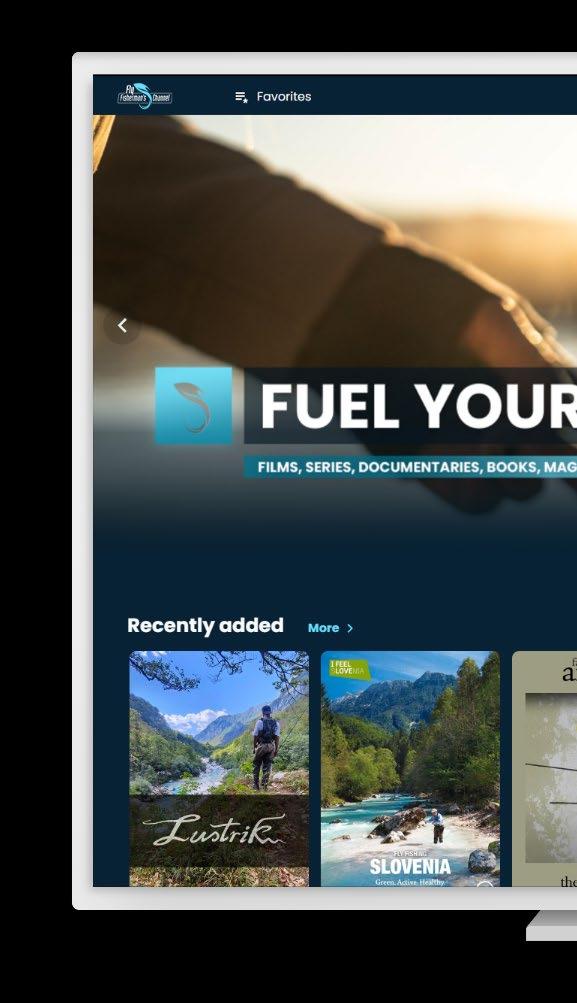
What are your plans and ambitions for the future?
One of the things we are looking at is to cover more destinations. Both “do it yourself” style as well as through travel companies. Really adding value to your next fishing trip with expert insights. We all dream about that next fishing trip to that special location and providing inspiration for that on our channel just feels like the right thing to do. But also expanding our Read section with great books, magazines and short stories is important to keep serving the fly fisher. But we are also looking at a photogra phy & art section for the best fly fishing photographers & artists. That would be pretty cool, we think. Give them a glob al platform to show their work.
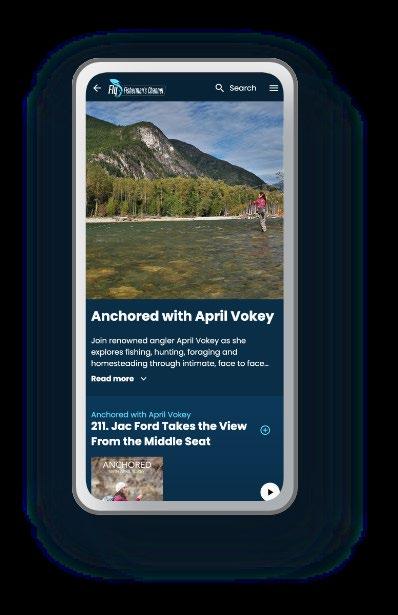
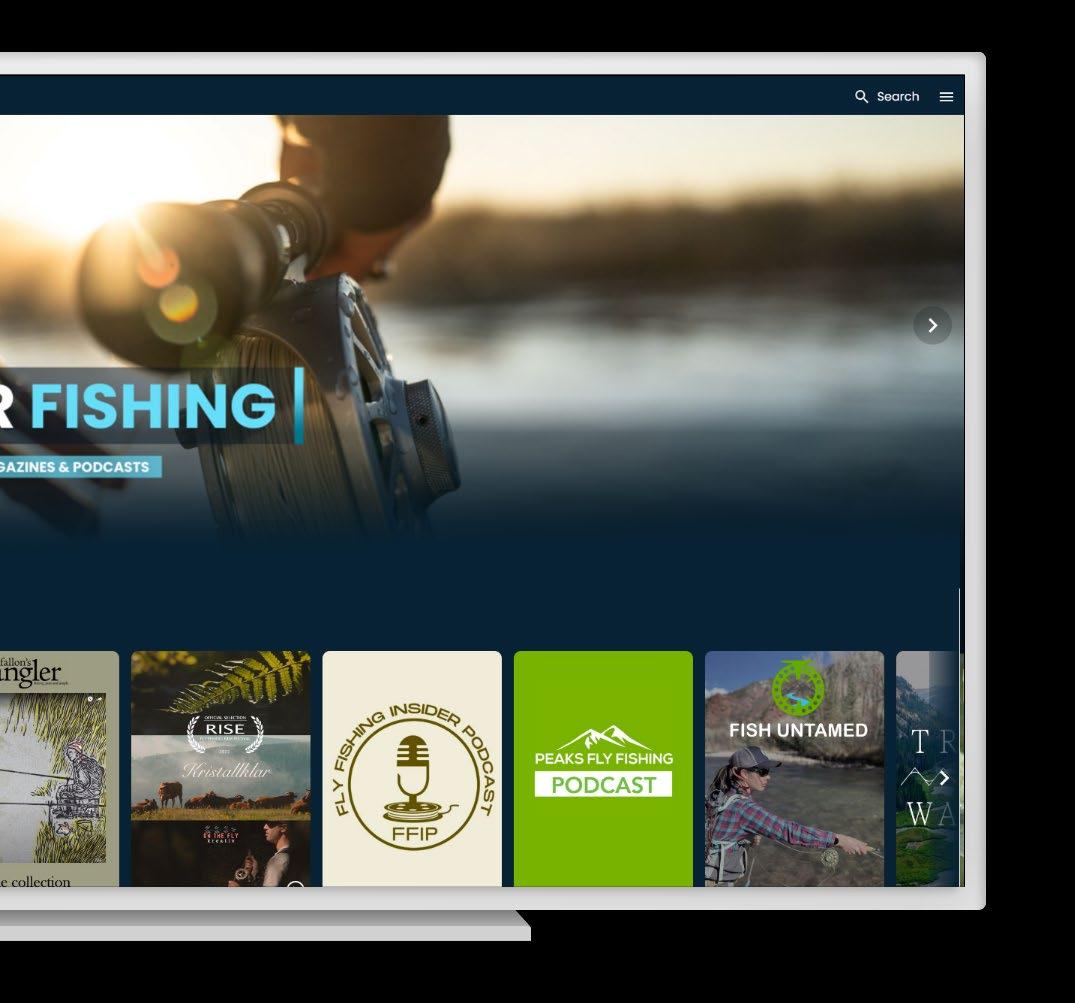
 Dutch fly fisherman and entrepreneur, Hans de Leeuw, is the founder and architect behind Flyfisherman’s Channel”
Dutch fly fisherman and entrepreneur, Hans de Leeuw, is the founder and architect behind Flyfisherman’s Channel”
One of the advantages is that we have the streaming technology in-house and that we can use that technology for servicing our customer. A good example of that is that we are already working on updating our built-in reader for books and magazines, we think it needs the option to also show spreads instead of only single pages so you can really get the full visual expe rience with double page photography.
And, of course, we also have some ide as for original content. So, lots of plans and ideas and our ambition is to keep evolving and getting better at serving
fly fishers around the globe with great stories, insights, and inspiration. And make Fly Fisherman’s Channel the best partner for content creators be cause without their creativity, dedica tion, and hard work there would be no stories to tell.
Ultimately, we want to fuel and ampli fy the conservation voice to save what we have and restore what we have lost. Being fly fisherman ourselves and spending a lot of time in the outdoors this is close to our hearts, but we still need to figure out what our role as an organization is going to be.

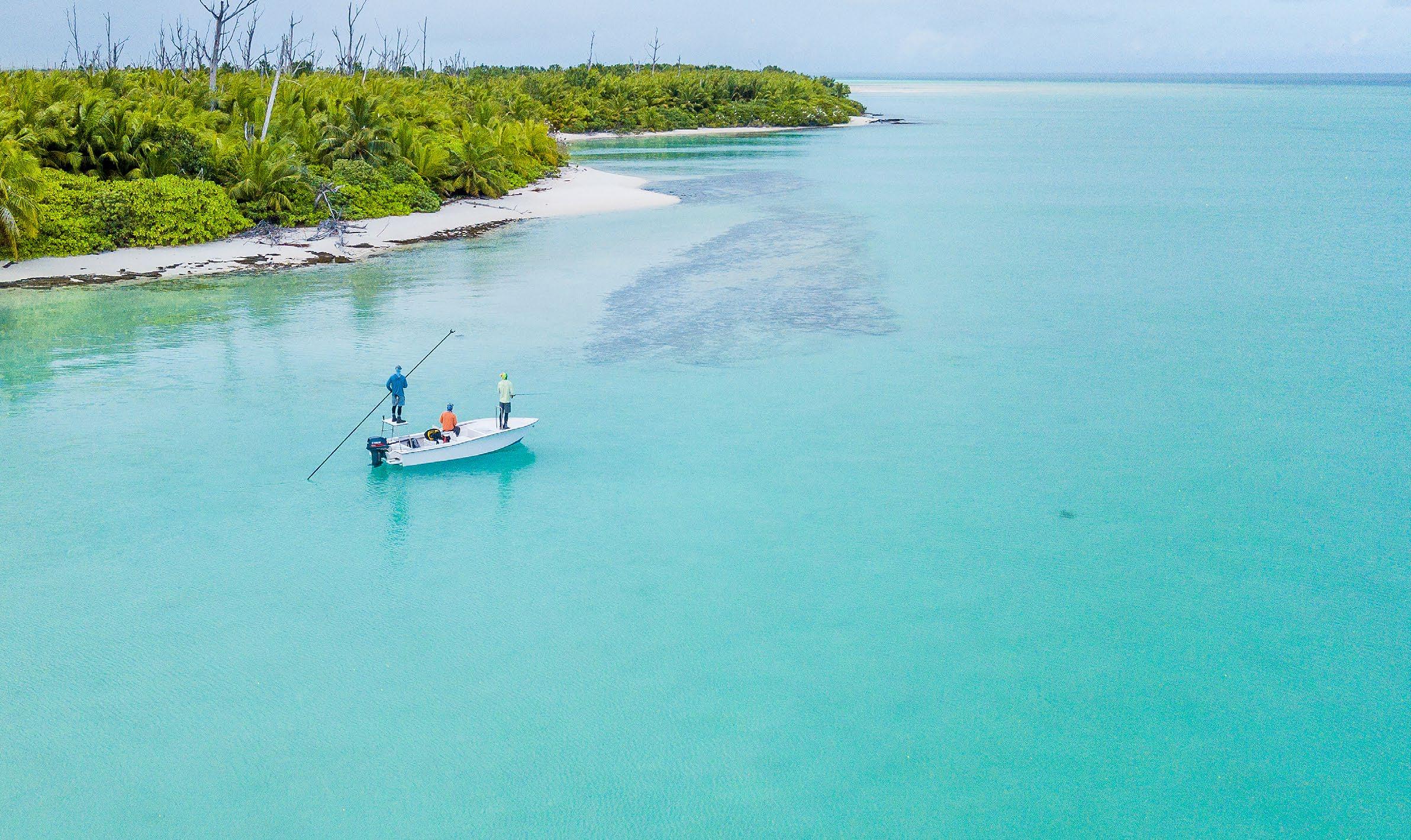

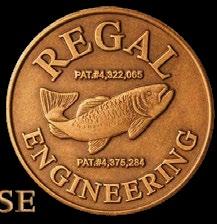
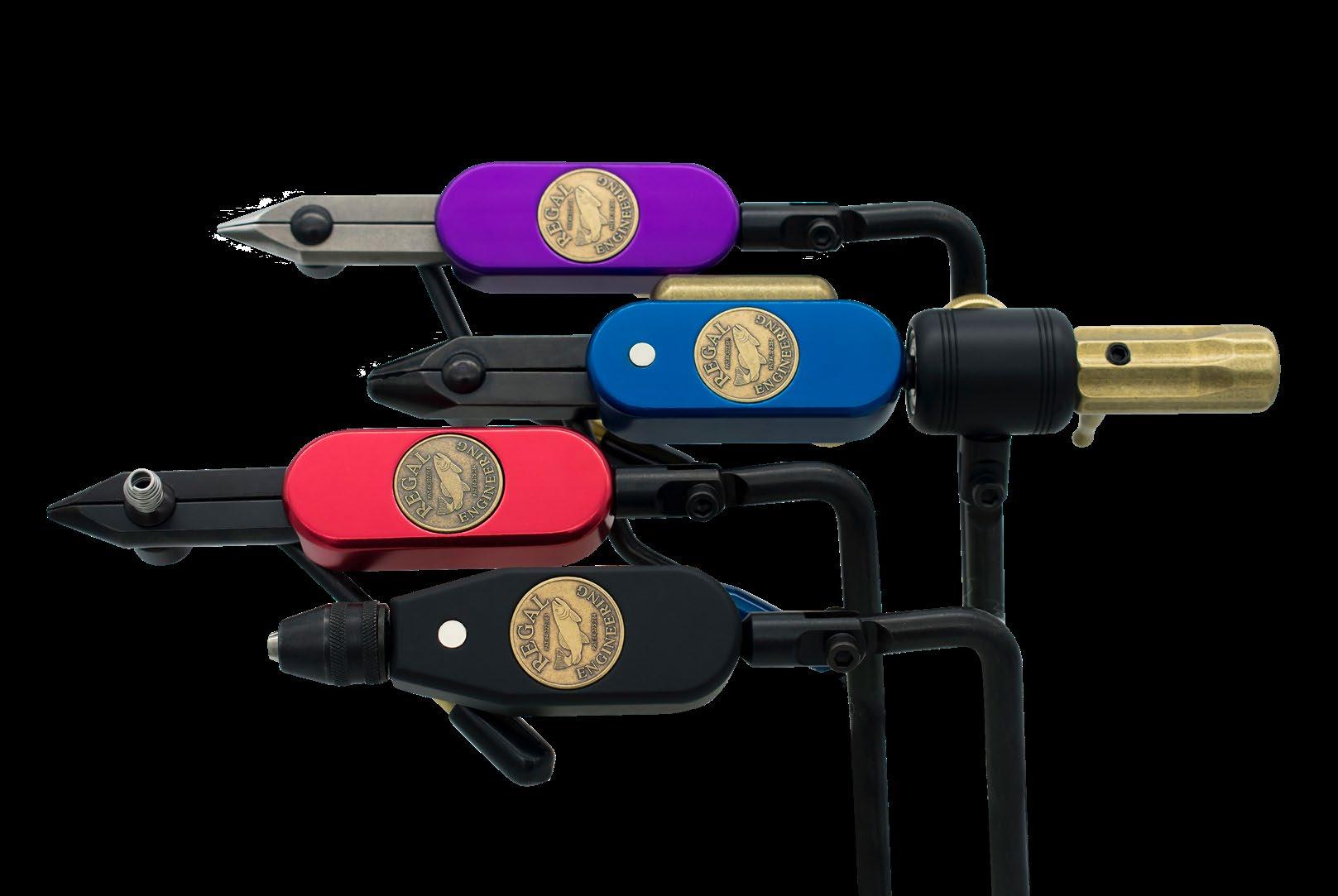
PLANNING YOUR NEXT DESTINATION? START IT WITH A REGAL PLANNING YOUR NEXT DESTINATION? START IT WITH A REGAL www.regalvise.com Regal, Where Tradition
Tradition Meets Innovation





www.regalvise.com
EDITOR’S THE VIDEO CHOSEN
FARQUHAR - FULL FILM
 By FLY FISHING NATION
By FLY FISHING NATION
Farquhar Atoll - one of the most remote Outer Islands of the Seychelles, located in the middle of the Indian Ocean, not far north of Madagascar. A vast geological past lies behind this elevation of volcanic rock, creating a unique habitat for both land and marine life. However, a long history of commercial fishing and ecological exploitation overshadowed the fate of this incredibly fragile ecosystem for a long time. Luckily, in recent years, local authorities have started to protect it by implementing sustainable use practices.
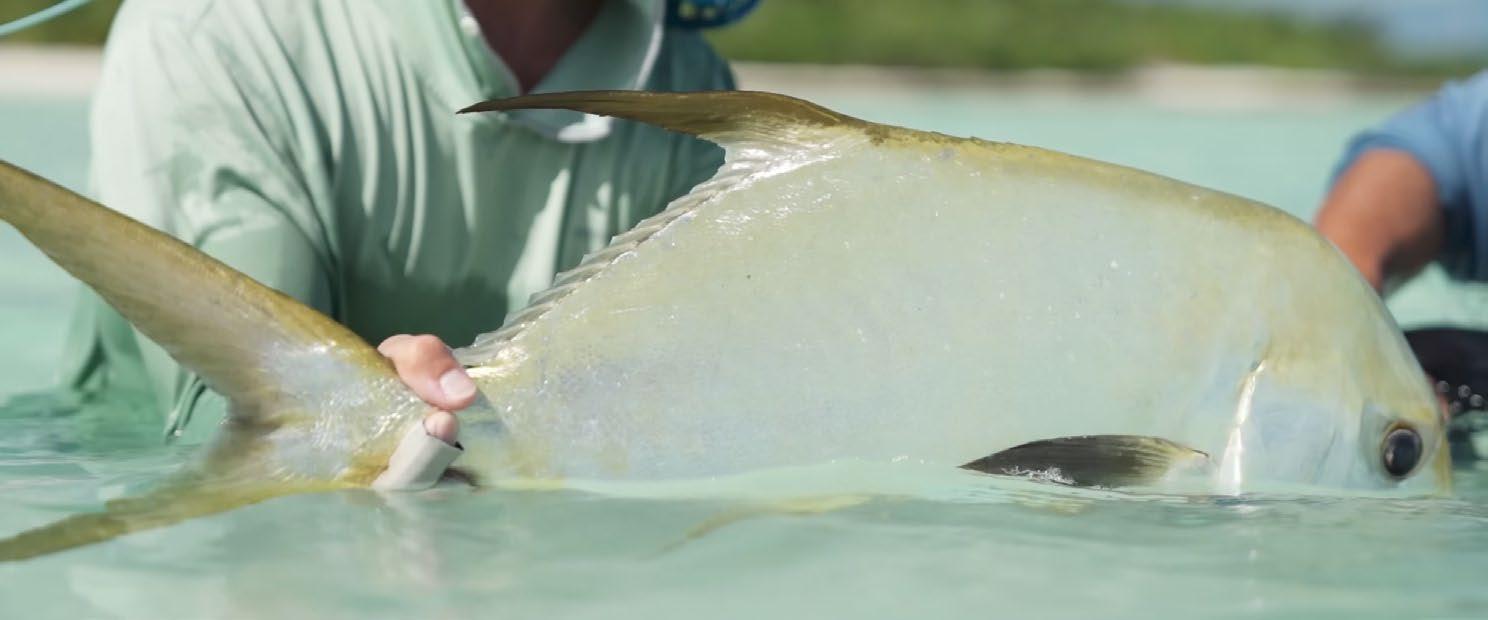
The latest addition to our growing (Made In UK) range of high quality everyday fly boxes. The Streamer Max is a practical streamer box that stacks efficiently in your boat bag. It has ample head room to protect your largest streamers or foam dries. With doublesided slotted foam, there’s endless options for storing flies of all sizes. As a lightweight box that comes in three colours, it’ll become your go-to meat locker. Size: 18x27x6 cm.
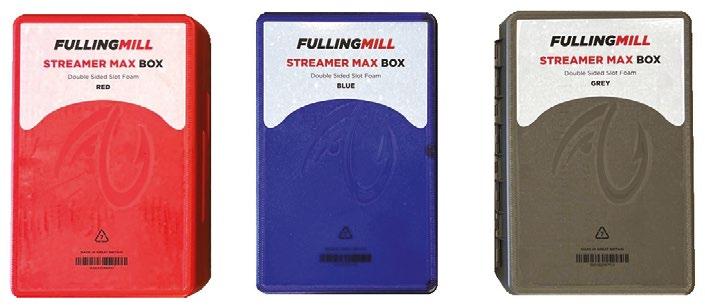

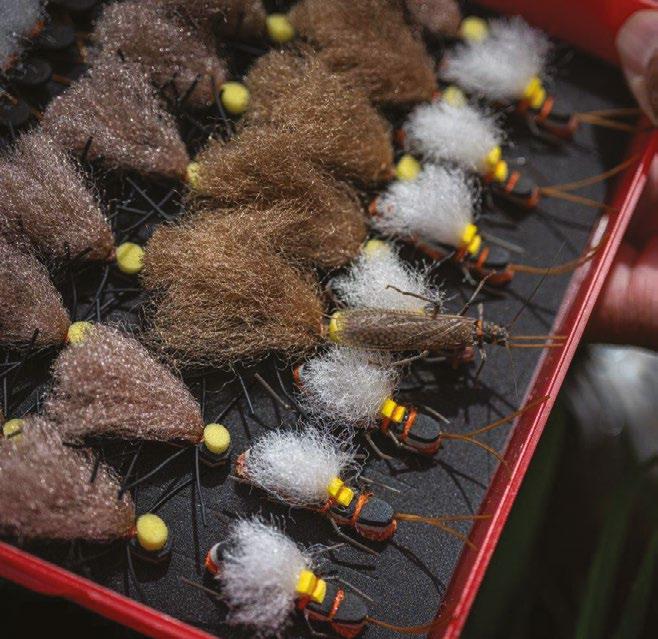
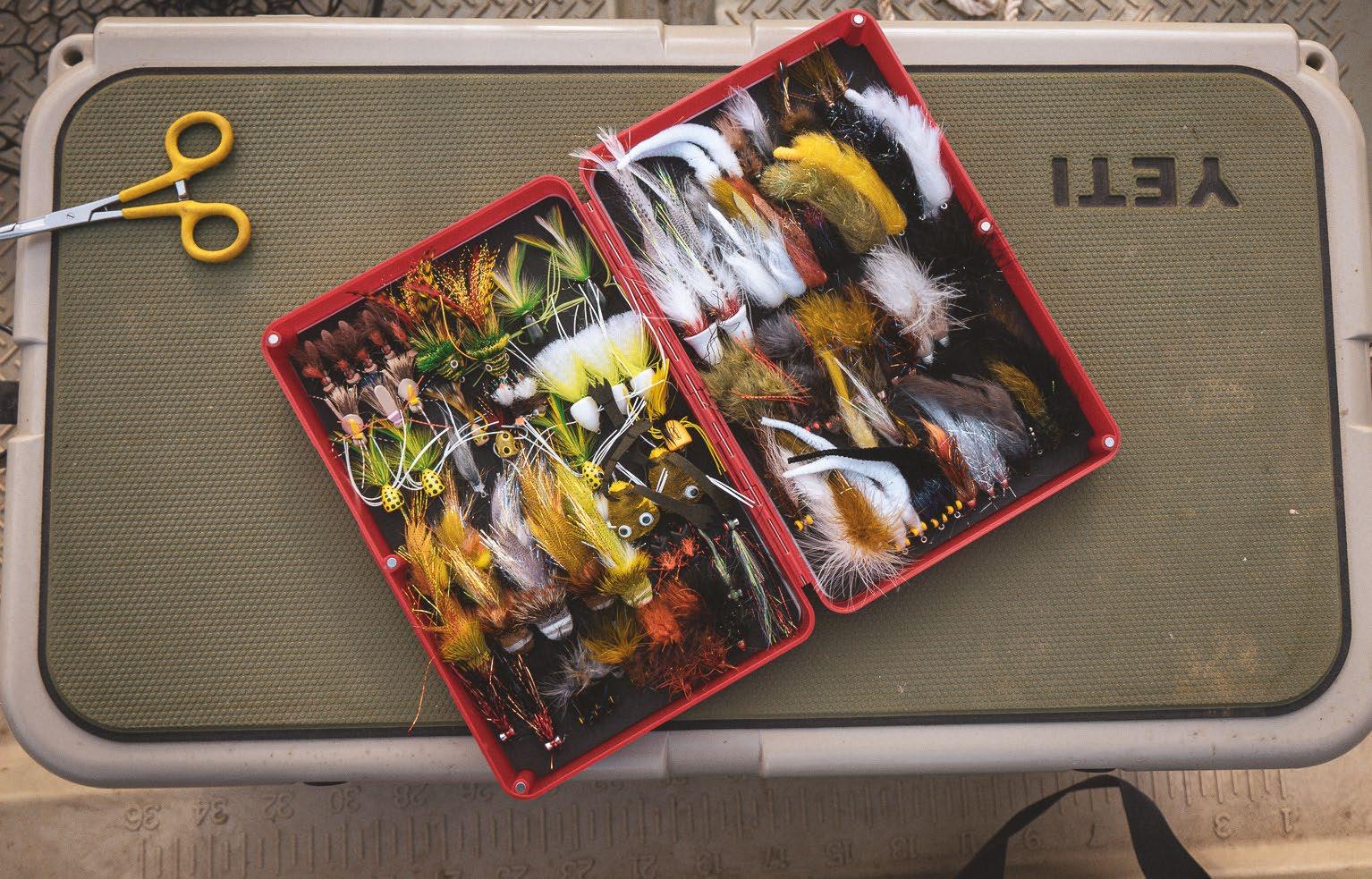
SHOP ANYTIME AT FULLINGMILL.CO.UK
3 COLOURS TO CHOOSE FROM
IN STOCK NOW!
Introducing the STREAMER MAX
As anglers, we see the
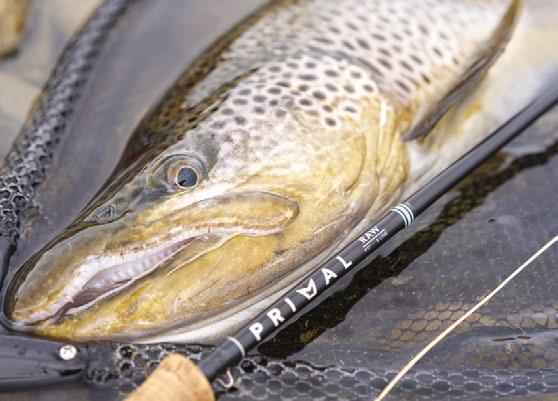
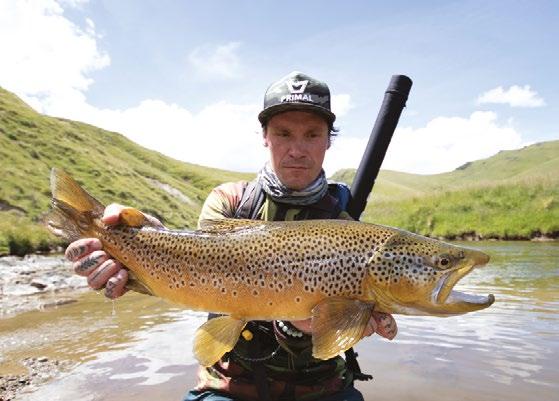
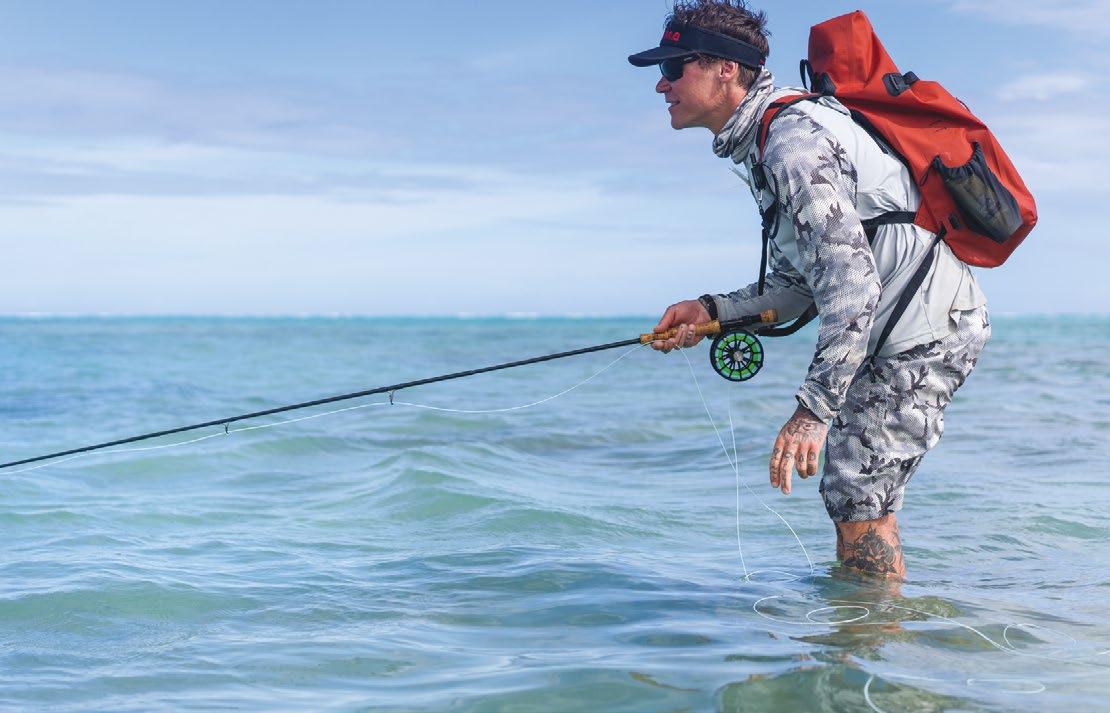
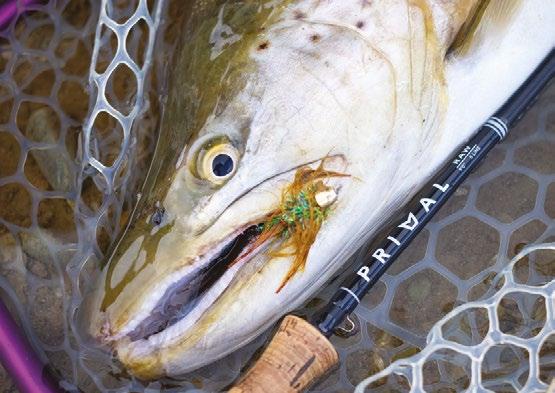
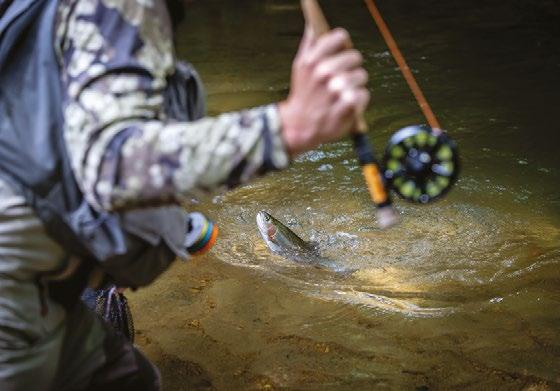
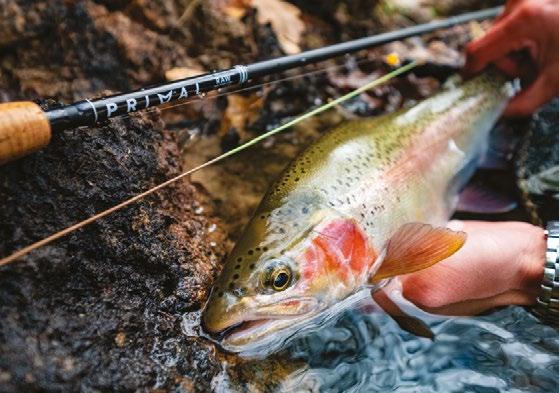
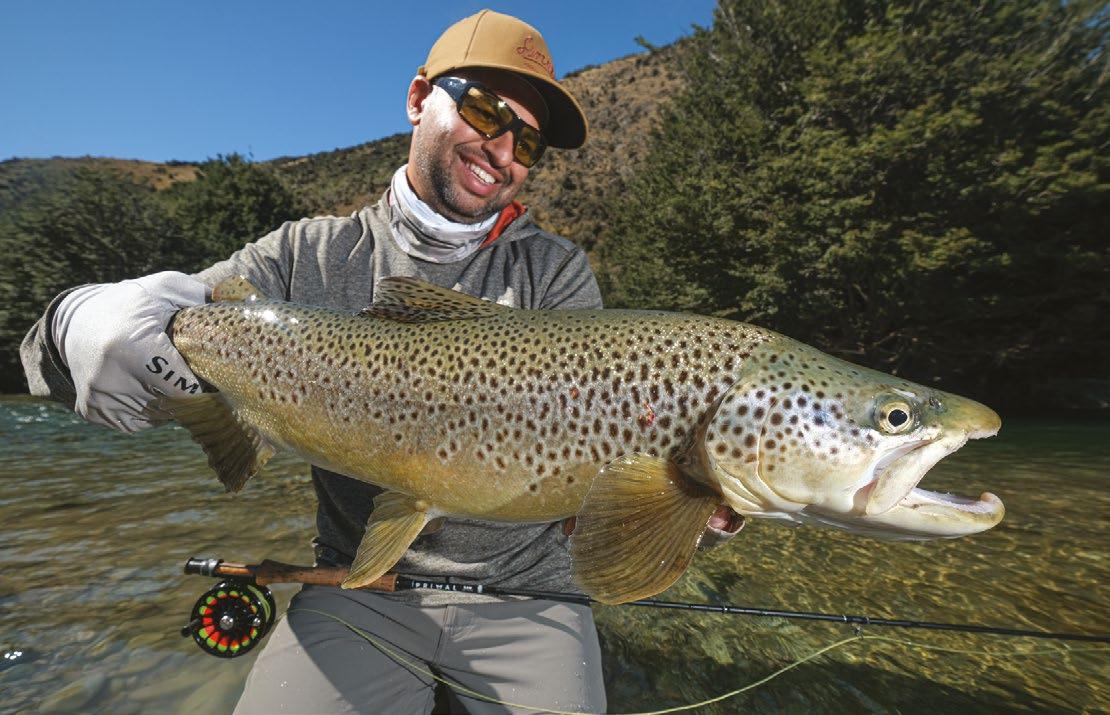
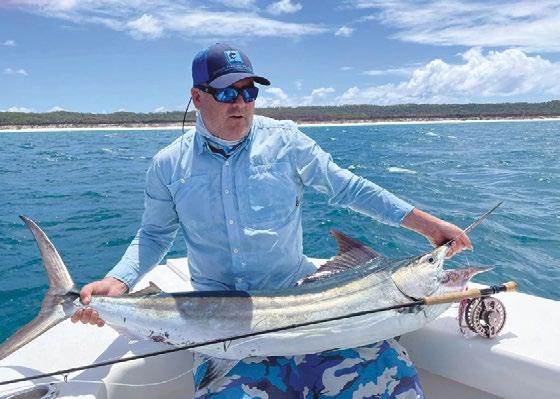
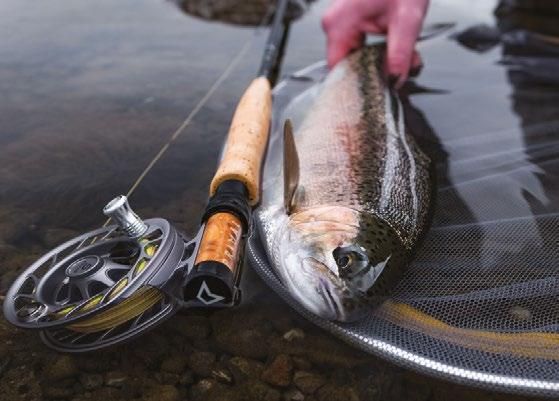

WWW.MANICTACKLEPROJECT.COM
INSTINCTIVE PERFORMANCE DEFINITIVE STYLE
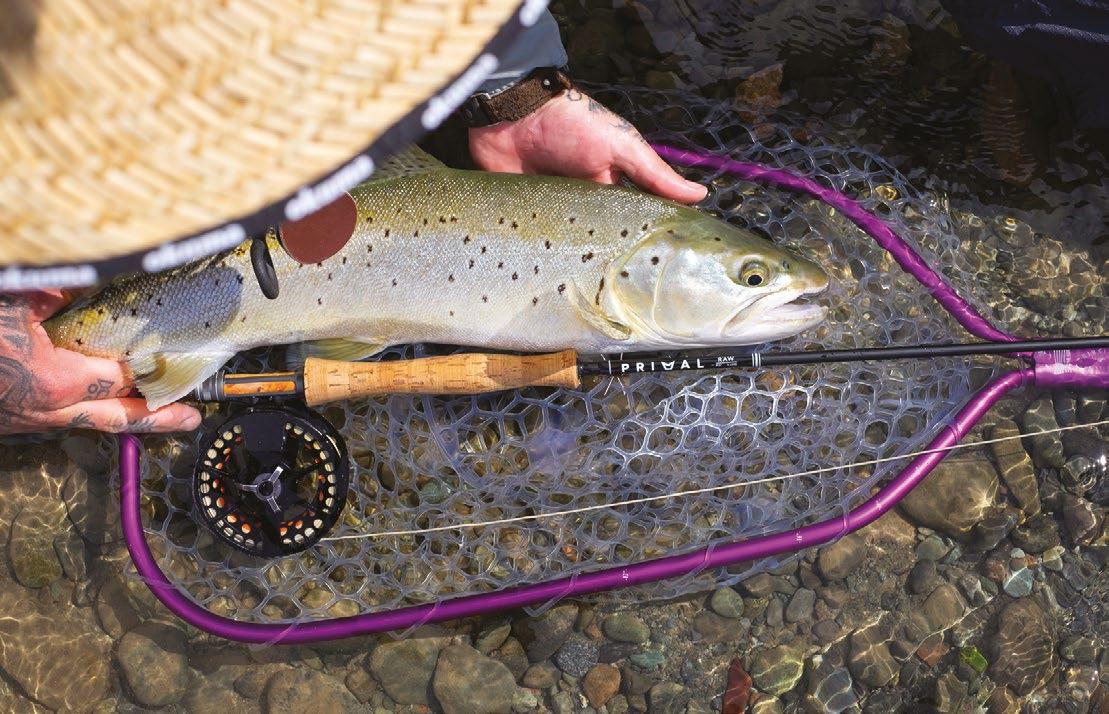
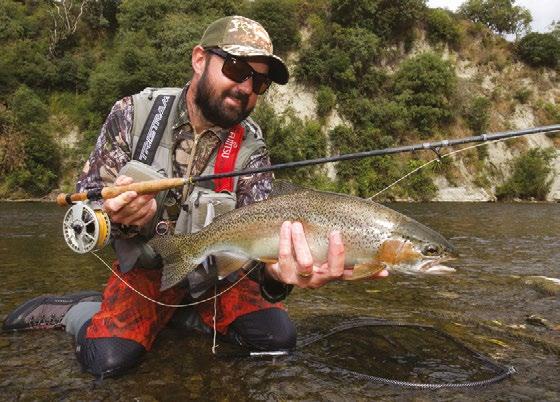
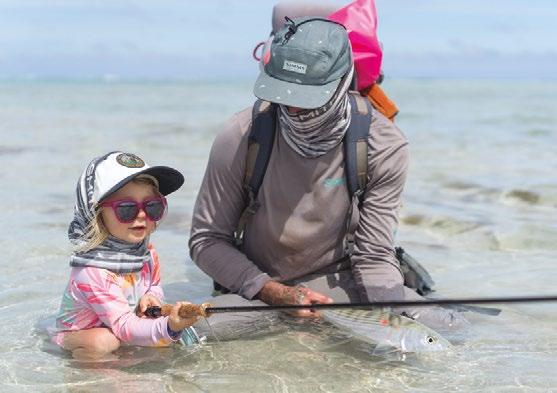
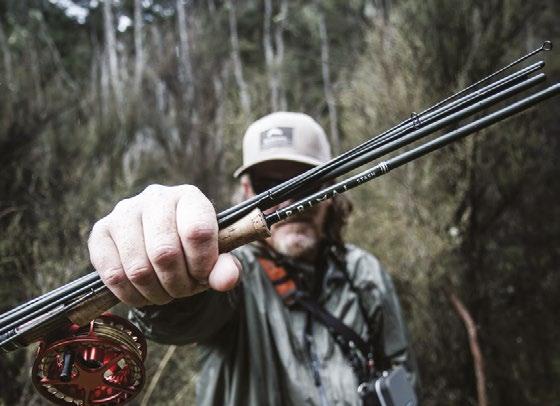





WWW.MANICTACKLEPROJECT.COM the
world differently
Thomas Weiergang
What Danish Fly Fishing Art Scene?
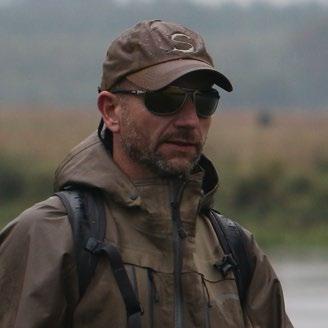 By THE EDITORIAL STAFF Pictures by THOMAS WEIERGANG and DANIEL LINDVIG
By THE EDITORIAL STAFF Pictures by THOMAS WEIERGANG and DANIEL LINDVIG




Unknowingly, you might have seen Thomas Weiergang’s paintings on moving, fabric canvasses when, randomly, coming across fellow fly fishermen. Huh? Danish fly fisherman and artist, Thomas Weiergang, is a house-hold name in Danish fly fishing circles, but abroad he might be best known for having provided fine trout and salmon artwork for several Simms t-shirts.
A true multi-talent, Thomas Weier gang has carved out a name for himself as a great and innovative fly fisherman, fly tyer, freelance writer, photographer, instructor, and artist. He’s just one of those guys, who does it all – with an apparent air of ease and genuineness about him.We’ve sat down with Thomas for a chat about his artwork, how he got into fly fishing, and how everything has, somehow, come together and formed his life.
somewhere, I have a very early draw ing of two crucian carp. I did have a camera at that time, but it wasn’t very good, so I just drew them instead, because, well, I was always drawing something anyway. I guess the syner gy between photography and painting has followed me ever since.
Have you developed a specific painting technique along the way?
Can you tell us a little bit about your background and how you got into painting?
I’m not trained in painting as such. I do have a degree – an MA, and teach arts at a high school. I guess the in terest came with the passion for an gling as such. I recall the urge to capture the overwhelming experience of holding a live, slimy fish in my hands from a very young age. In my folders,
I work with paper. Some works are made with acrylic paint alone, others are mixed media. Pen, colour pen cils, ink, pencil. I like to use whatev er technique fits the subject at hand. But I stick with the paper, because it allows me a degree of transparency in the acrylic paint as well as using ink and pen for details and such.
But paper is a tough material to use, because so many things can go wrong. It’s very hard to correct mistakes. But I like the honesty in that.

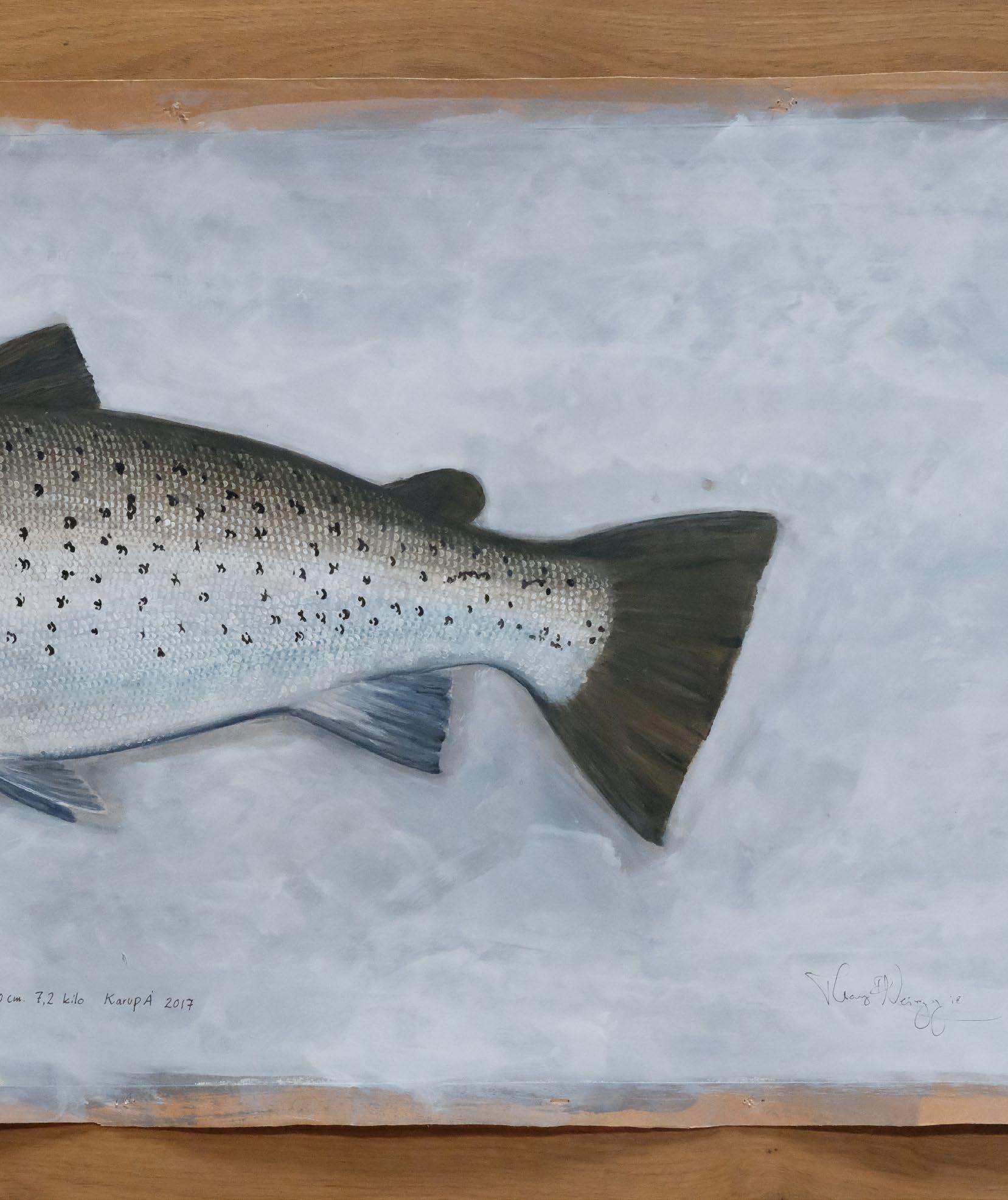
What has compelled you to paint fish and fly fishing motives?
Well, how about this counter ques tion: What compels us to celebrate the quarry we spend so many hours thinking about? I recently saw some cave paintings in a copy of a Nation al Geographic issue from 1967. Why did the hunter-gatherers paint their prey and themselves on a hunt?
Maybe the paintings are representa tions of their hopes and dreams; the successful killing of an animal. May be they painted a great and success ful hunt in order to celebrate and remember their catch? Perhaps they were trying to please and worship their gods that way.
I really don’t know why the urge to paint fish sometimes takes hold of me. Maybe I’m just primitive in that respect?
What’s the fly fishing art scene like in Denmark?
What Danish fly fishing art scene? I guess there used to be a Scandinavi an scene with the Swedes leading the way. If there is one today, I’m left in the dark. But really the flyfishing art
scene, today, is global. I find great pleasure and inspiration in following artists from all over the globe on In stagram.
How did you get started fly fishing and why?
Nobody actually taught me to fly fish. I just made a note of what the heroes of the day were doing by reading all I could, and then started out…
My first attempts were in a very small, treelined creek, where I tried to catch browns and rainbow trout on dry flies. It was a tough place to practice but I, somehow, got the hang of it. At that age, I was limited to waters I could ride my bike to. Later, I joined my local sportfishing club and was able to try flyfishing in different Danish waters: The larger rivers out west and coastal flyfishing for searun brown trout.
What is it about fly fishing that intrigues you?
Famous authors have tried to answer that question for ages now. Some have come close. Let me tell you what fascinates me the least instead:


What kind of carbon fibres my rod is made with or which kind of coating my fly line has got. Those kinds of things.
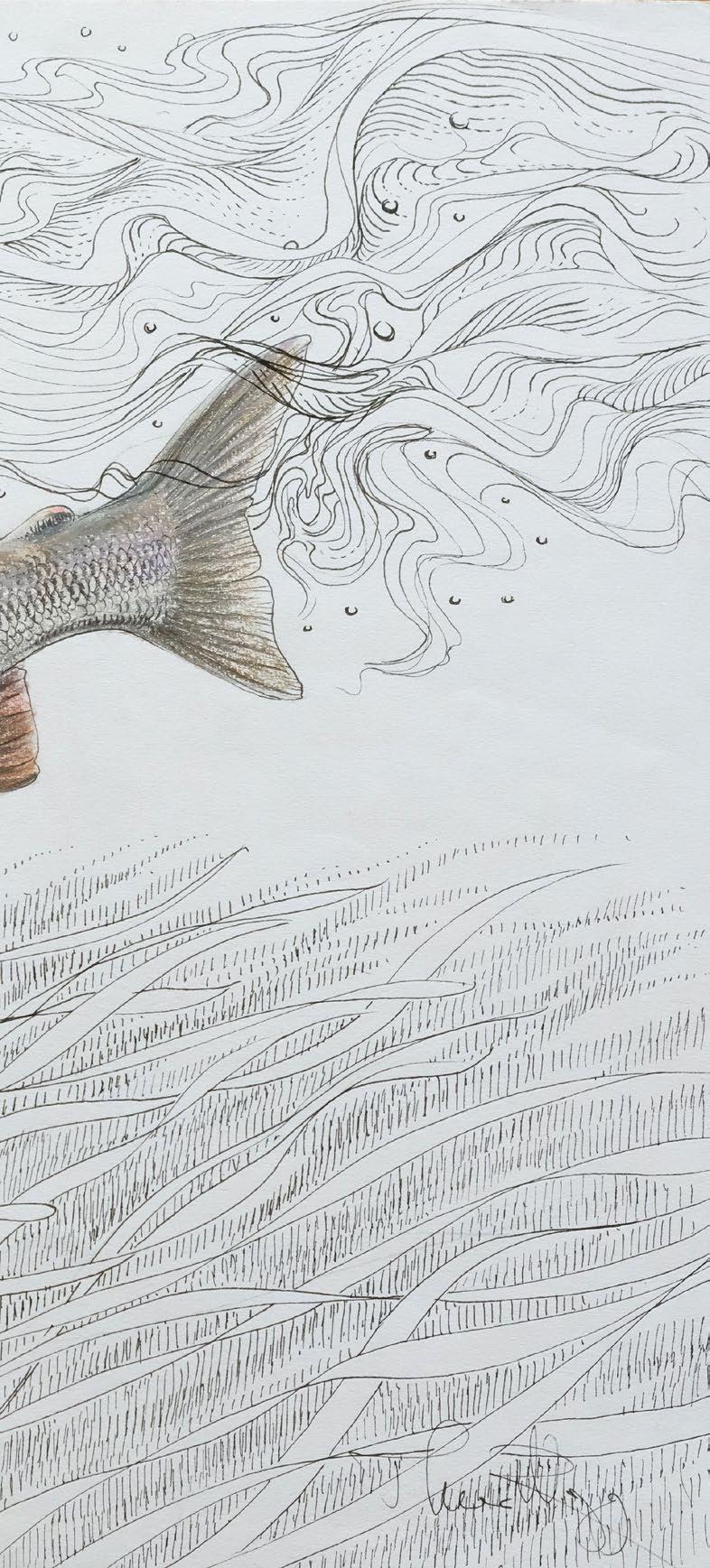
Don’t get me wrong – I’m a sucker for great gear, and can’t stand tools that don’t work for the job. What is fascinating is what happens to your mind when your tools work and you are at one with the water. You would think that there is a barrier between you and the fish, because you are connected to the fly with a long stretchy fly line. But the oppo site is the case: You feel sublimely connected to what is going on at the end of your line. I guess that is what I’m fascinated with – the connec tion to the underwater world.
But what is interesting as well is what happens to your body as a whole: Even if I only spend an hour with a fly rod, I feel more at ease afterwards than I do if I had used my spinning gear. Maybe it’s because I use my body in a more harmonious flow. Somebody with knowledge of what happens to your brain during meditation ought to look into it.
The reverse is true as well – If I come home from a day at the river where gale-force winds have made me feel like the worst fly caster in the world, I feel upset and stupid. But I still bring the fly rod next time because I need to figure out how I can do things right.
It’s a compulsion to master some thing horribly difficult and won derfully simple at the same time. Like painting the perfect fish against all odds.
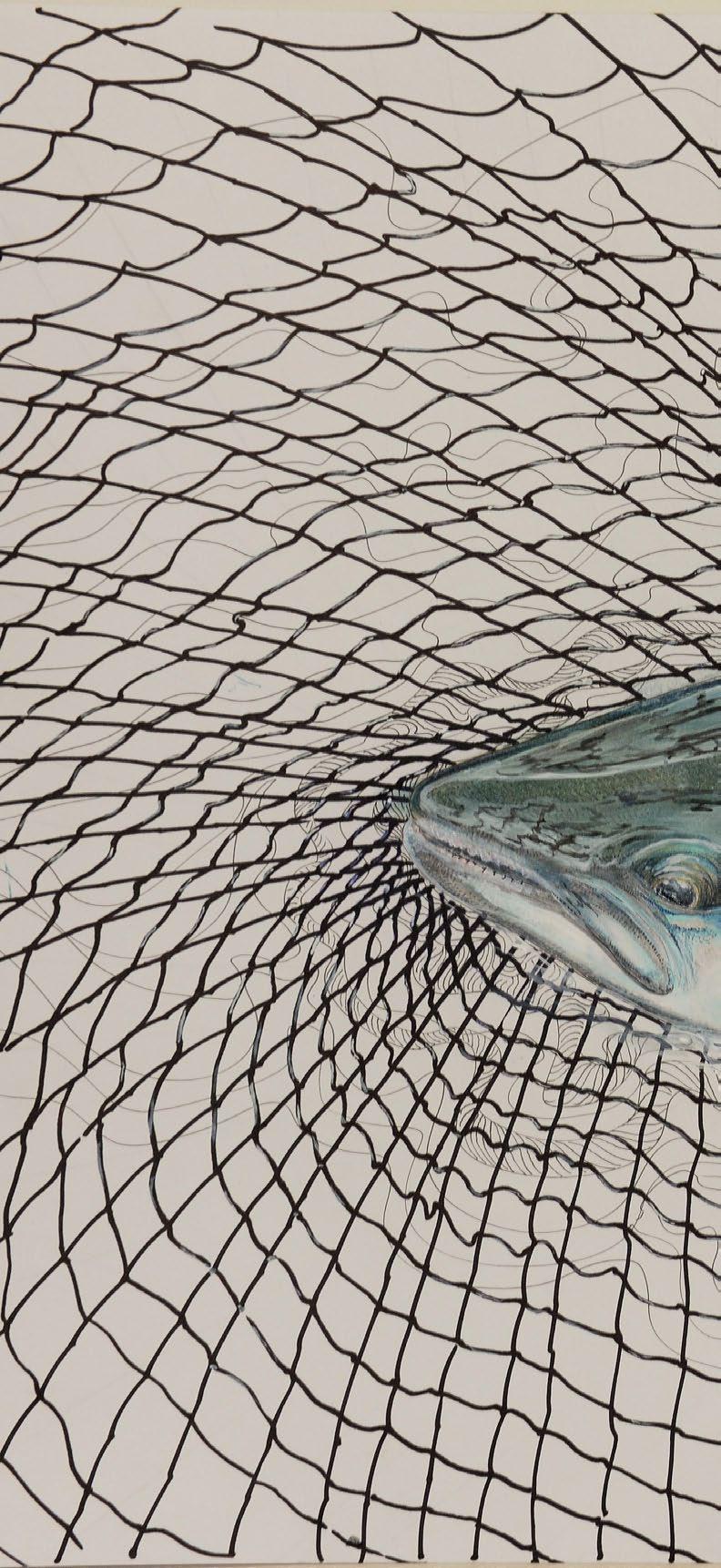
How do you split your time between fly fishing and painting? I don’t. If there is even the remotest chance of great fishing to be had, I go fishing. Painting must wait until the conditions are horrible. Which means precious little time for painting, I’m afraid.
The trouble is, I fish all kinds of species with all kinds of methods, so there are very few days I can’t go fishing. In fact, calling me a fish painter is a big misnomer. I’m just an angler who sometimes paint a fish.


In your opinion, do fly fishing and painting complement each other – and if so how?
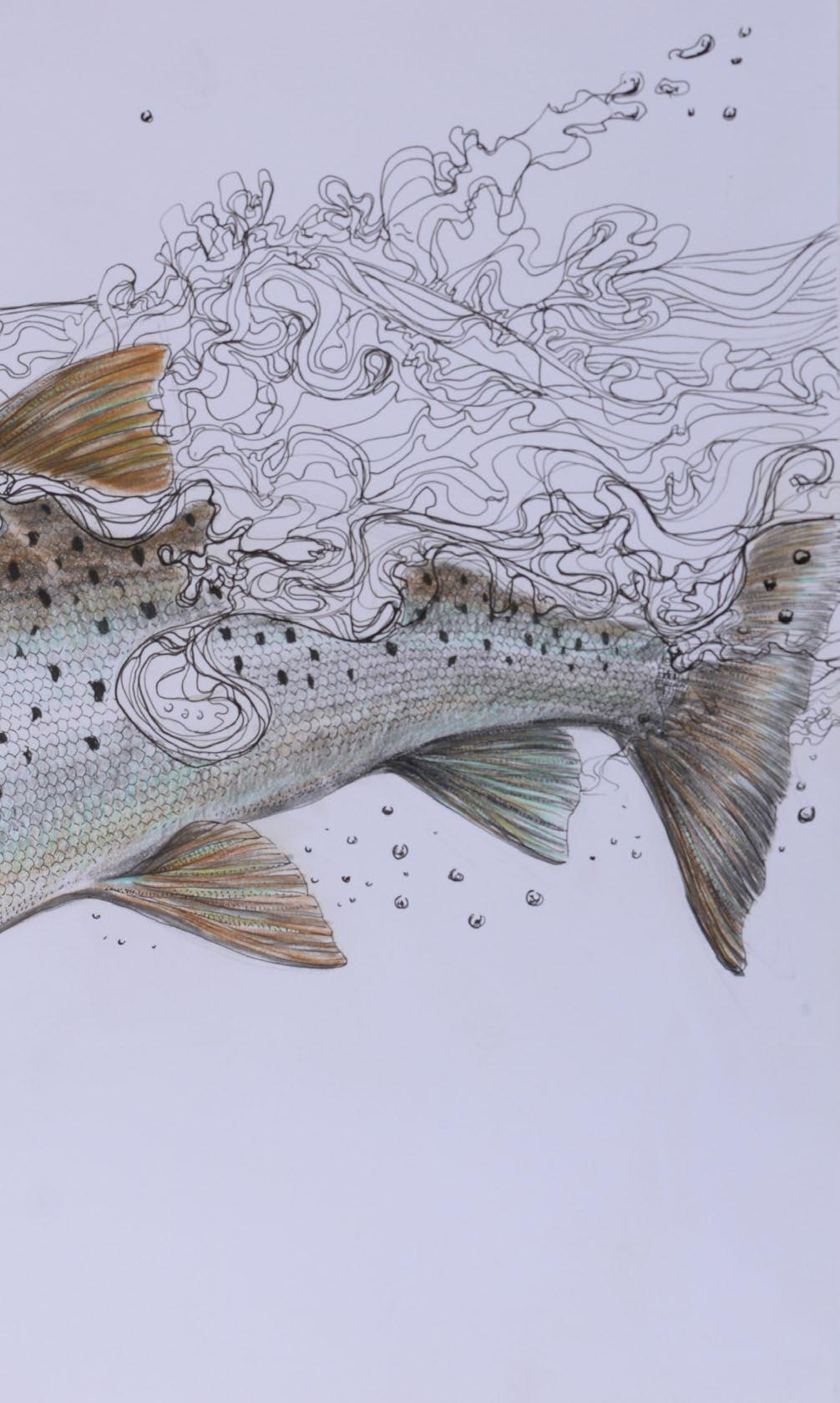
I would prefer to talk about art and flyfish ing in general. Look at a Durham Ranger. Such elegance and balance of colour cannot be a mere fluke. May be fly fishing accompa nies aesthetic ambition for perfection in ways other kinds of angling do not.
In my years as a freelancer, I have watched skilled fly anglers for hours through the lens, to capture that moment when the line, caster and surround ings are in perfect bal ance within the frame. And isn’t that what we do when we are stand ing there in the stream wavin’ a stick?
Has fly fishing helped you become a better painter – or vice versa?
If fly fishing made me a better crafts man, I should flyfish more. I am forever dissatisfied with the results on the paper. But maybe it is the other way around. All the hours spent with the pen or brush have been spent by the riverside. I’ve taken some fabulous trips in my head while doodling scales. Maybe that has helped my fishing.
What are your aspirations as a fly fisher?
I don’t really have any. I wish fish ing in Denmark was better and more varied, because I love dry fly fishing just as dearly as I do salmon or se atrout fishing, but things are looking grim when it comes to brown trout and grayling. These days I guess it’s a bit politically incorrect to talk about dream destinations, and I know that most fly fishers close their eyes and think about anything but the co2 bill, when they plan their next dream trip. I’ll probably do the same. Butthat said, there is lots of great fishing to be had in my neck of the woods and I enjoy that.
Do you have any cool projects coming up; fishing- or art wise?
Not really. Let’s see…
Any advice to fellow fly fishermen, who aspire to do fish art?
Yes. Remember that what you draw, paint or model is a representation of YOUR dream. Don’t fall into the trap of rating yourself against the hyper-realist painters out there, be cause, unless you have the stamina and talent to invest, your stuff will probably not look like a photograph. Of course, it’s okay to dream about being able to paint in such a way that the result looks like a photograph. But hyper-realist painting is not the only or right way.
Also: There are no new ways of do ing art. Everything has been done before by someone else. Trust me. Skip the thought of inventing new ways of doing art. Do art new ways for you, because it’s a fun, time-con suming way to dream of big fish in waters you’d like to fish.
https://www.instagram.com/thom
asweiergang/
-






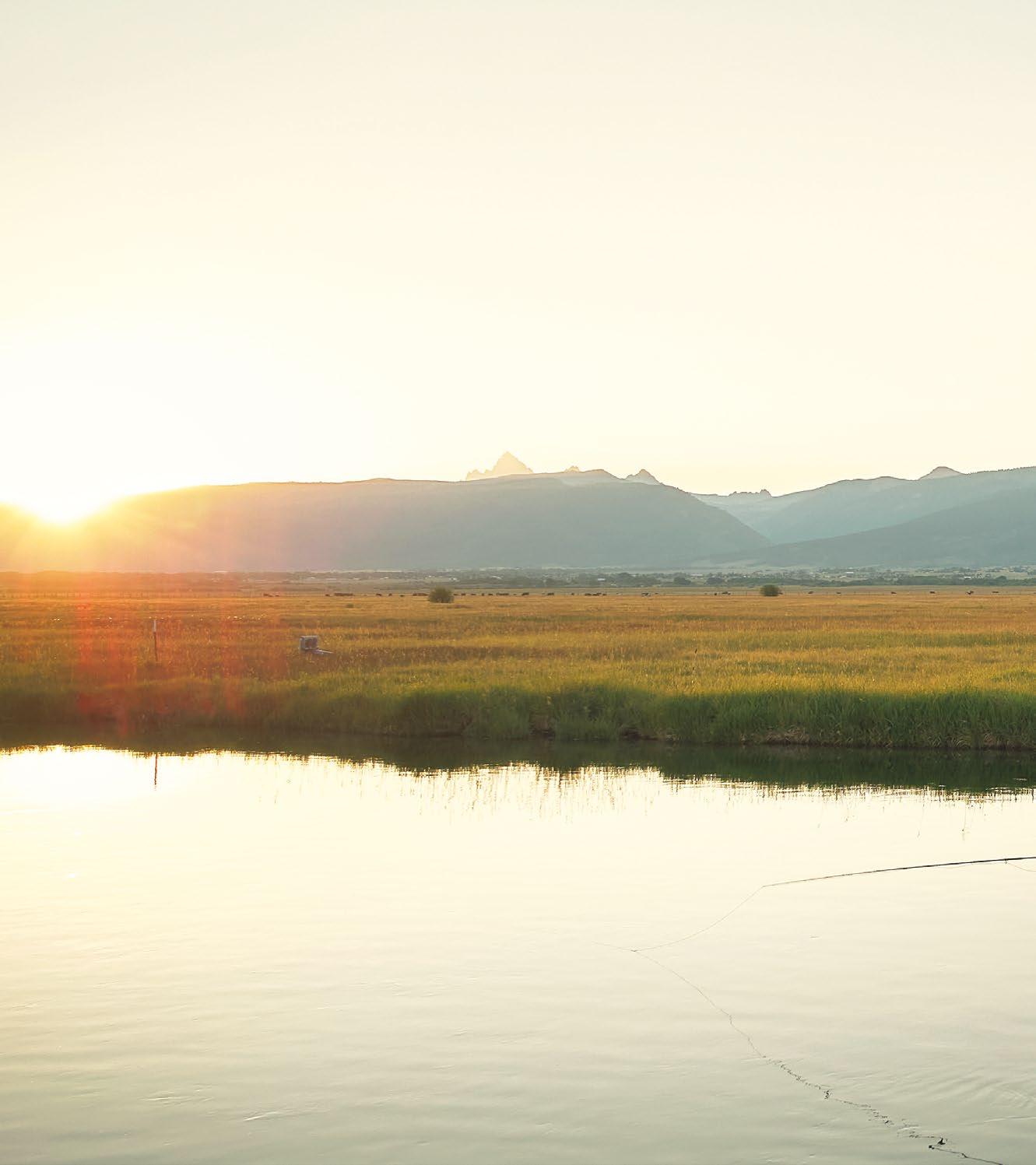







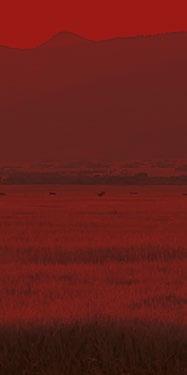

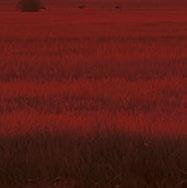


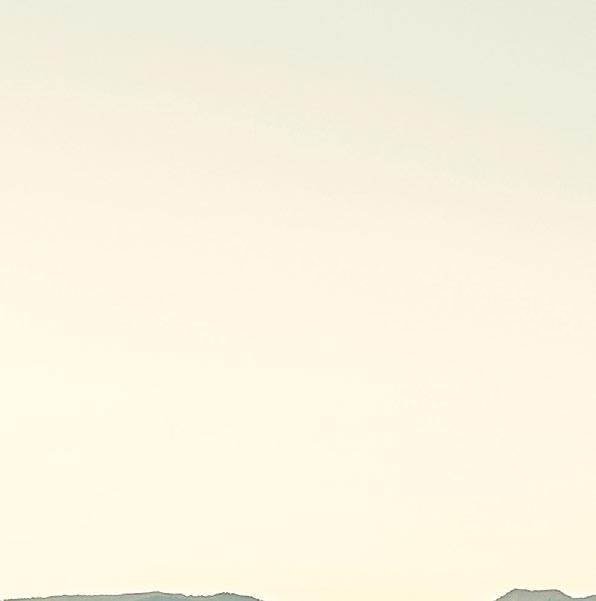
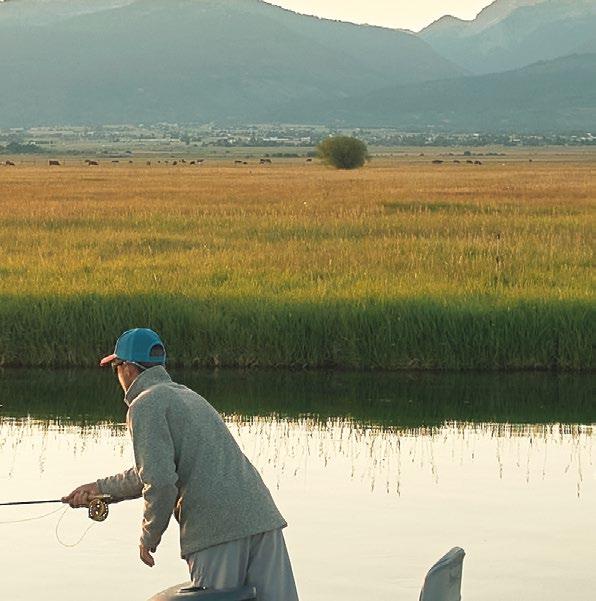



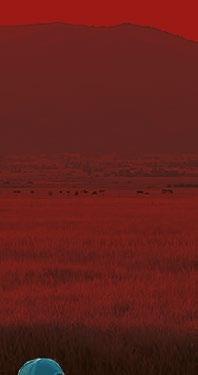
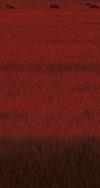
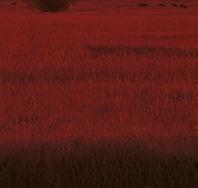


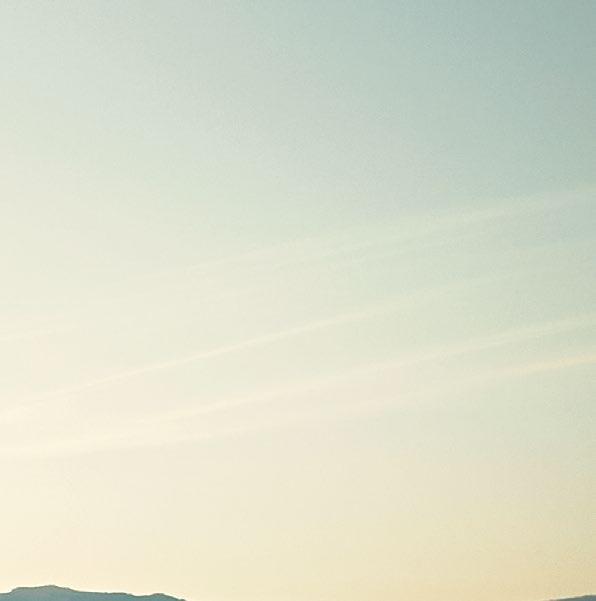


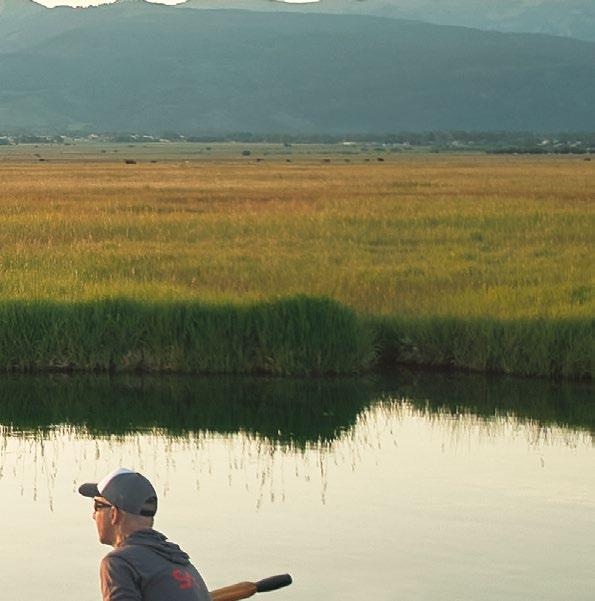


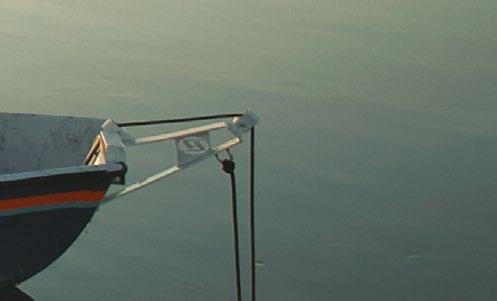

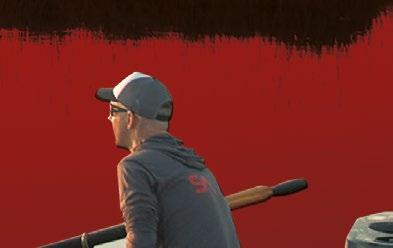

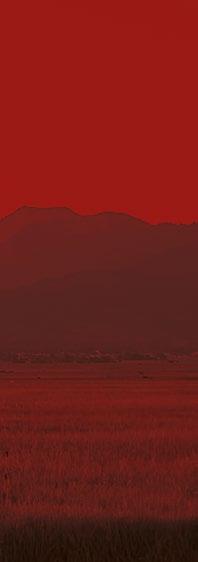
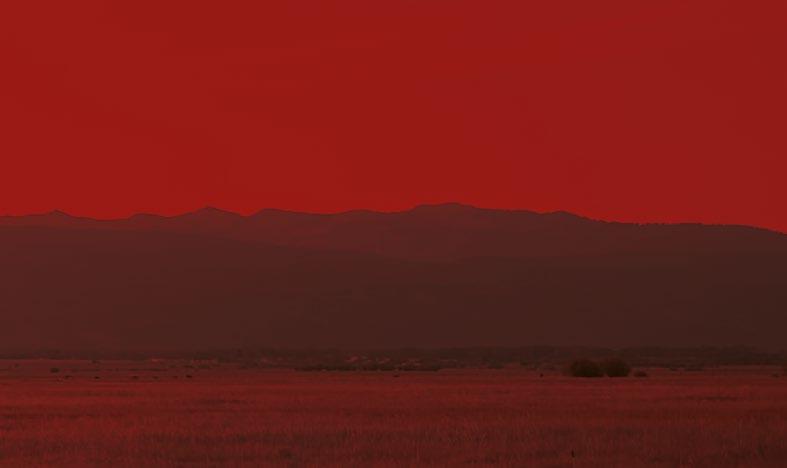
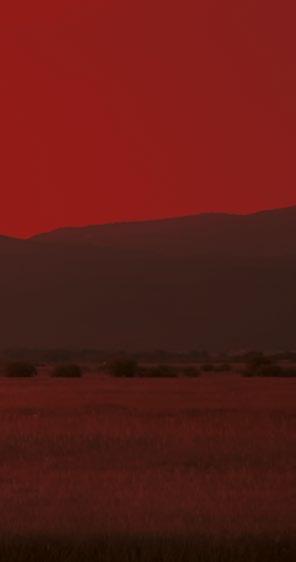

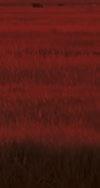







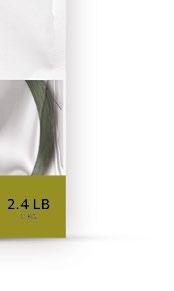
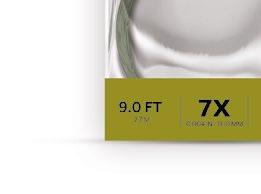


FLY TYING The Klinkhopper
It was 35 years ago in Norway, on the 27th of June 1984, that the first Klinkhåmer Special was born, from the vise of my old friend Hans van Klinken. Designed for fishing grayling in the river Glomma. Now re garded as a modern classic and an absolute standard pattern, for all trout and grayling fishing the world over, it is probably the best and most adaptable emerger to date. The Klinkhopper is my adaptation of the original for a Hi-Viz grasshopper pattern that gives a very nice footprint/profile and it has worked extremely well for me.
By BARRY ORD CLARKE
WWW.THEFEATHERBENDER.COM

Firstly, when tying the Klinkhop per, the correct hook should be used. This should have a curved shank, wide gape, slightly heavy wire and a straight eye. Hans has his own Klinkhamer hooks designed espe cially for this pattern, Daiichi 1160.
The post has several functions, its an up-right wing that, in combination with the slightly heavy wire hook, keeps the pattern on an even keel when fished, it’s a quick sight indi cator, that helps immensely at a dis tance, in low light and in rough wa ter conditions and it’s also the anchor point for our parachute hackle.
rax and hold the hackle fibres out of the way when you whip finish. This method avoids all that and results in a para-perfect hackle.
The rear of the post, if trimmed cor rectly, will also be the foundation for our slender tapered dubbed body. When wrapping the base of the post, in preparation to accommodate the hackle, this needs to be nice and firm, a drop of varnish or head cement will help with this.
Your saddle hackle should be pre pared by stripping off 10 mm of the fibres from one side and 60-70 mm of the fibres from the other (step 11). This will ensure that when wrapped the hackle fibres will have maximum surface contact when fished, keeping the body and thorax of the fly, just under the water where they belong. Before you begin wrapping the hack le, re-position your hook in the vice, from it’s original horizontal position to vertical. This makes wrapping a parachute hackle as easy as wrapping a traditional collar hackle!
A problem with the ‘traditional par achute hackle’ is finishing it neatly, you always have to wind your tying thread forward through the tho-
Re-attach your tying thread at the base of the post, and wind it down, close into the thorax. If you have a material clip on your vice, once your thread is secure, hang it out of the way (step 19). Now wrap your hackle as you would a traditional dry fly col lar hackle, taking care that each turn of hackle is close to the previous, all the way down into the thorax.
When you reach the thorax, release your tying thread from the materi al clip and make one wrap over the hackle and one wrap under to secure it. Trim away the surplus hackle. Now trim your post to the required length, take your whip finish tool and make one whip finish, between the hackle and the thorax, taking care not to
trap any hackle fibres. Before you make the second and last whip finish place a small drop of var nish on the tying thread closed to the thorax. This varnish will be drawn into the whip finish as you tighten, and secure it. The result should be a perfect parachute hackle.


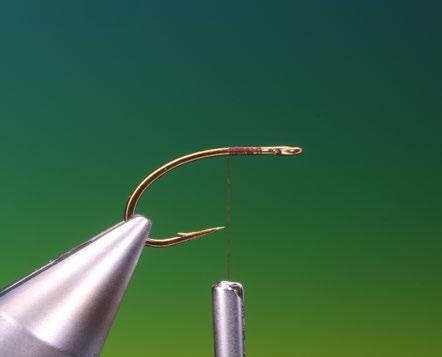

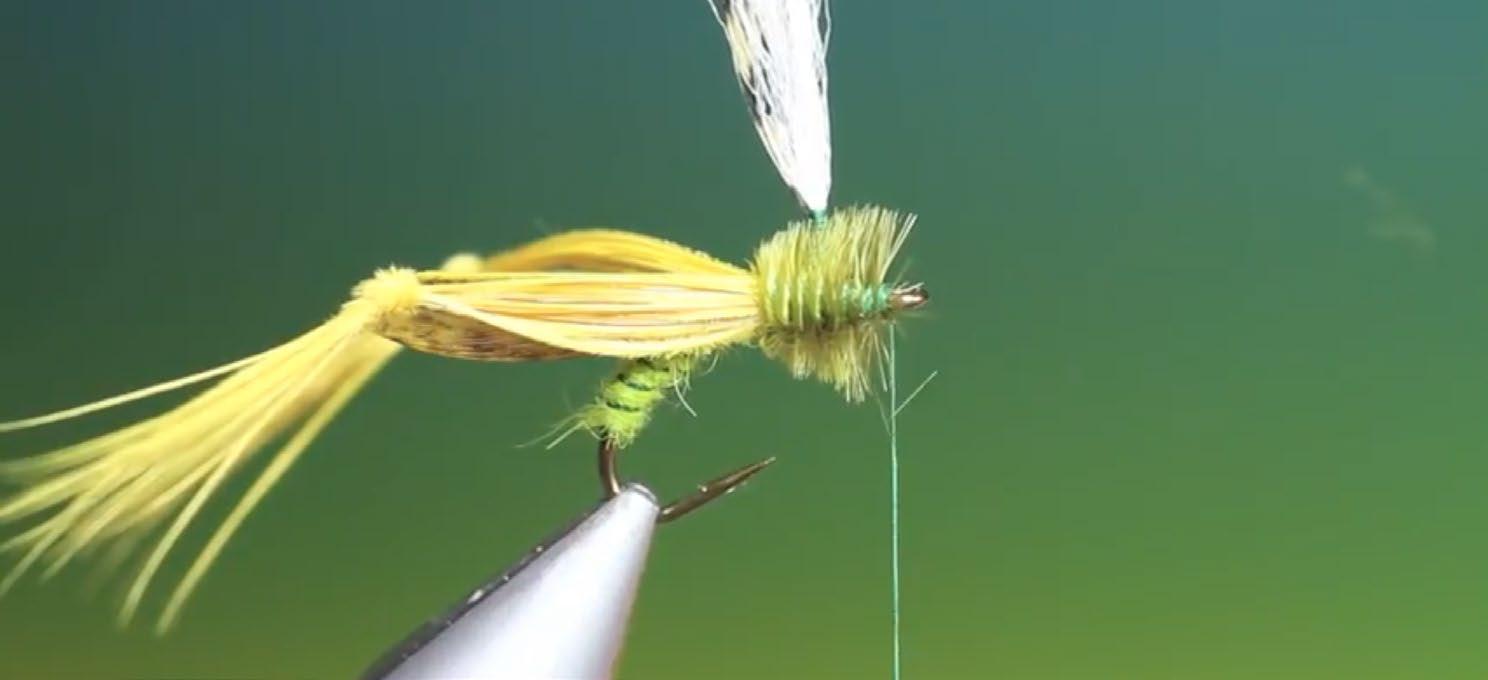
You will
post material.
you.
post material
dry wing material
expensive,
price.
your hook in the vice, as shown, with the hook shank hori
Run a fine foundation of ty ing thread along the first few mm of hook shank. Step 1 Step 2 Step 3 Material List// Hook: Mustad C49 6-14 Thread: Sheer 14/0 Brown Post: Para-post Body: Chartruse dubbing Rib: Tying thread dubbing loop Wing: Yellow dyed partridge hackle Legs: Yellow pheasant tail fibres Thorax: Olive ostrich herl Hackle: Yellow dyed grizzly hackle
Using the correct hook is im portant, I am using a Mustad C49S.
now need some parachute
Use the colour best sui ted for
It’s also an advantage if the
floats well. Aero
is extremely good but
the Veniard alternative is just as good and a third of the
Secure
zontal.
Cut a bunch of your post material, relative to your hook size. Tie this in as shown at the correct position for the post. Make sure that you have enough para-post at the rear of the post to hold.
Make a few turns with tying thread tight into the front of the post, so it rises 90 degrees from the hook shank.
While holding the rear Para-post material in one hand, trim off the ends of the ends at a slight angle, so when covered with tying thread they will make a tapered body.
Even the body with tying thread to a slight taper. At very rear of the hook make a dubbing loop and return your thread back to the post base.


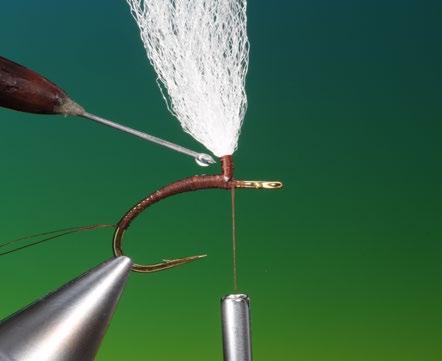

Now tie in the hackle at the base of the post. Leave a little bare hackle stem at the top of the post base. This will help you steer your hackle cor rectly when starting to wrap. Return your tying thread
It helps to strengthen the post by applying a drop of varnish to the base.
Step 4 Step 5 Step 6 Step 7 Step 8 Step 9 Step 10
Step 11
Spin a little dubbing on to your tying thread and and start wrapping a neat tapered body,


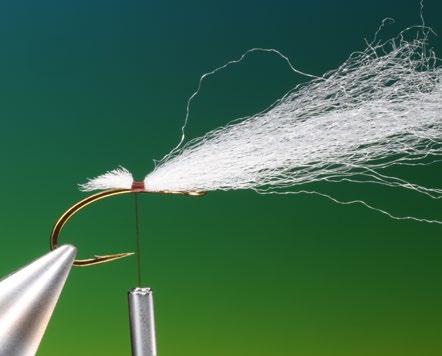

Select and prepare a hackle by strip ping off the fibres from the base and along the right side.

Step 12
Finish the dubbed body a few mm be hind the parachute post.
Step 13
Now using the dubbing loop that you made earlier, twist the loop together so it makes one strand of tying th read and wrap this in even open turns, up over the body to make the rib. Tie off and remove the excess.
Step 16
Now fold the hackle along the stem and make a small ‘V’ cut at the end.


Step 14 Step 15
Select a nicely marked yellow dyed partridge hackle.

Coat the hackle with a high viscosity UV resin as shown.



Step 19
Tie in the wing as shown on top of the hook shank close to the post base.

Step 17 Step 18
Select your desired colour of phea sant tail for the hopper legs.
Cut two small bunches of pheasant tail fibres and tie a knot in each to make the legs.
Step 20
Attach one leg each side of the wing. Take care that they are both the same length.


Step 21
Once the legs are secure, take hold of both legs and trim to the correct length.
You can now remove the excess legs material at the hook eye and secure with a few wraps of tying thread.
Remove the hook from the vice and replace as shown. Now re-attach your tying thread to the posts base and wind down close to the thorax. Wrap your hackle down the post keeping each turn close to the previous. Tie off the hackle between the thorax and the last turn of hackle. Remove the surplus hackle.
Tie in a length of ostrich herl for the thorax.

Wrap the herl forward over the tho rax and tie off behind the hook eye. Whip finish and remove your tying thread.
Klinkhopper from the side.
You can now trim down the post to the desired length. Using a whip finish tool make a whip finish or two just below the hackle. Take care not to trap any of the hackle barbules. Just before you tighten your whip finish knot, place a drop of varnish on your tying thread close to the thorax and the tighten.
Step 22 Step 23 Step 24 Step 25 Step 26 Step 27 Step
Remove your tying thread and the klinkhopper is ready to fish…

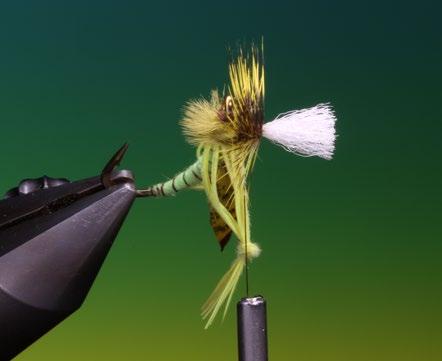


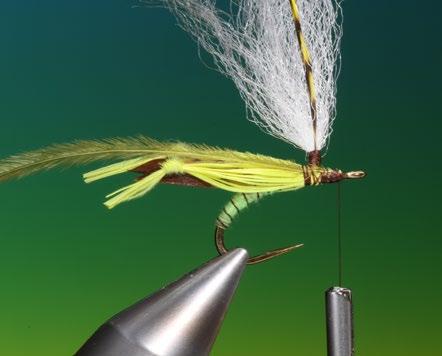

28

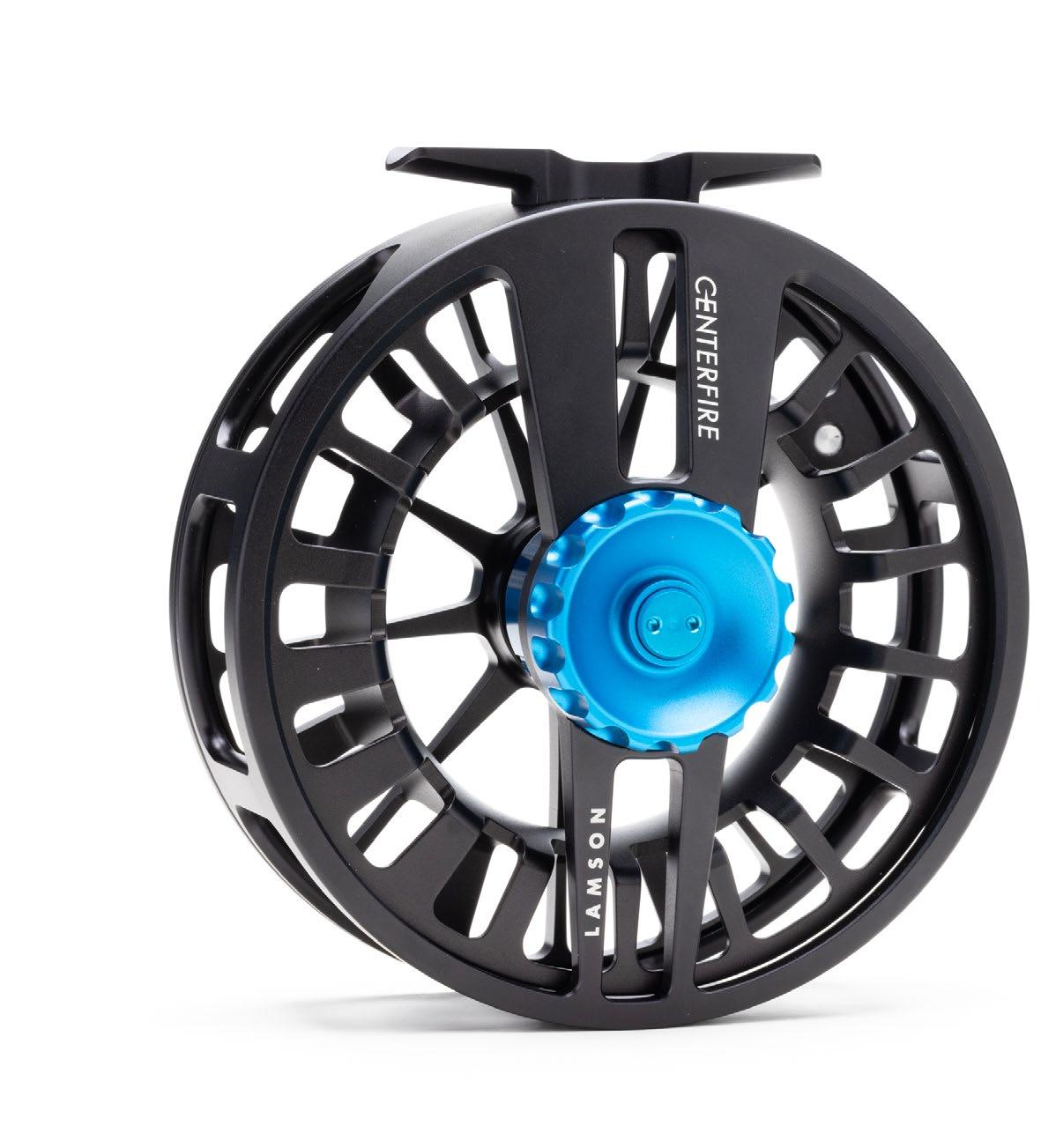
www.waterworks-lamson.com
THE ALL-NEW CENTERFIRE REEL
Designing Centerfire, we drew from the strongest and most reliable elements from over a quarter century of fly reel production. The frame incorporates our proprietary—IPX8 waterproof rated—Cobalt drag system, burly Power Arm construction and load path reinforcement. The spool maximizes capacity and line retrieval with plenty of porting to dry out after a big day. Add a large fluted drag knob, oversized handle and hard anodize and you can be sure this reel will only clock out when you do.

US MADE IDAHO BUILT
www.waterworks-lamson.com
MORE INFO
FROM TOP TO BOTTOM:
A Look at Sinking Lines
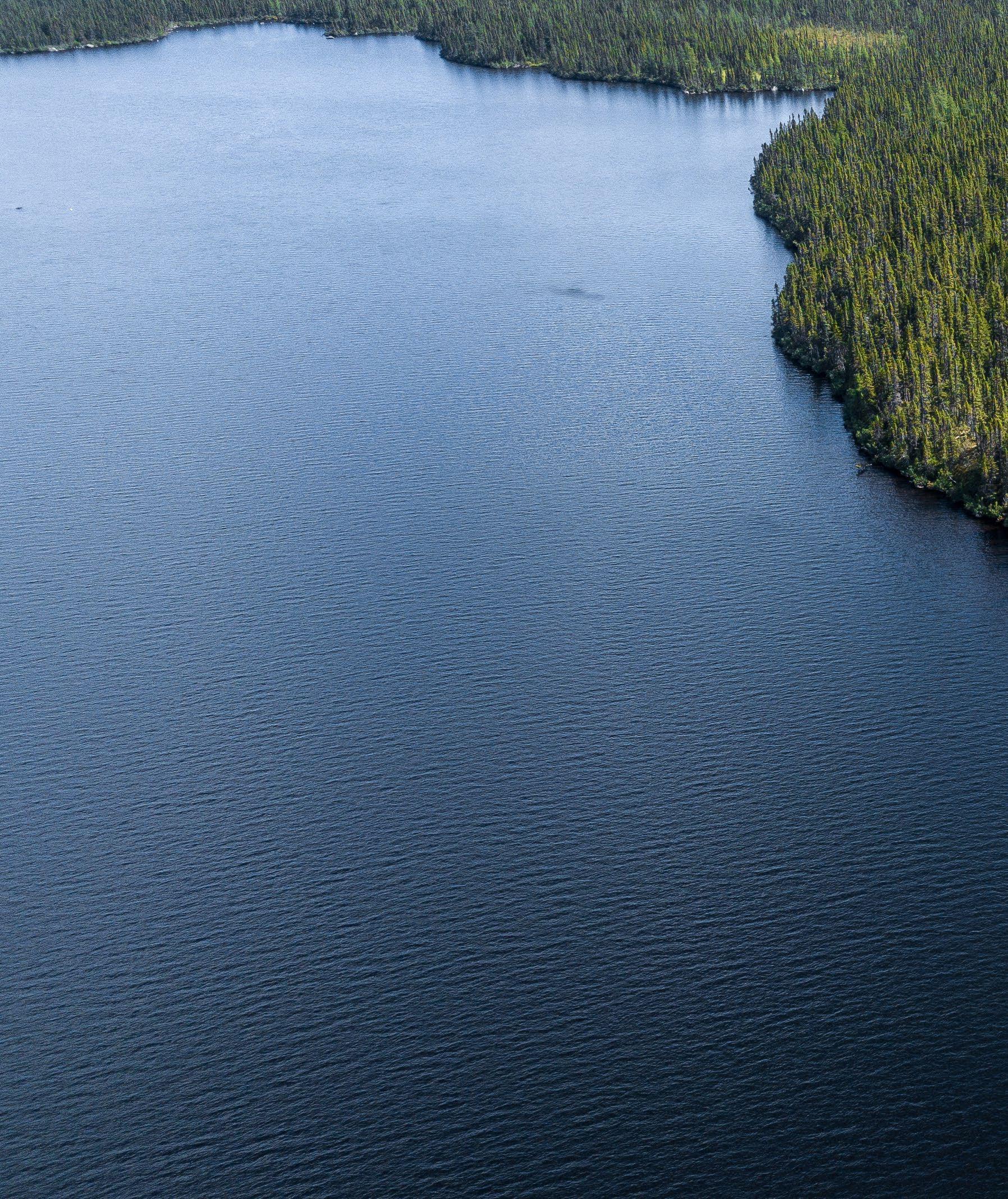
If there is one type of fly-fishing gear the average angler can add to their kit that opens a whole new dimension of angling oppor tunities, it would be sinking lines. These can be used in a wide range of scenarios to take flies to fish where regular floating lines just can’t get the job done. Understanding when and how to put sinking lines into use can be a game changer for many fly fishers and these lines are absolutely necessary for some situations.
By JERRY DARKES


We are going to take a look at the various types of sinking lines availa ble today and how they can be used. Single-hand rods will be the main objective due to the extensive range of waters and species that can be tar geted with them. No matter where you fish, having some sort of a sinking line with you makes sense. There are times that this can make or break a day on the water.
fly it is going to start to climb toward the surface. The faster you strip, the faster the fly climbs and the higher it goes. The fly doesn’t spend any amount of time at depth. Realistical ly, a floating line with a weighted fly that can be cast is limited to depths of 3-5 feet or so.
OK, so why do we need anything be yond a floating line? I can just use a weighted fly and maybe some split shot to take a fly below the surface, right? True, that will work in situations where the fly is dead-drifted under an indicator or fished Eu ro-nymph style. This setup certain ly has its place and catches plenty of fish. But you can only do so much with weight and a floating line. If you need to swim the fly below the surface for a distance and have it hold depth for a period of time, the sink ing line comes into play. Sure, you could use a 20-foot leader and heavy fly and maybe get a fly down around 20 feet (if you could even cast it), but as soon as you begin the retrieve the
The sinking line will hold the fly at a certain depth for an extended pe riod. To understand this more, let’s take a look at the various types of sinking lines available, how they are made, and their application. Fly line technology has advanced significantly and modern sinking lines are precision fishing tools. They allow us to cover the water column from just under the surface to depths down to around 30 feet.
A Brief History
The earliest sinking lines were used in big-water applications. Sections of lead-core trolling line with a monofilament shooting line like Amnesia behind them and set up as shooting heads. These certainly took the fly down, but were somewhat hazardous to cast as the lead-core was not very flexible.
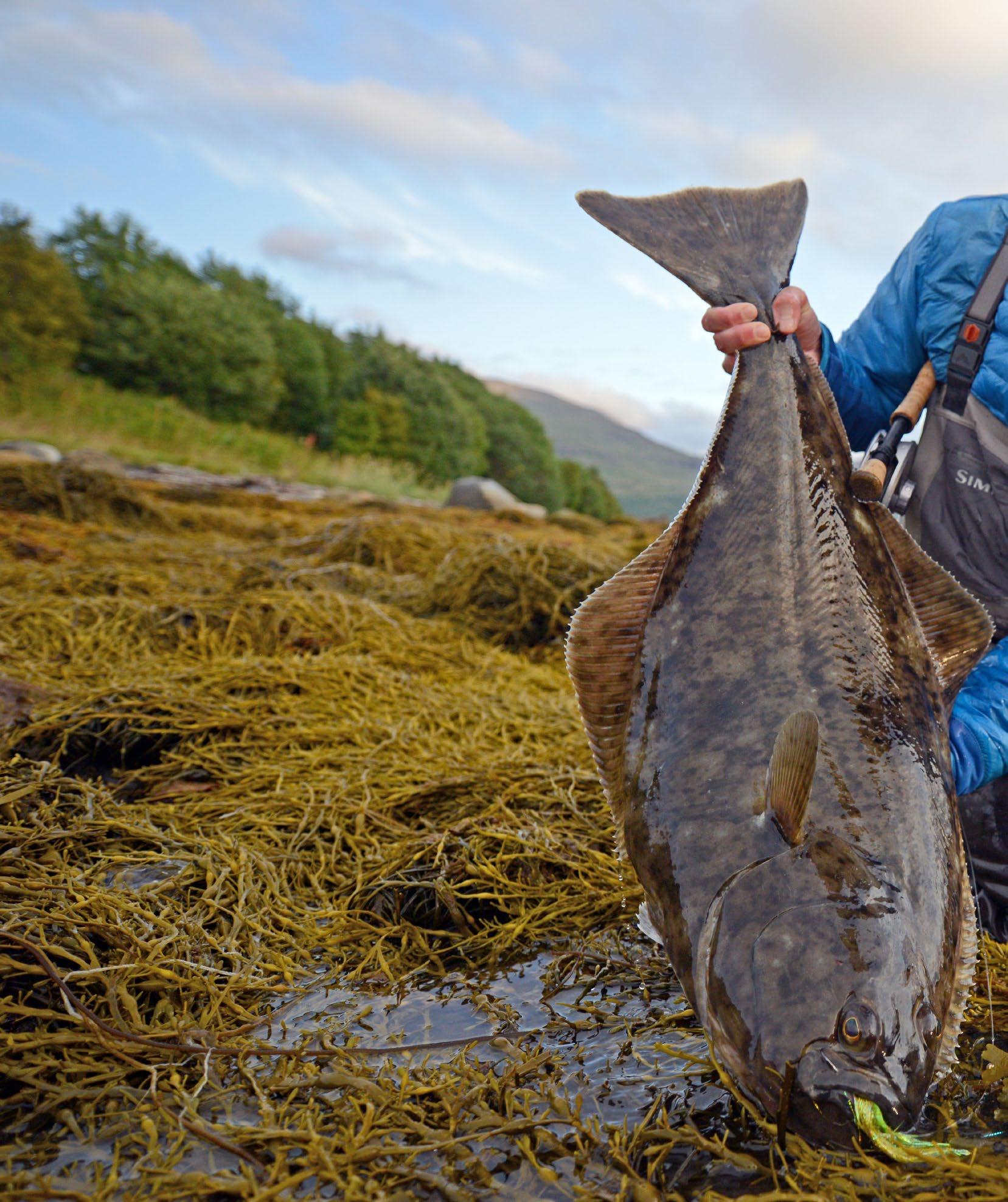
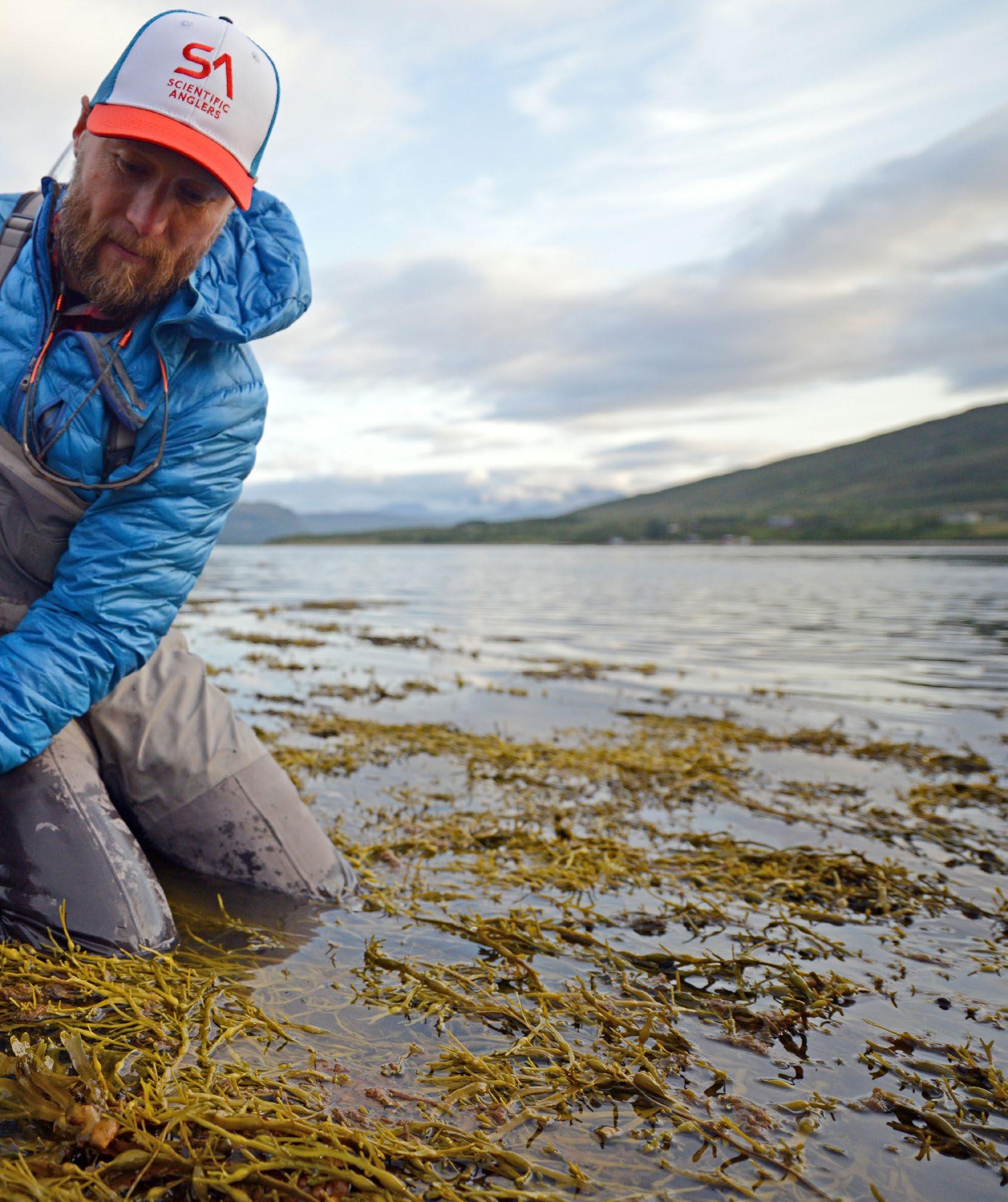
Tangles as well as having to duck on the forward cast to avoid injury was com mon.
Use of these lines was limited. They were used mainly in northeast striper fishing and targeting Chinook salmon in deep coastal estuaries. They were really not practical as a general fly-fishing line at that point due to the weight that needed to be cast. Most were used on 10-weight outfits.
Eventually lead powder was mixed into PVC and flexible shooting heads were made. Varying the amount of lead pow der and PVC helped control the grain weight and sink rate of the head. Fullsink lines were then created where the running line and belly were integrated as a single unit. This were then manu factured into various line weights. Scientific Anglers introduced these first lines called Wet Cel in 1960.
As mentioned earlier, line technology has advanced to a point where sinking lines are made covering a wide range of uses- freshwater and saltwater, tropical to coldwater, and to fish from just un der the surface to depth. Because of the toxicity issues of lead, tungsten powder use began in 1980.
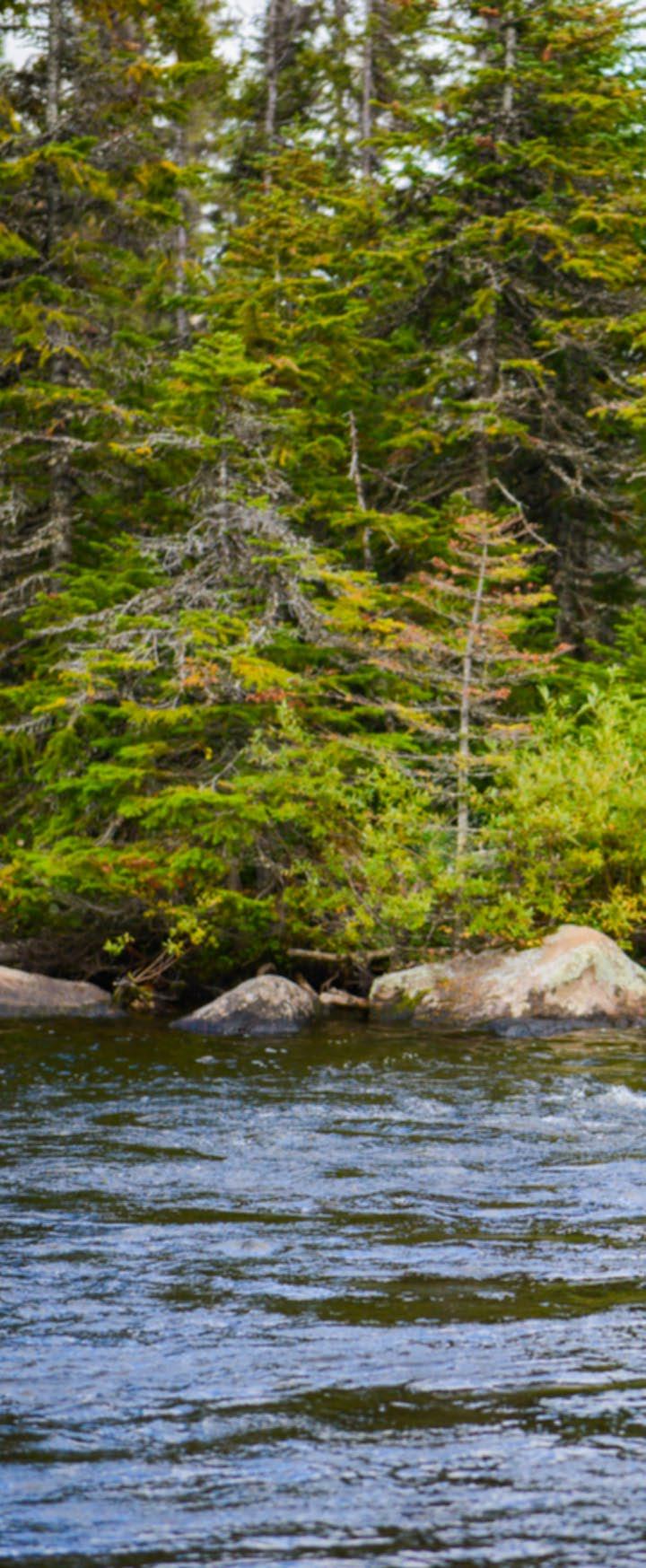




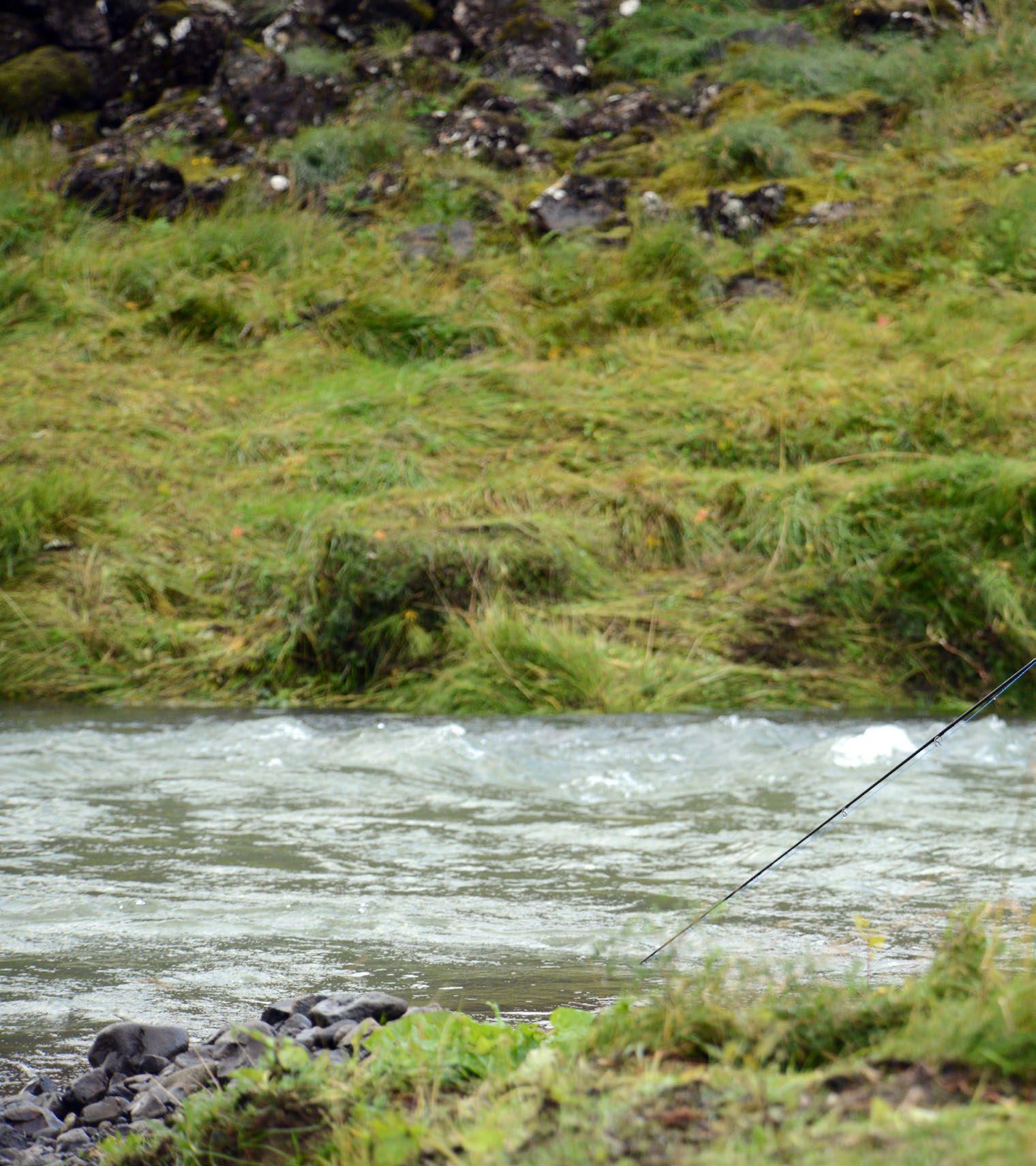
The amount of tungsten powder added to the PVC or urethane
base of the line is carefully controlled to achieve certain densities which control the sink rate of the lines. Lines can also be made of multiple densities.
If we look at sinking lines that are currently offered by manufactur ers, we find a staggering assort ment of options. Trying to select the best options for your needs can be intimidating. Let’s take a look at the various sinking line designs available and where they are best applied.
Sink Tips
In this application we are look ing at one-piece lines where most of the line floats and a portion of the line sinks. These are not tips added to a two-hand line to swing flies for steelhead or salmon. These lines are made to fish flies from just below the surface film to depths of possibly 10 feet. They are weight-forward designs where the length and density of the sinking portion varies.
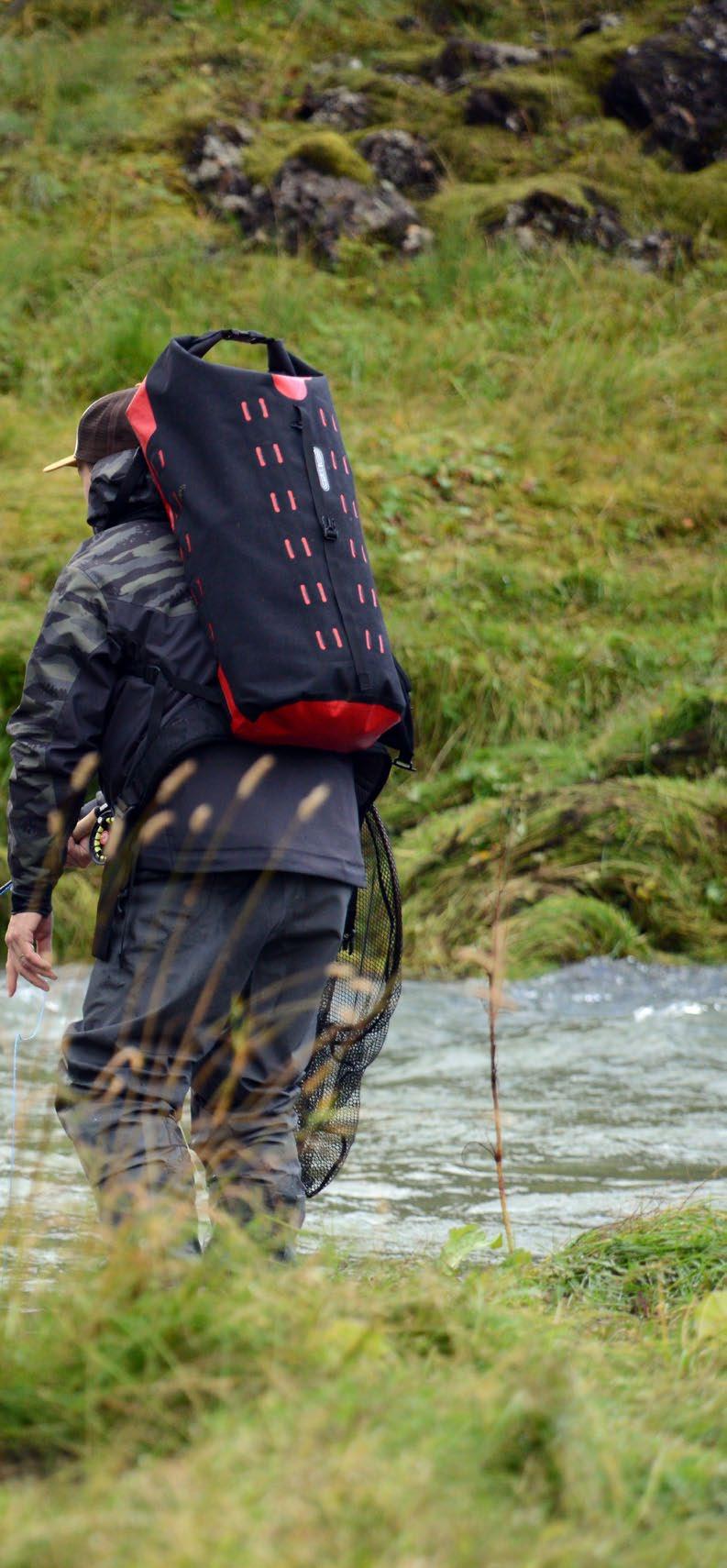




Sink-tip lines are offered in specific line weights and normally in three primary sink rates. Intermediate tips sink at a bit over 1 ips (inches per second) - 2,5cm/second. Sink 3 average 3 ips (7,6cm/second), while Sink 6 is 6 ips (15,2cm/second). These are usually found down to 5-wt. Lighter line weights are not really practical and the use of the tungsten powder needed to sink the line will exceed the designated line weight. These lines are primarily used to cast and strip streamers in lakes, riv ers, and streams and work chirono mids, leeches, and various nymphs in stillwater situations. They can be used wading and from a boat. The base material used in line construc tion is clear and has a density slight ly more than water so the interme diate tips can be kept undyed for a super-stealthy presentation near the surface. Varying the length and density of the sinking section controls how deep the fly can be fished and how fast it can be retrieved. For exam
ple, short, clear tips (5’ / 152cm) are used to fish small flies with a slow retrieve near or in the surface film. A longer (15’ / 457cm) Type 6 tip will keep a streamer down 6 feet or so on a fast retrieve. With the main body of the line floating, the short er the tip and faster the retrieve, the shallower the flies will run. As most of the line floats, they are easy to pick up and recast.
As fly fishing horizons have expand ed, so has the application of these lines. They are now built up to 12wt. for use in extreme environments such as the Amazon and saltwater flats world-wide for peacock bass, tarpon, permit, and other gamefish.
Integrated Shooting Heads
These lines take the shooting head concept to the next level. The shoot ing/running line and head are integrated into a single line. No more loops to worry about when the line goes in and out of the guides. The running line is a length of level fly line, then there is a short taper to transition into a single-density head or belly of the line.

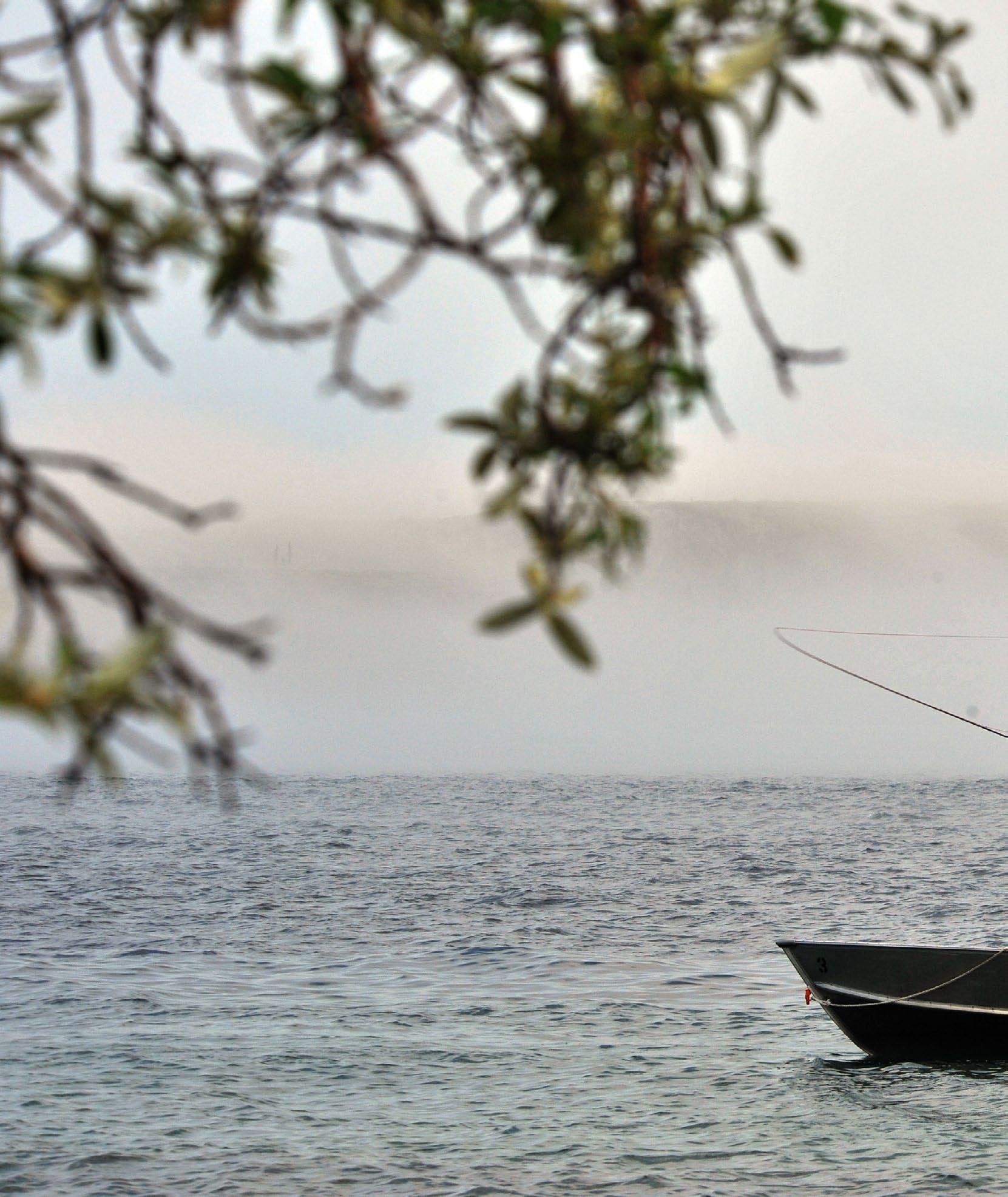
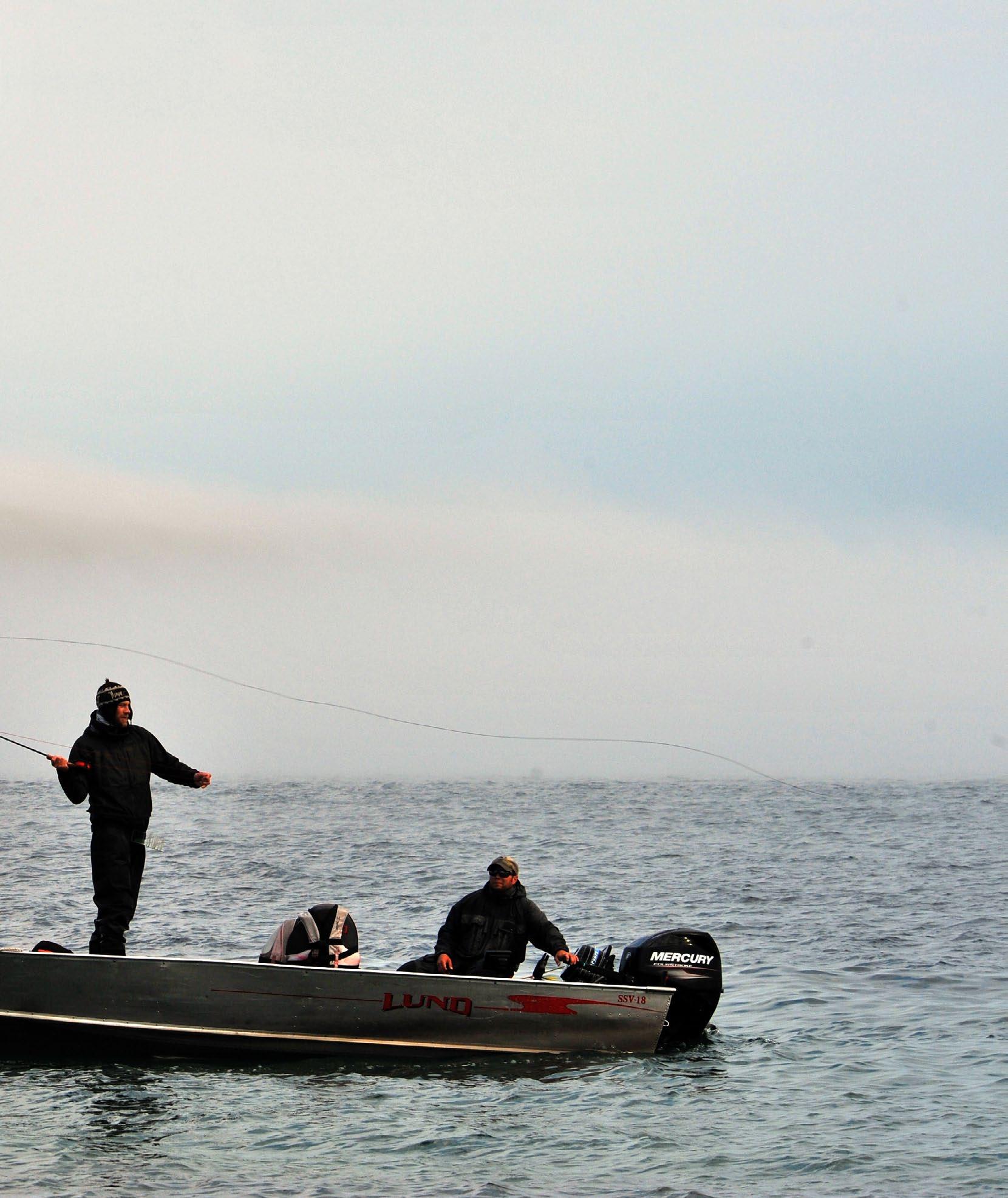
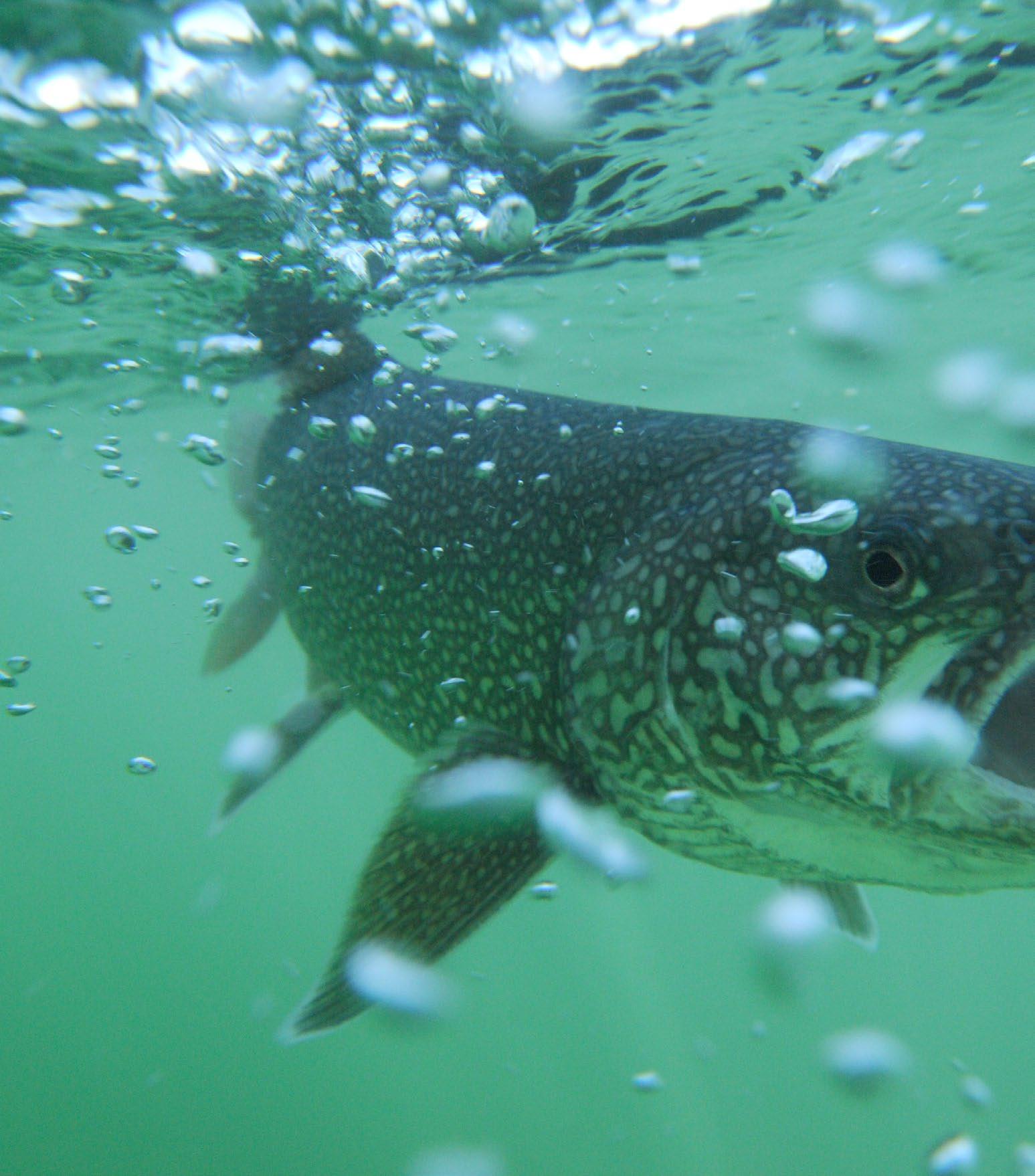
These lines are made to cover water quickly and efficiently. They load quickly and shoot easily for distance. Some are made to fish high in the water column, while others can reach significant depths. They are designed primari ly for streamer fishing with powerful turnover of flies on the cast and holding depth on a rapid, active retrieve.
The heads on these lines vary from 25’ (7,62m) to 30’ (9,14m). The running line can float- best for wading, or sink slowly for use out of a boat.
They are built with different grain weight heads that cover several line weights. The weights of these run from 150 grains. to over 500 grains. and the heads can range in density from floating to fast-sinking. The most recent versions density changes in the head.
These are probably the most versatile of sink ing lines as they have such a wide range of use. Line cores and coating can be varied to max imize performance in various water tempera ture ranges from cold-water trout to saltwater tropics. Combined with various density and sink-rates, we can select a line tailored to a specific application.
The following chart gives a general overview of grain weight to line weights, sink rate for high-density heads, and a depth range that the fly can be held.
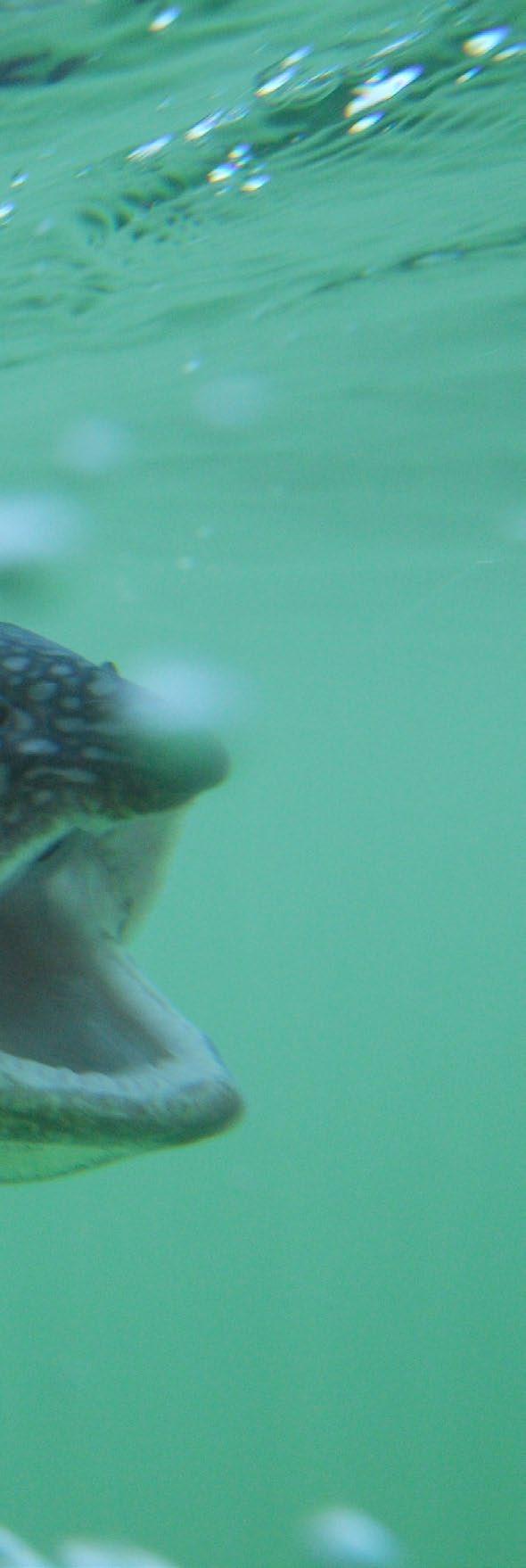
Sink Rates and Depth Range for Hi-D Integrated Shooting Heads
Grain Weight Line Weight Sink Rate Depth of Head Range Rate Range
150 gr. 5-6 wt. 4 ips (10,2cm/s) 4-5ft. (122 – 152cm)
200 gr. 6-7 wt. 4.6 ips (11,7cm/s) 6-8 ft. (183 – 244cm)
250 gr. 7-8 wt. 5.3 ips (13,5cm/s) 8-10 ft. (244 – 305cm)
300 gr. 8-9 wt. 6 ips (15,2cm/s) 10-12 ft. (305 – 366cm)
350 gr. 9-10 wt. 6.7 ips (17cm/s) 12-15 ft. (366 – 457cm)
400 gr. 10-11 wt. 7 ips (17.8cm/s) 13-16 ft. (457 – 488cm)
Note: These are the most commonly used grain weights ips= inches per second
The great thing about these lines is the ease that they can be cast for distance with minimal effort. Once the head is out of the rod tip, there is no need to continue false casting. In fact, the cast will just fall apart if you just gradually work out line. You go from the weight of the head to a virtually weightless running line. There is nothing to hold the weight of the line once it is out of the rod tip. Instead, once the head is out of the rod tip a bit it is easy to just shoot
the line on the forward cast and let the weight of the head carry the running line out. Incorporating a double haul will add additional dis tance. Most beginners work way too hard when casting these lines at first rather than letting the rod and head do the work. A short period of time is usually all that is needed for most anglers to adjust these lines.
With a known sink rate, it is easy to count these lines down to a specif ic depth (within reason) where you want to present the fly.




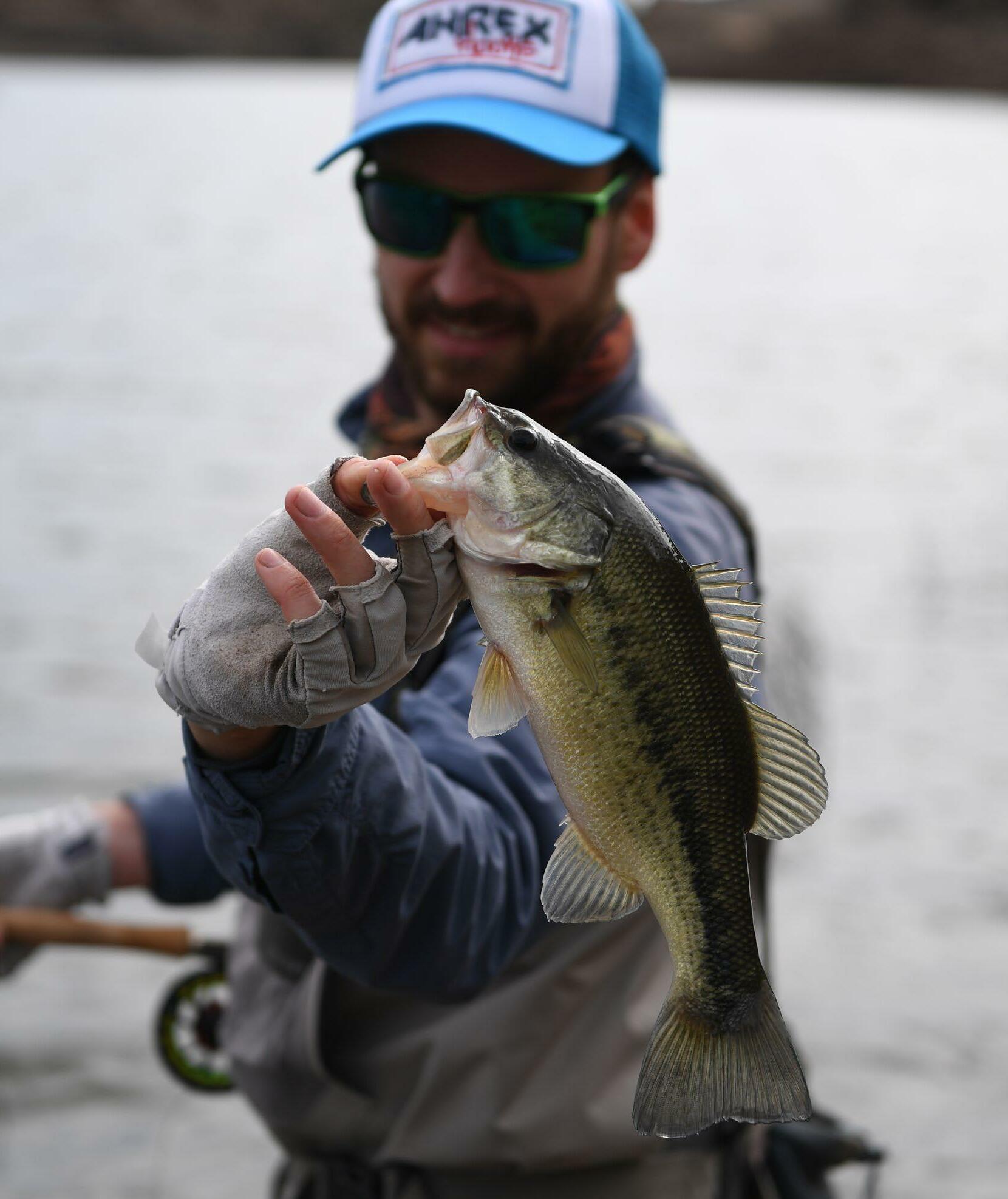
The maximum practical depth for these lines is around 30 feet. With the long head and thin running line, the fly will stay in this range for an extended period of time on the retrieve. Simple math shows a Sink 6 head (6 ips rate) takes 20 seconds for the line to reach a depth of 10 feet. This actually gives pretty precise depth placement of the fly- es pecially on stillwaters or areas of slow current.
Full-Sink Lines
The last line type we are going to look at are full-sink lines. These have actually been around a long time as earlier lines such as those made from silk would sink when they got wet. These lines had to be dried and then dressed in order to fish on the surface as they were generally used. There is very little in the literature mentioning early lines used to pres ent flies below the surface.
If there is current or boat movement involved, this depth will de crease a little. But after a bit of expe rience with these lines you will get a good feel of where the fly is at all the time. After catching few fish, the confidence factor kicks in and using these lines becomes an easy task.
We also see these lines used in true big-game situations. Built on ex tra-strong cores of up to 100 lb. breaking strength and heads up to 750 grains, these lines are made to tackle a variety of bluewater species such as sailfish, tuna, giant trevally, and marlin. They load heavy rods quickly and turn over the largest flies.
We noted earlier that the first modern sinking lines known as Wet Cel were introduced in 1960. Here the entire length of the line was made to sink below the surface. These were revolutionary in the sense they could be cast as a regular fly line and were made in specific line weights. This opened up a whole new range of fishing opportunities for fly anglers.
Full-sink lines mean precisely thatthe entire length of the line is made to sink below the surface. These can range from super-slow-sink designs made to keep flies in the surface film, to those designed to sink to depth rapidly and crawl flies along the bottom.
Line densities are made to cover all levels of the water column.
These lines are most used for still water applications, that is lakes and ponds with little current present, al though they are often fished from a drifting or slowly moving boat. They have reached their present level of sophistication for use on the reser voirs of the UK and lakes of western North America. Here trout are the main target and anglers need a series of lines to cover the needs for a sea son of fishing.
Many of these lines are quite specialized. For example, “hover” lines stay in the film, suspending just below the surface and keep flies in this zone. They may be used with floating flies to minimize the drag created when a floating line is pushed by wind. This helps keep the fly floating naturally.
There are also lines where the full length can be clear to reduce visibili ty and give a super-stealthy presenta tion. These clear intermediate lines can be a game changer on clear, calm, flat water, turning reluctant fish into active feeders.
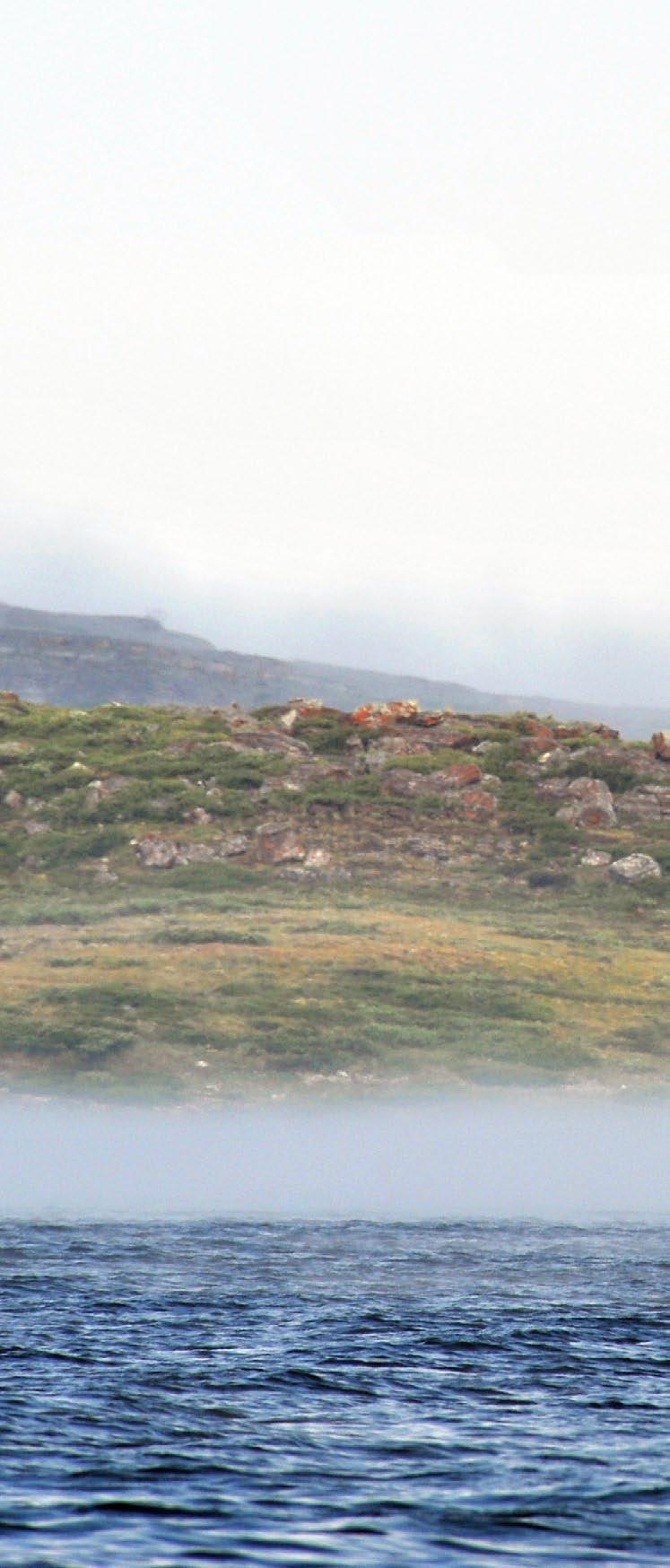


These lines also have applications for other types of fishing such as stalking carp on shallow flats. Salt water designs are also appearing for similar use. The early full-sink lines were a sin gle density and a fast-sink version would tend to sag from the rod tip creating slack and reducing the abil ity to detect strikes and get a good hook set. This problem was ad dressed by the introduction of multiple-density lines. These lines are densest (sink fast est) at the tip with less density at the mid-section and back end. The goal is to achieve a straight-line connec tion from the rod tip to the fly with minimal sag. This improves bite de tection and allows for a better hook set when a fish hits.
ing the line best suited to the depth range being fished. As with the in tegrated shooting heads, a count down method can be used to keep the fly in the desired fishing zone. Once again, we will put the practi cal depth range to around 30 feet (9 meters).
There are also situations where the fly needs to be crawled just off the bottom. Here, the fastest sinking section may be in the middle with a lighter density at the tip. This keeps the fly off the bottom, visible and away from weeds and debris. If fished more mid-depth this type of line gives the impression of a critter swimming towards the bottom, of ten a great strike trigger.
These lines have two or three density changes in them and the premium versions have a graduated change between densities to eliminate hinging when being cast. They are offered in slow-sinking to fast-sink ing versions with the angler select-
These lines can become quite sophisticated. “Hang markers” are added to the line at a specific length from the tip. This tells the angler how much line is still out to help gauge fly depth and when it can be easily pick up and cast again. After a bit of experience, these lines be come a key tool for having consist ent success on the water.
Add Ons
There are various leaders and tips that can be added to conventional lines to take flies a bit below the surface. Poly leaders are short, polymer-coated monofilament leaders available in different densi ties. Though designed for swungfly use, they can also be added to single-hand lines to get the fly a bit deeper on retrieve. The fastest sink version is normally used here. These do not significantly increase the line weight for cast ing as long as they are used with a 7-wt or heavier line.
Some of the tips that are made for Spey line use can also be added to single-hand lines. Here we need to be aware of the grain weight of the tip being used so we do not overload the rod when casting overhead. For example, the manufacturers standard for an 8-wt. line is 210 gr. If we add a 10 ft. Scientific Anglers TC Tip that weighs 120 gr, we are 330 gr. total. More in the range of a 11-wt. line for overhead casting. Probably too much for our 8-wt. to handle
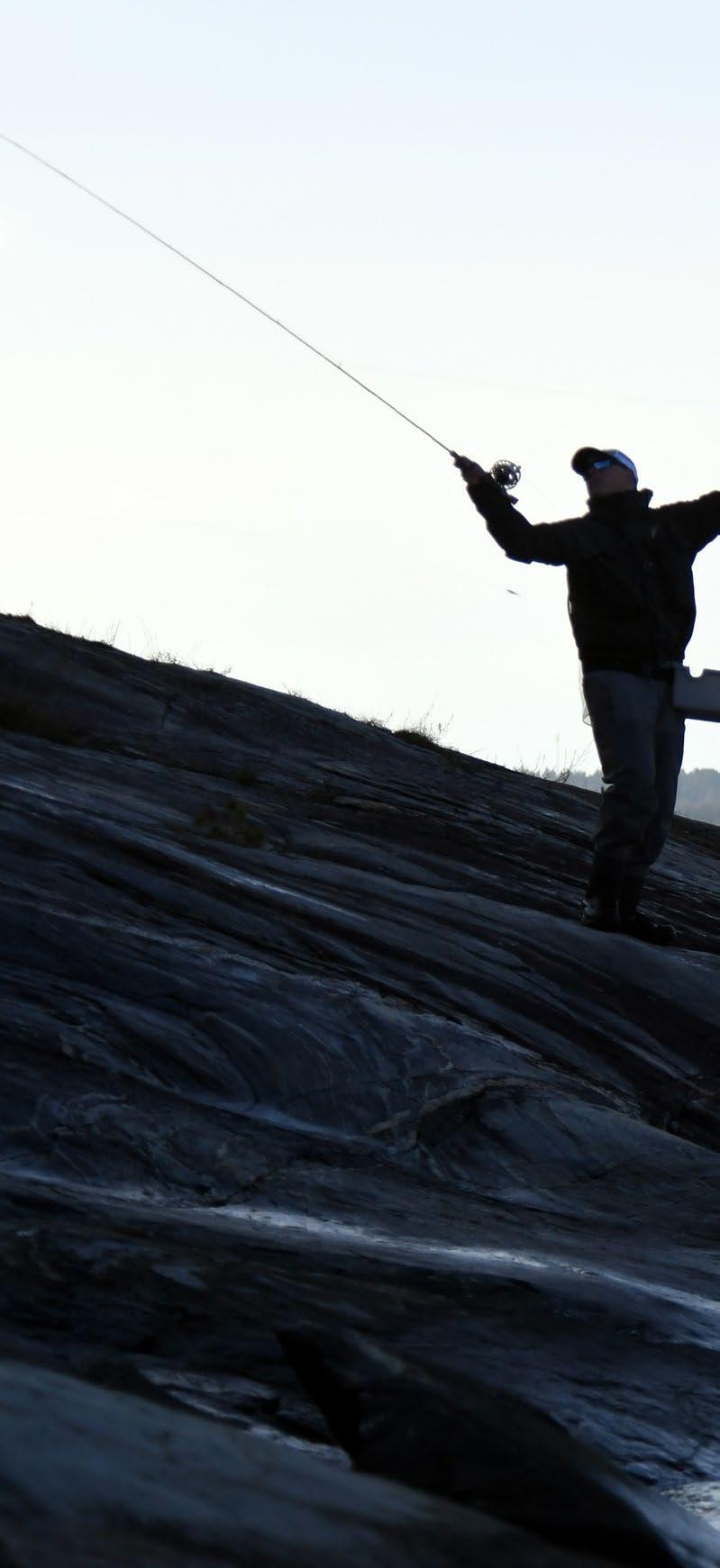
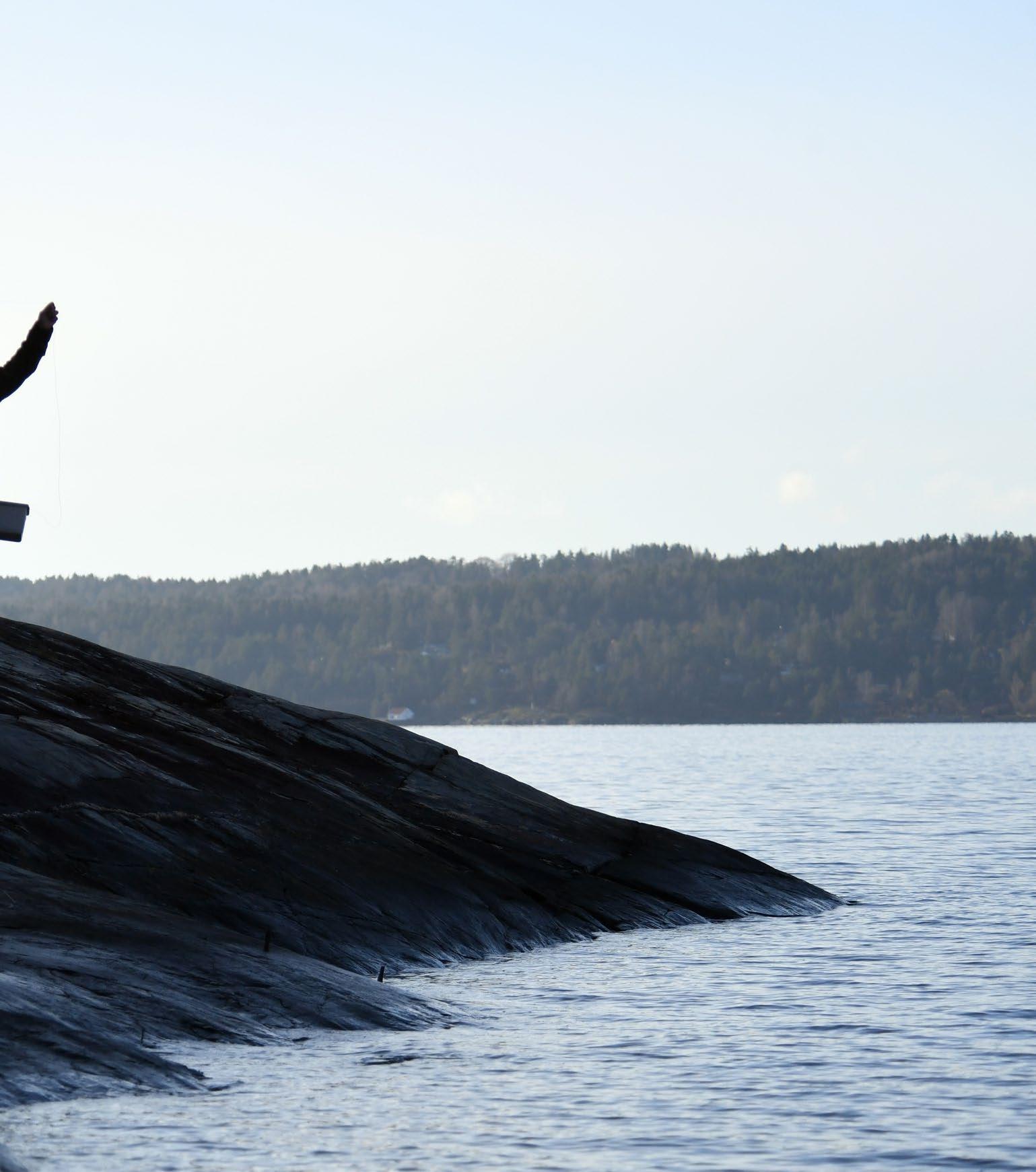

Adding tips is best done with heavier weight rods, 8-wt. and above, to give some added ver satility if needed. You can quickly adjust a line by the addition of a tip if you don’t have a suit able sinking-tip line. This is something to be aware of and while the norm with two-hand lines, it is outside the box with single-hand lines. In the opposite of this concept, a short float ing tip can also be added to a sinking line to work a fly just off the bottom or keep it above weeds. In any of these applications, casting may be compromised a bit as these tips will likely hinge when cast overhead. However, this is not a permanent set up, rather it is a quick solution to a problem that needs to be addressed at that time. Whenever you are on the water, it pays to be flexible and adjust to the situation you are faced with.
Wrap Up
No matter where you fish, sinking lines will likely increase your fly-fishing opportunities and success. Fly line technology continues to advance. Durable coatings with wider temperature ranges extend line life and effective ness. Controlled stretch cores give better bite detection at depth and allow easier hook sets. Stronger cores allow larger fish to be targeted. As the limits of fly fishing continue to expand, sinking lines will play a major role.
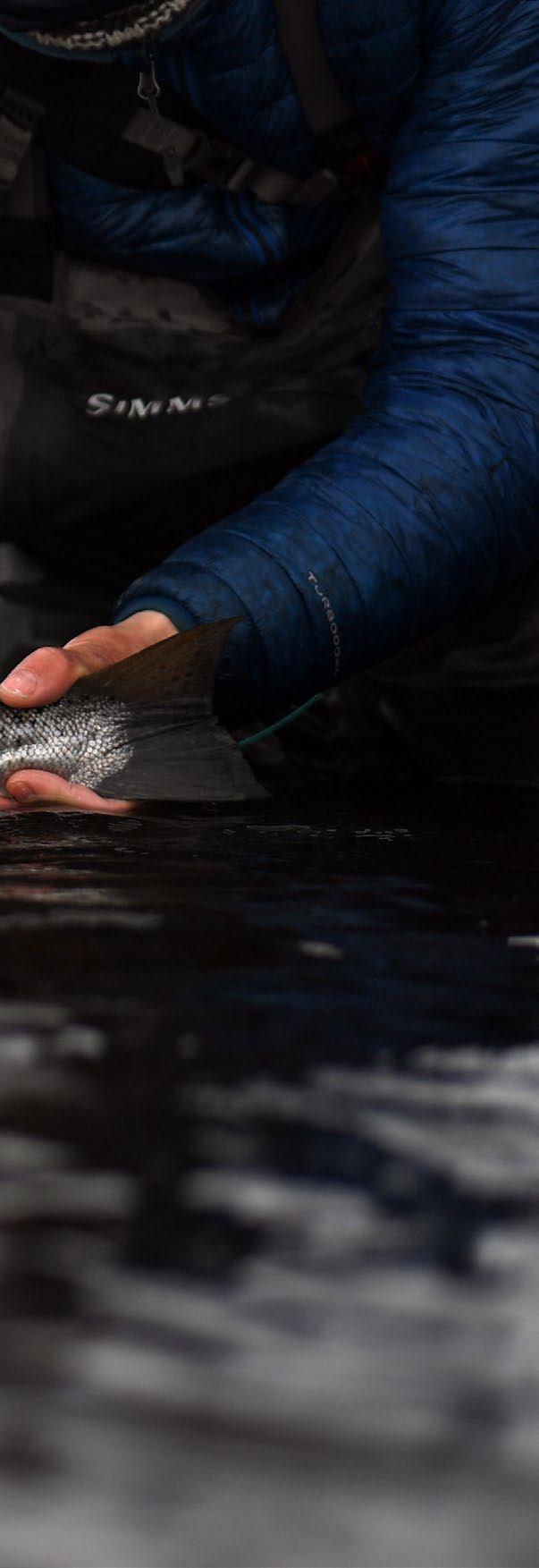
A Surge forward in Performance

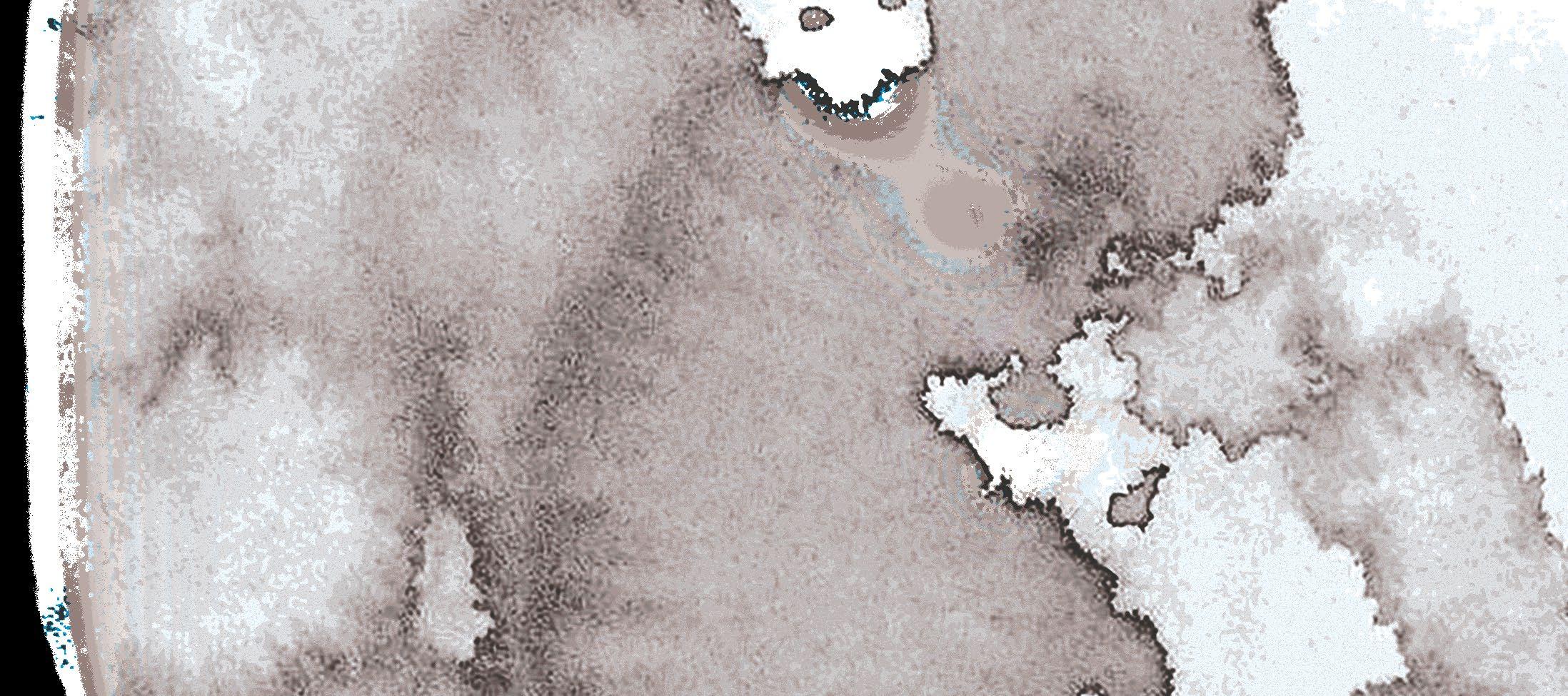
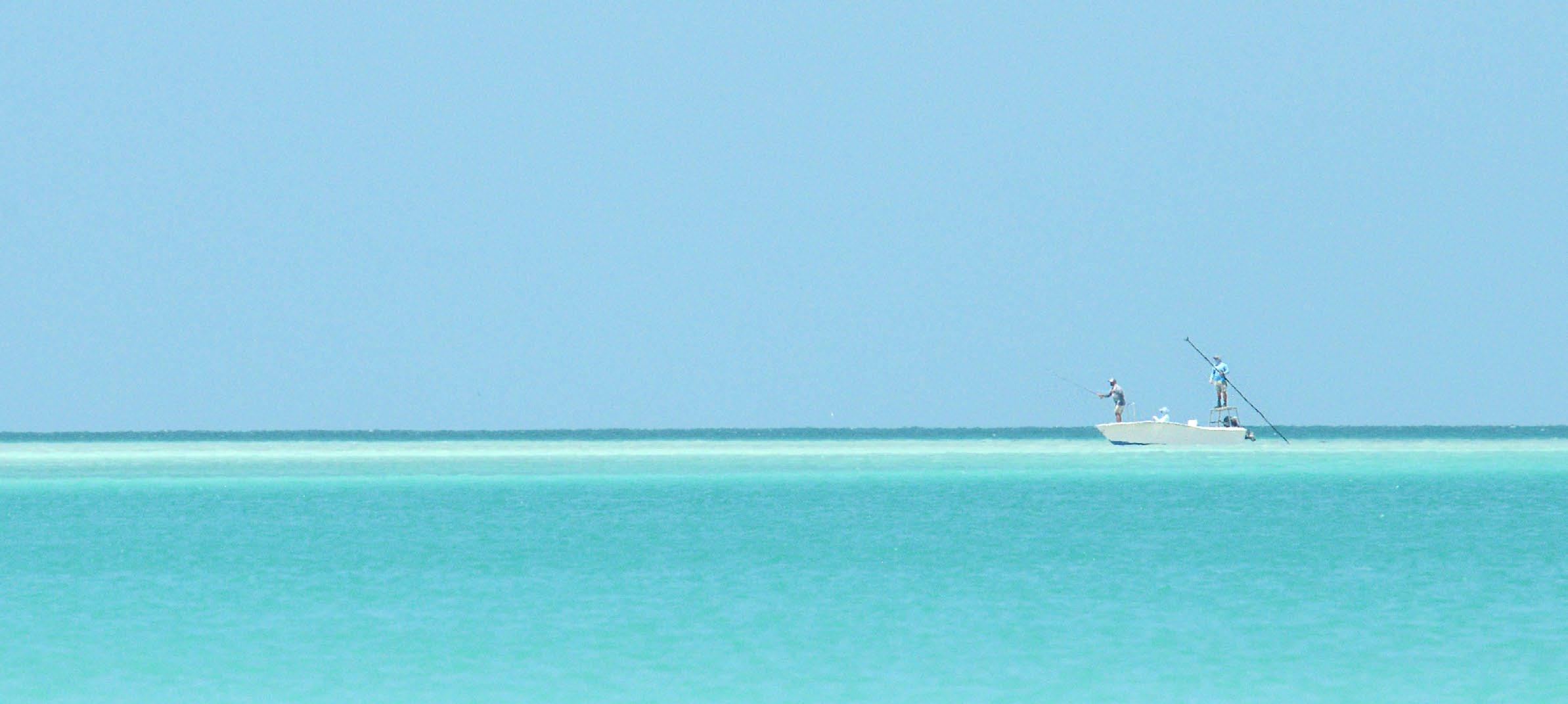
The new power and performance series
 Scott Fly Rod Company | 2355 Air Park Way, Montrose,
Scott Fly Rod Company | 2355 Air Park Way, Montrose,




HUSKEY Montrose, Colorado 81401 | 970-249-3180 | scottflyrod.com series of fly rods handcrafter by Scott
SOFTMOUTH TROUT
Endangered Fish Species in Balkan Rivers
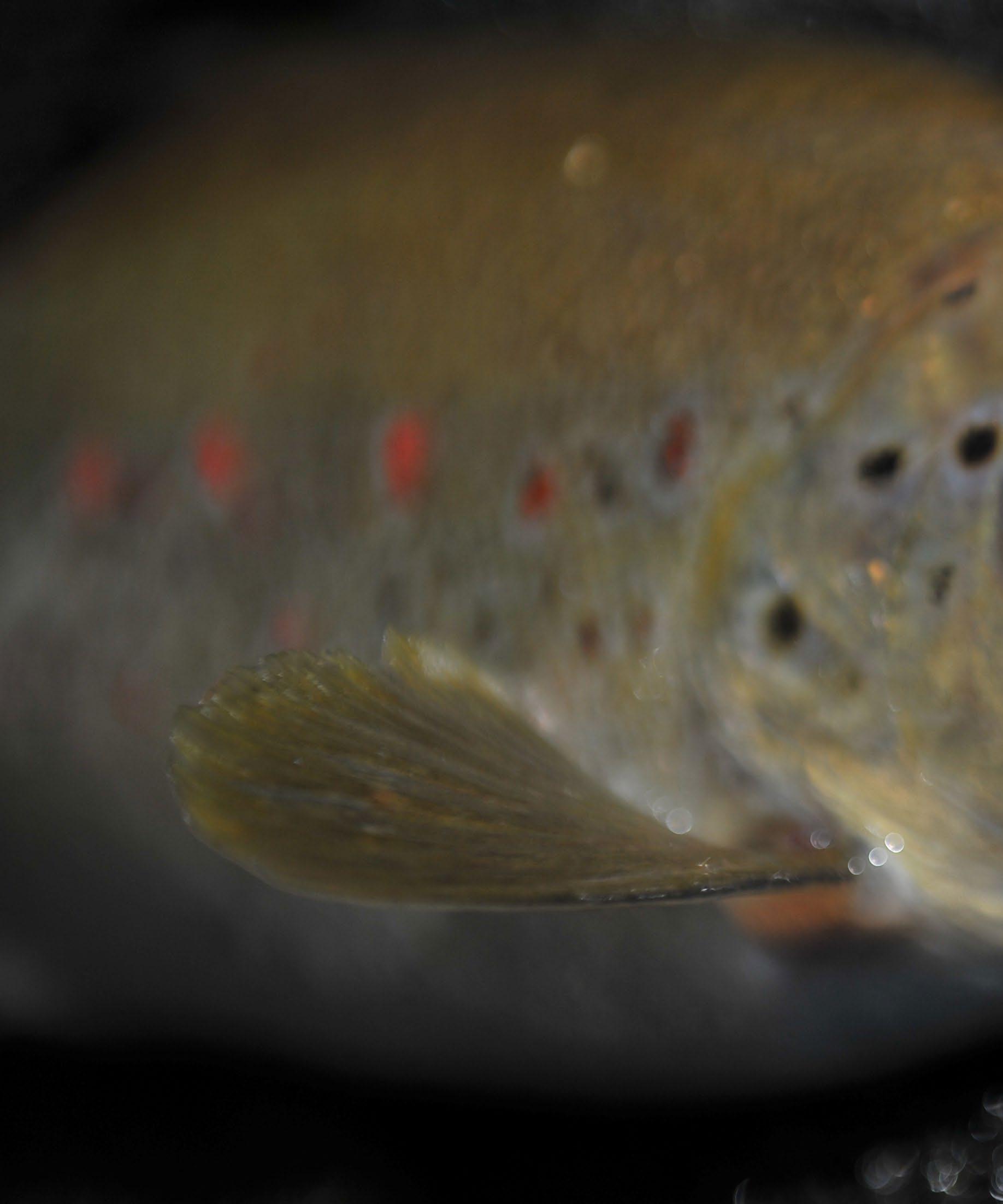 By CORNELIA WIESER and THE EDITORIAL STAFF Photos by JOHANNES SCHÖFFMAN, RASMUS OVESEN, ARNE HODALIC, AND BENEDIKT SCHÖFFMANN
By CORNELIA WIESER and THE EDITORIAL STAFF Photos by JOHANNES SCHÖFFMAN, RASMUS OVESEN, ARNE HODALIC, AND BENEDIKT SCHÖFFMANN
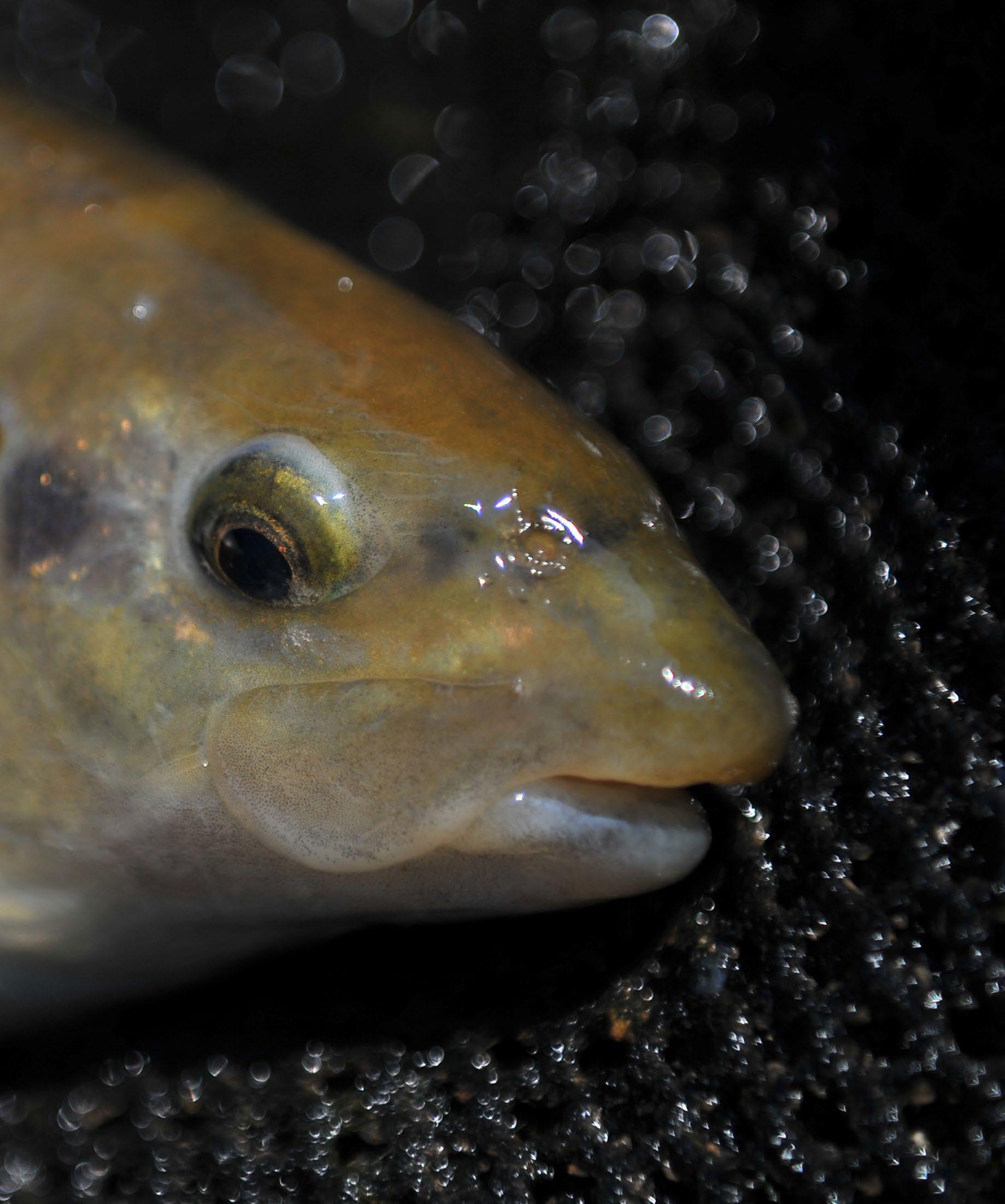
The Softmouth trout (Salmo obtusi rostris) is the most intriguing member of the genus Salmo. It is extremely rare, seriously endangered, very shy and among the most enigmatic members of the Sal monidae family. It is yet to be sufficiently described and urgently needs scientific attention.
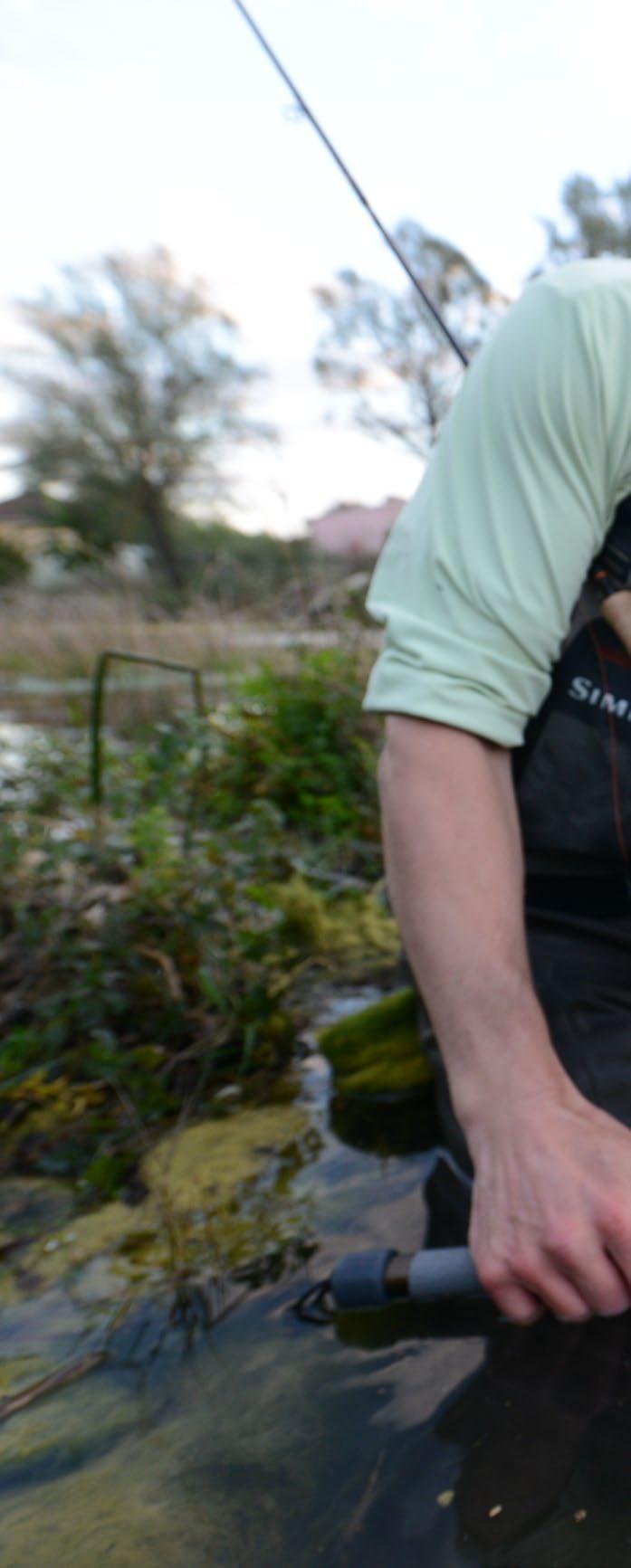
Endemic to the beautiful rivers of the Western Balkans that drain into the Adri atic Sea, five distinct populations of soft mouth trout exist: in the Jadro, Vrljika, and Krka rivers of Croatia, the Neretva Basin in Bosnia-Herzegovina, and the Zeta and Morača rivers in Montenegro. None of the five populations can deal with dams. Despite their sensitivity to dam construction and the fact that they are already endangered, plans for hydro power project exist in their habitat.
Planned dams on the Morača River would most likely eliminate the species in that system. The Neretva system con tains, by far, the largest population of this species, and is therefore the last stronghold of this species on the planet. Sev en dams foreseen on the upper Neretva River threatens to exterminate 50% - or more, of the Neretva River-populations.

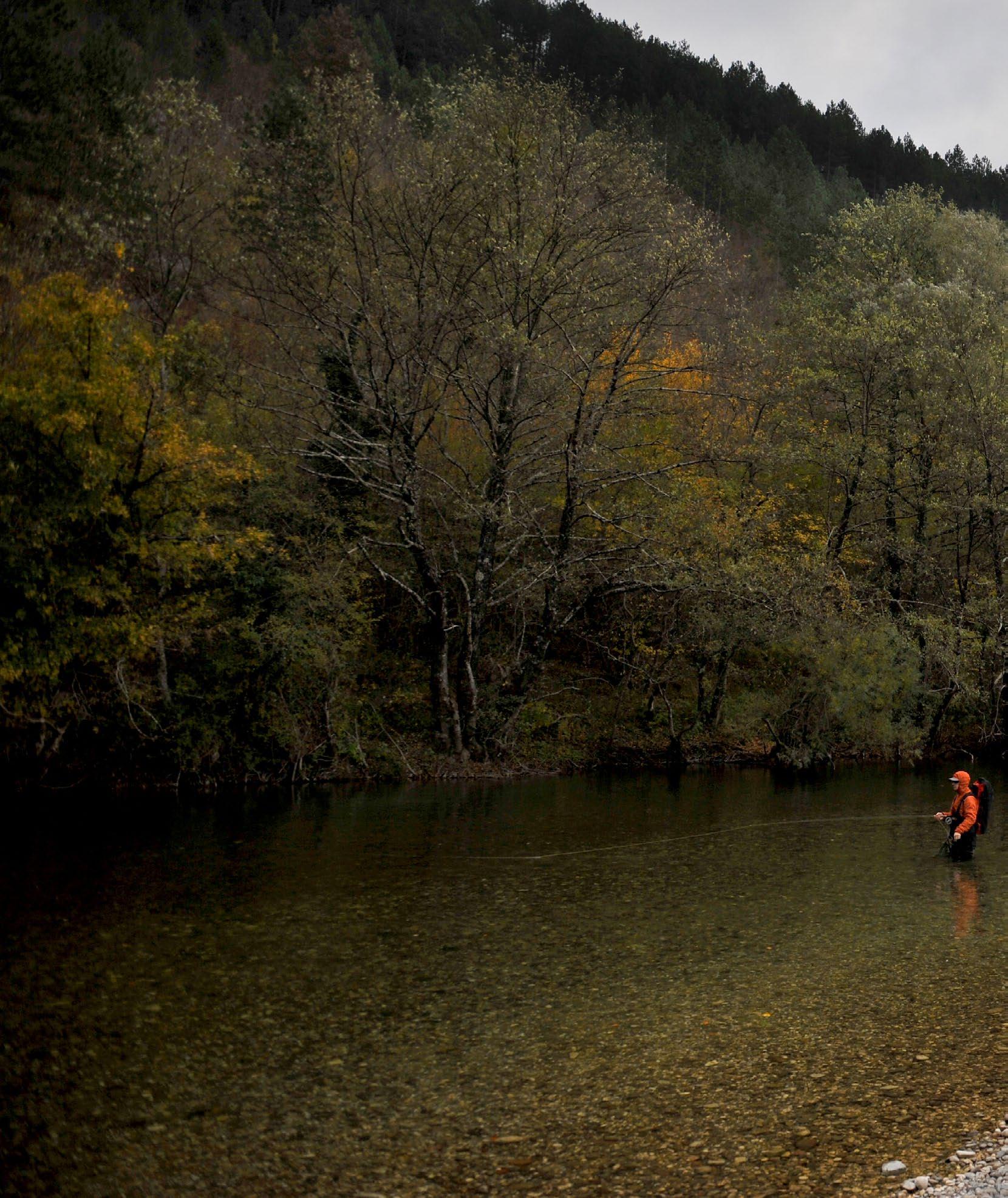
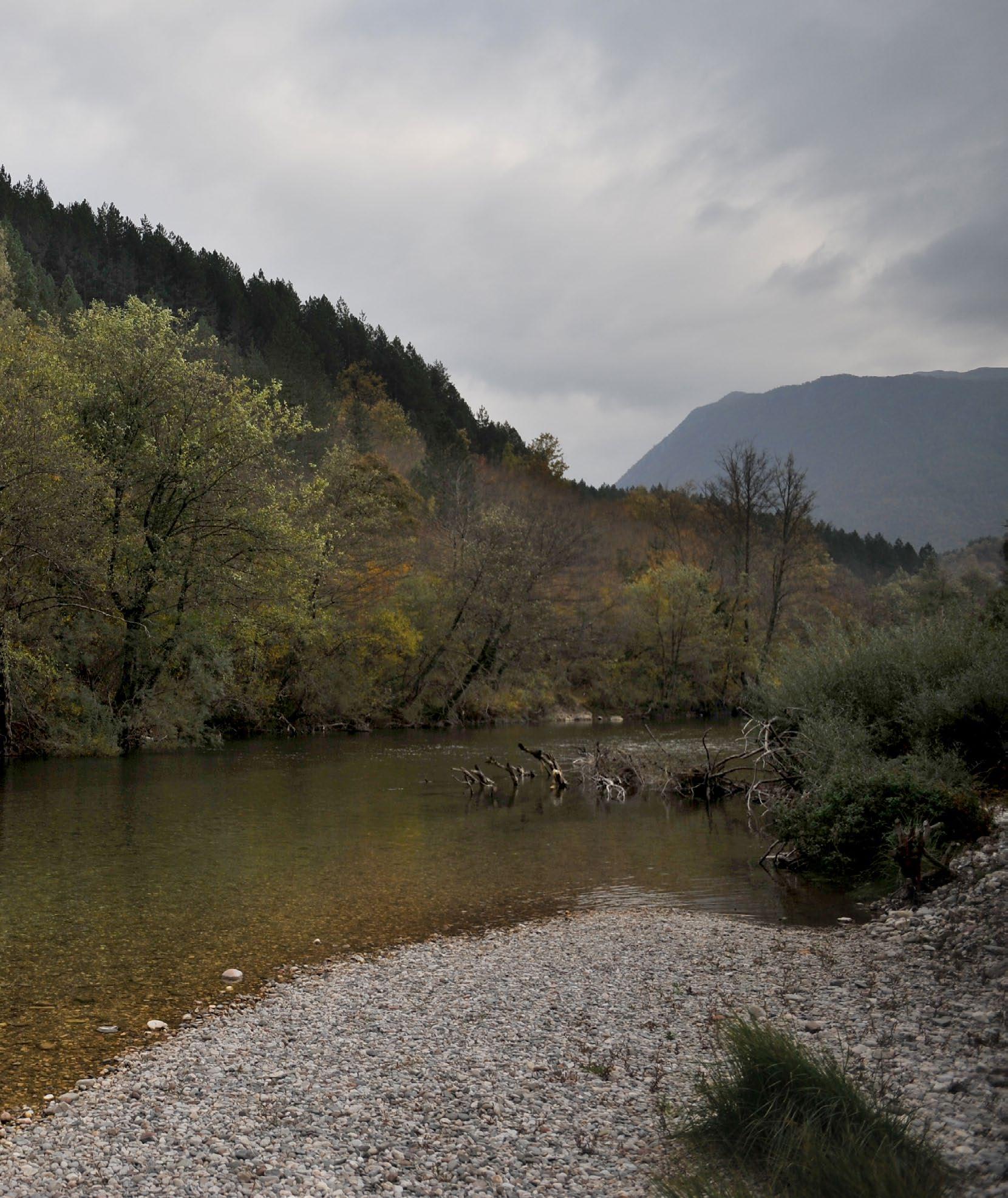


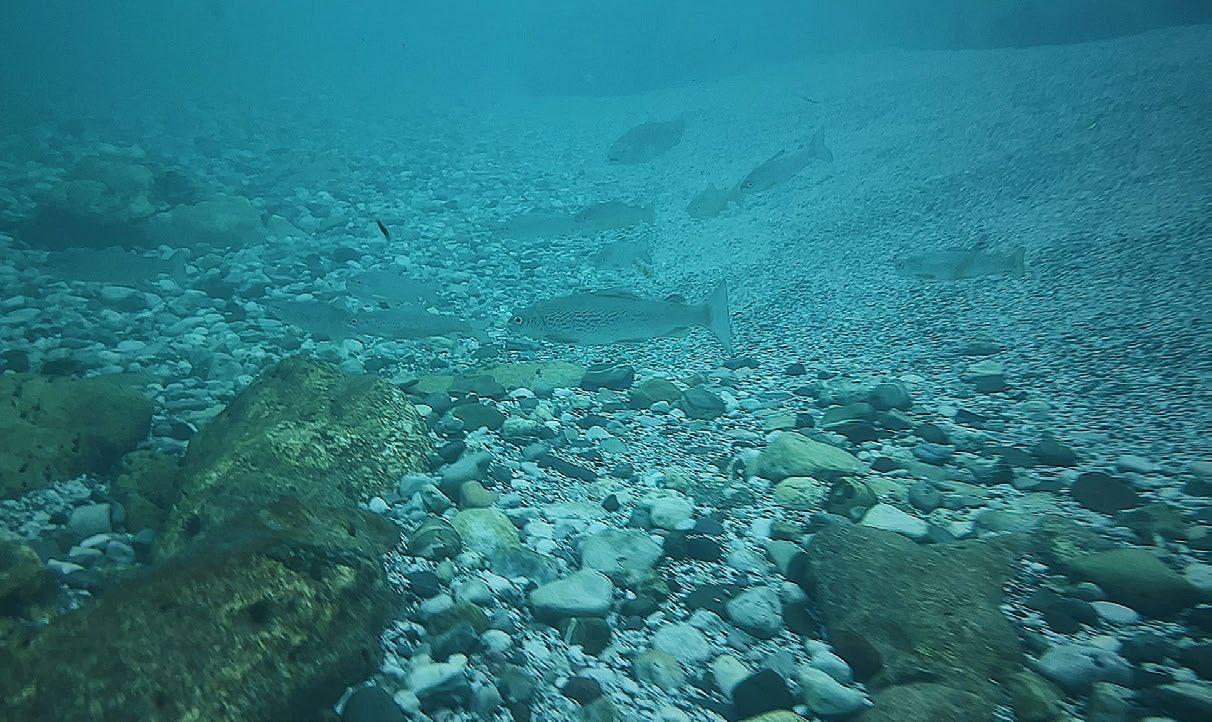
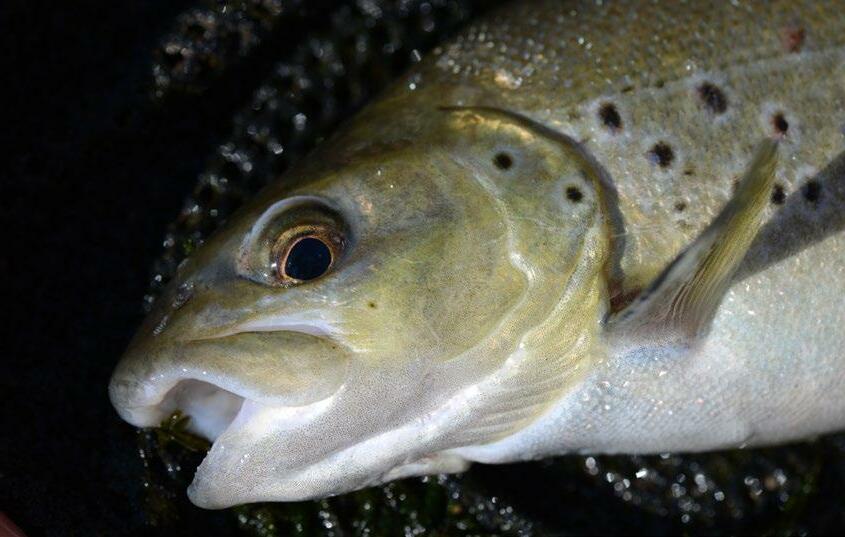
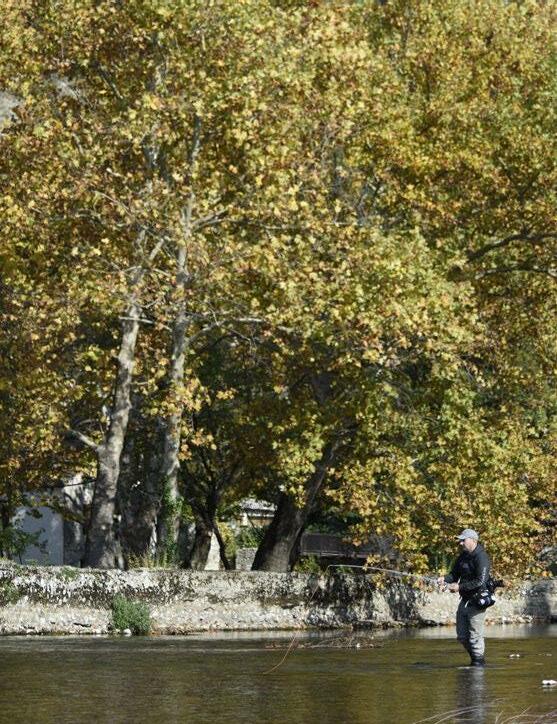
 Illustration by Vanja Lazić
Illustration by Vanja Lazić

Within the “Save the Blue Heart of Europe campaign”, NGOs and scientists are fighting side by side to keep the Neretva refuge intact. During a week of research in sum mer 2022, more than 50 scientists, accompanied by journalists, activ ists, chefs, and an artist from across Europe, participated in a multidisciplinary expedition to collect samples of the largely unknown local biodiversity (https://balkanrivers.net/en/news/The-NeretvaScience-Week-50-scientists). This data will be used to legally chal lenge the hydropower projects. (Find the preliminary report here: https://balkanrivers.net/en/studies/neretva-science-week-preliminary-report).
A highlight of the Neretva Science Week was the detection of softmouth trout in a deep pool on the Neretva River at Glavatičevo, caught on camera by videographer Josh D. Lim, who got close to hypothermia for the video footage, after a combined effort of the fish group from BOKU University and the University of Graz to locate it.
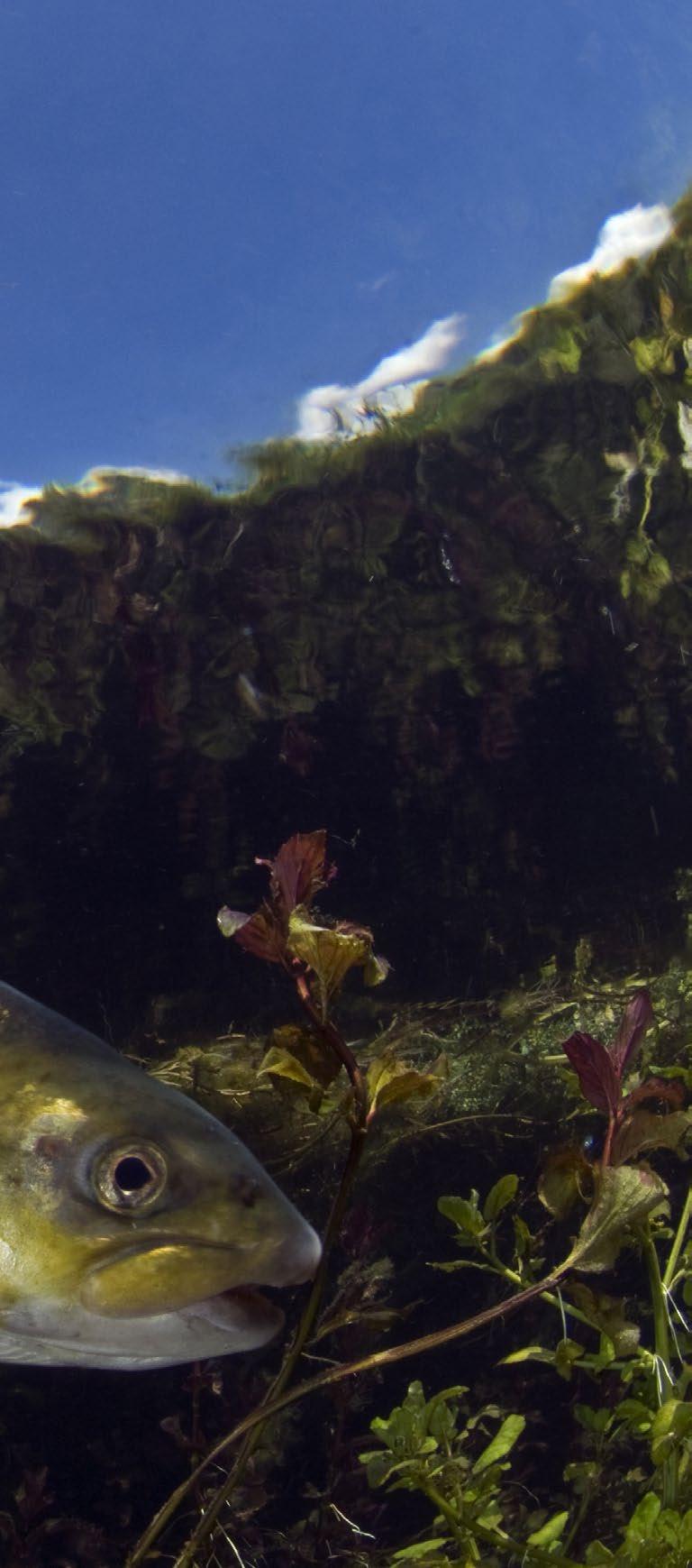
Softmouth trout are a pre-glacial species that feed on small aquatic insects such as caddis, mayfly nymphs, and – espe cially – gammarus. They like relatively swift currents and are – usually – found in fairly deep pools and runs. While their whole physiognomy underlines its preference for feeding along the bot tom, softmouth trout can sometimes be caught on dry flies. Especially in August and September, they can be found surface feeding on caddis and small may fly species. The most effective fly fishing technique for softmouth trout, however, is euro nymphing with a heavy anchor fly and one or two small Perdigon nymphs or Gammarus imitations as droppers. Fished on long, thin leaders and care fully mended these flies will be able to tempt the mainly bottom-dwelling fish.
Softmouth trout are found in the Krka River in Croatia (Salmo obtusirostris krkensis), in the Jadro River in Croatia (Salmo obtusirostris salonitana), the Vrljika River in Bosnia and Herzegovi na, the Zeta River in Montenegro (Salmo obtusirostris zetensis), and in the Ner etva watershed in Bosnia and Herzegovina (Salmo obtusirostris oxyrhynchus).

Fact File//

 Distribution map of Softmouth trout in the Balkans:
Distribution map of Softmouth trout in the Balkans:
Fun fact: These fish are called softmouth because of their fleshy mouths and lips – which become more and more pronounced as they grow bigger. They look similar to both trout and grayling (and lenok trout in Mongolia). And while they are closely re lated to trout (similar DNA), interestingly, their appearance - and some of their mannerisms - are more similar to grayling. They spawn in the spring, like grayling, and also feed on the bottom of the riv erbed, like grayling. Yet, they live in completely different rivers compared to grayling.
The “Save the Blue Heart of Europe” campaign is dedicated to save the Balkan rivers from destruc tion by 3500 dam pro jects. Find out more here: www.balkanrivers.net

WE’RE ON INSTAGRAM @intheloopmagazine

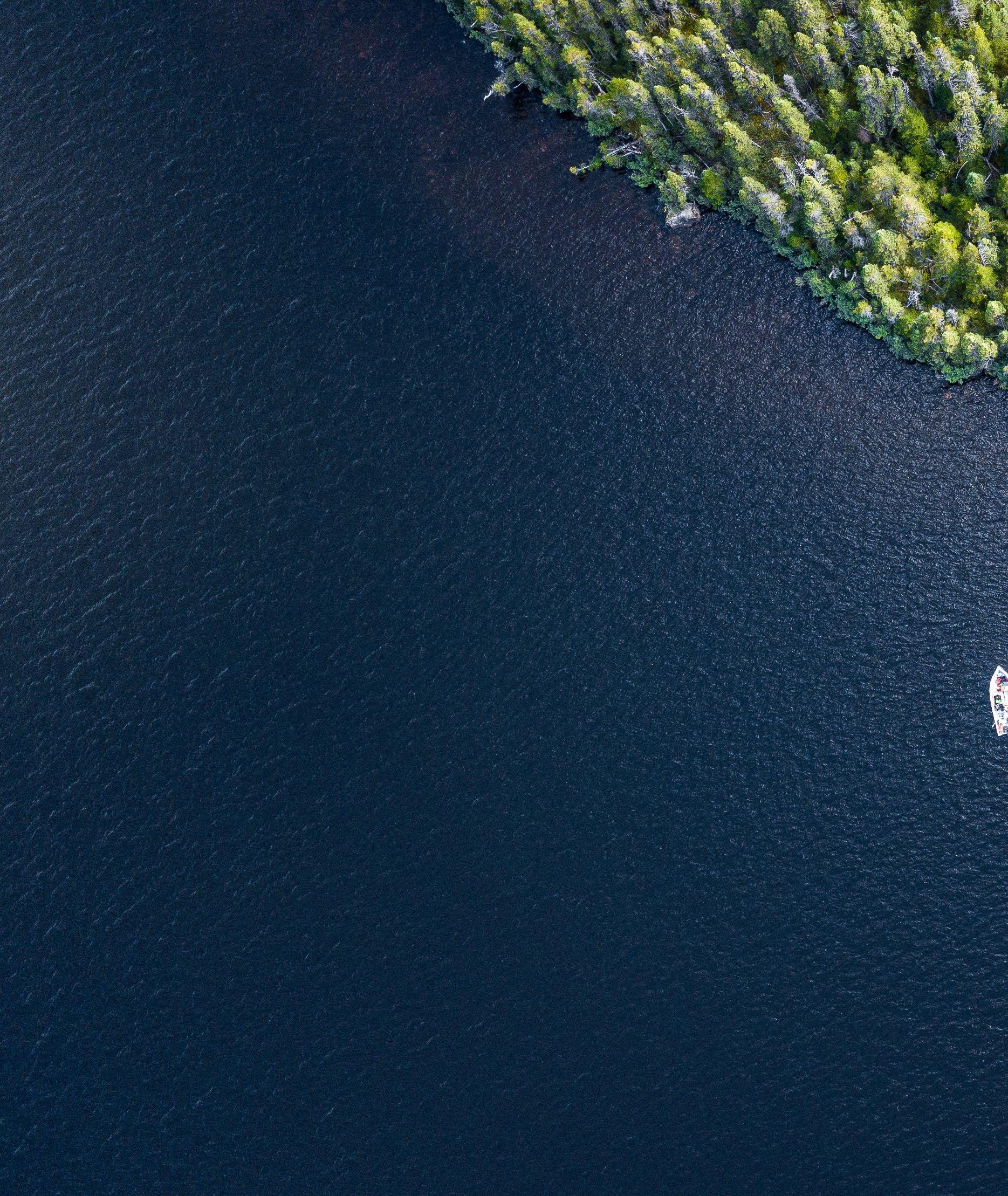
INSTAGRAM

Pre vio us issu es
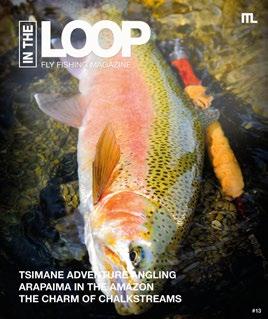

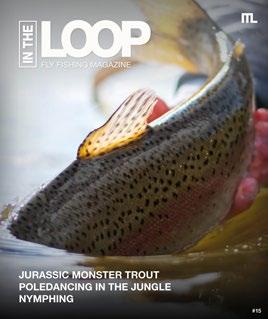
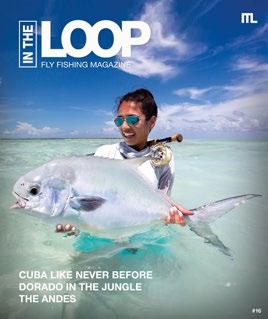
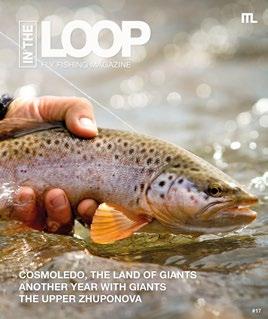

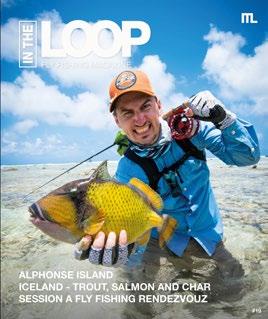
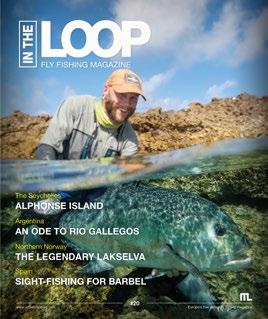
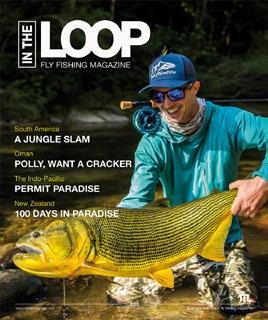
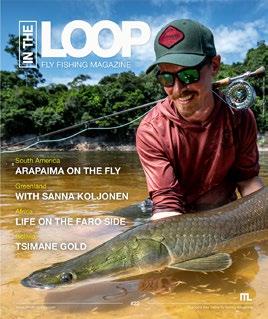

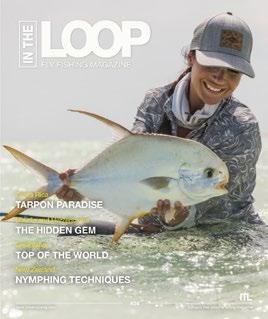


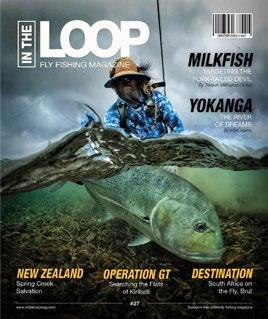
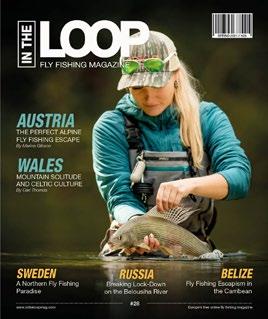
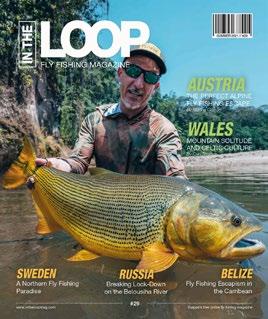
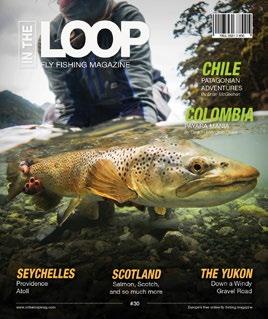
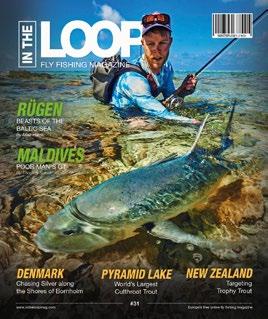
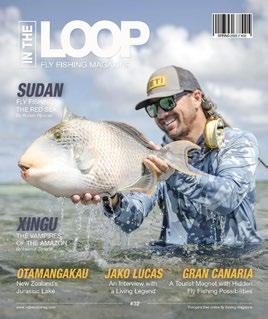
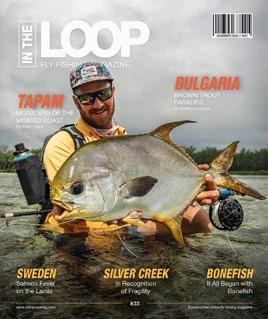
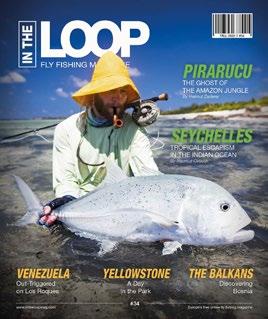
#13 #14 #15 #16 #13 #18 #19 #20 #21 #13 #23 #24 #25 #26 #13 #28 #29 #30 #31 #13 #33 #34
Get Involved
Get Involved
Join the fight to protect our oceans, lakes, and rivers, the pristine aquatic ecosystems across the globe and thei precious fish stocks.
Join the fight to protect our oceans, lakes, and rivers, the pristine aquatic ecosystems across the globe and thei precious fish stocks.
It’s an acutely important battle - and one that we simply cannot afford to lose!
It’s an acutely important battle - and one that we simply cannot afford to lose!


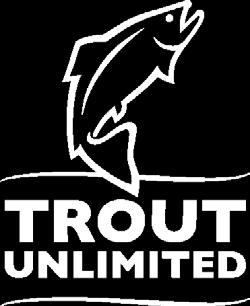
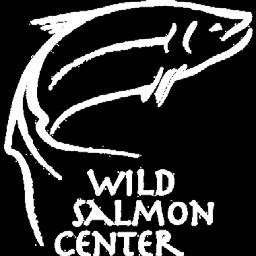















 NASF North Atlantic Salmon Fund
NASF North Atlantic Salmon Fund
plastic
change NASF North Atlantic Salmon Fund
plastic change

#intheloop We’ll keep you
 By Oliver Ancans
By Oliver Ancans

 Photo by OLIVER ANCANS
Photo by OLIVER ANCANS








 Arctic River Dragons by Oliver Ancans
Arctic River Dragons by Oliver Ancans









































































































































































































































































































 Dutch fly fisherman and entrepreneur, Hans de Leeuw, is the founder and architect behind Flyfisherman’s Channel”
Dutch fly fisherman and entrepreneur, Hans de Leeuw, is the founder and architect behind Flyfisherman’s Channel”







 By FLY FISHING NATION
By FLY FISHING NATION




















 By THE EDITORIAL STAFF Pictures by THOMAS WEIERGANG and DANIEL LINDVIG
By THE EDITORIAL STAFF Pictures by THOMAS WEIERGANG and DANIEL LINDVIG

































































































































 Scott Fly Rod Company | 2355 Air Park Way, Montrose,
Scott Fly Rod Company | 2355 Air Park Way, Montrose,

 By CORNELIA WIESER and THE EDITORIAL STAFF Photos by JOHANNES SCHÖFFMAN, RASMUS OVESEN, ARNE HODALIC, AND BENEDIKT SCHÖFFMANN
By CORNELIA WIESER and THE EDITORIAL STAFF Photos by JOHANNES SCHÖFFMAN, RASMUS OVESEN, ARNE HODALIC, AND BENEDIKT SCHÖFFMANN










 Illustration by Vanja Lazić
Illustration by Vanja Lazić




 Distribution map of Softmouth trout in the Balkans:
Distribution map of Softmouth trout in the Balkans:













































